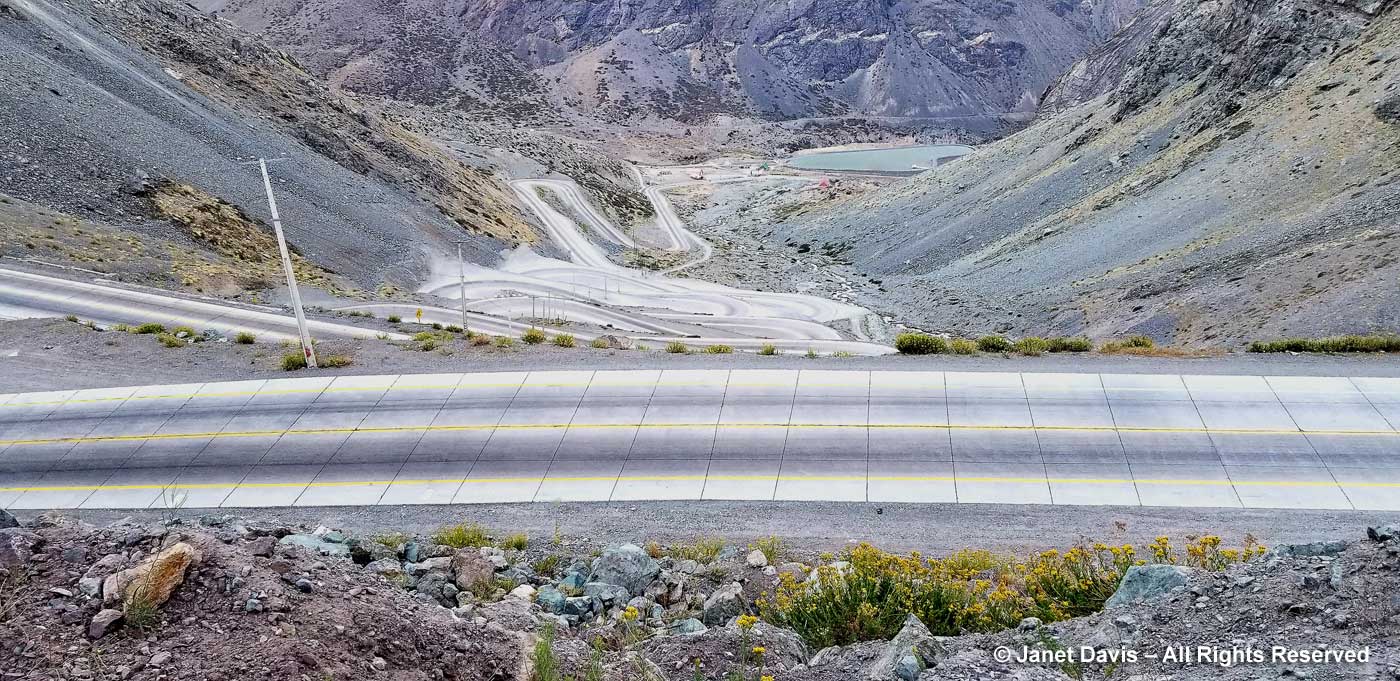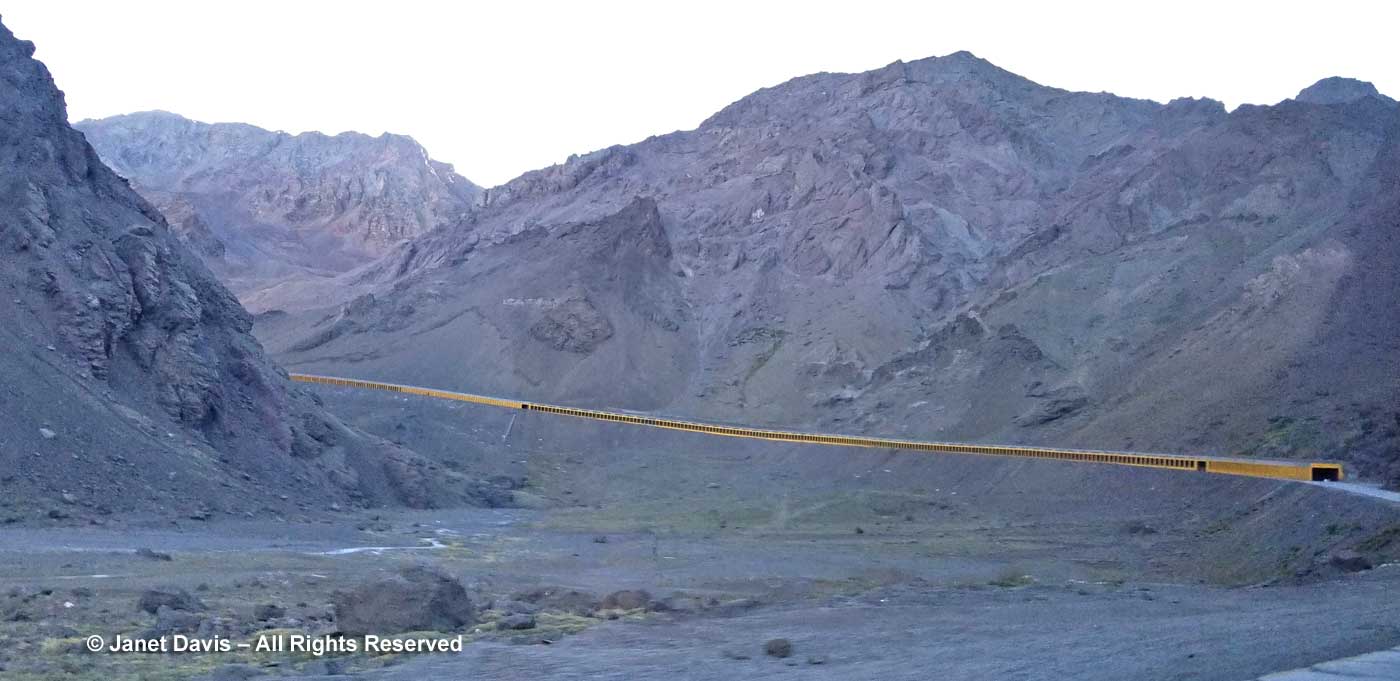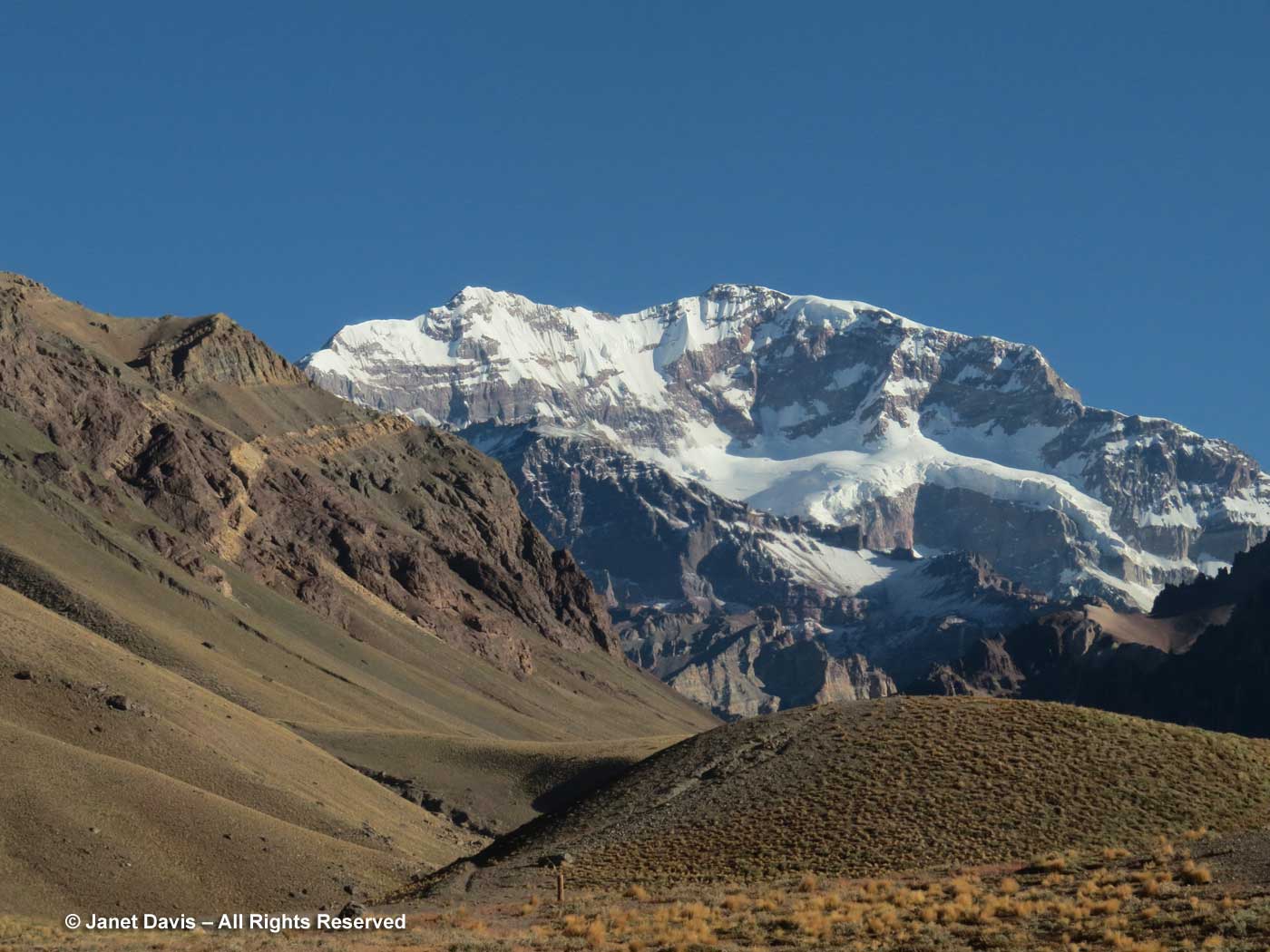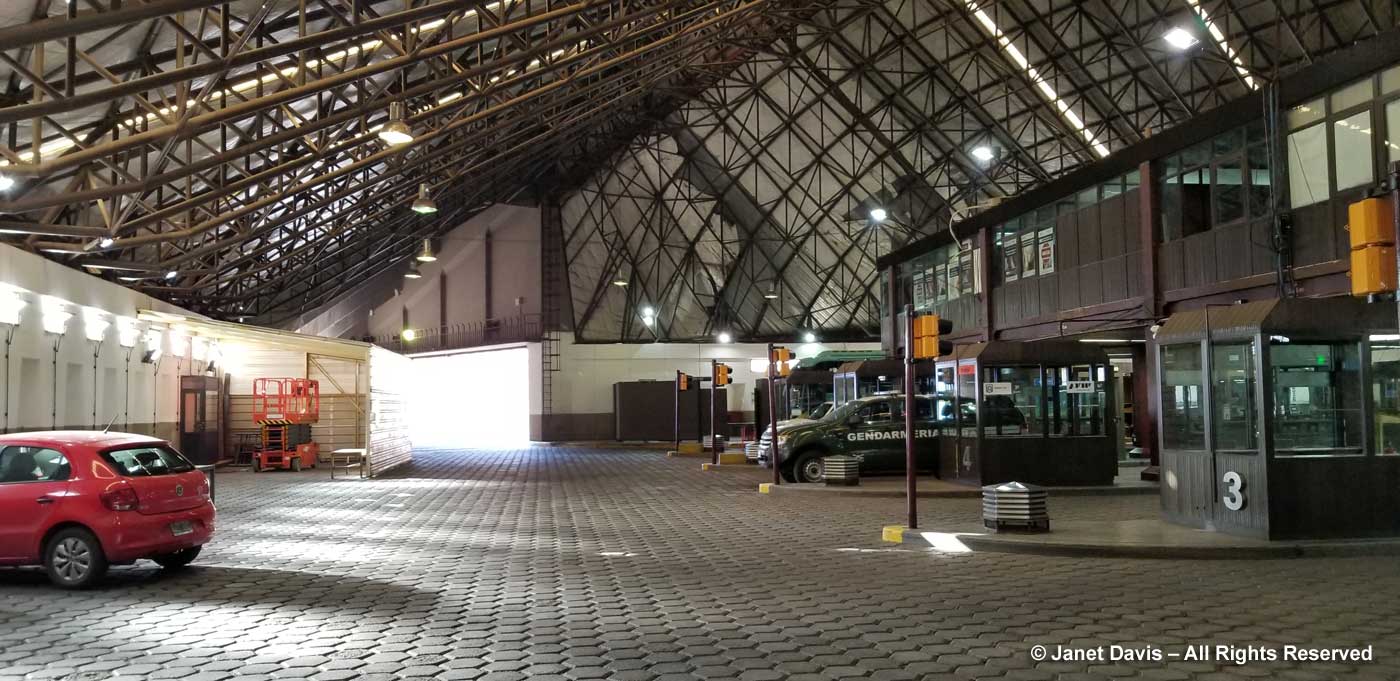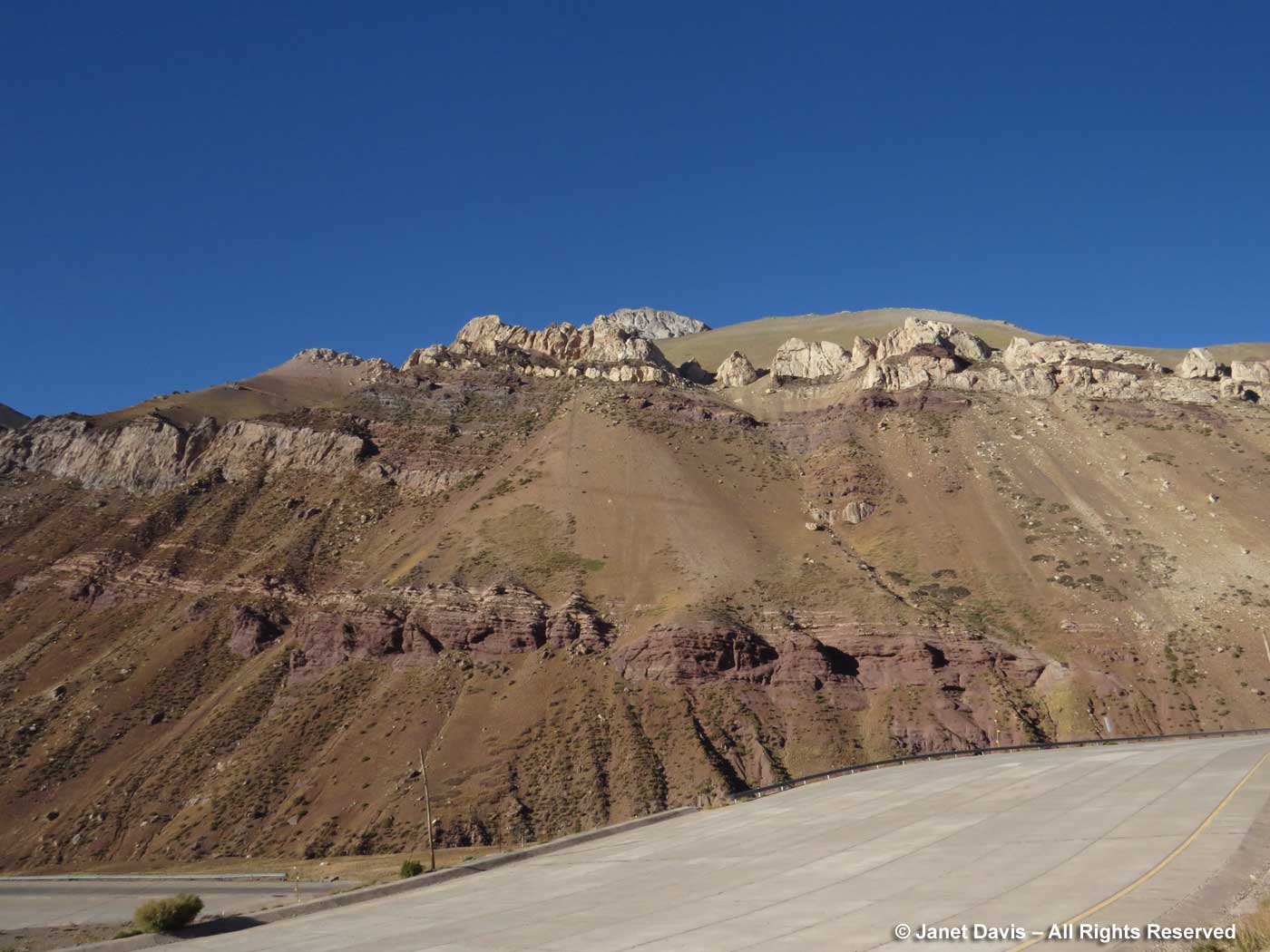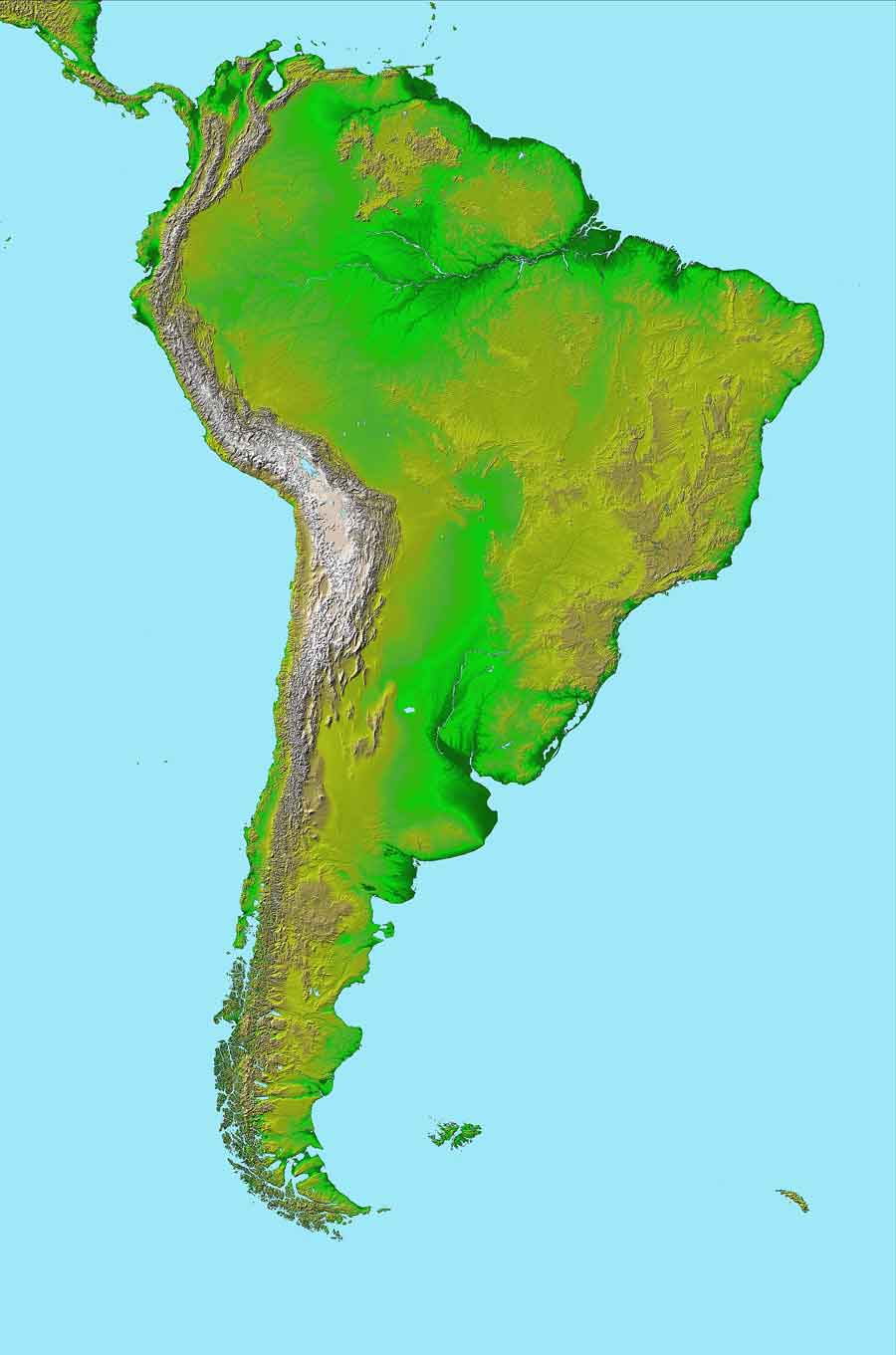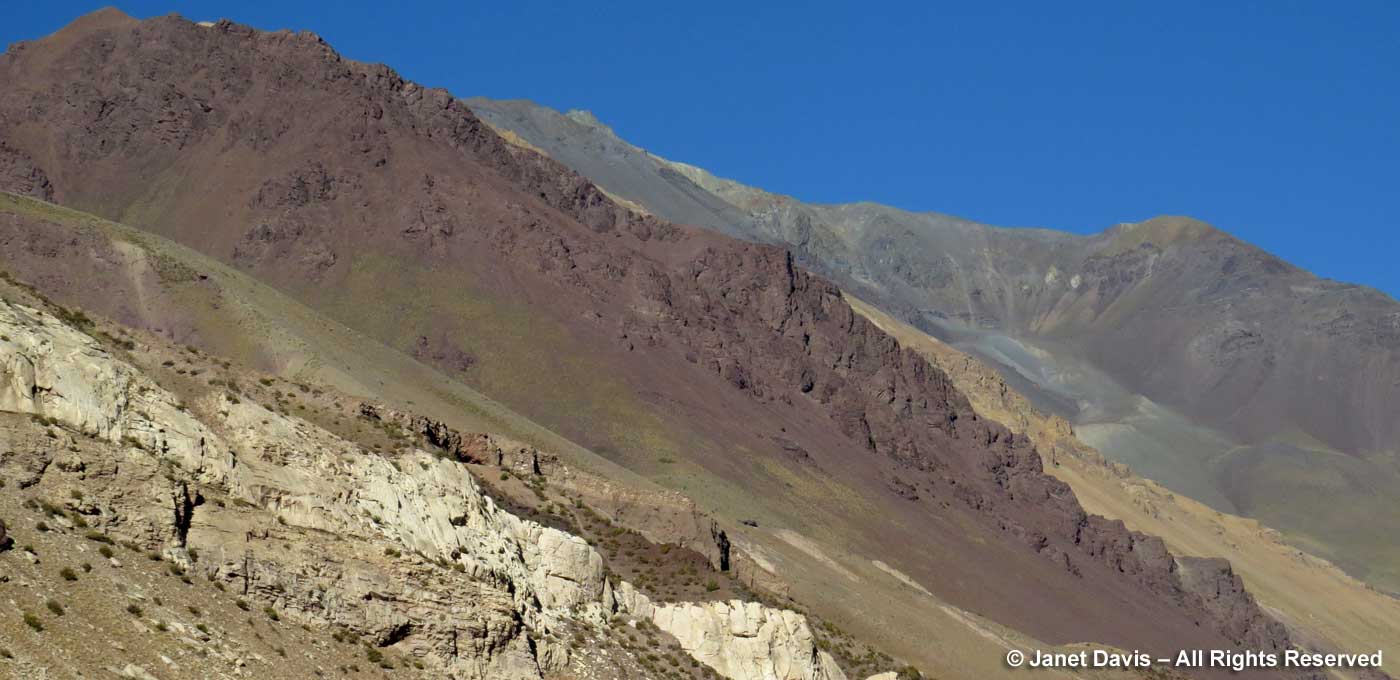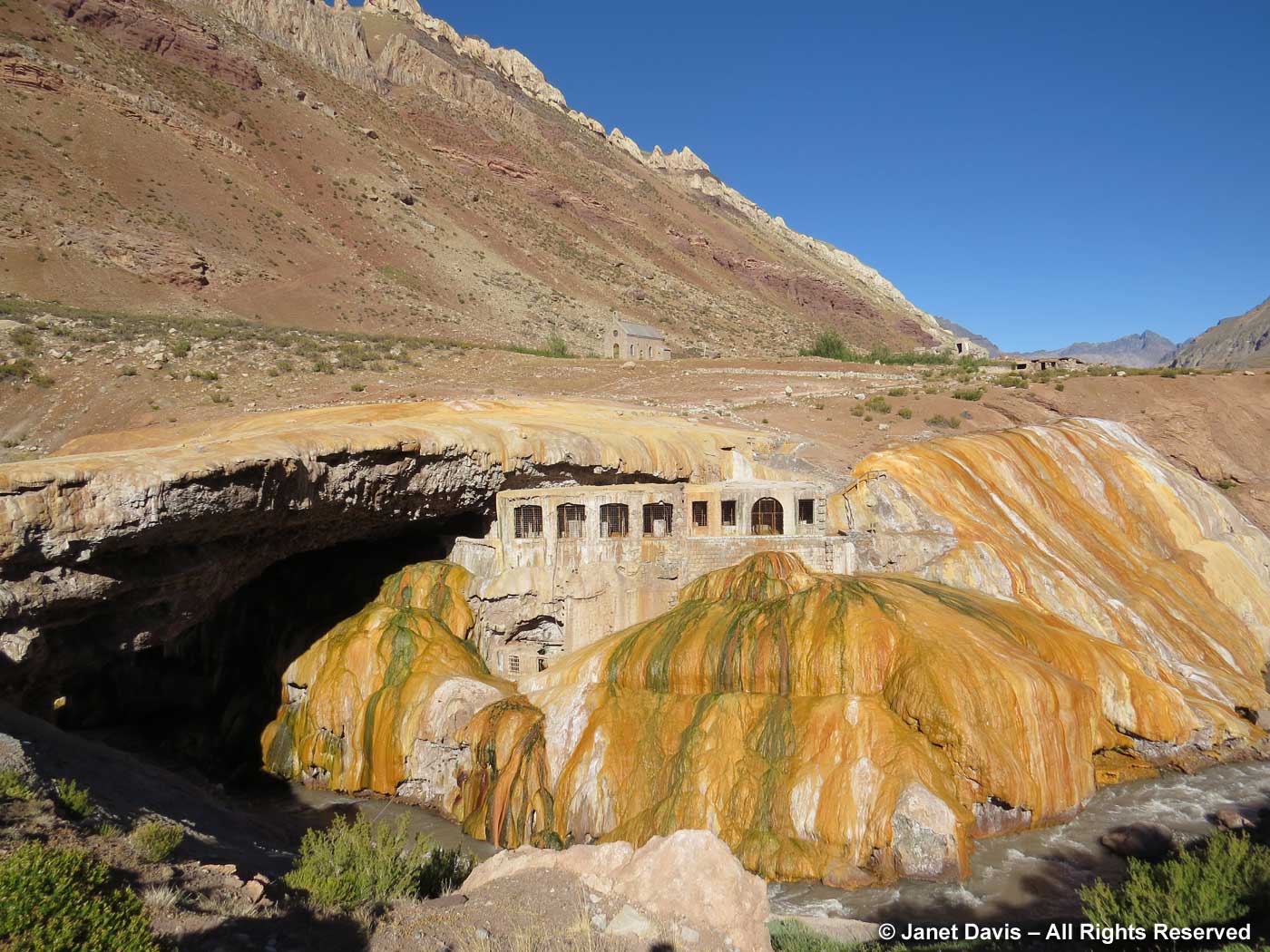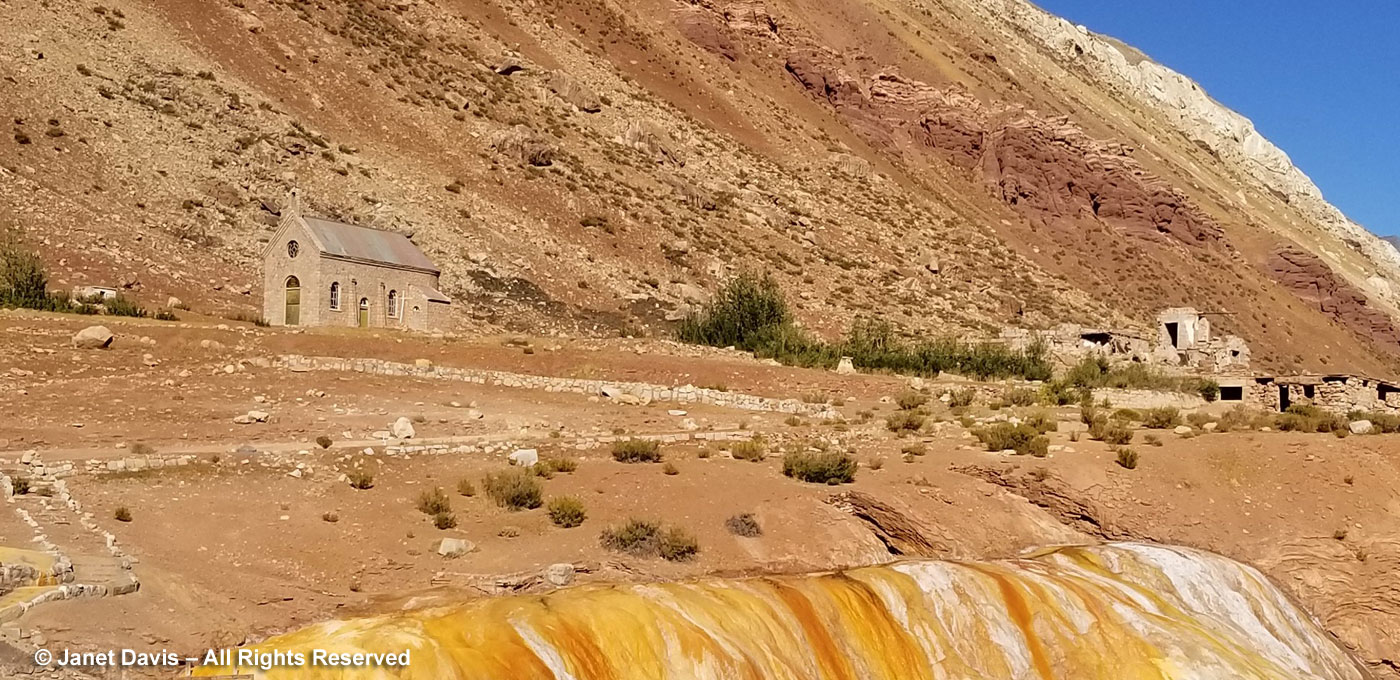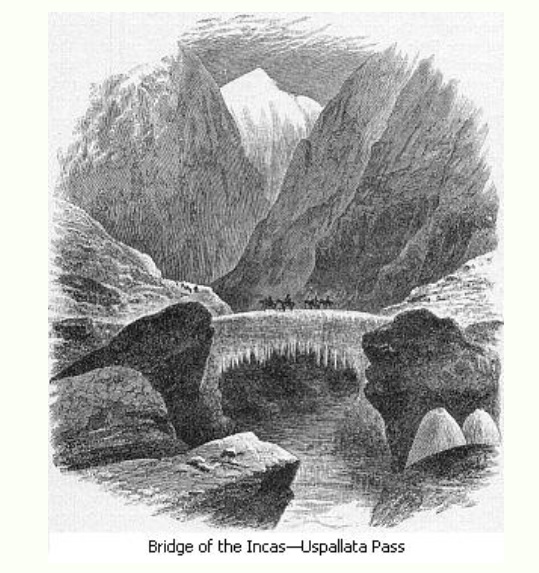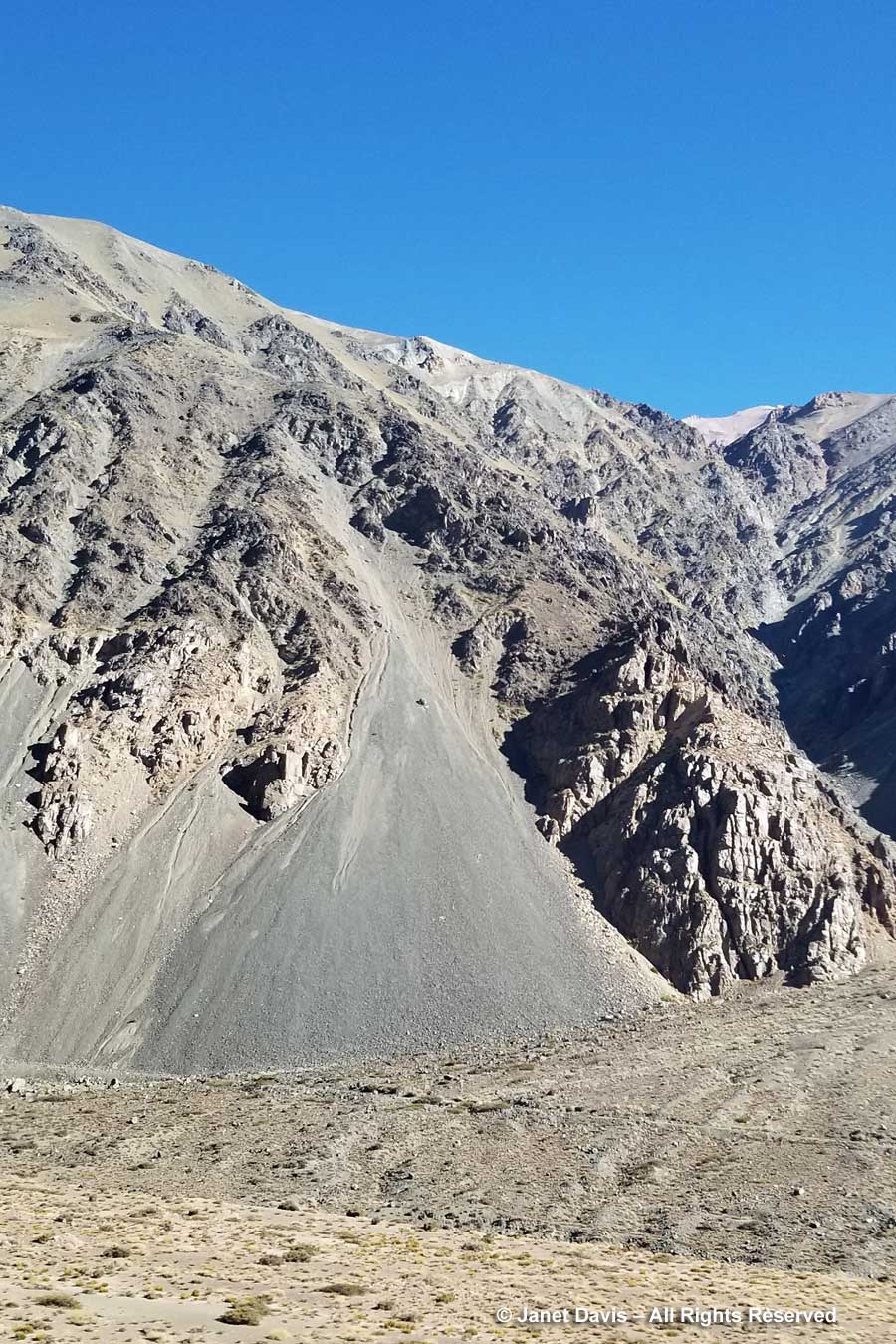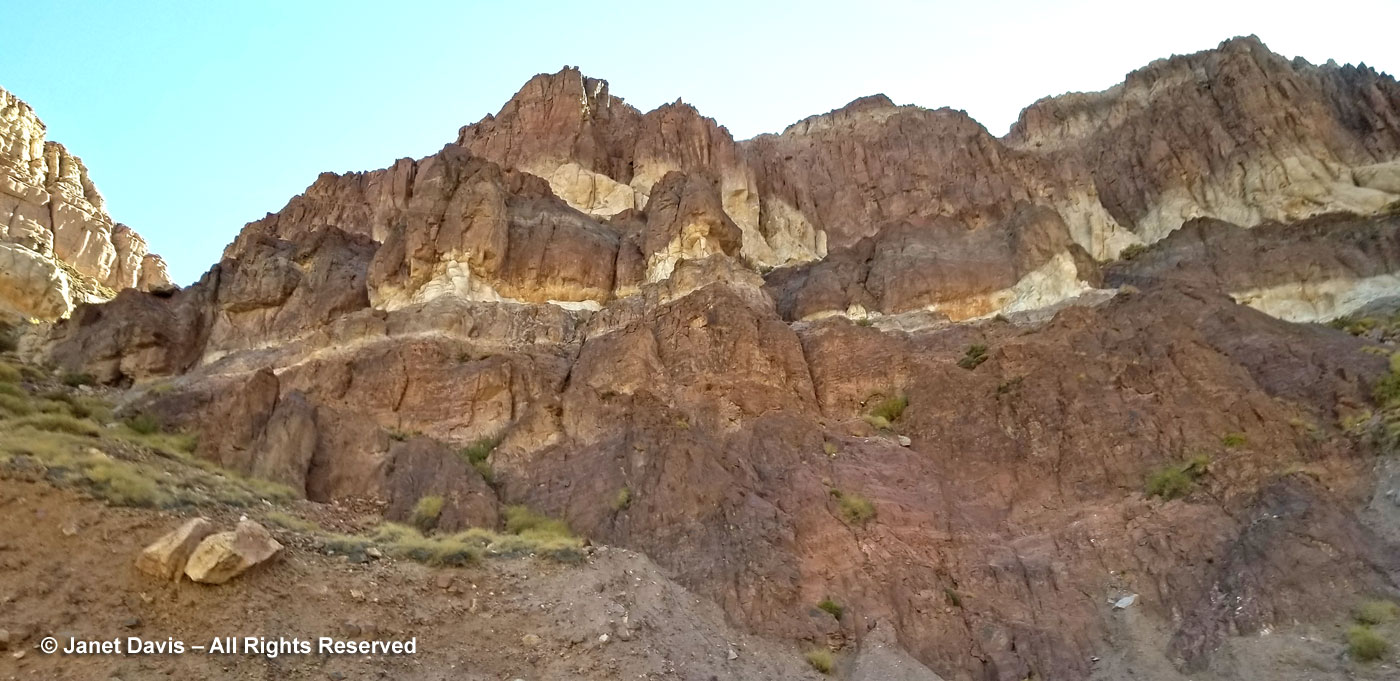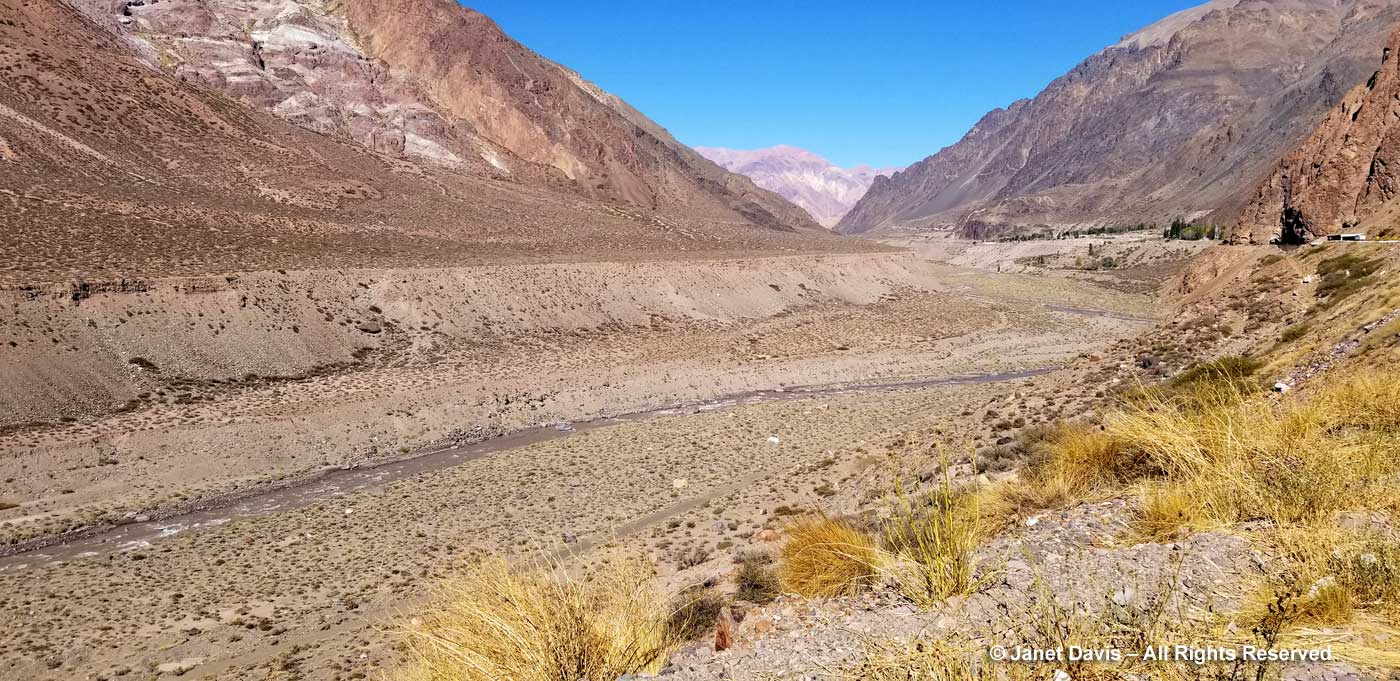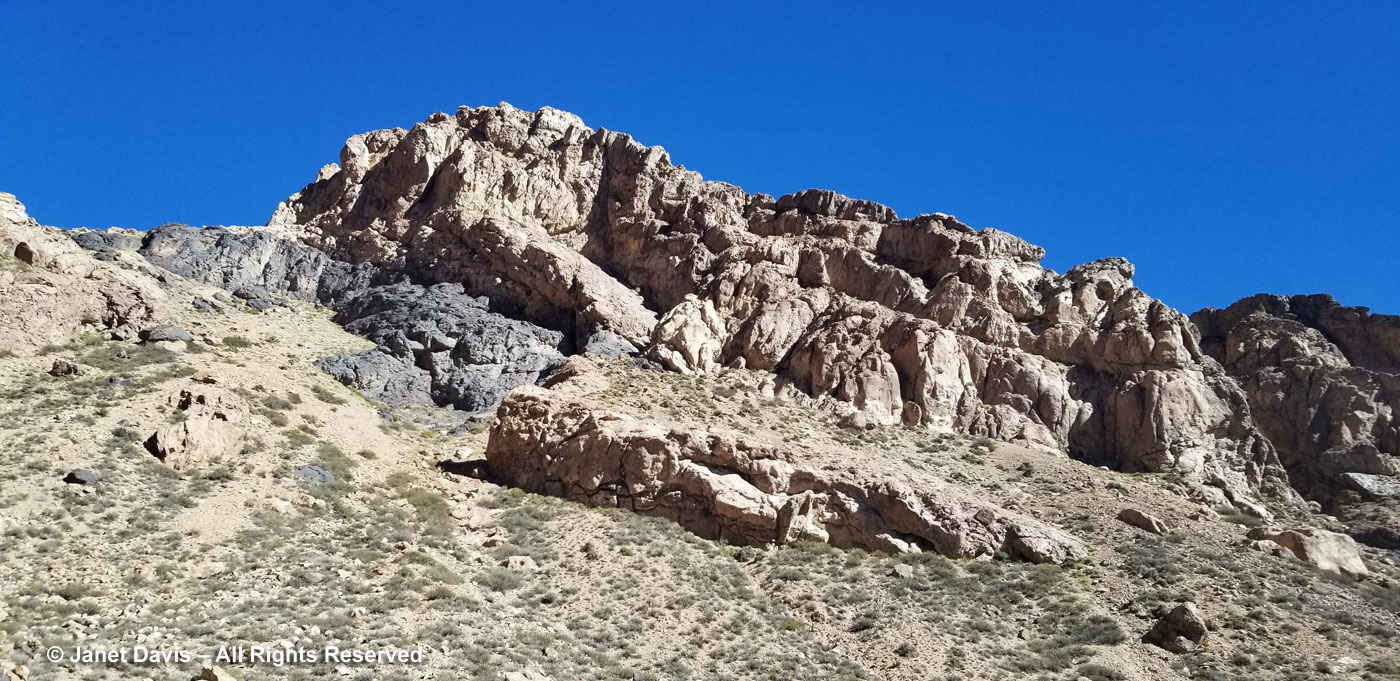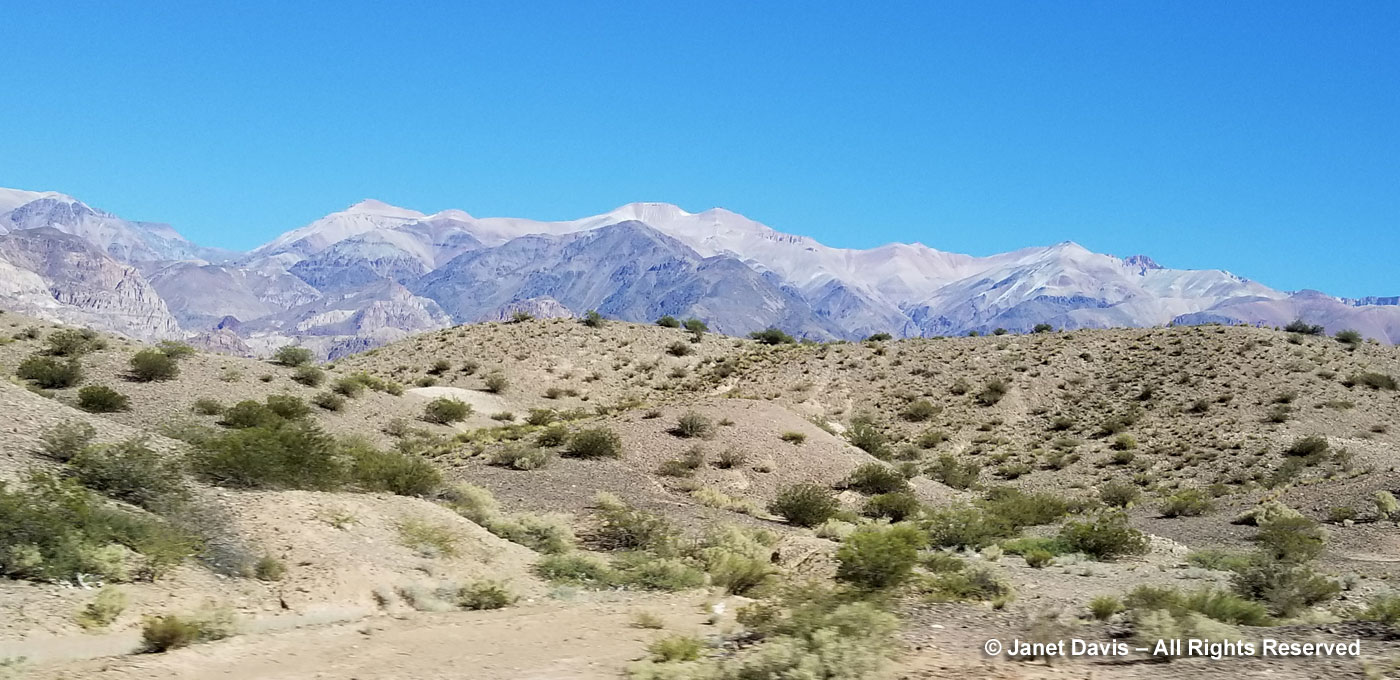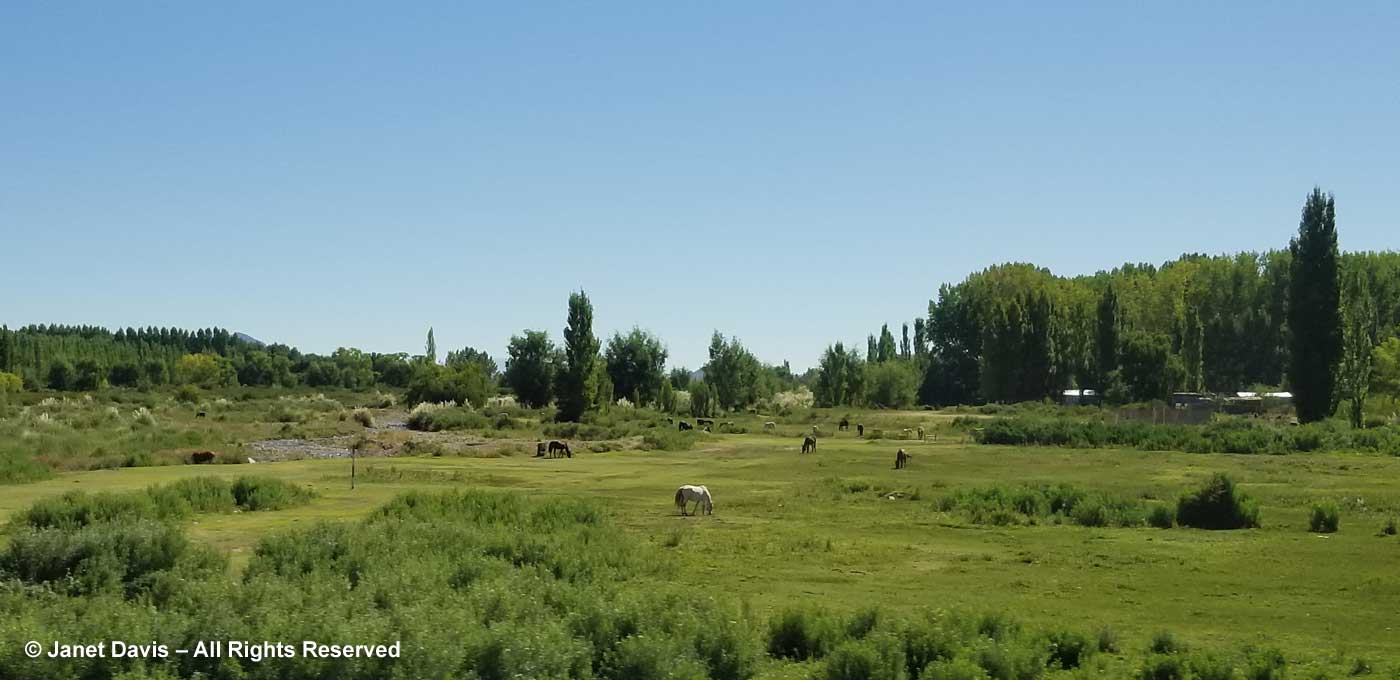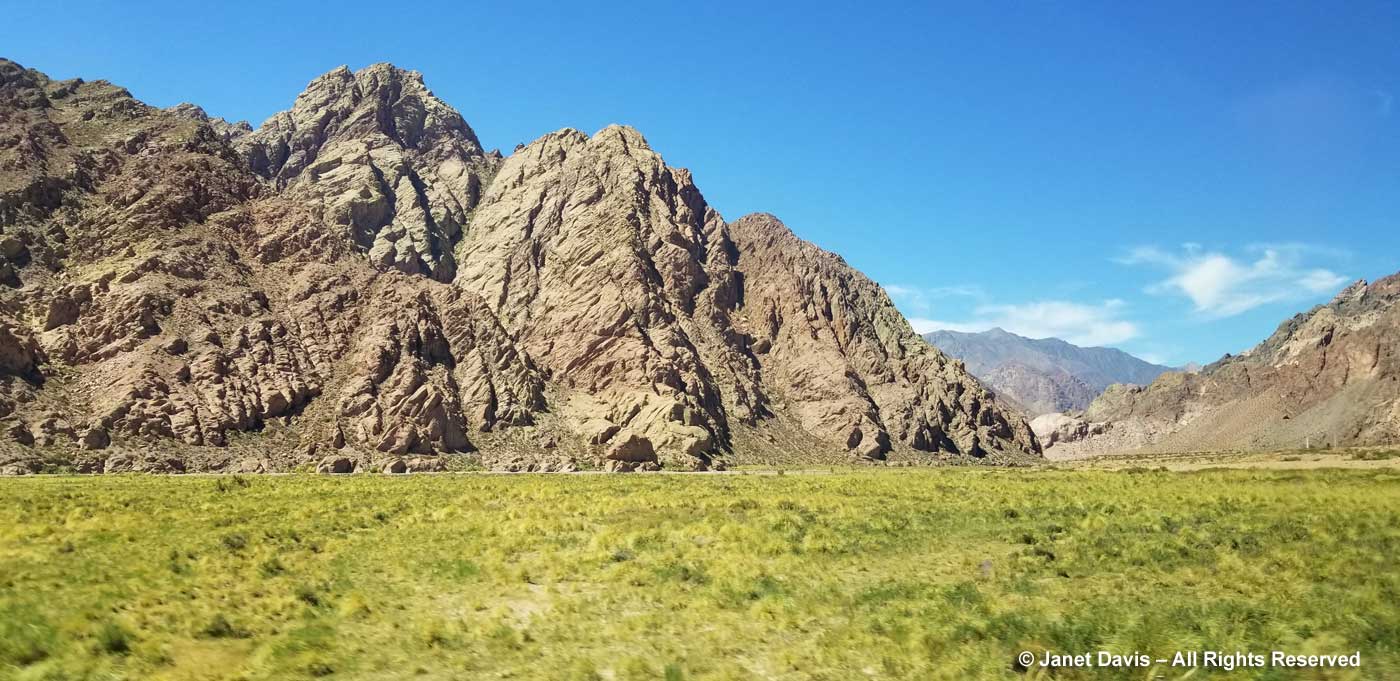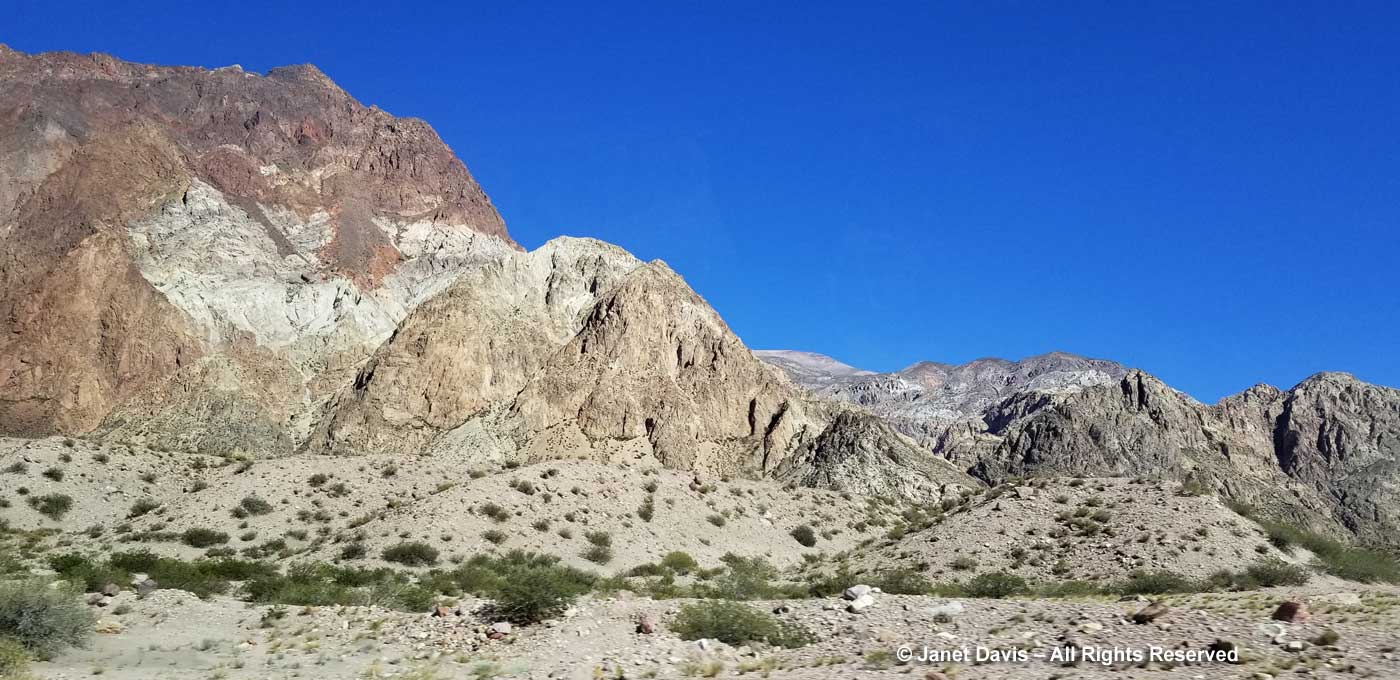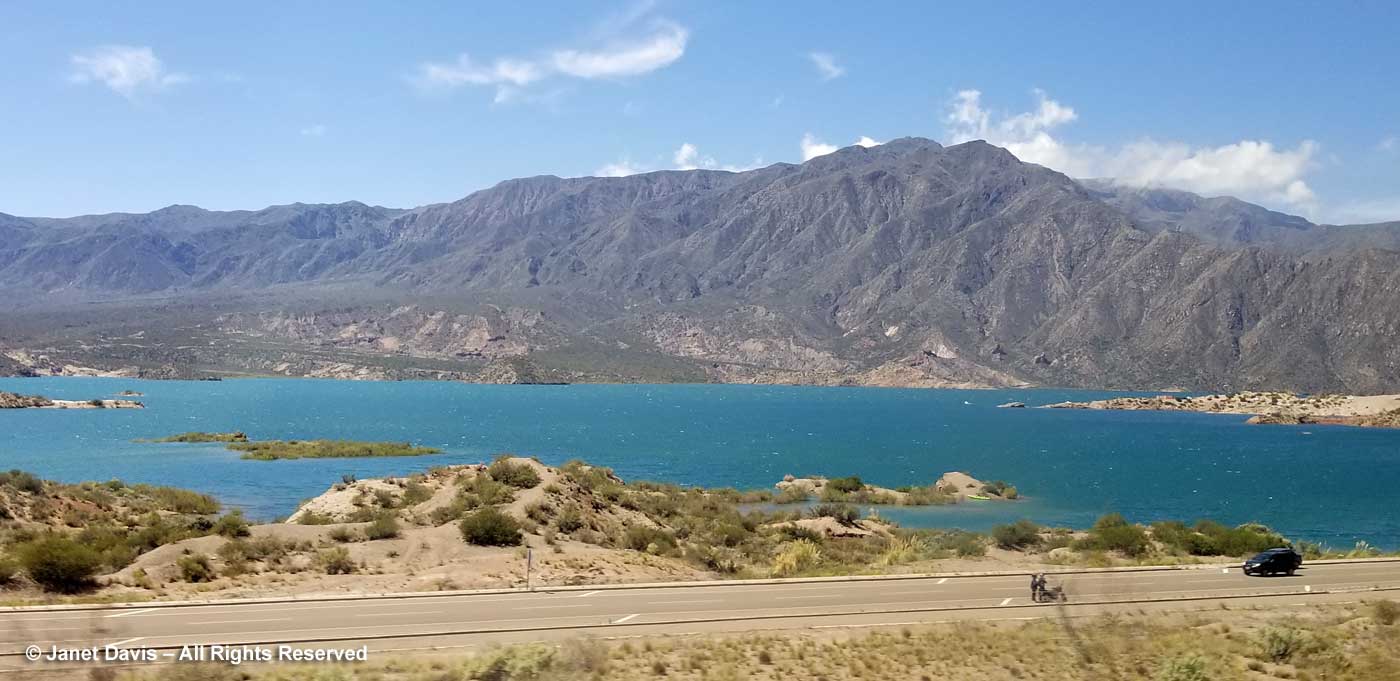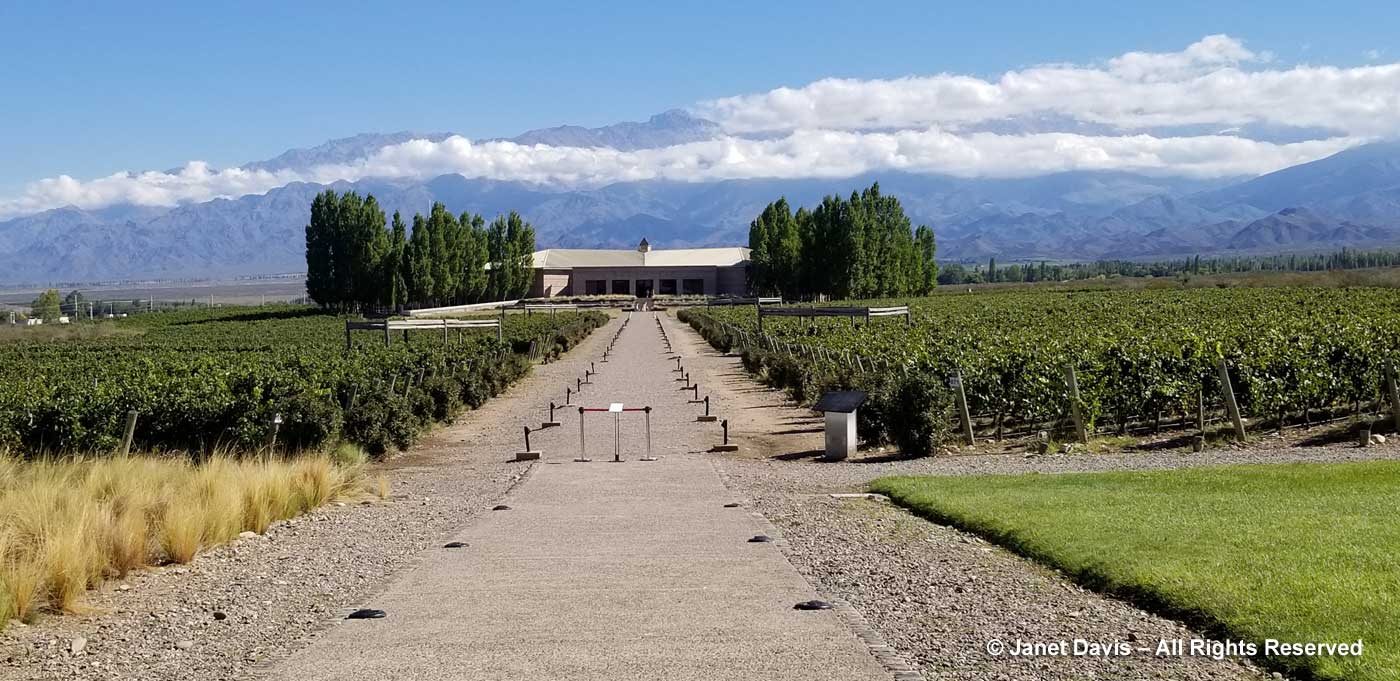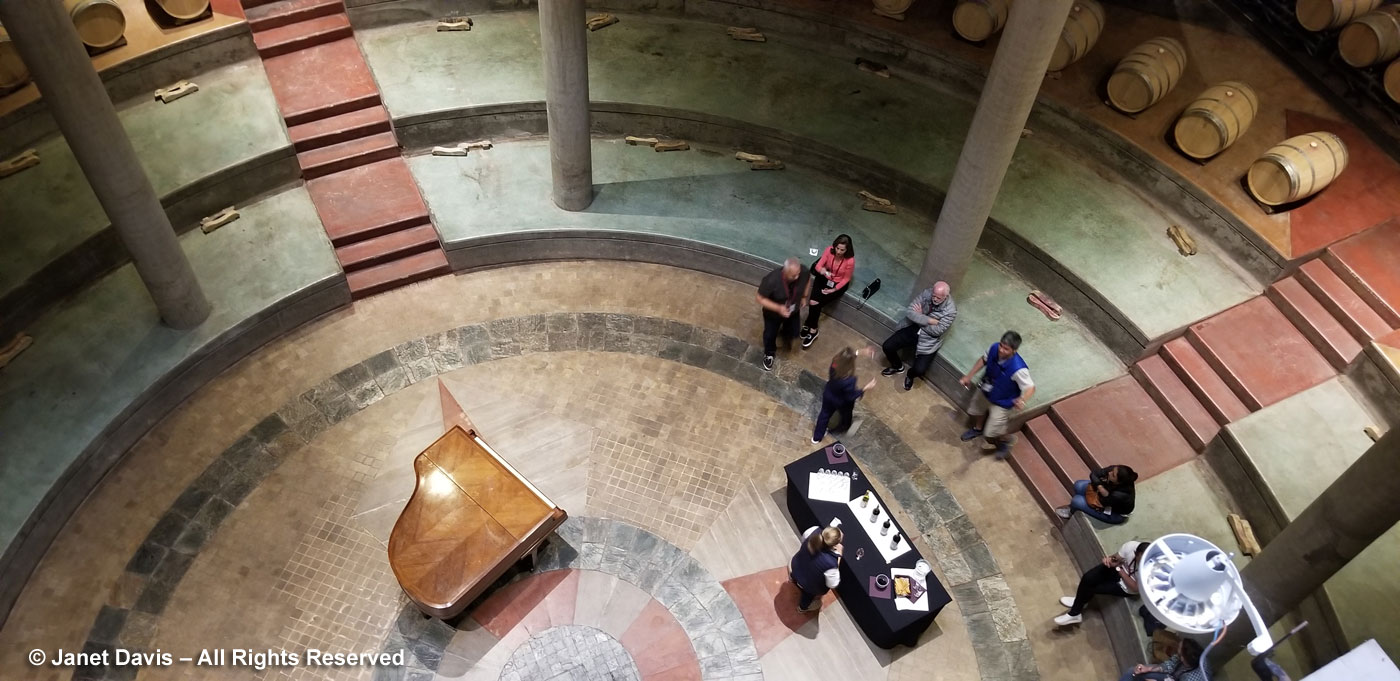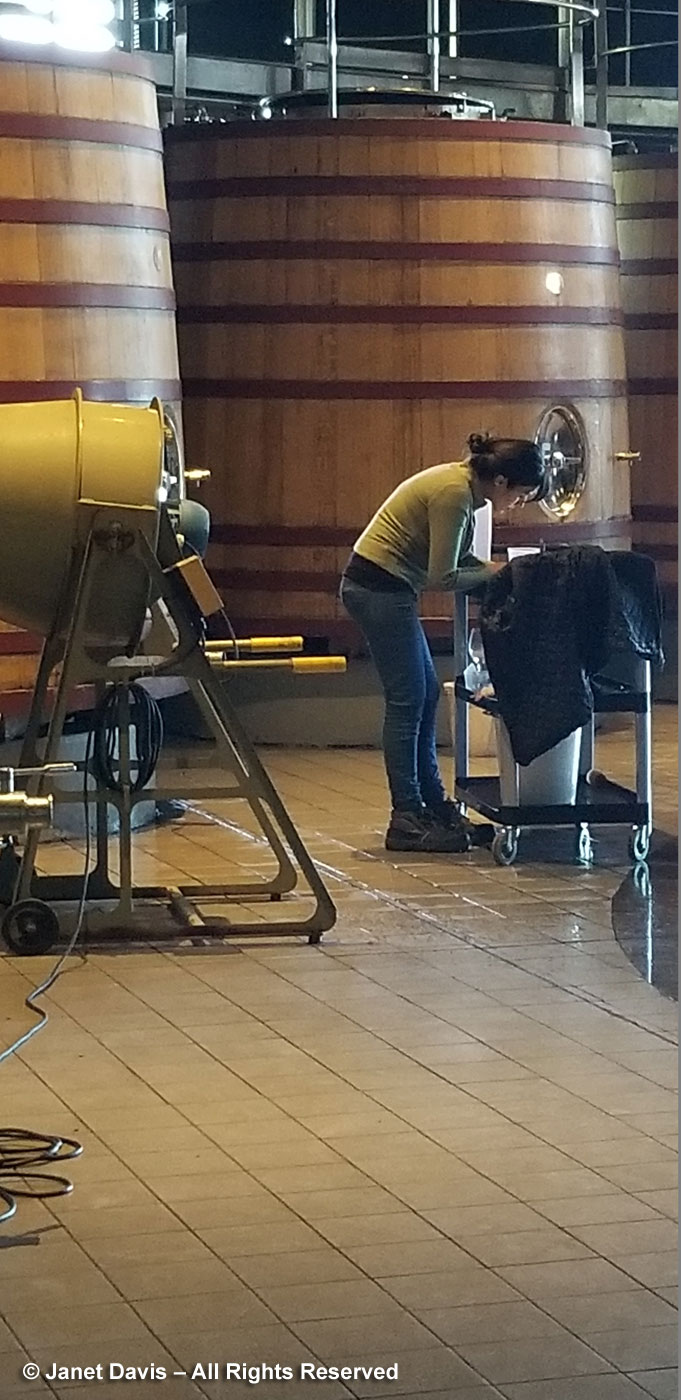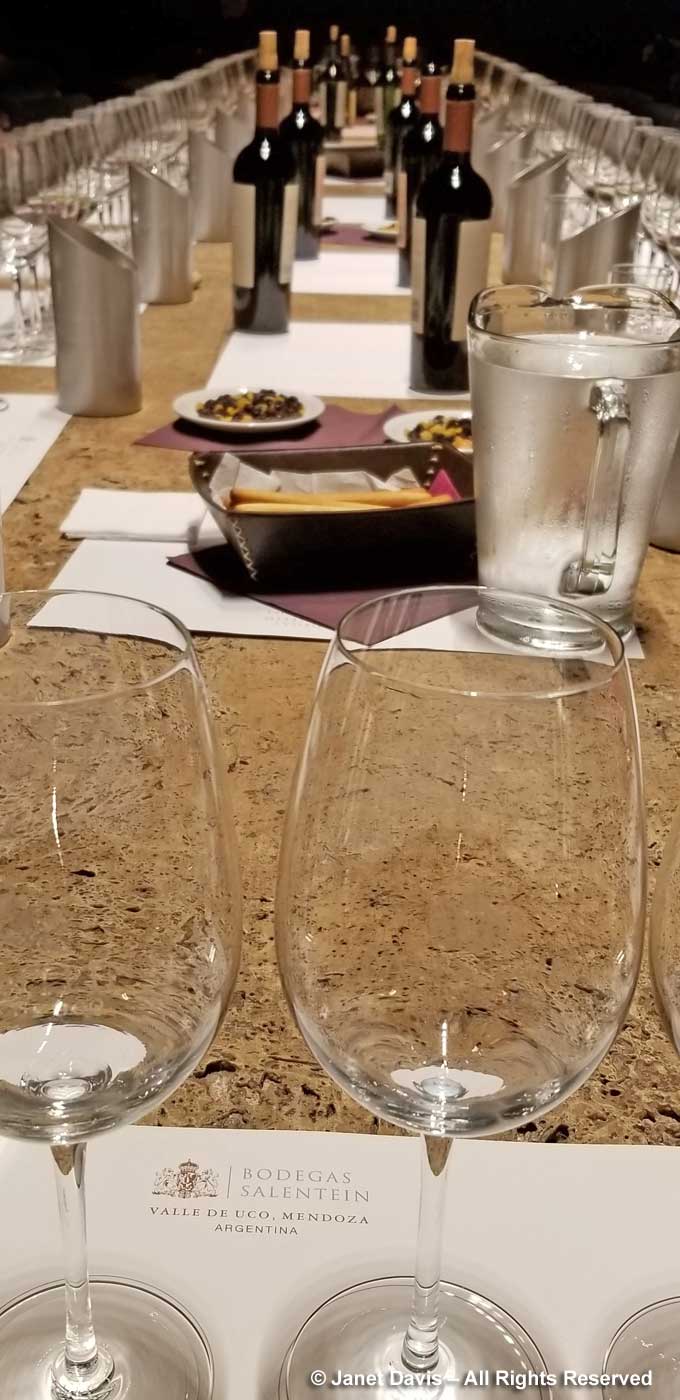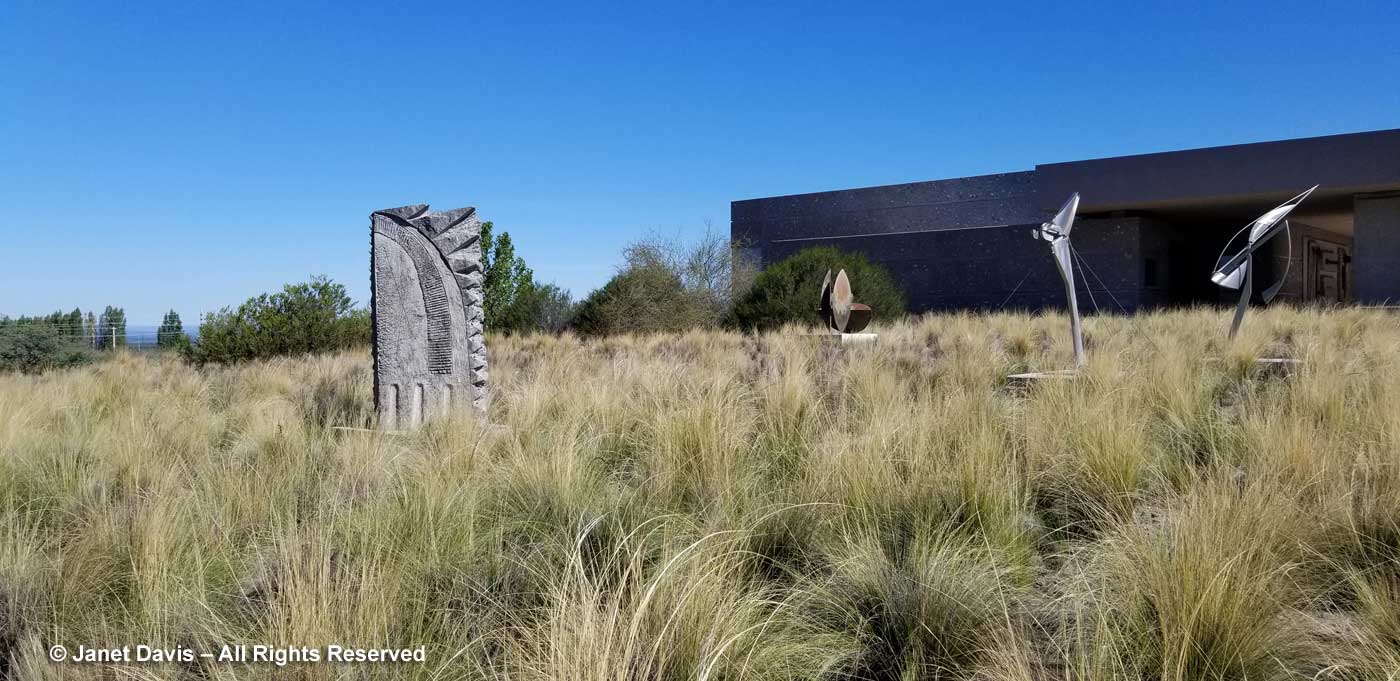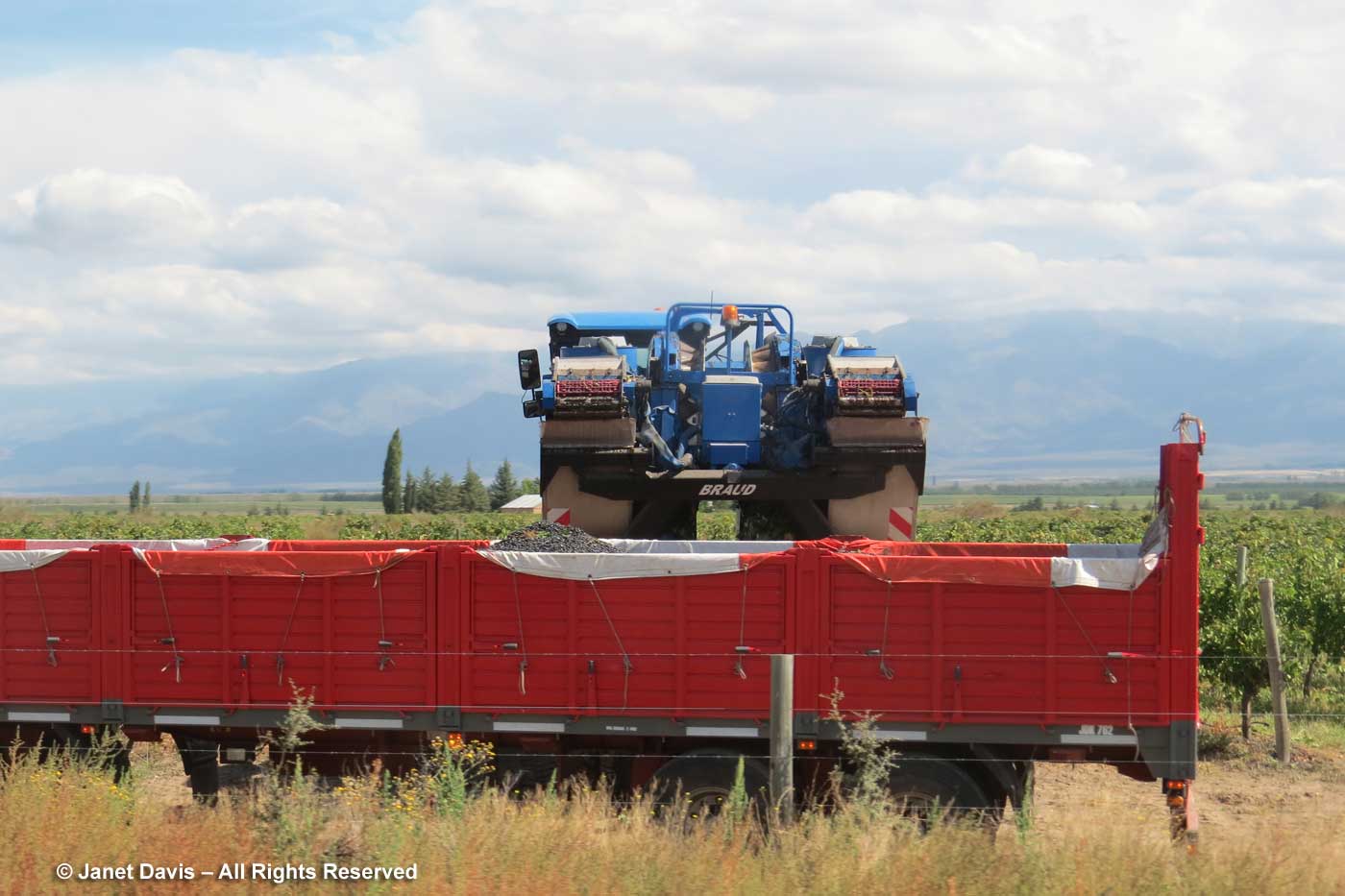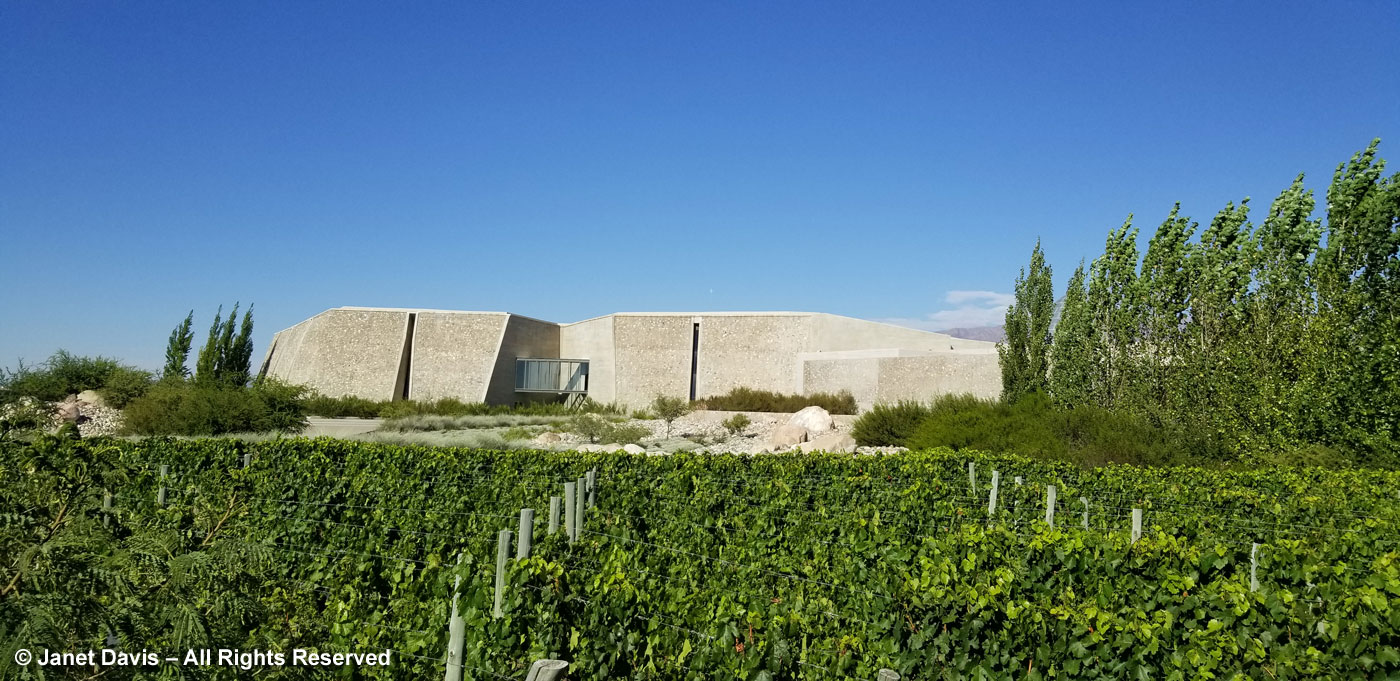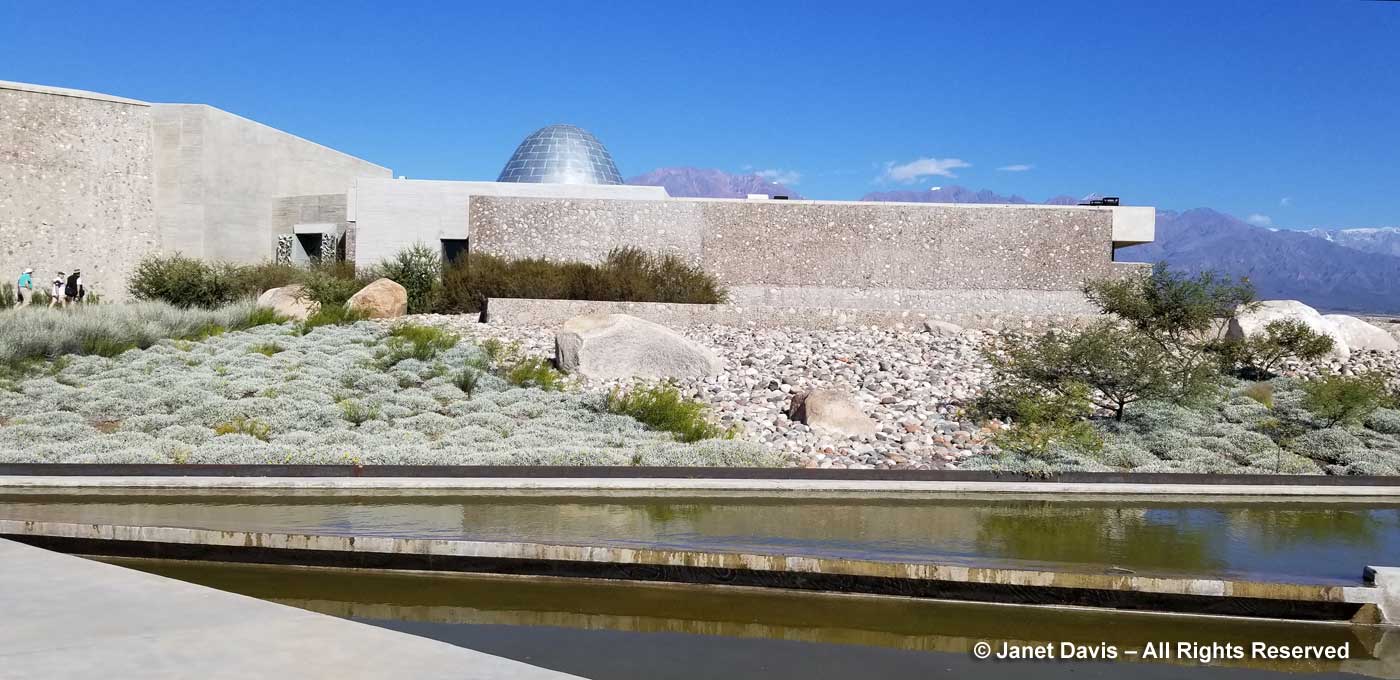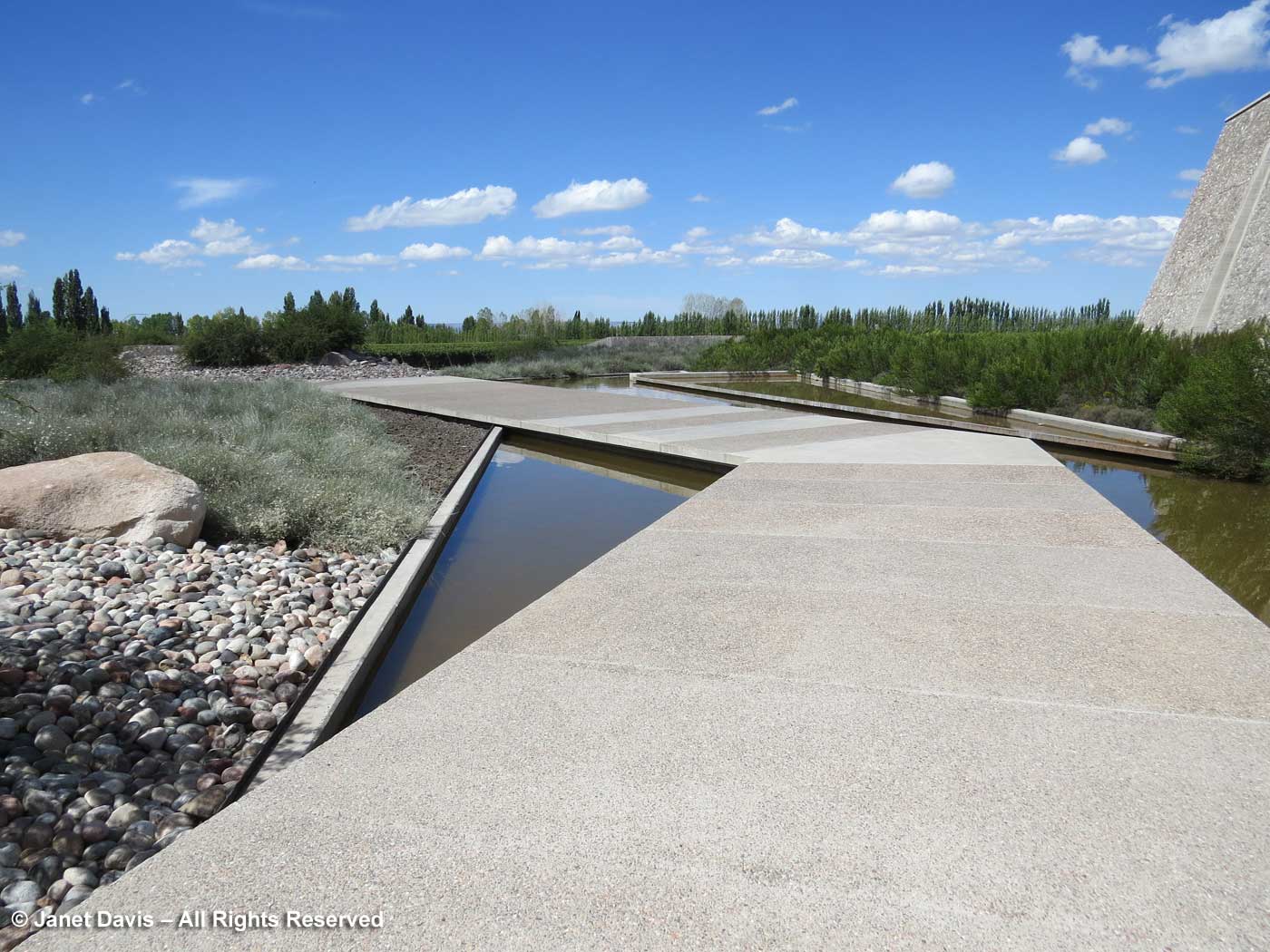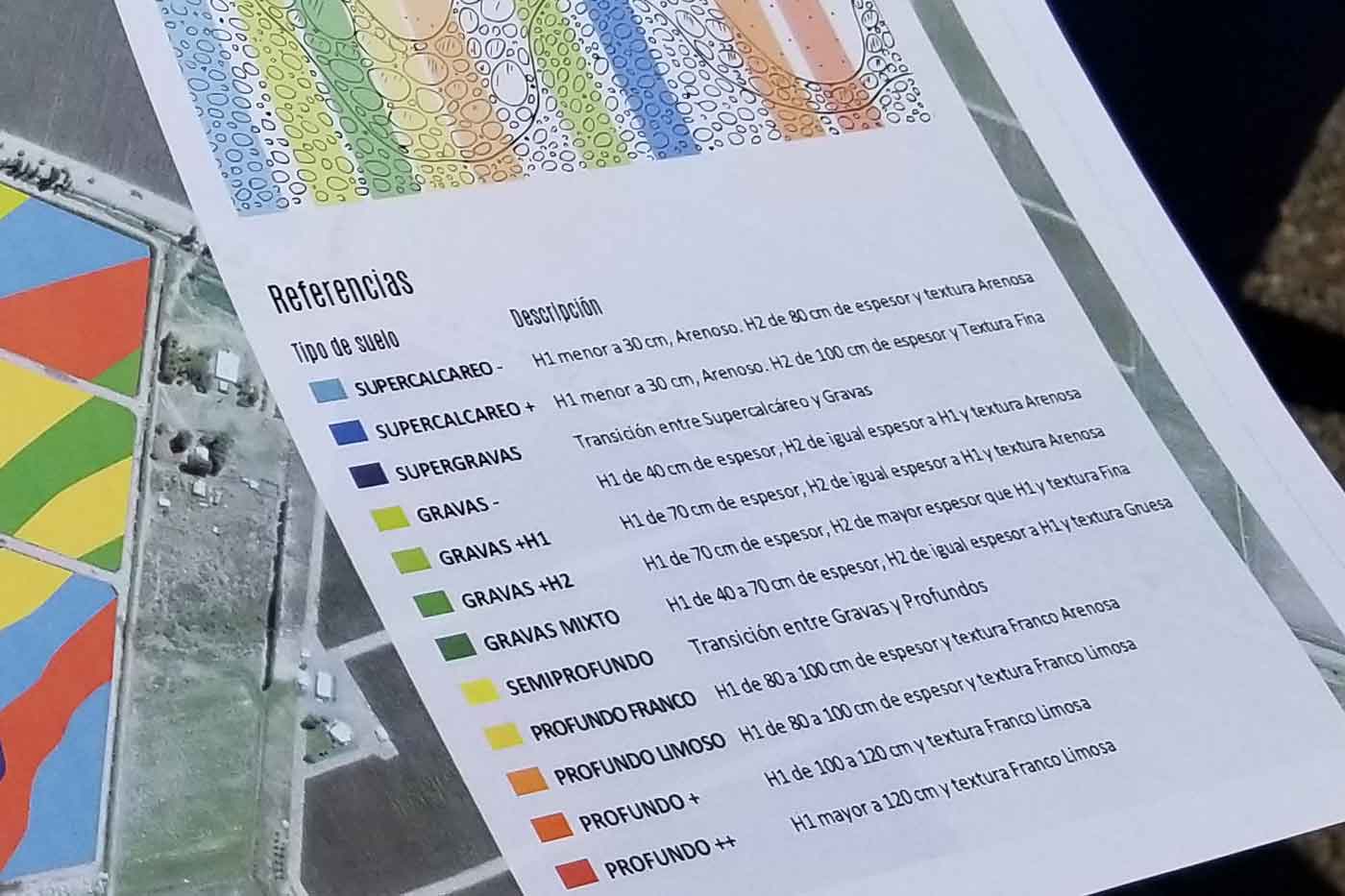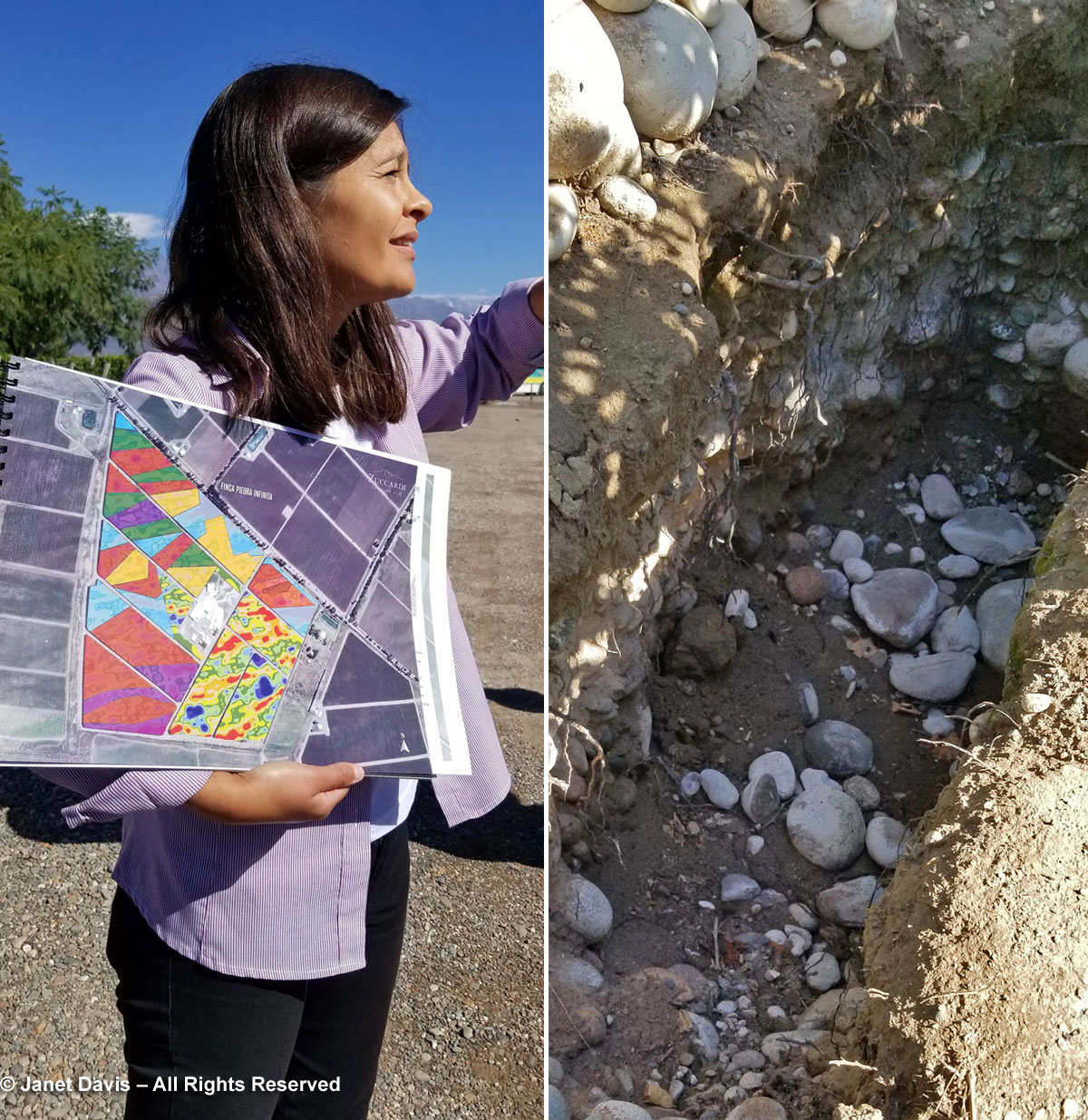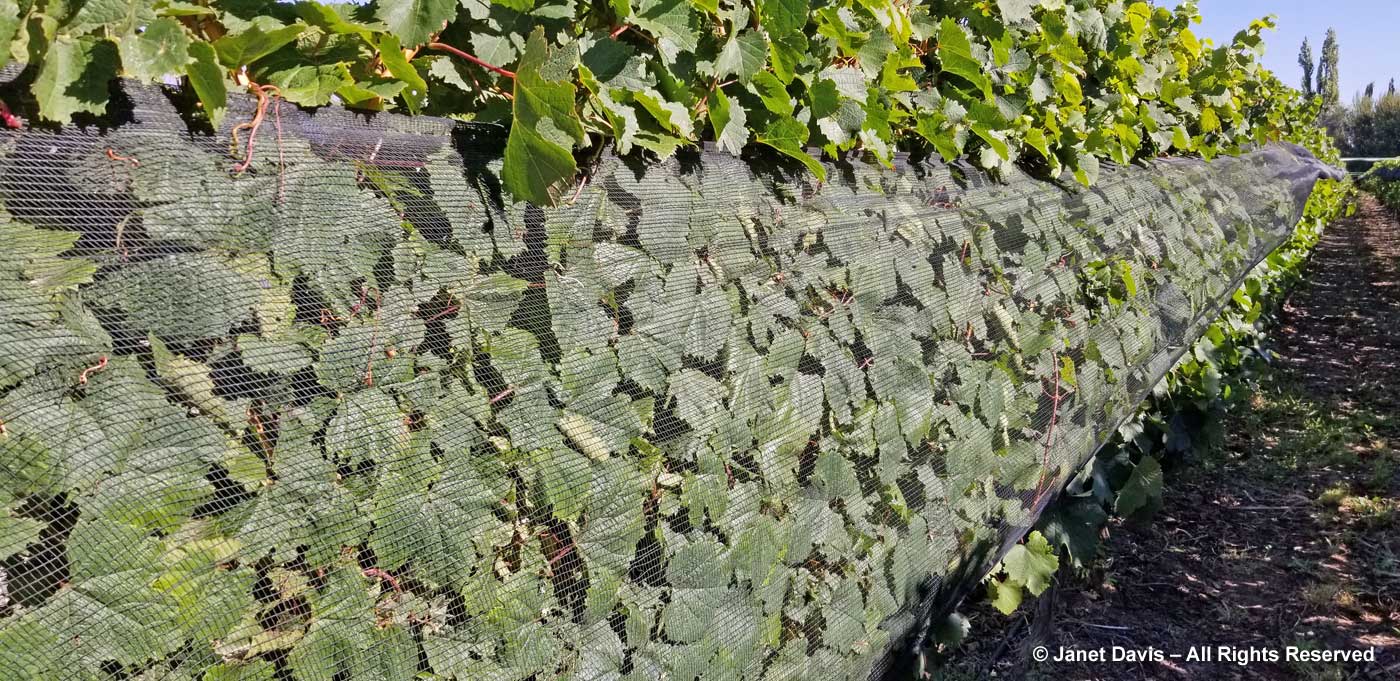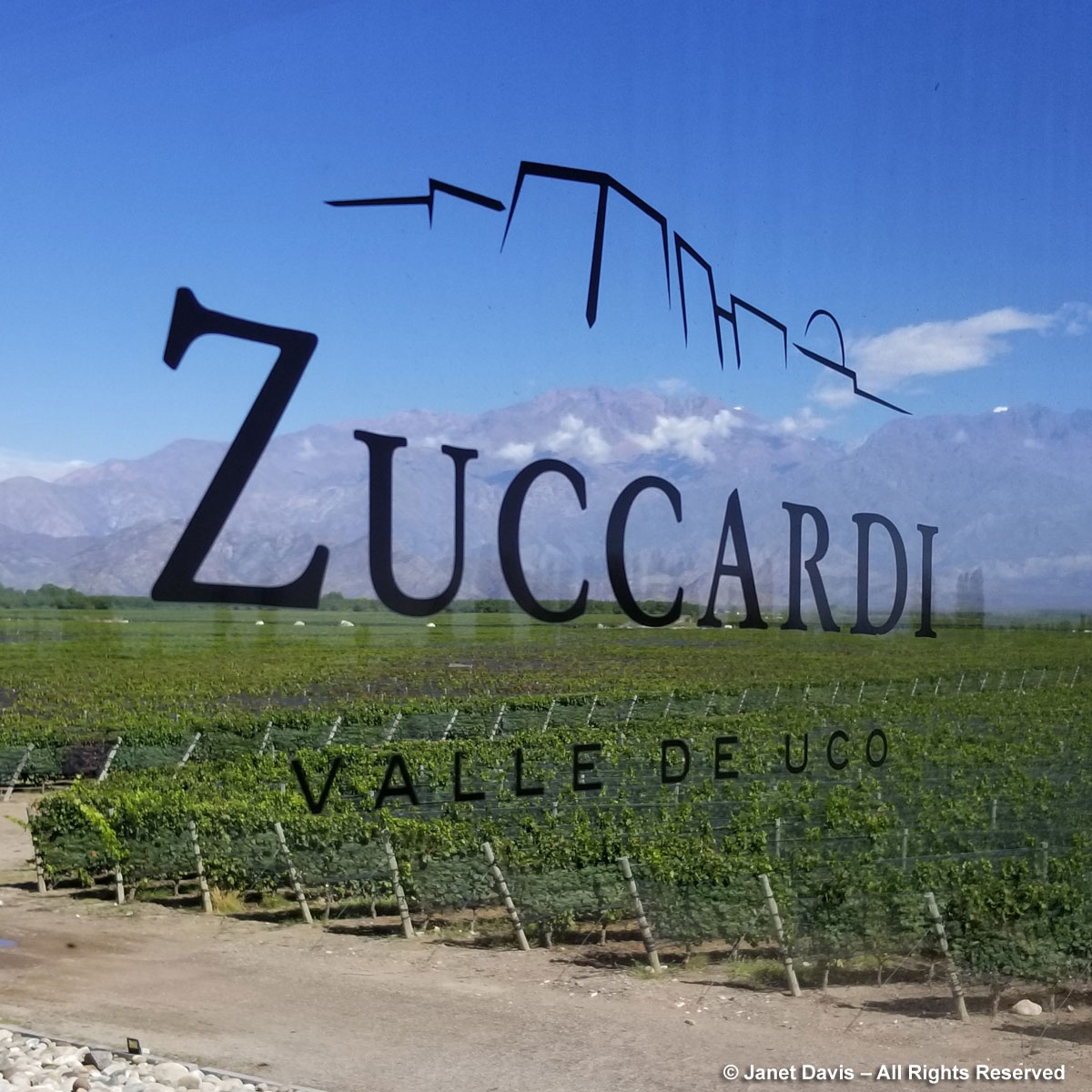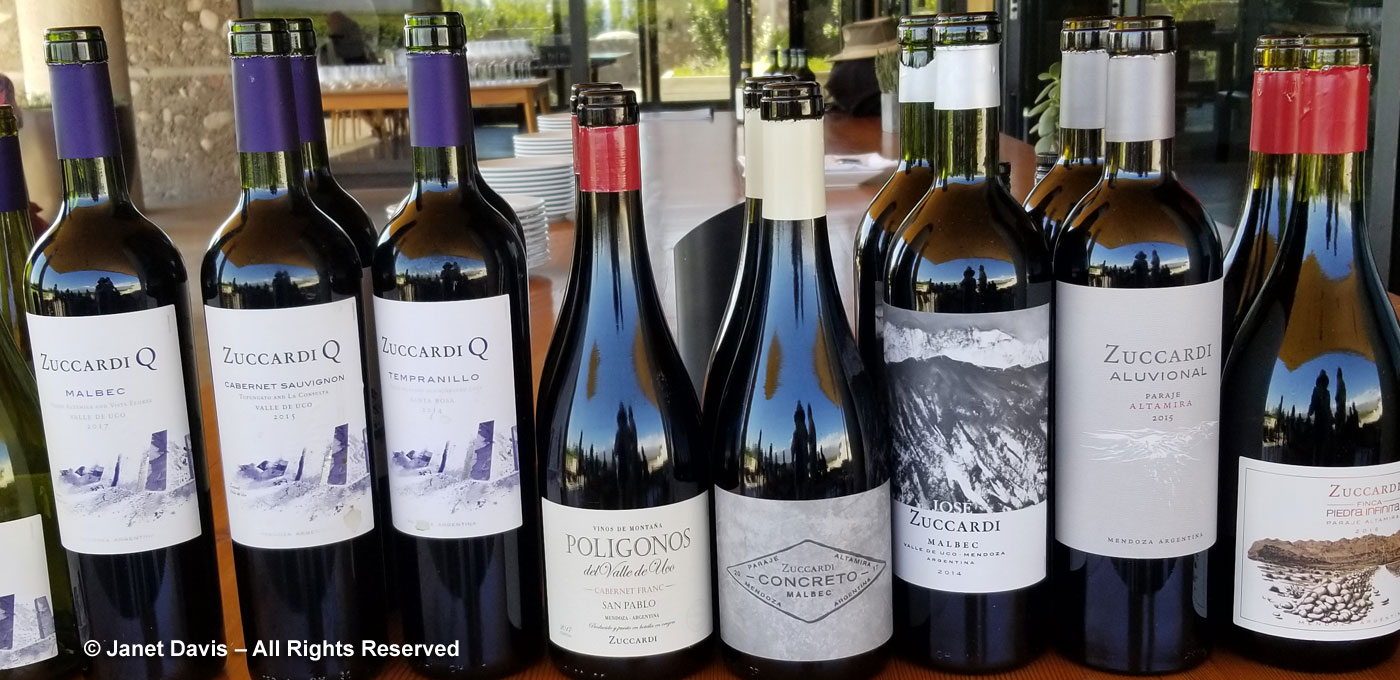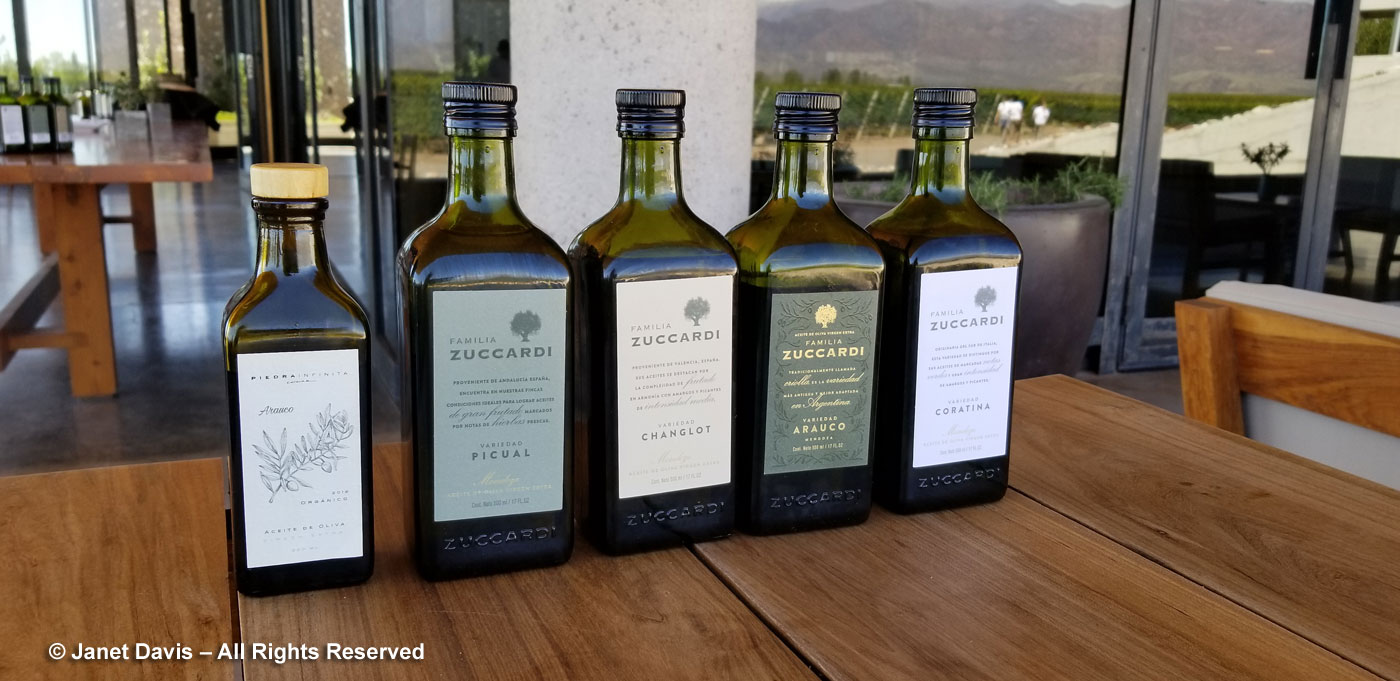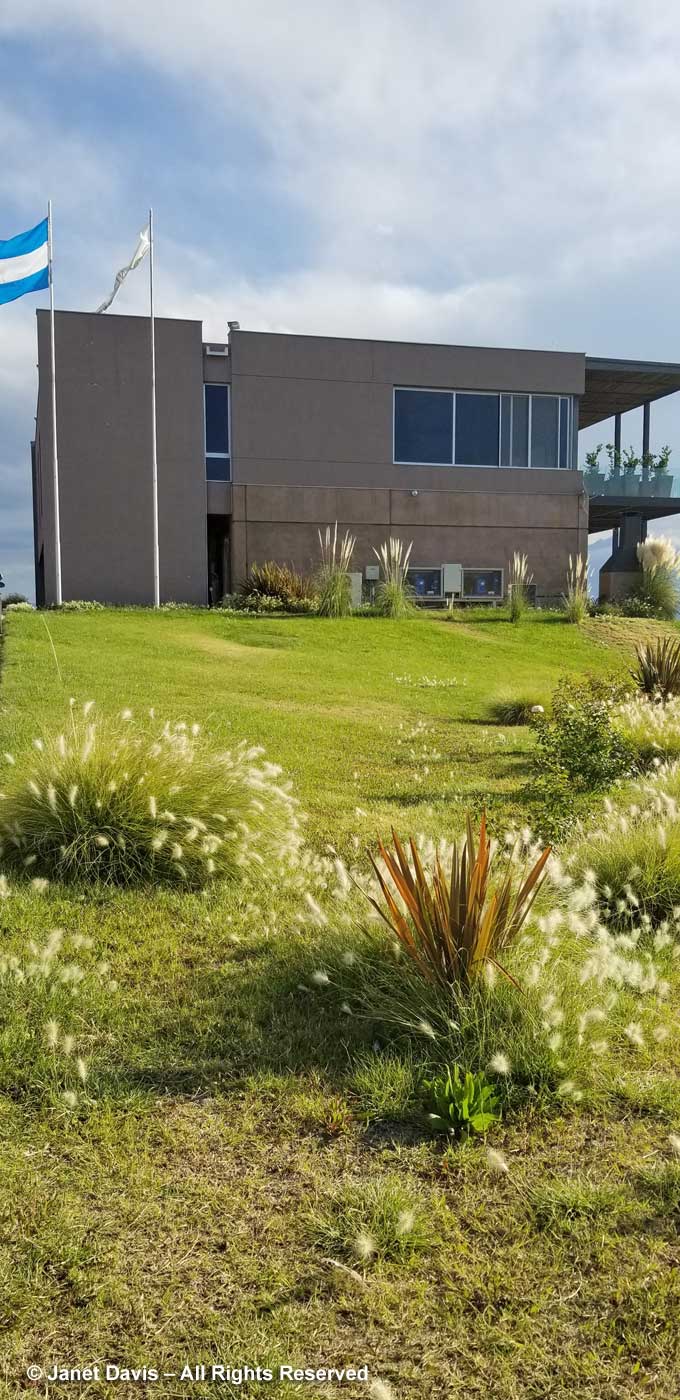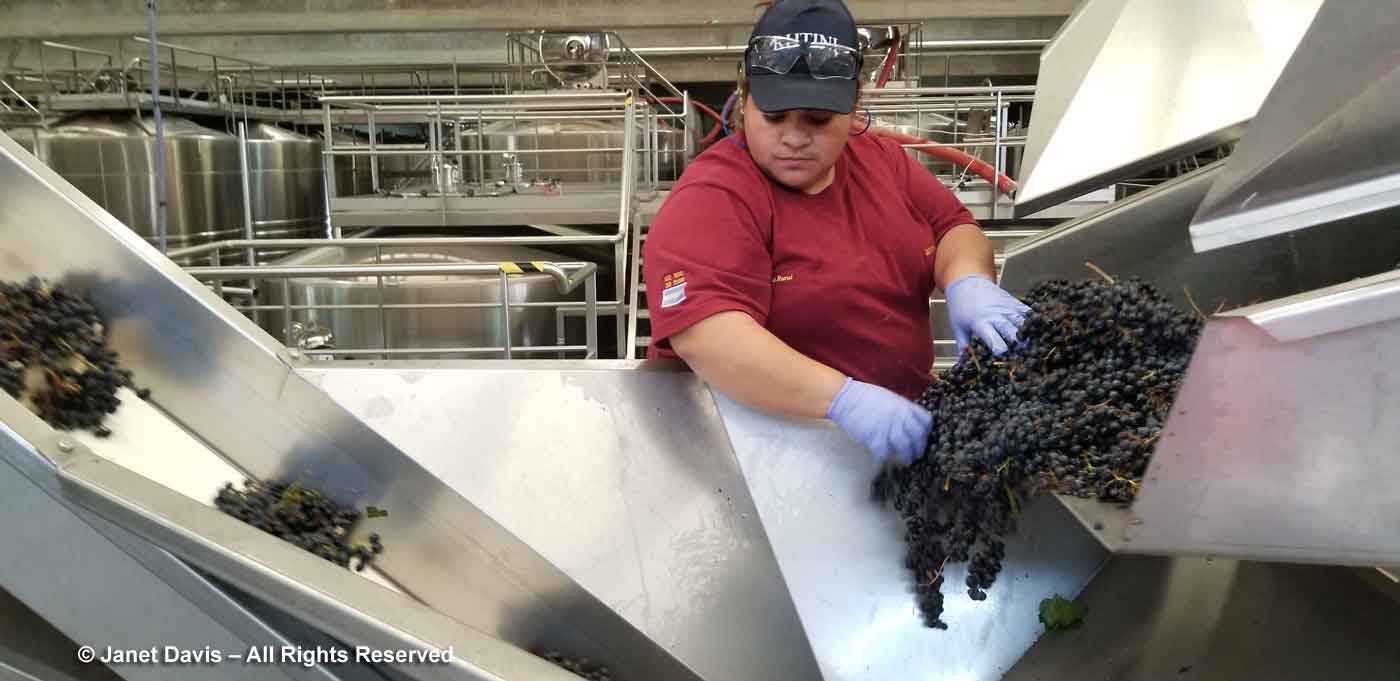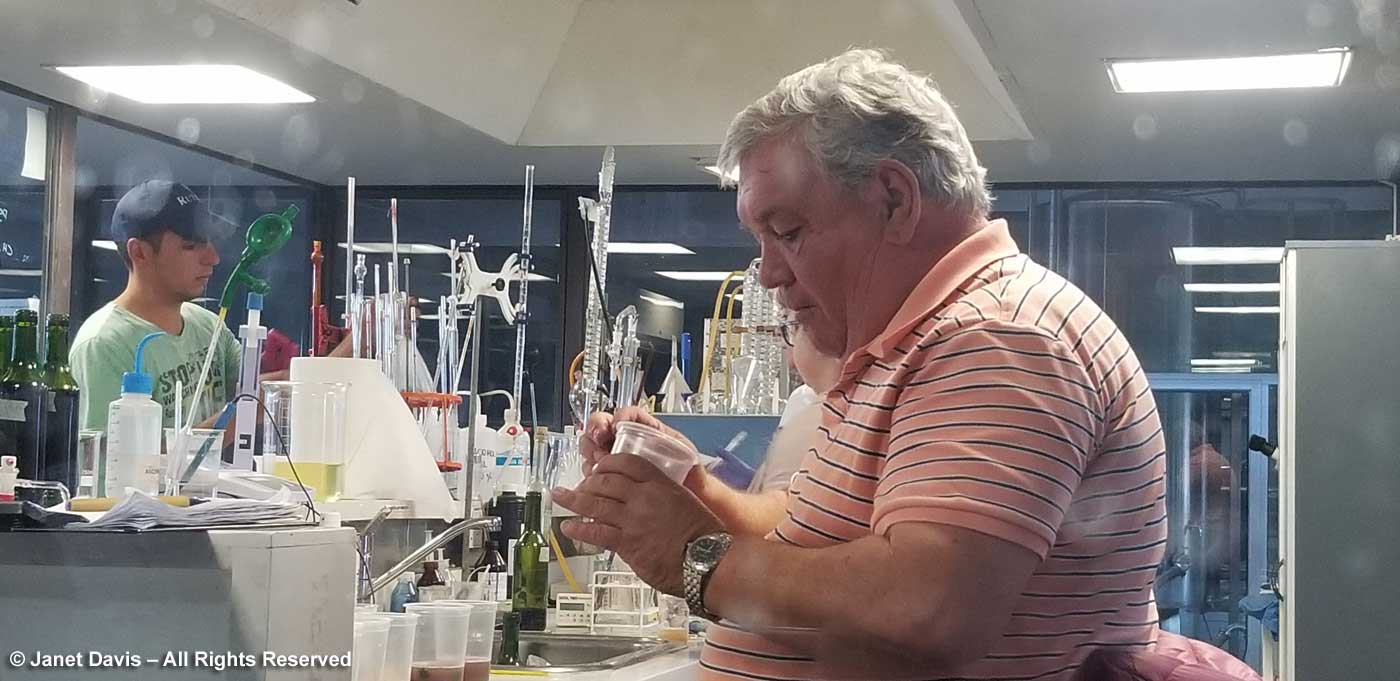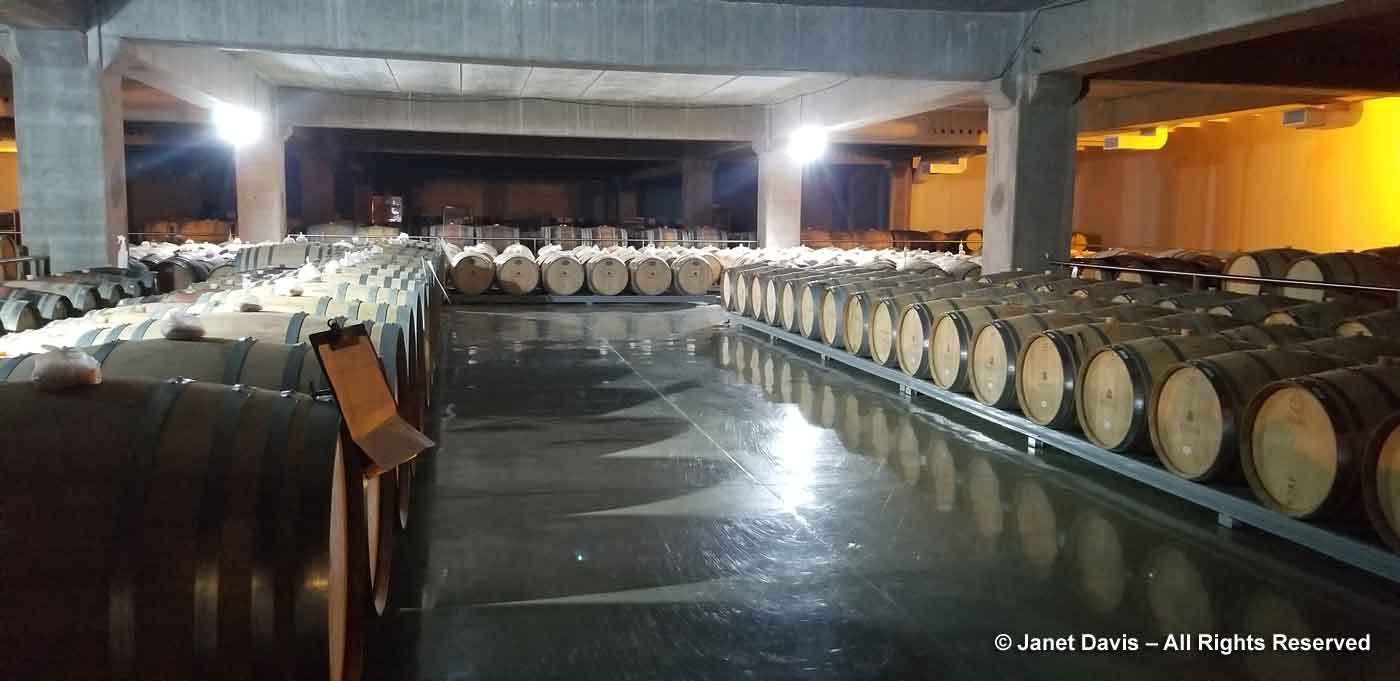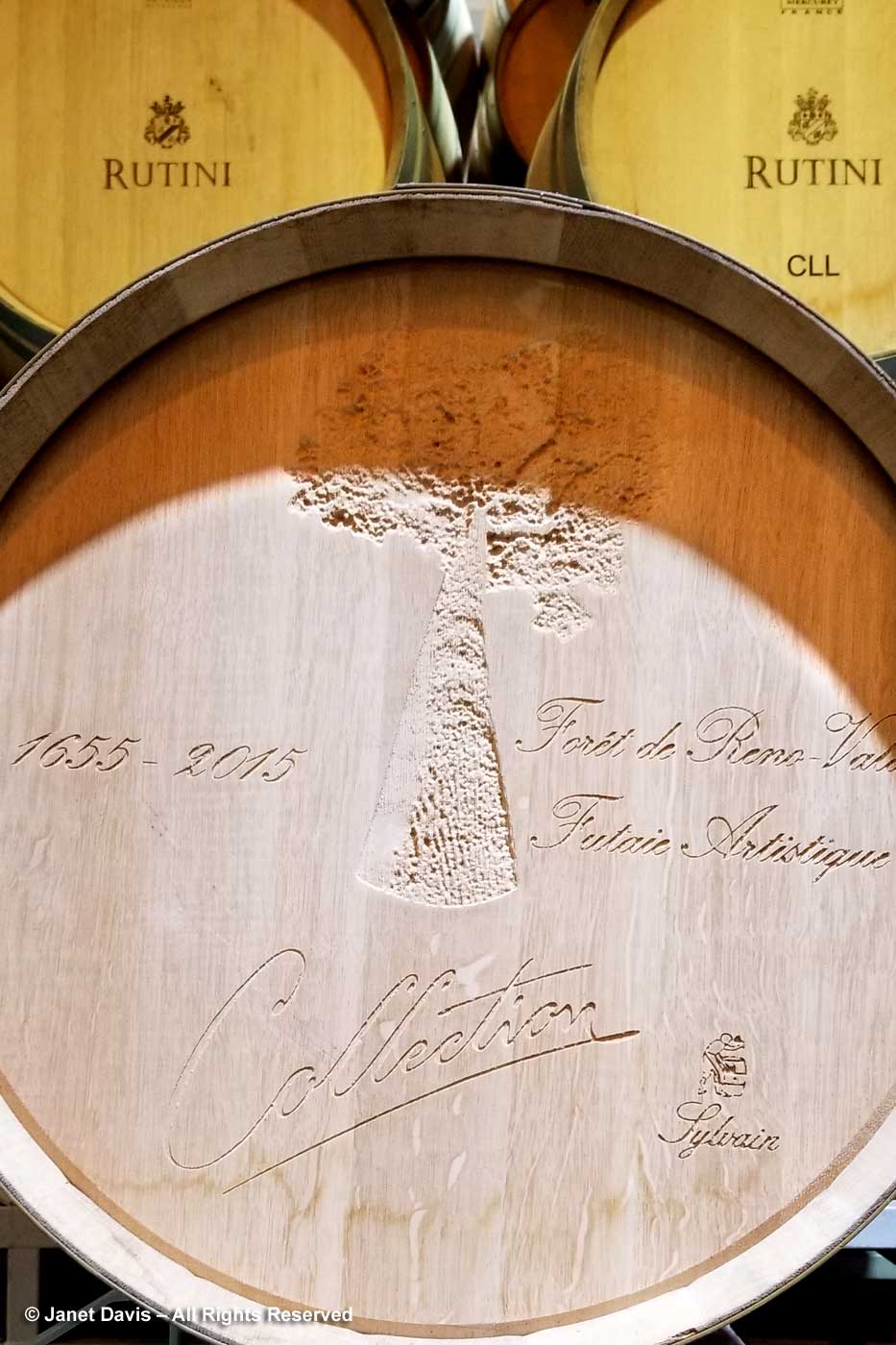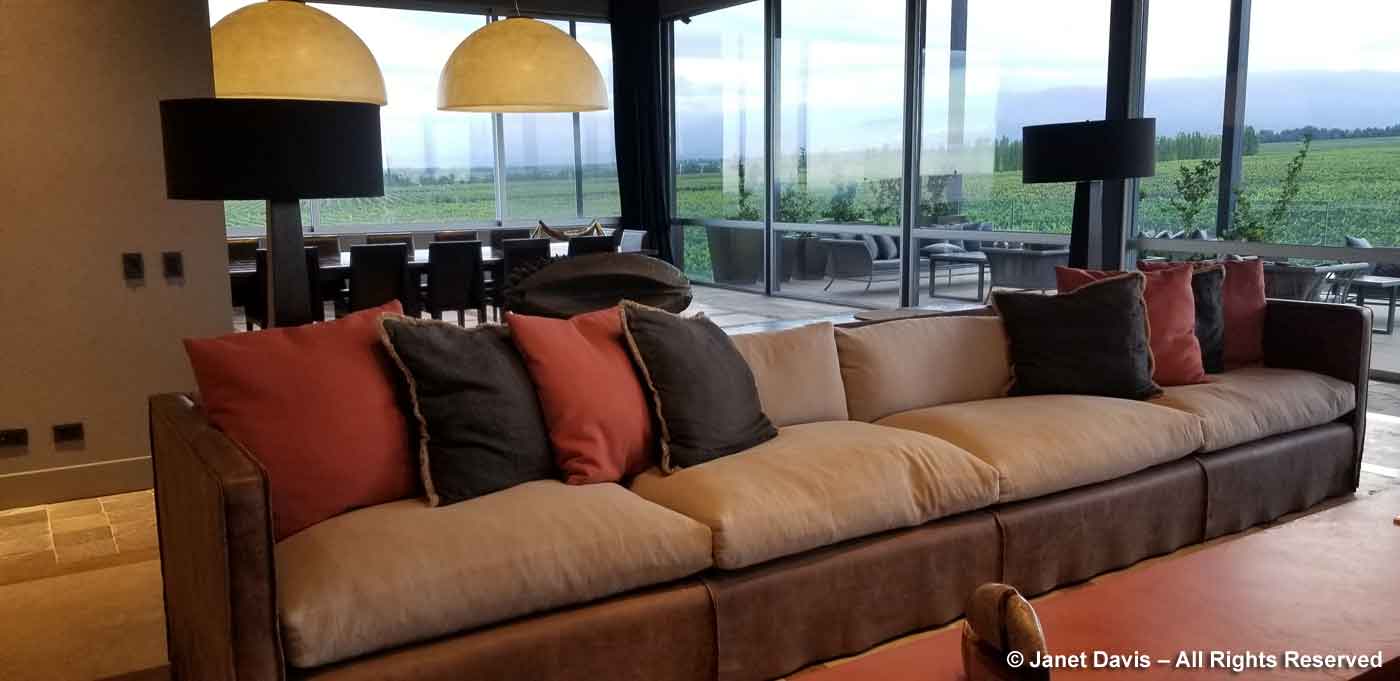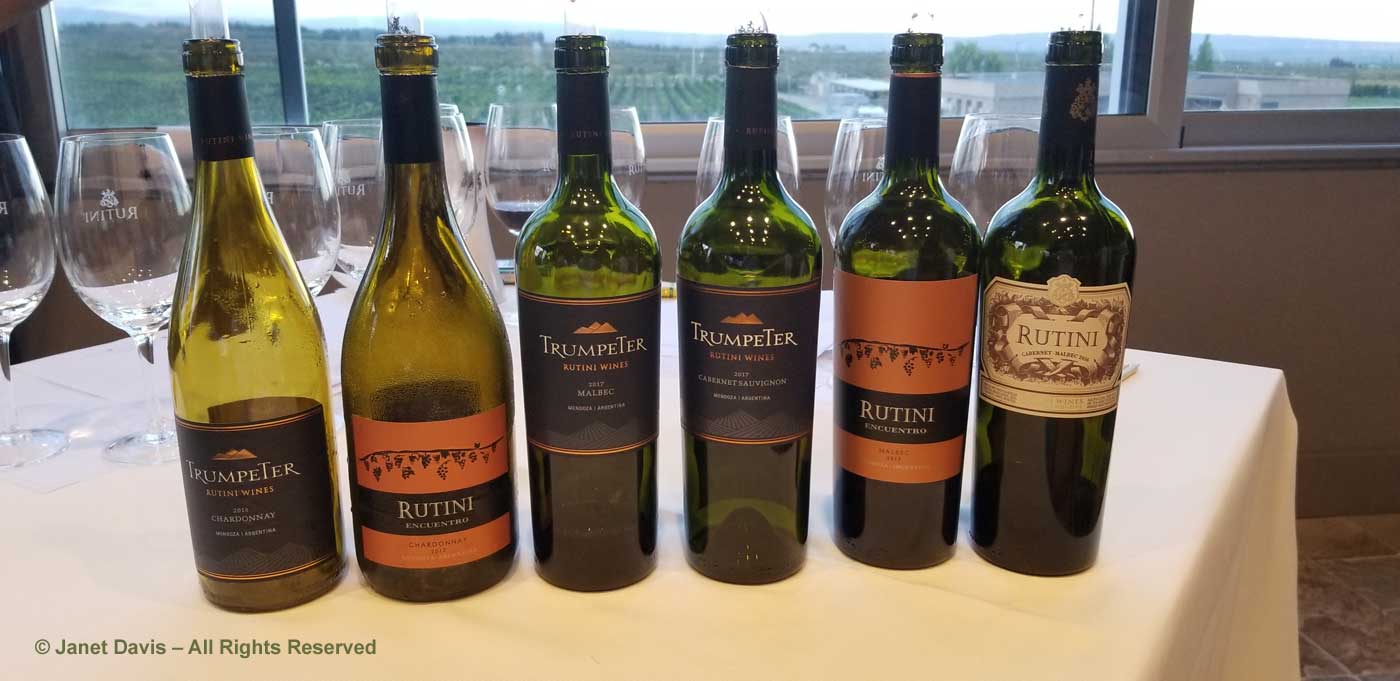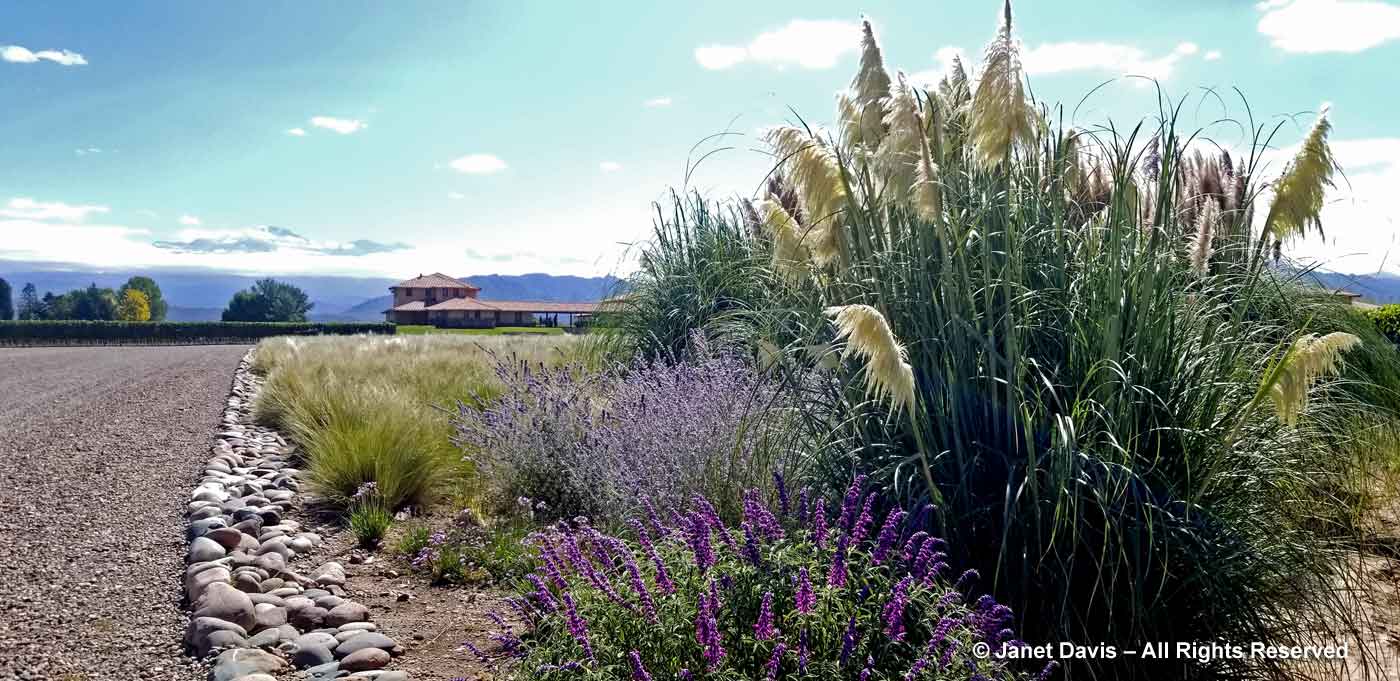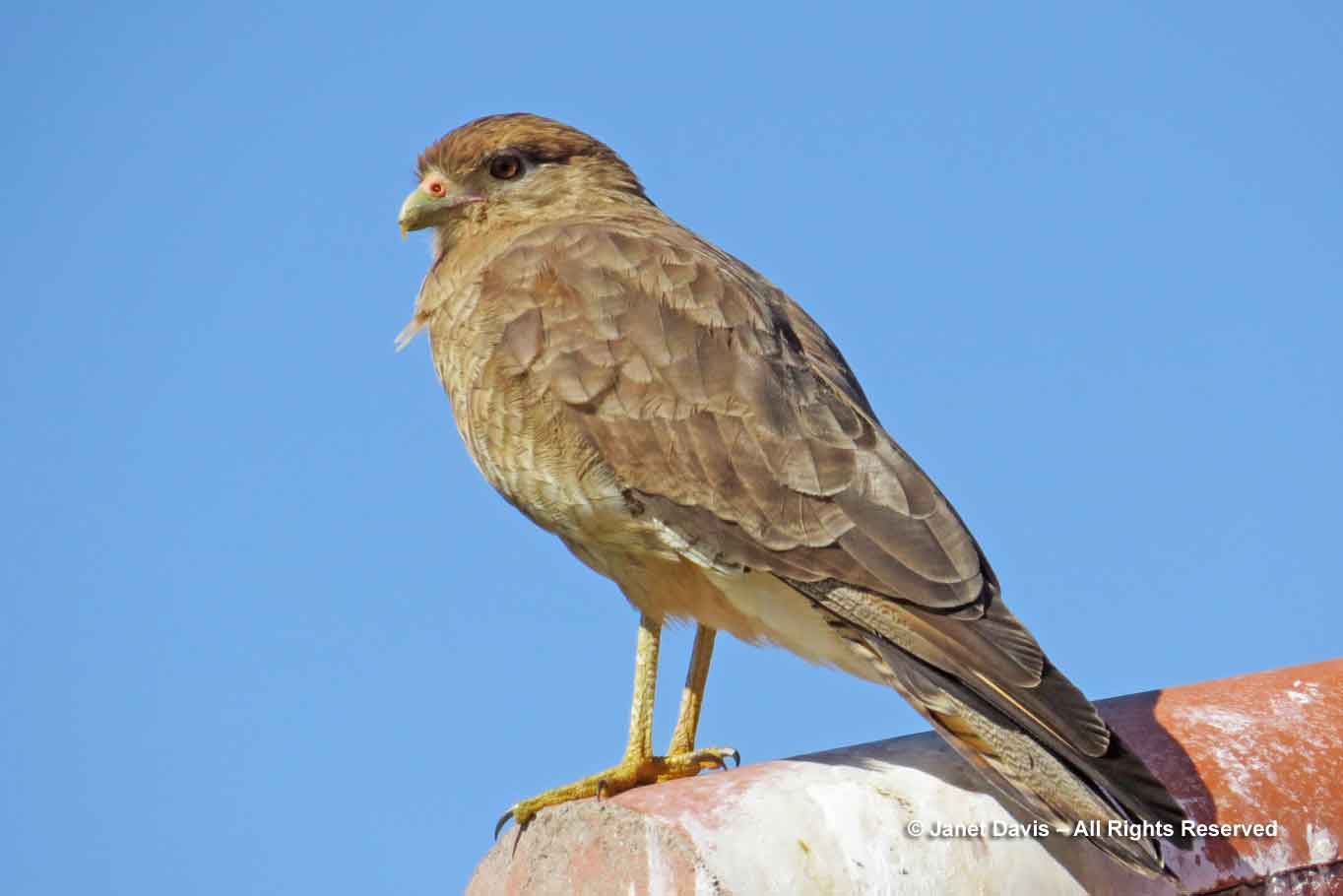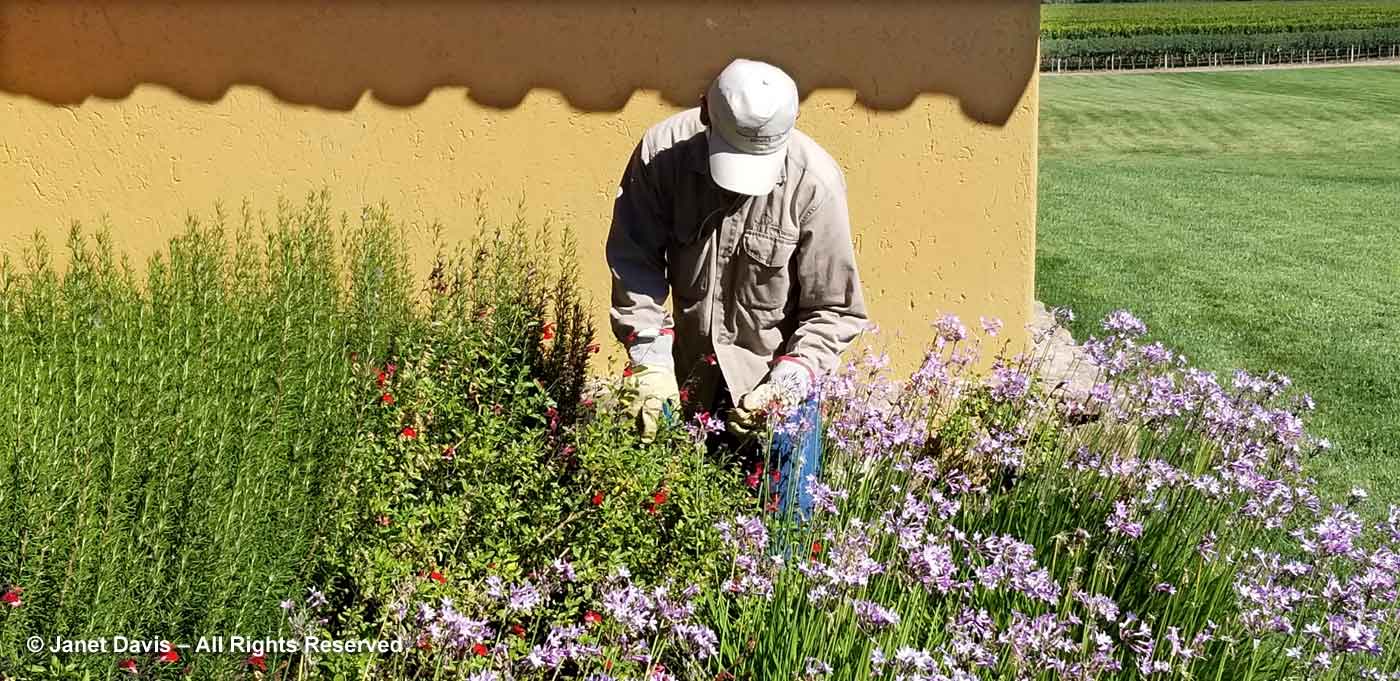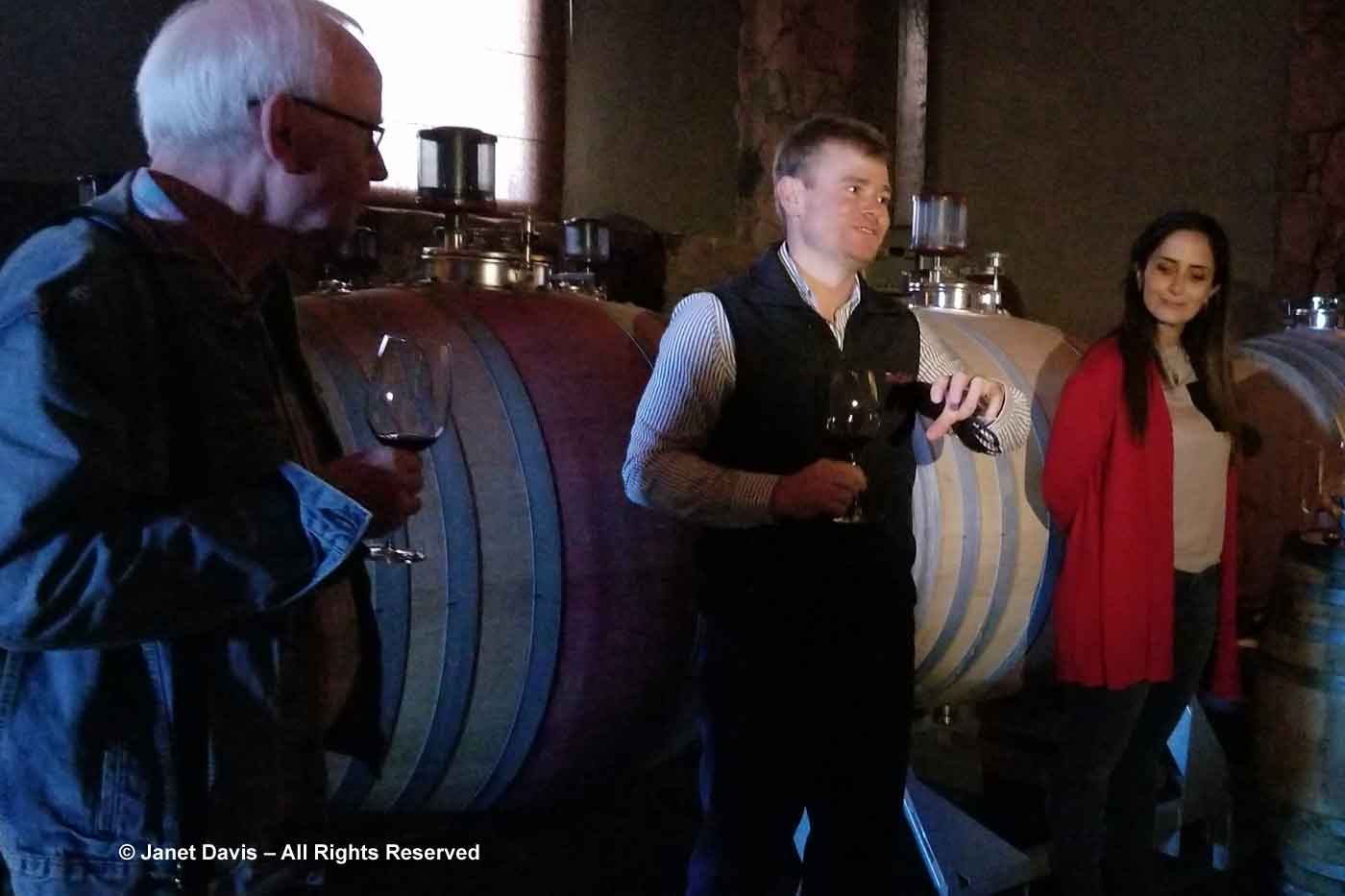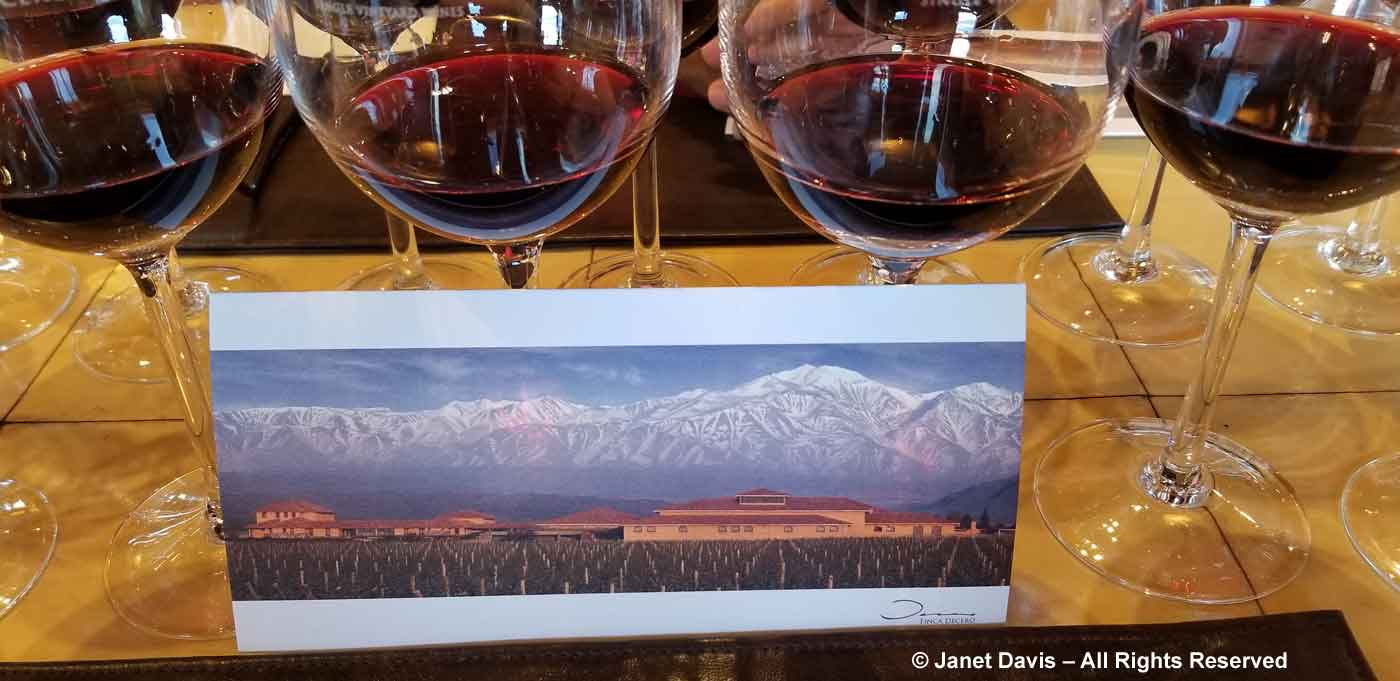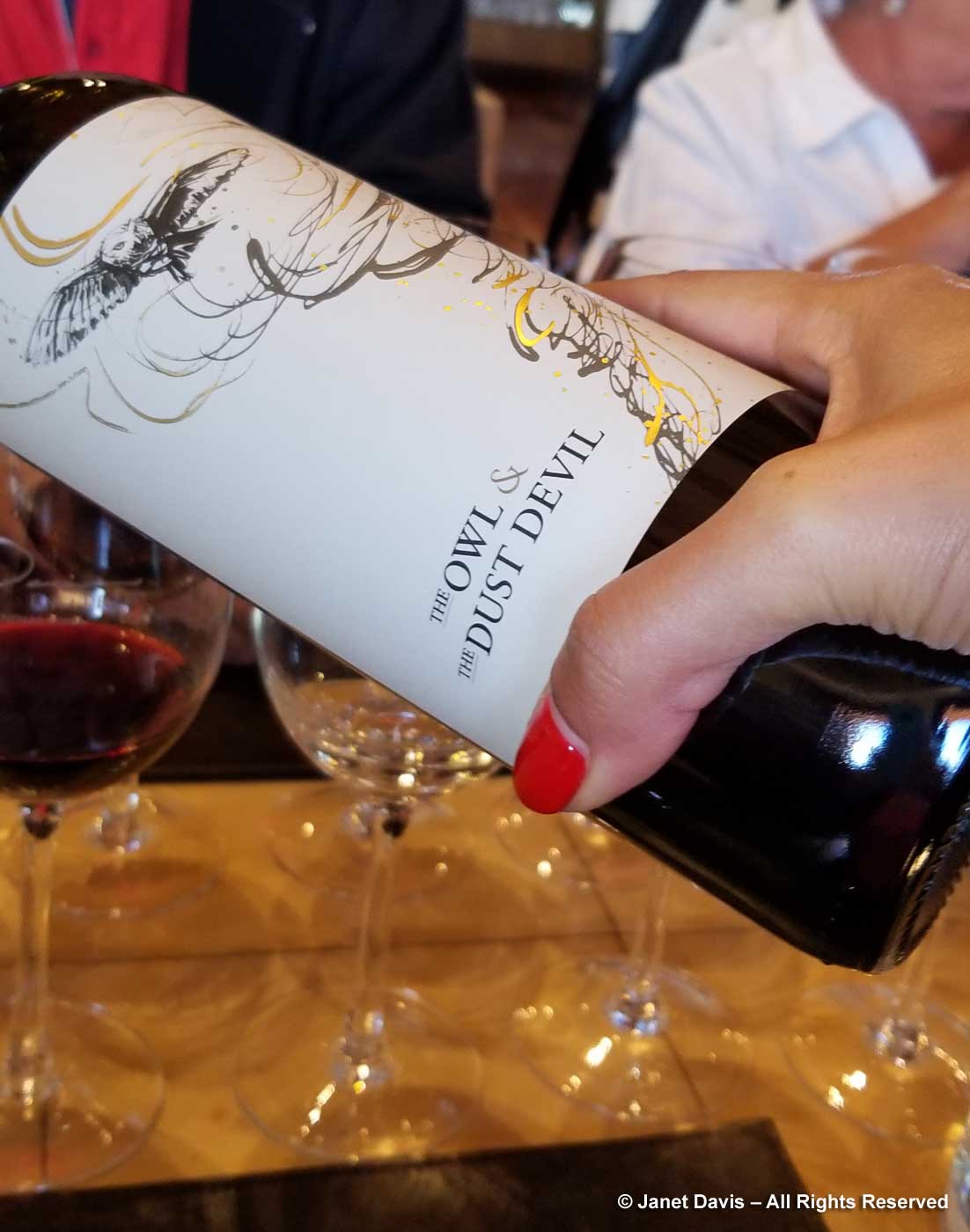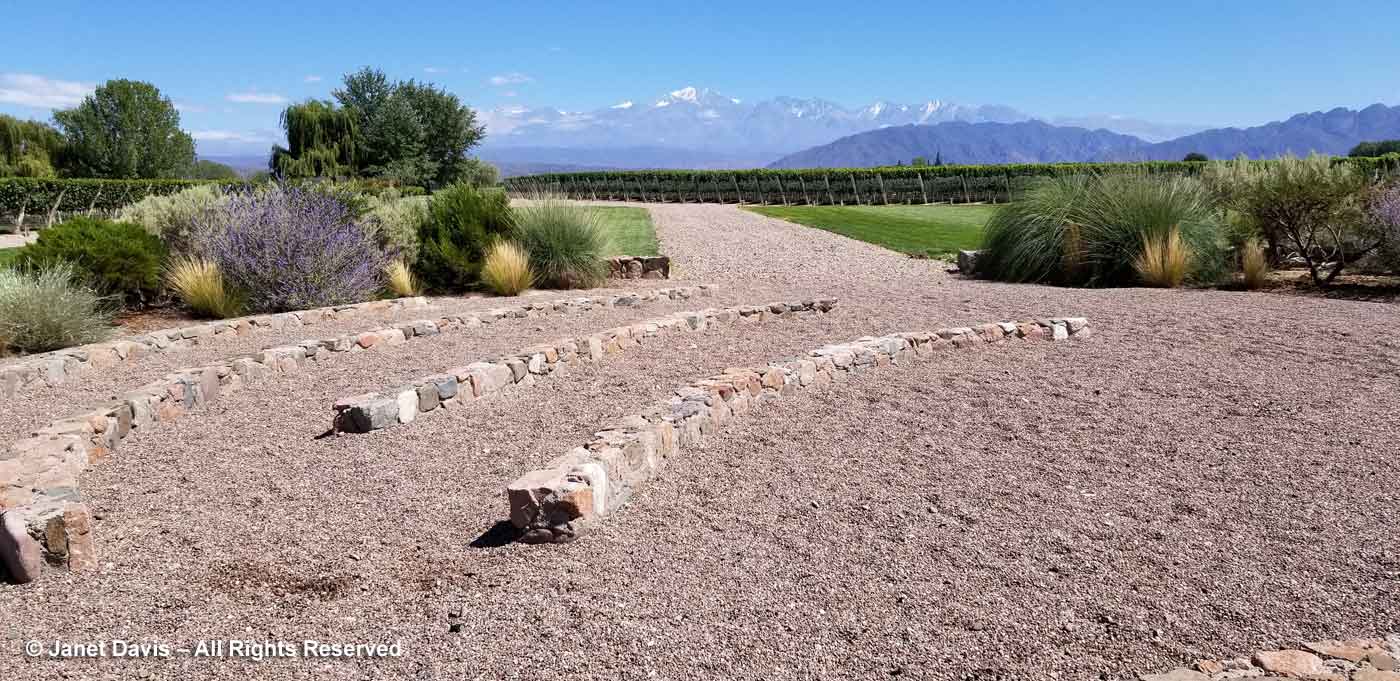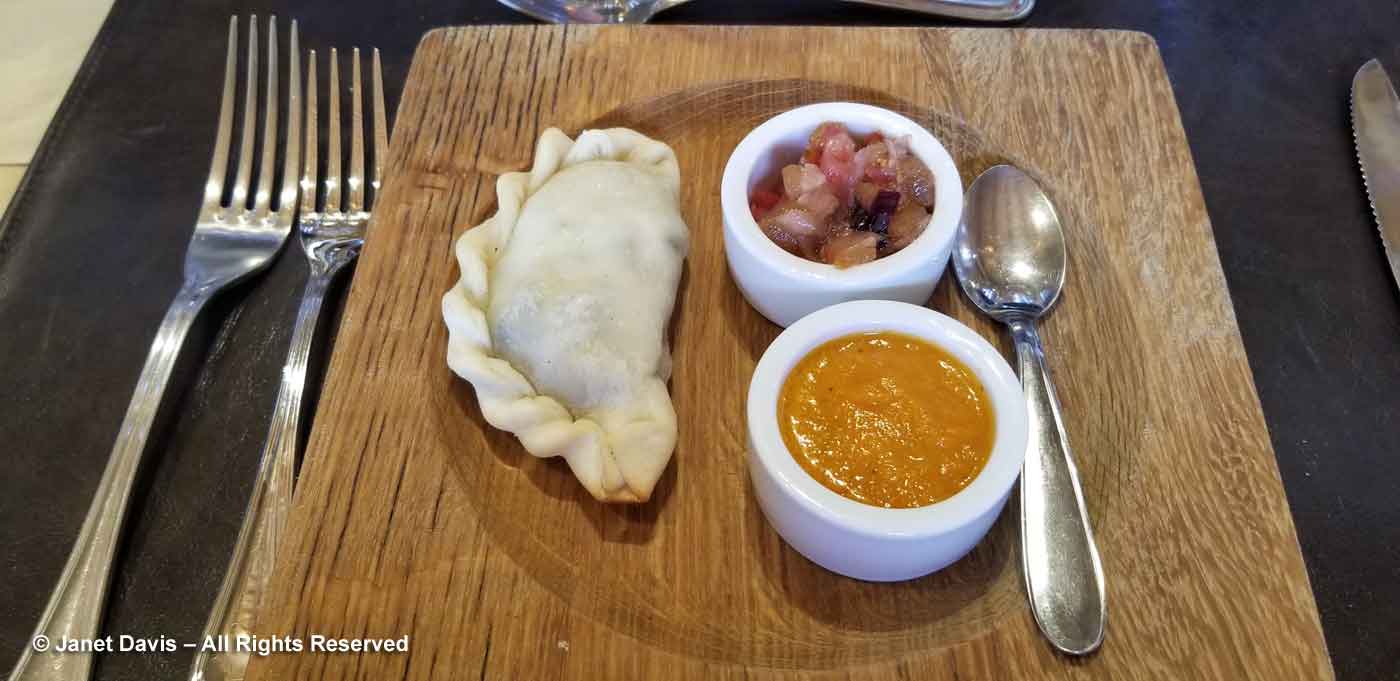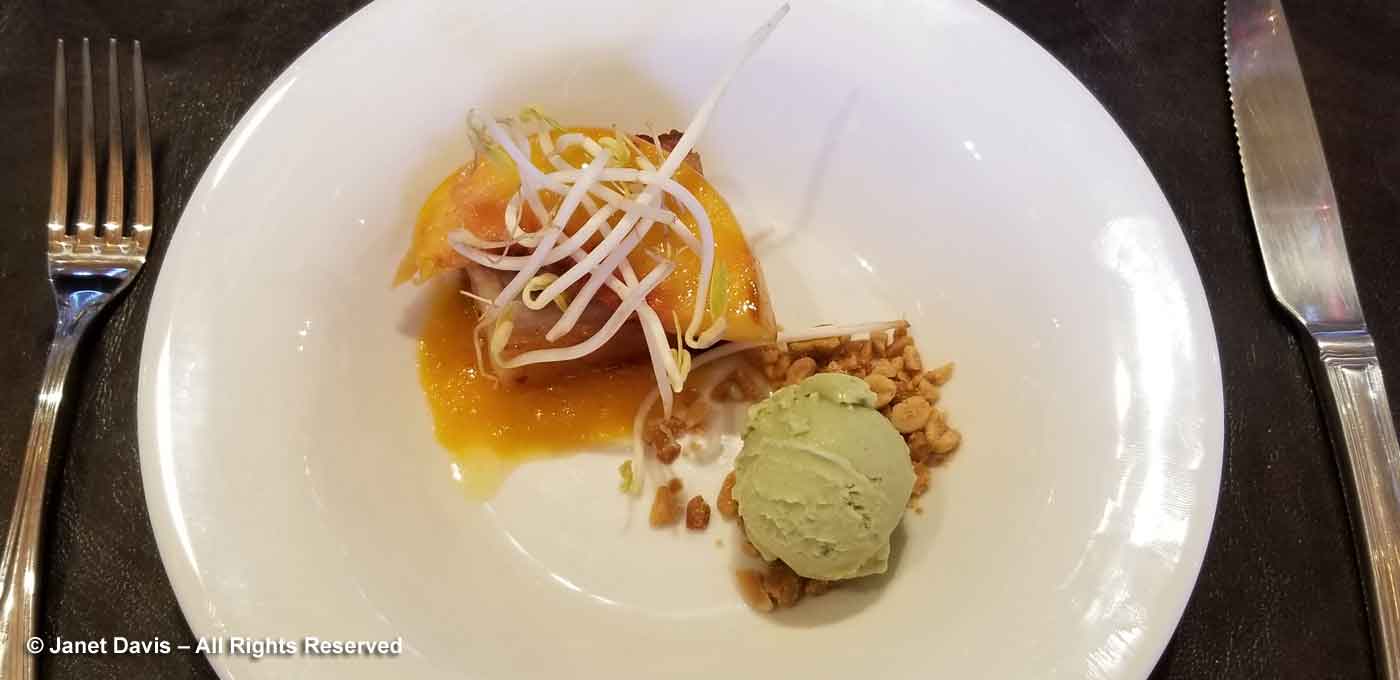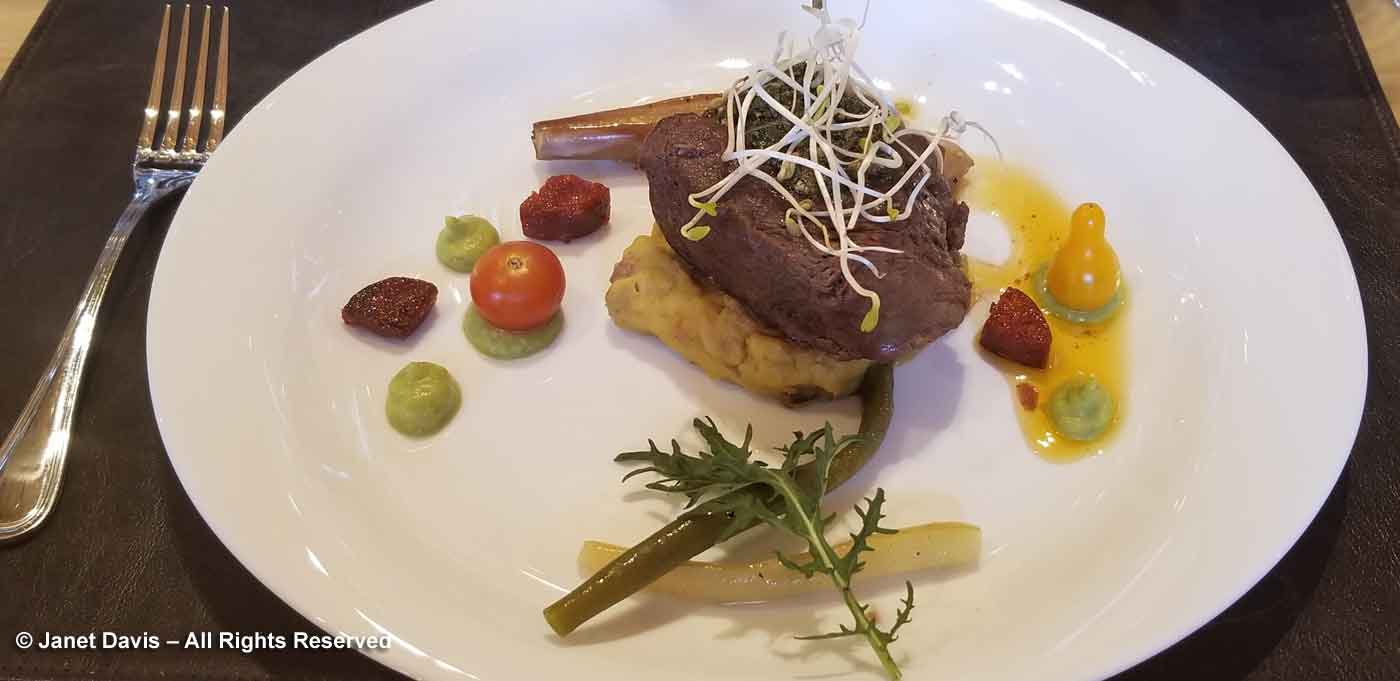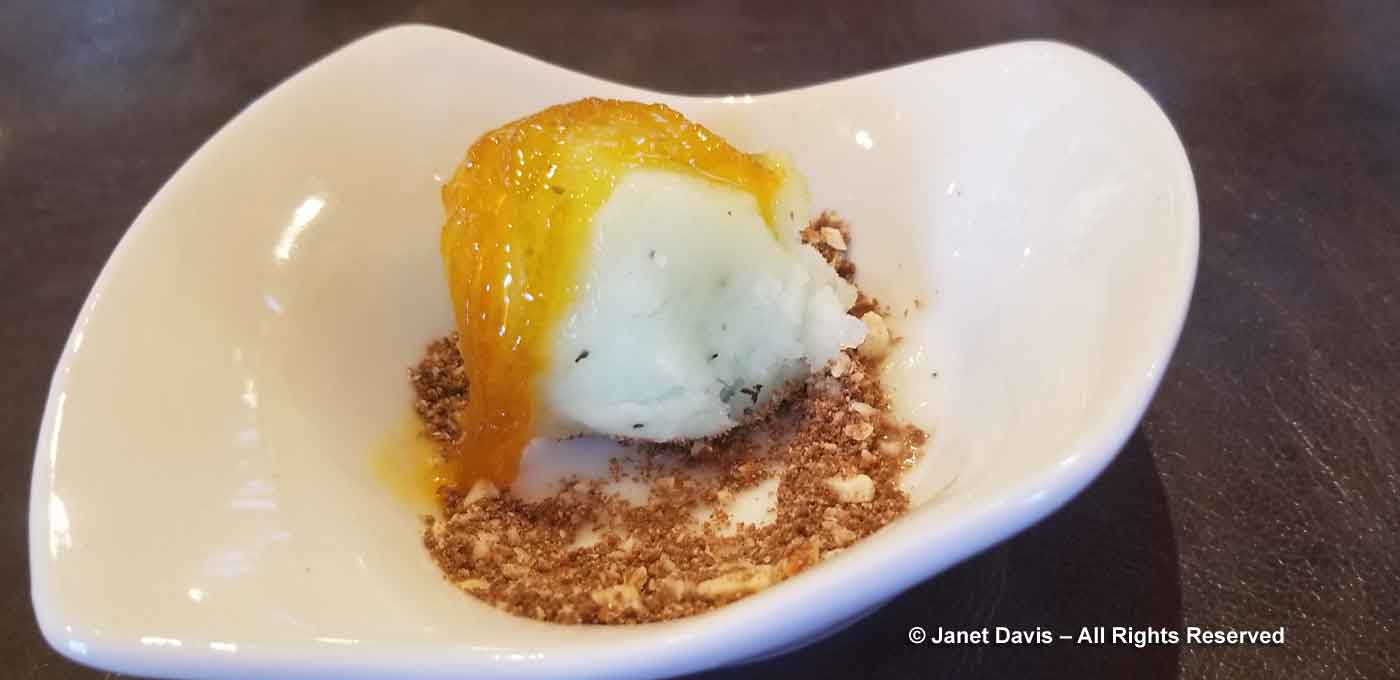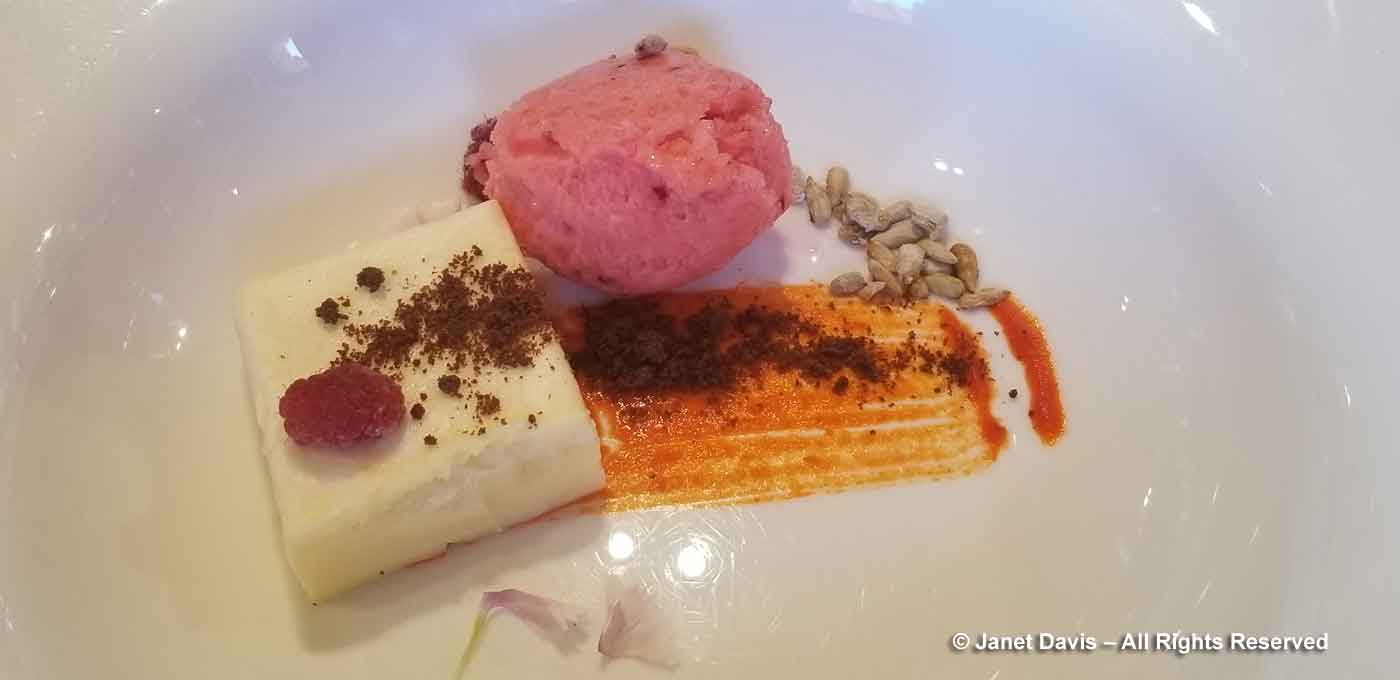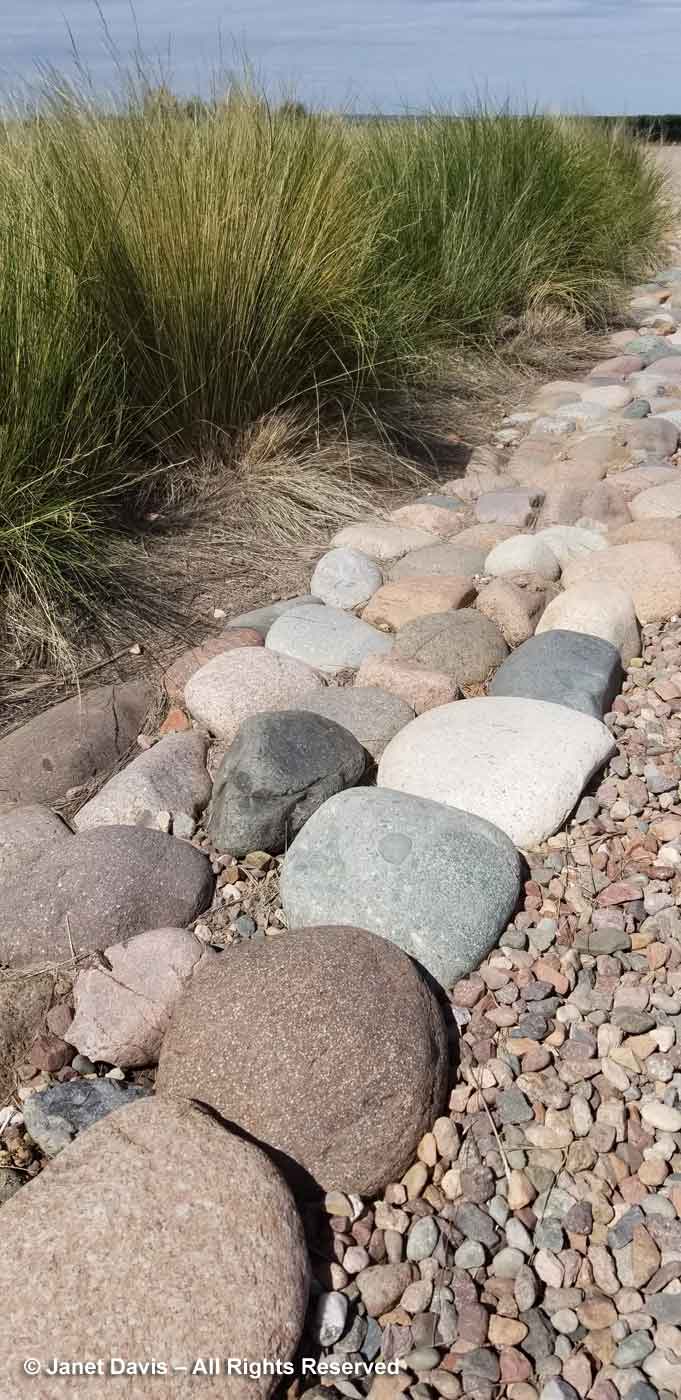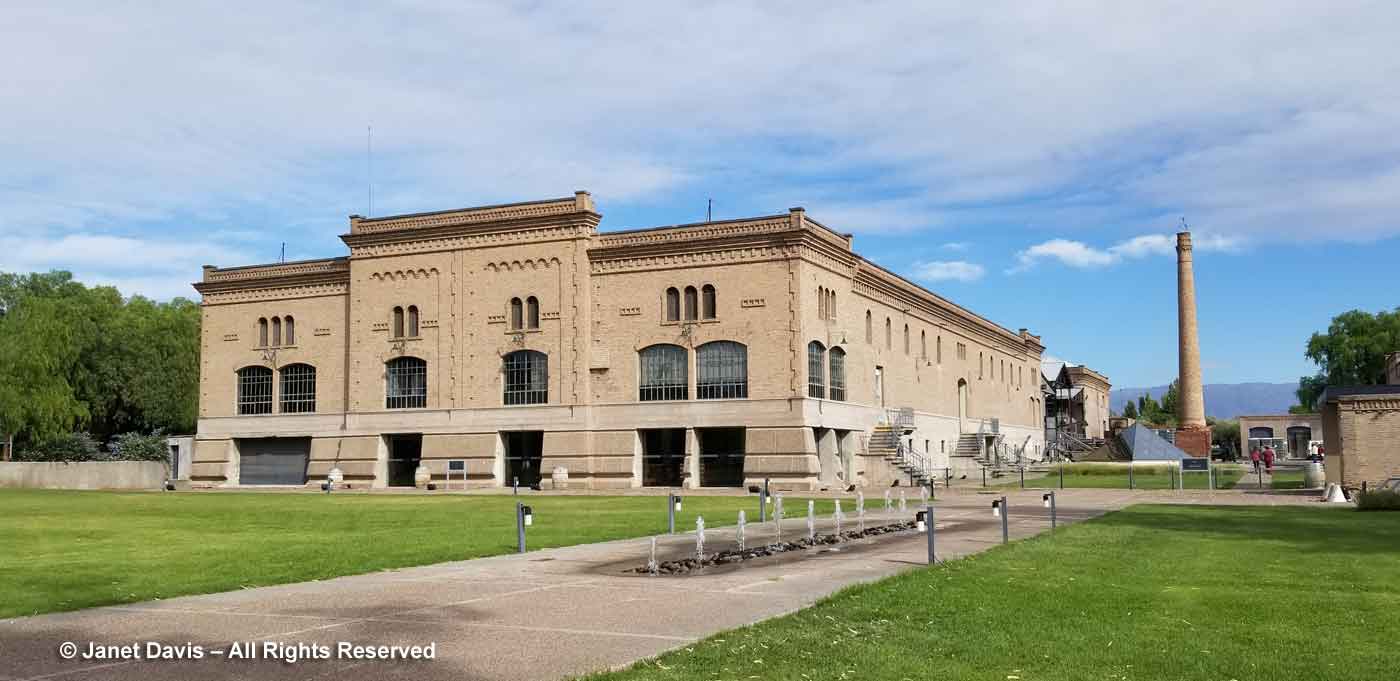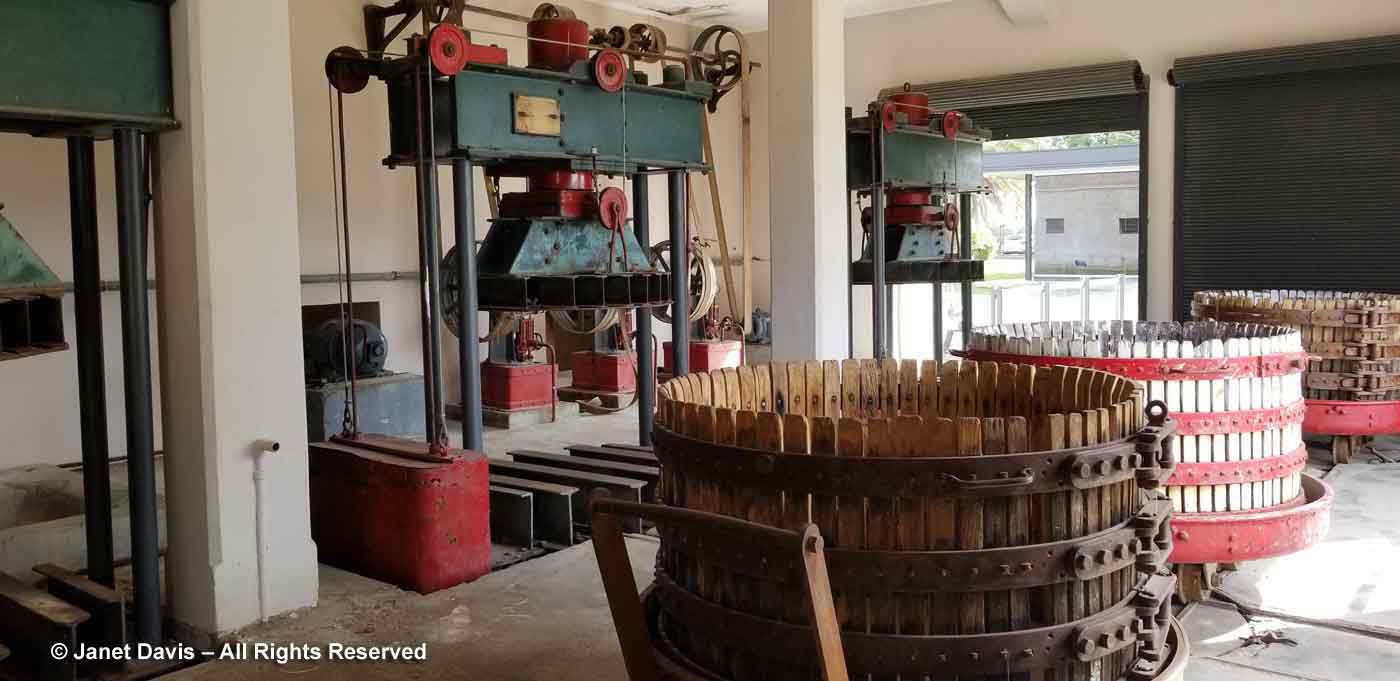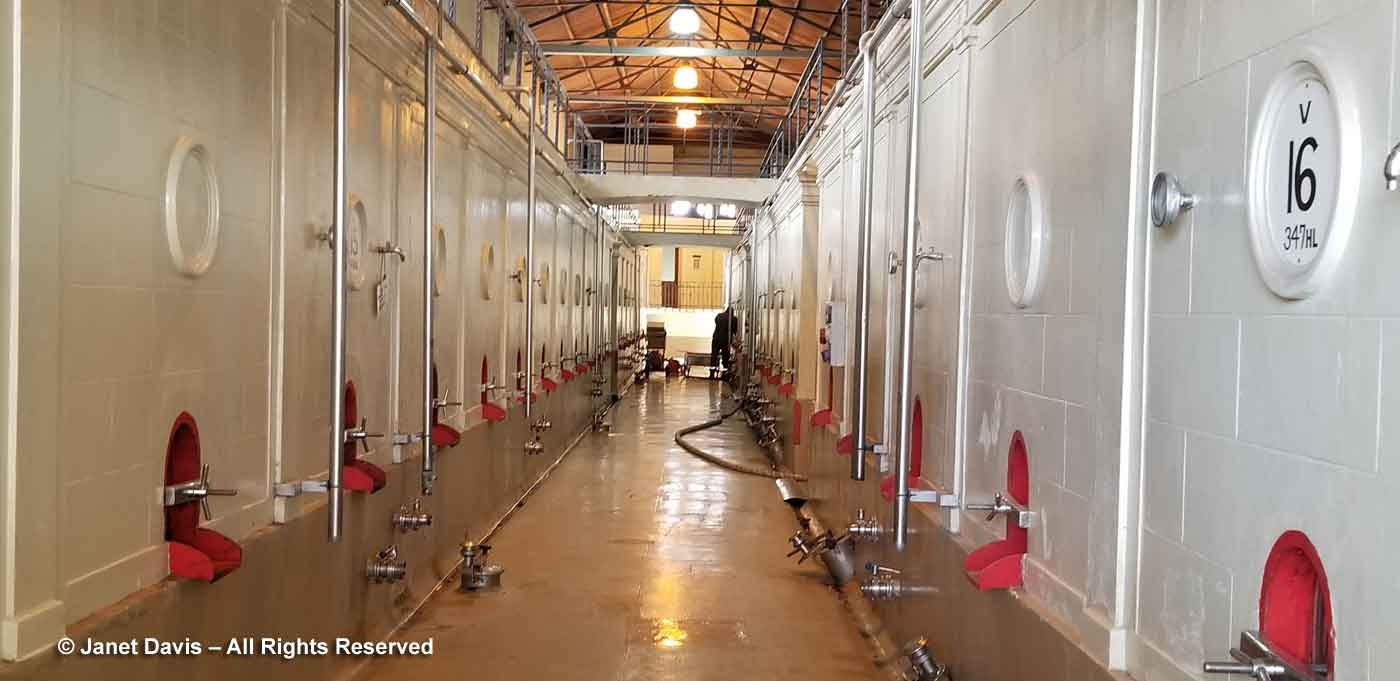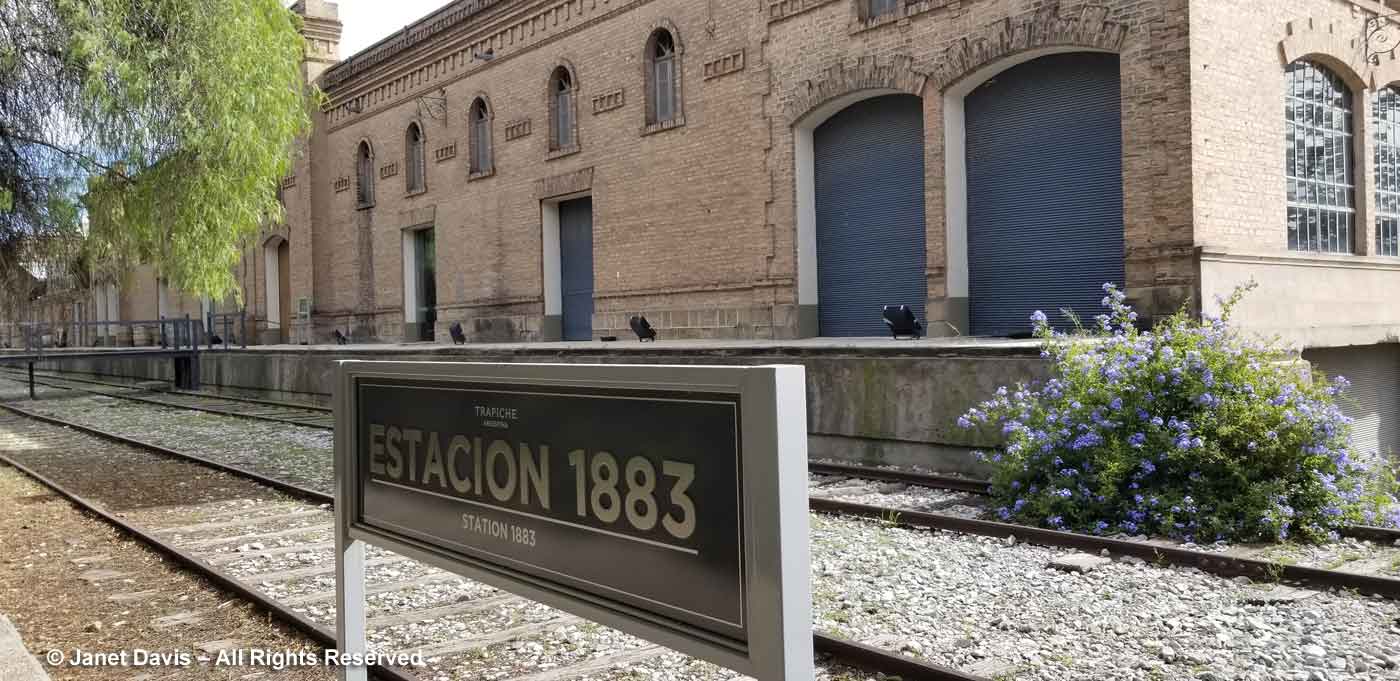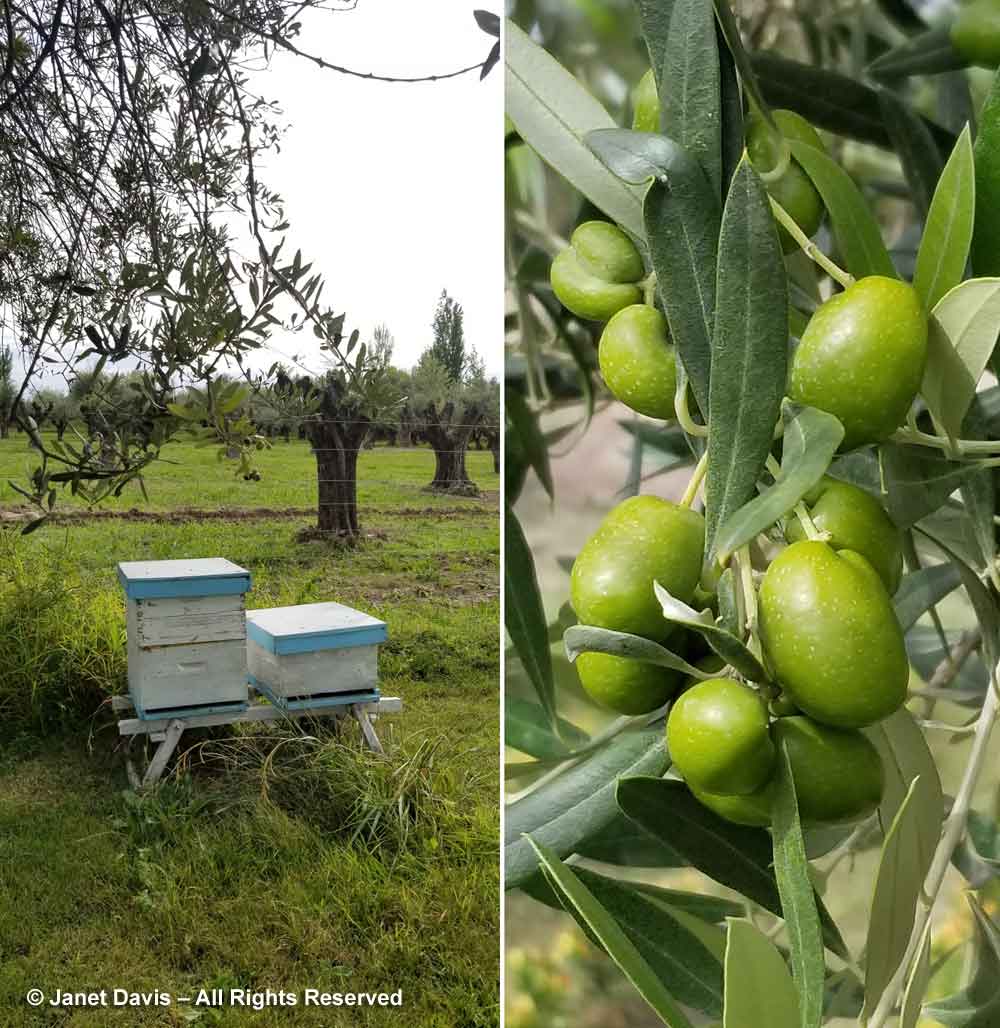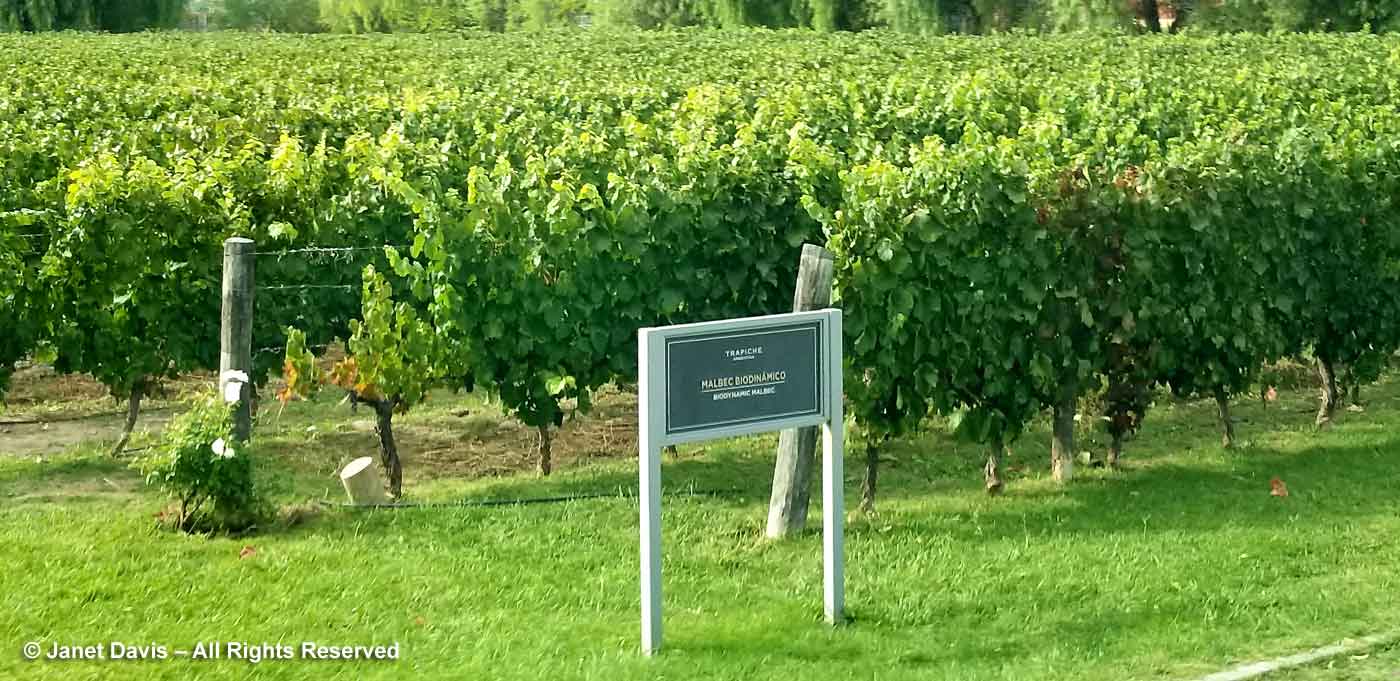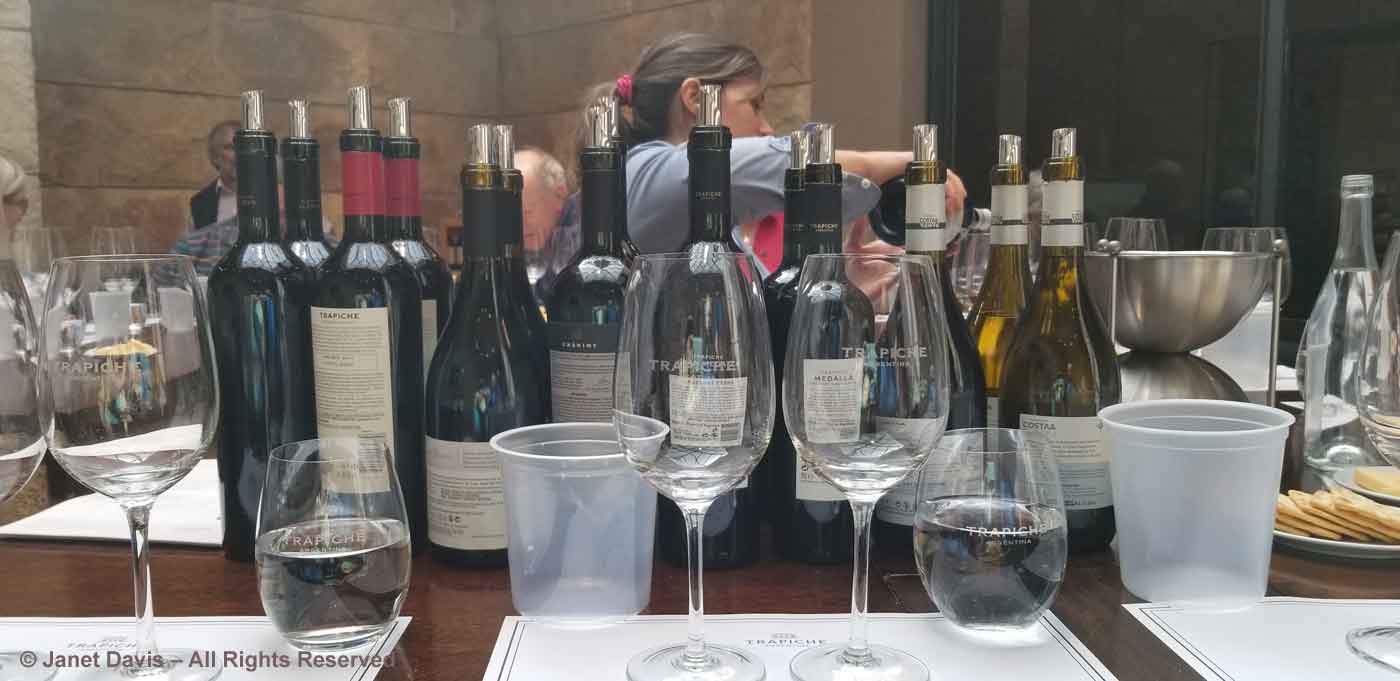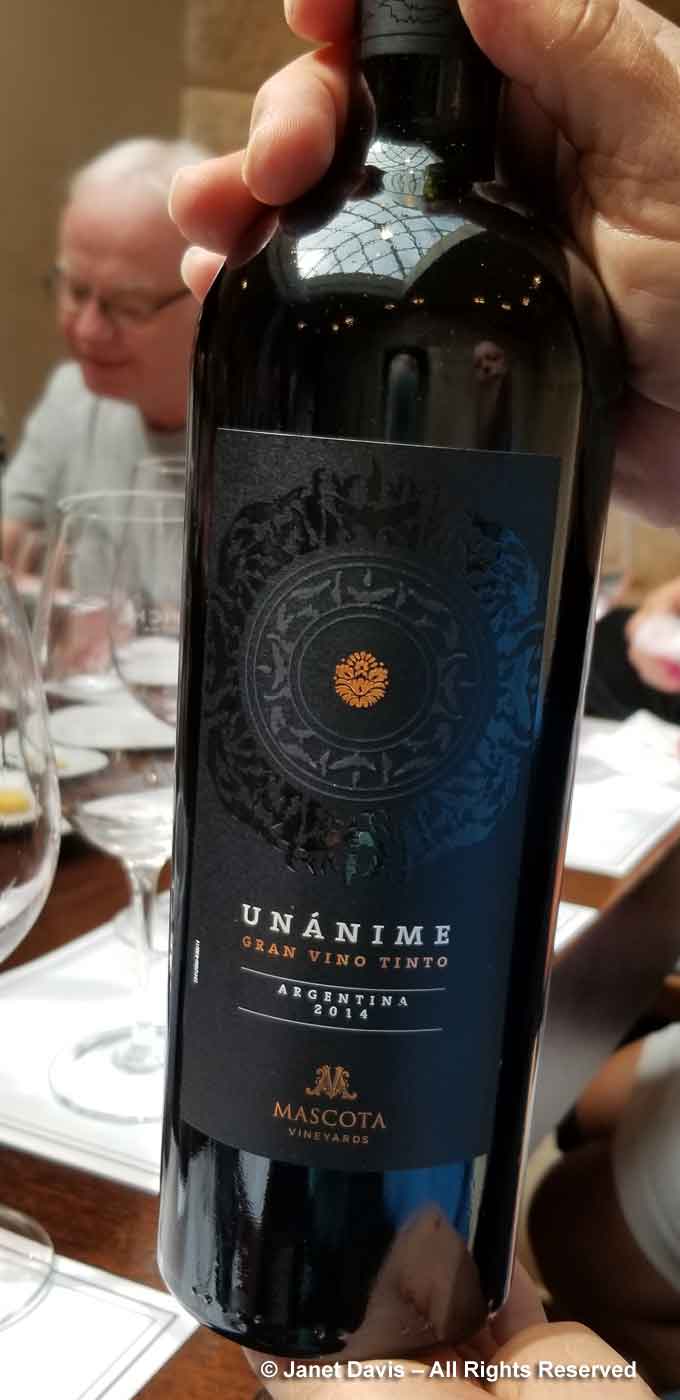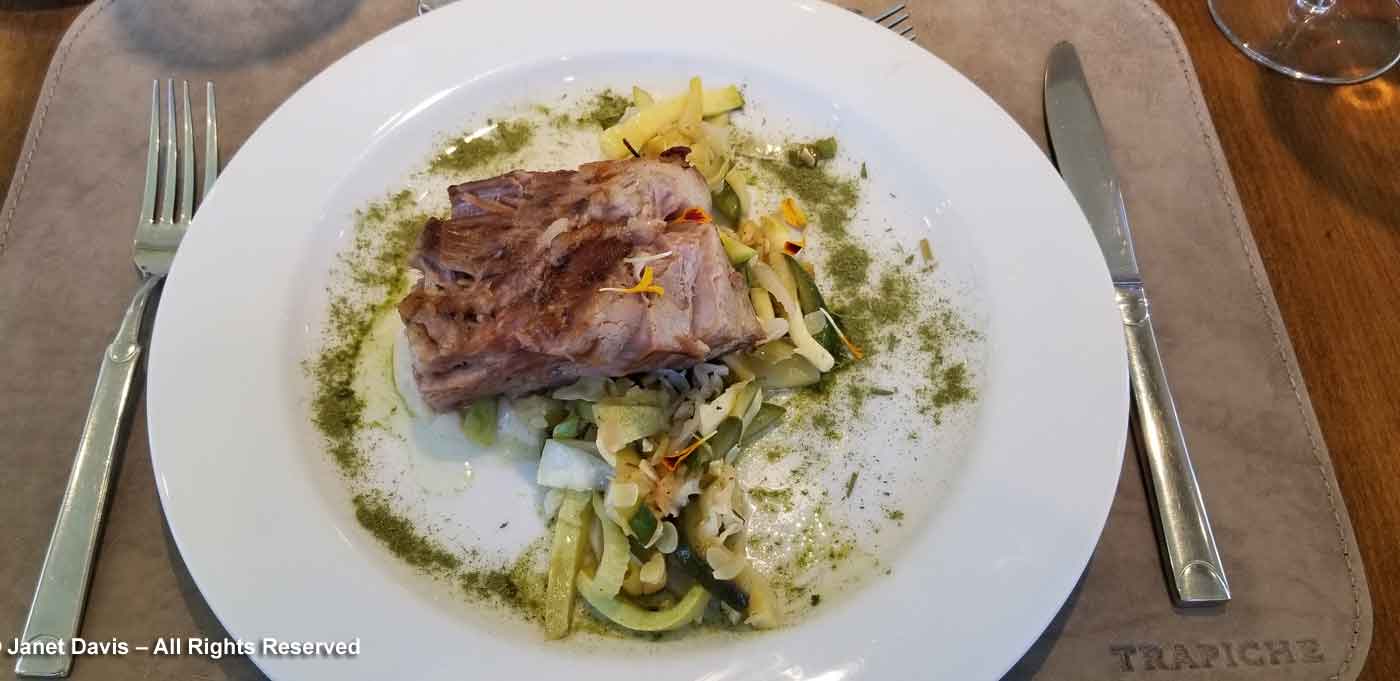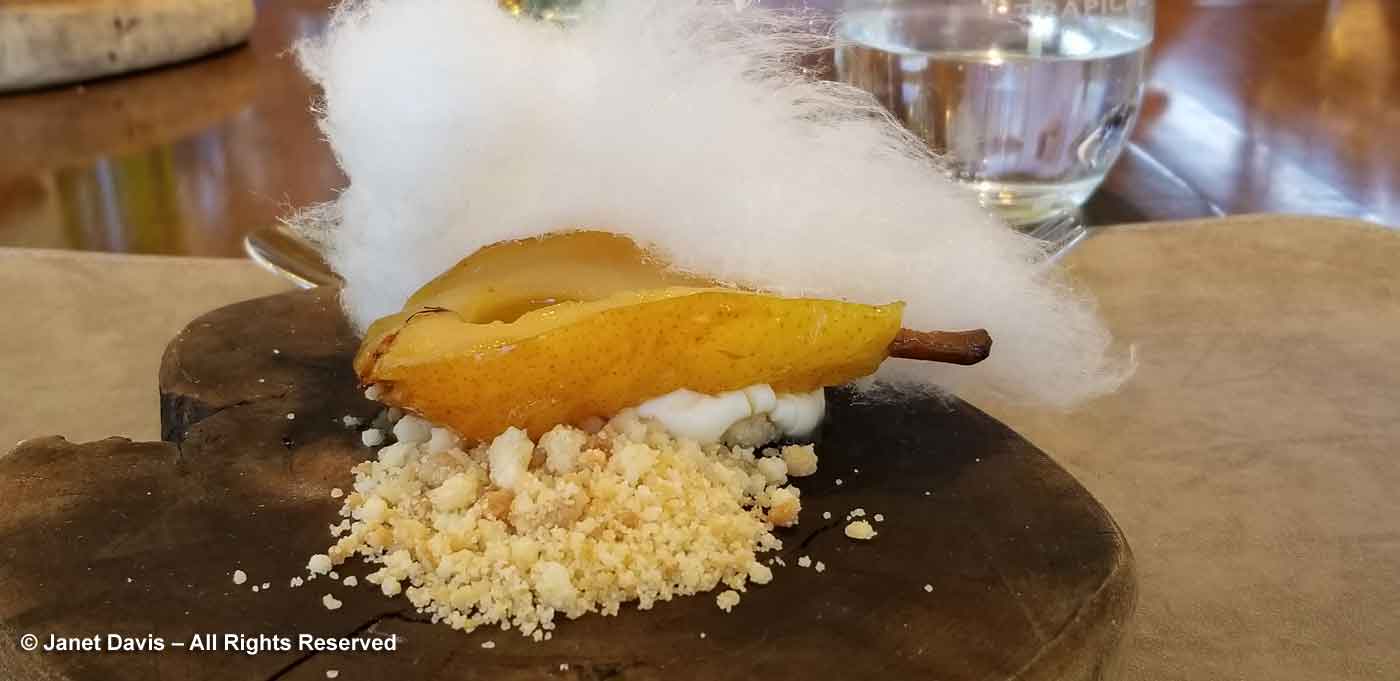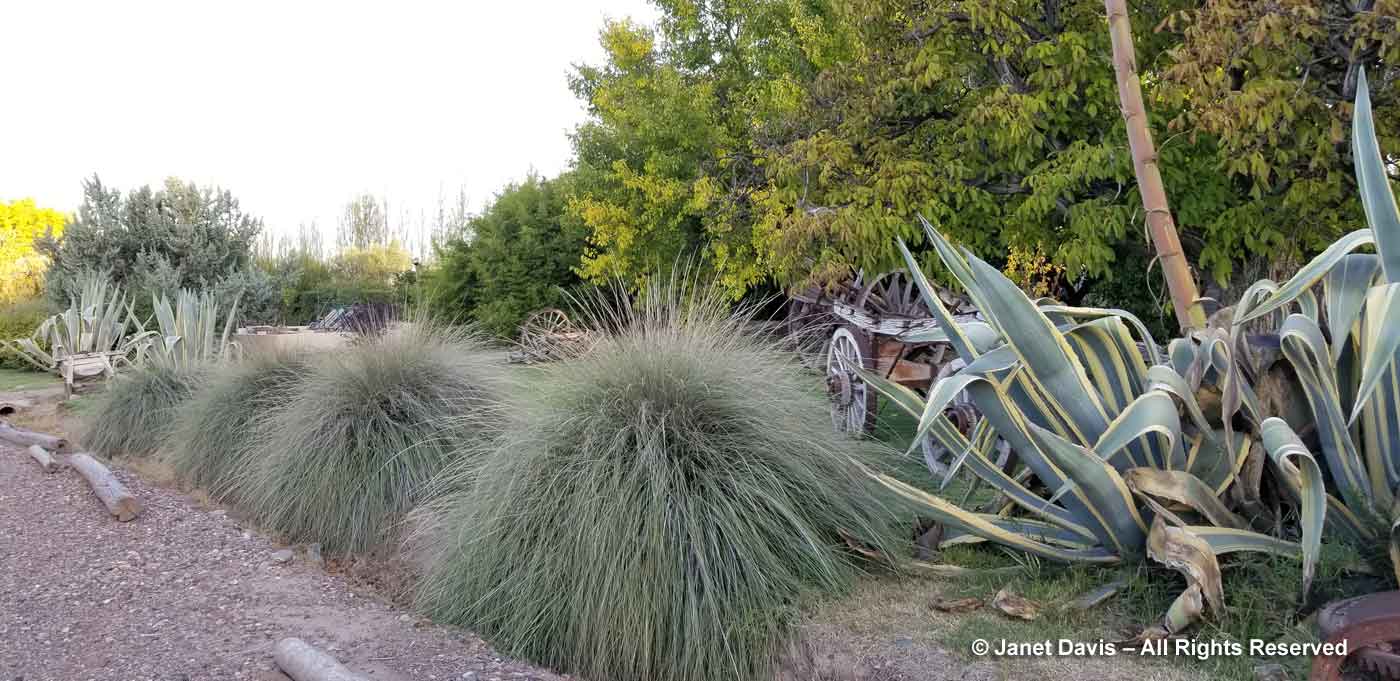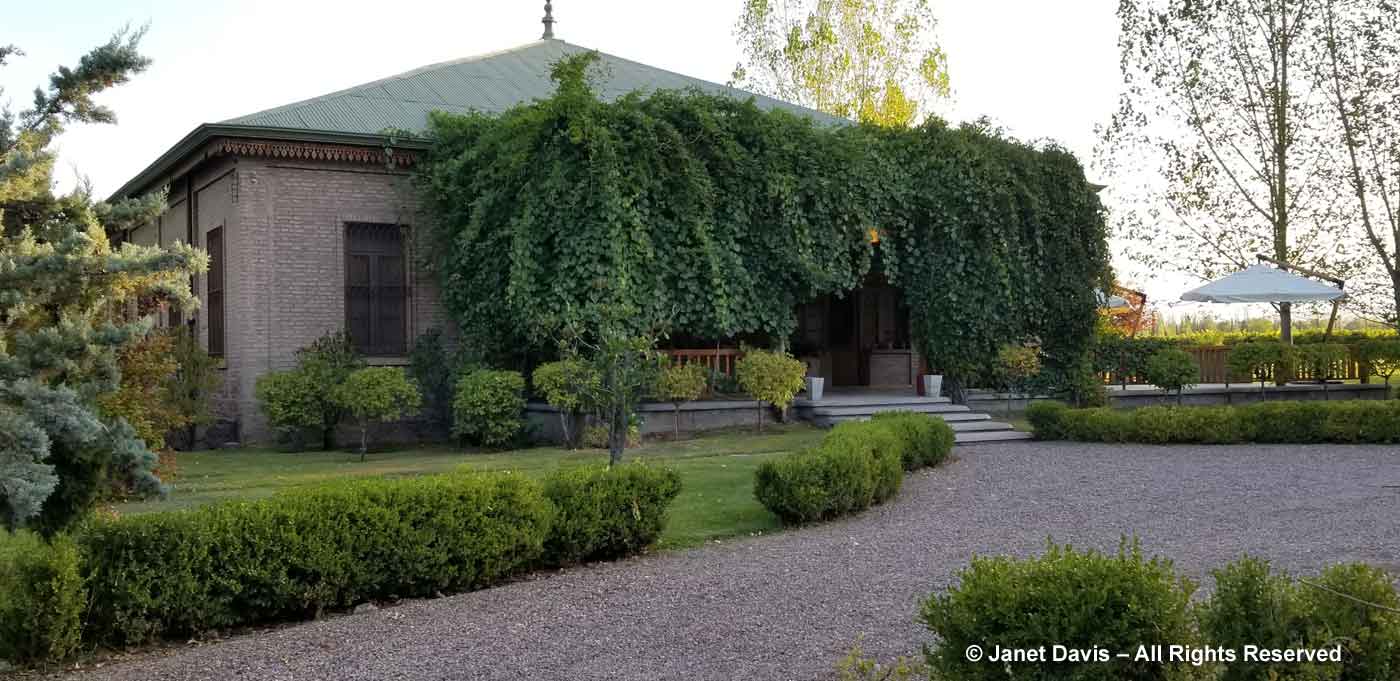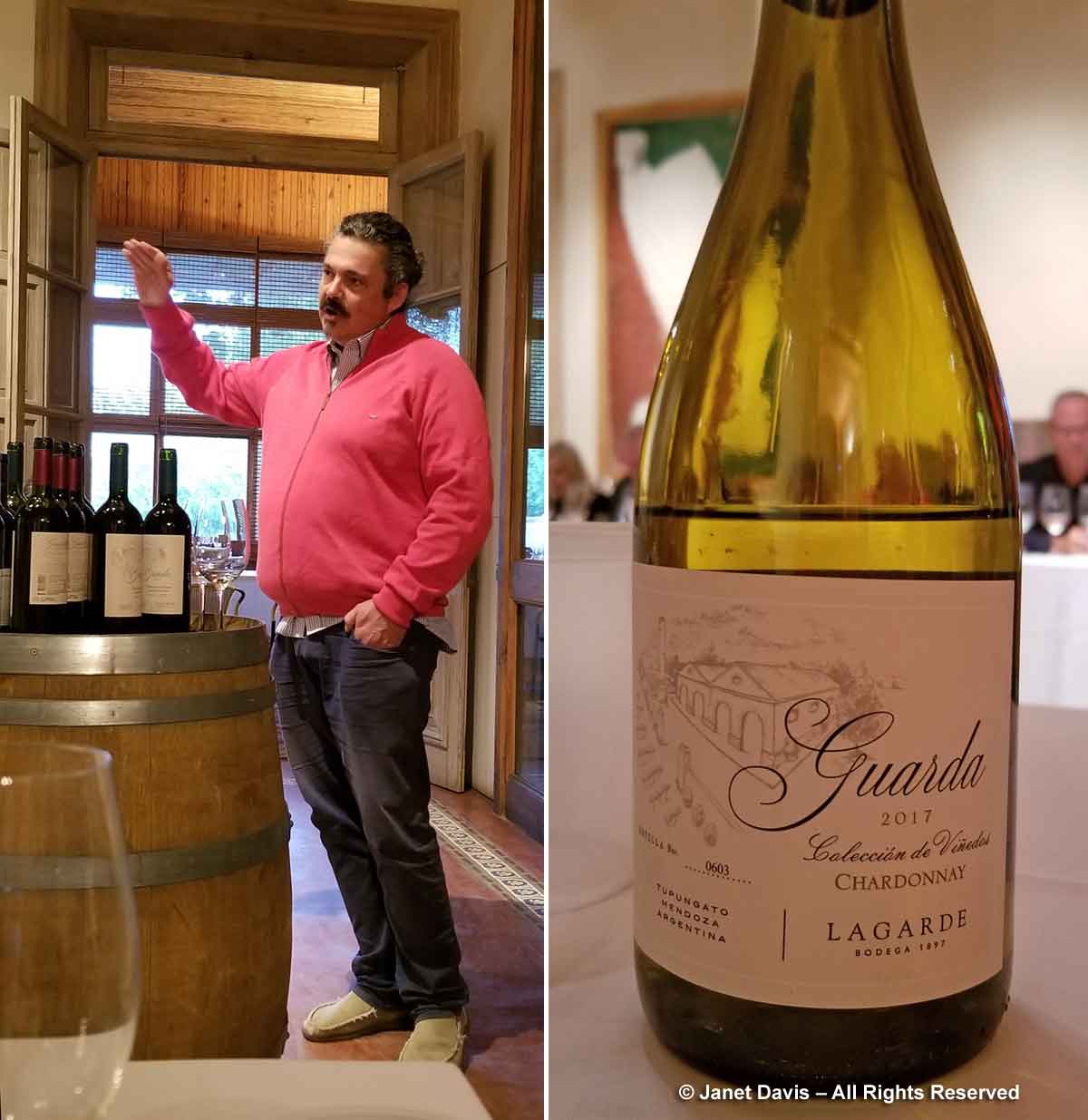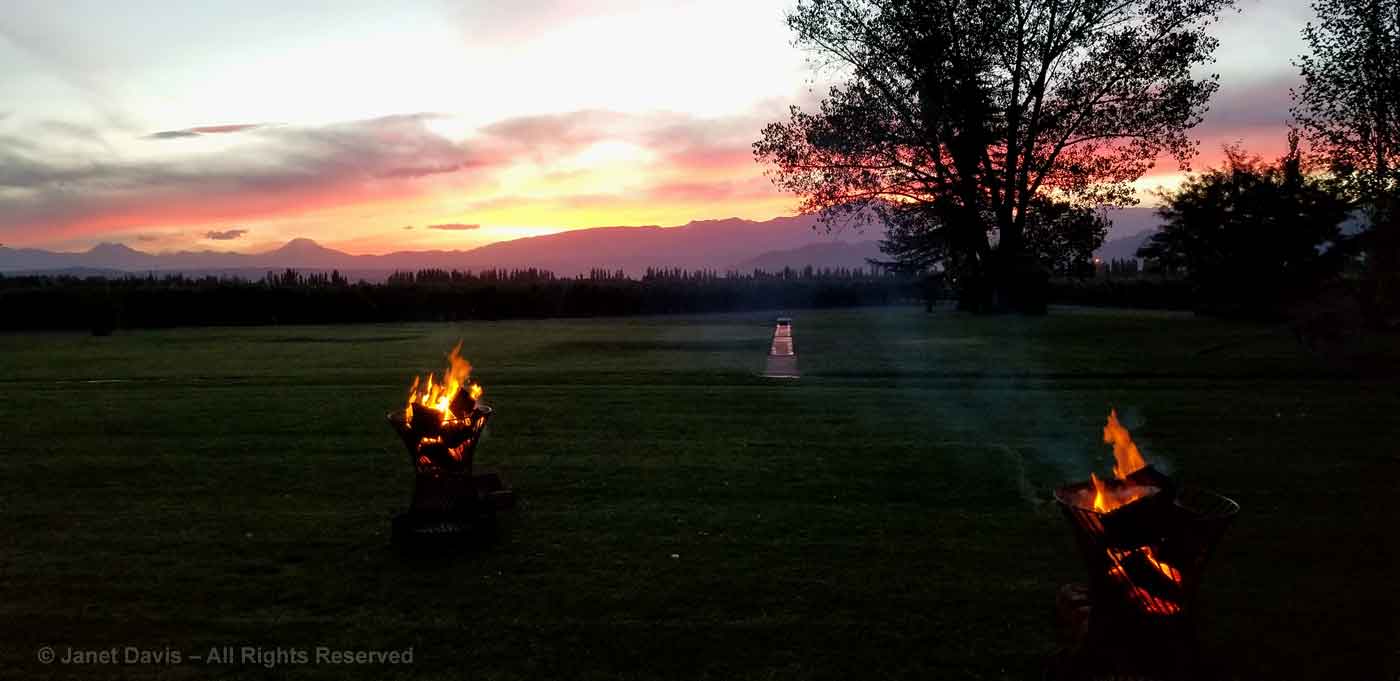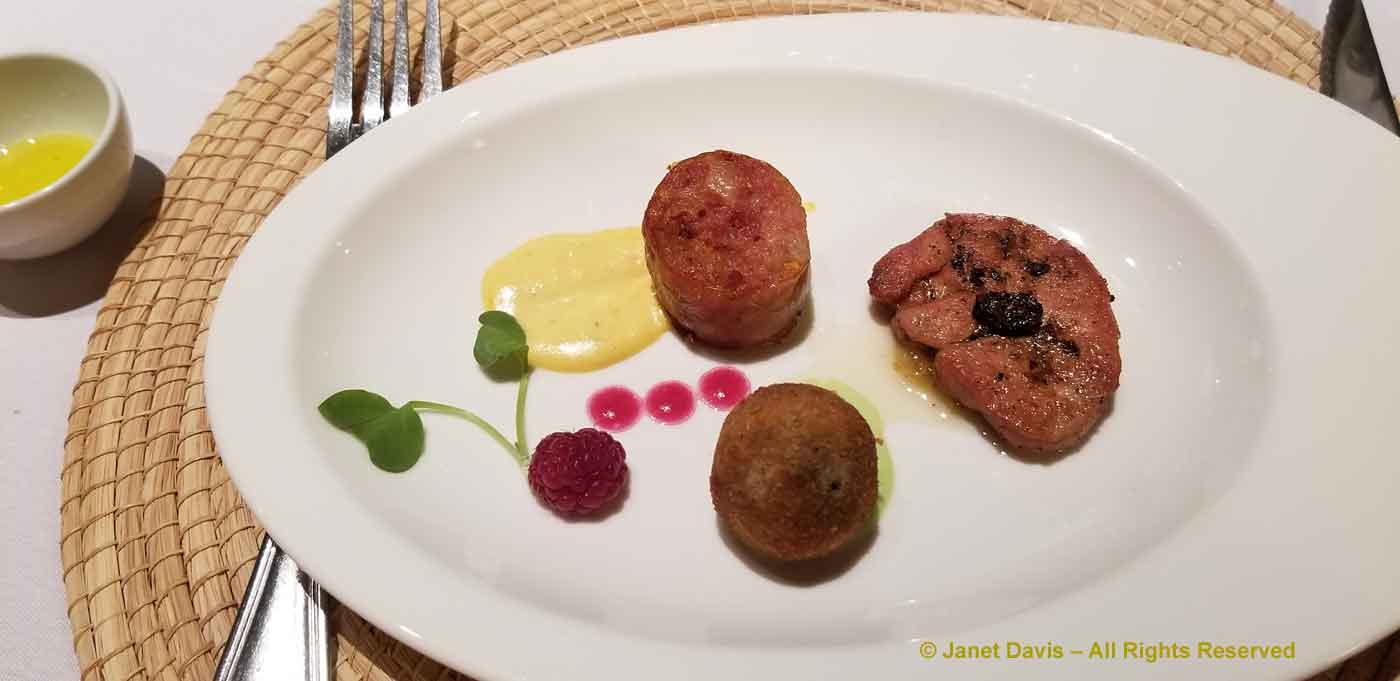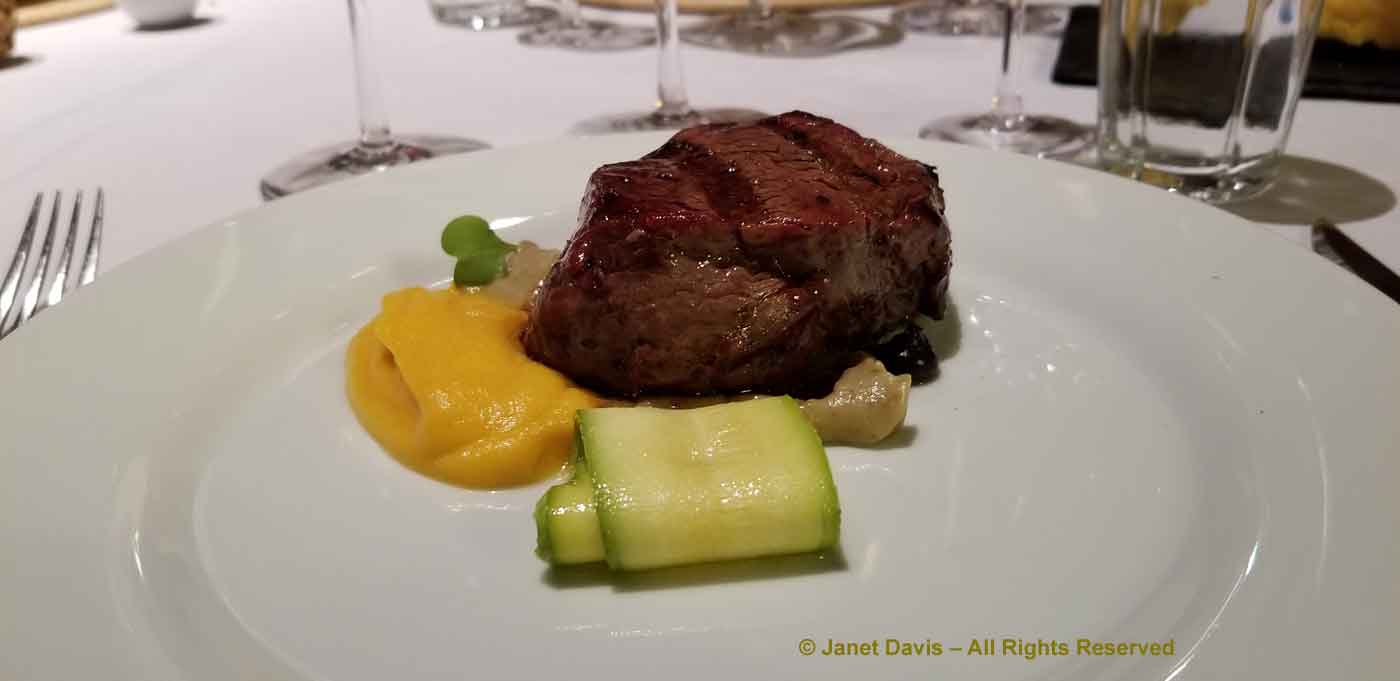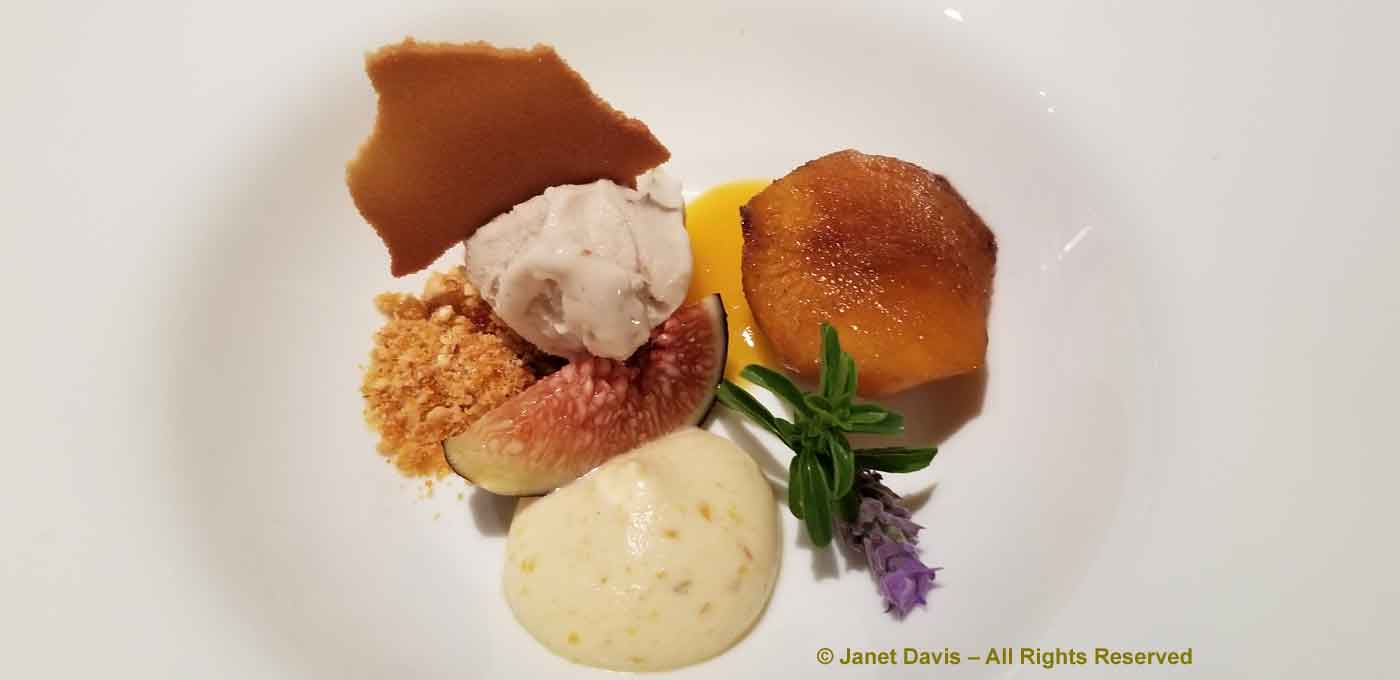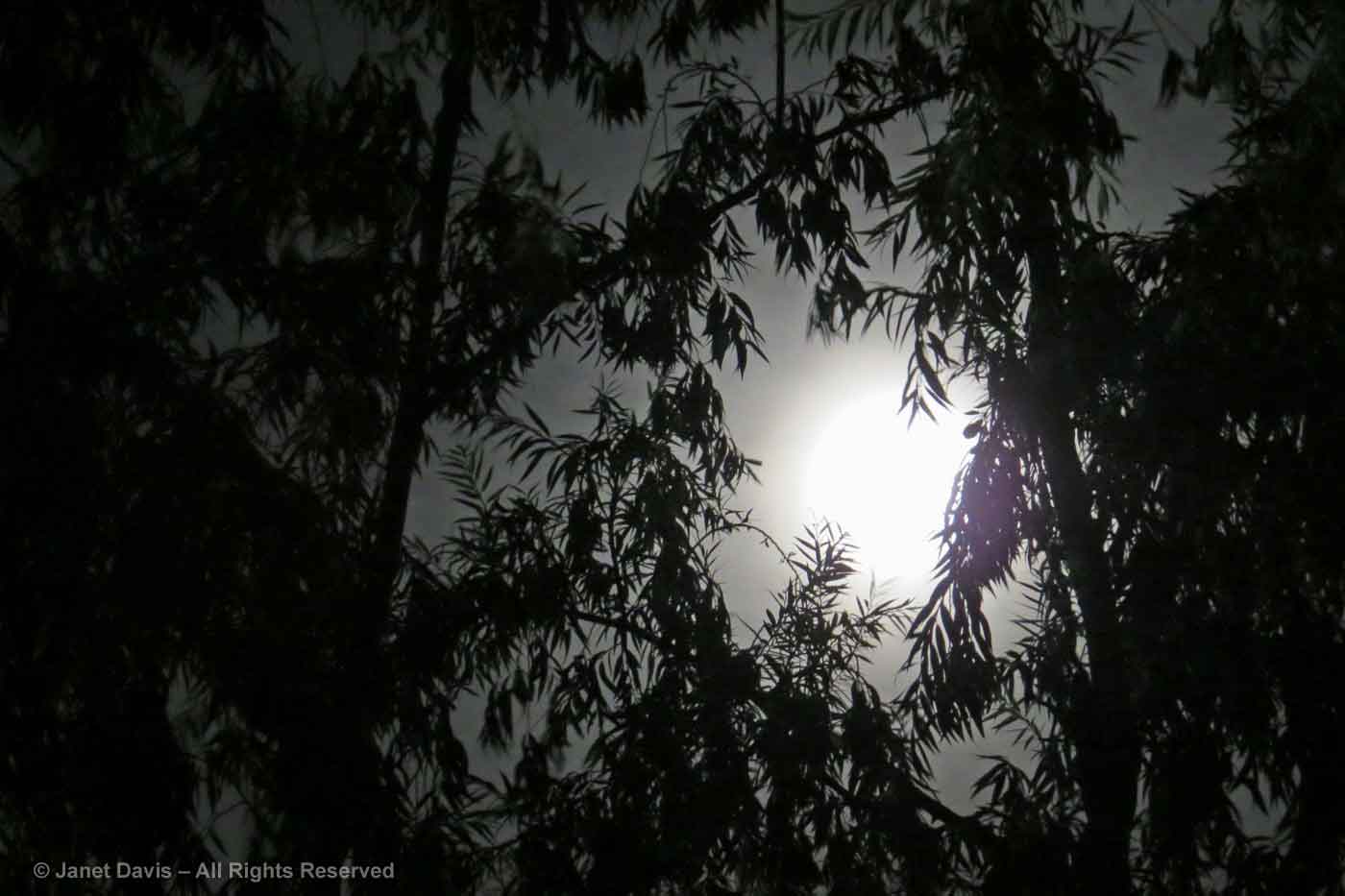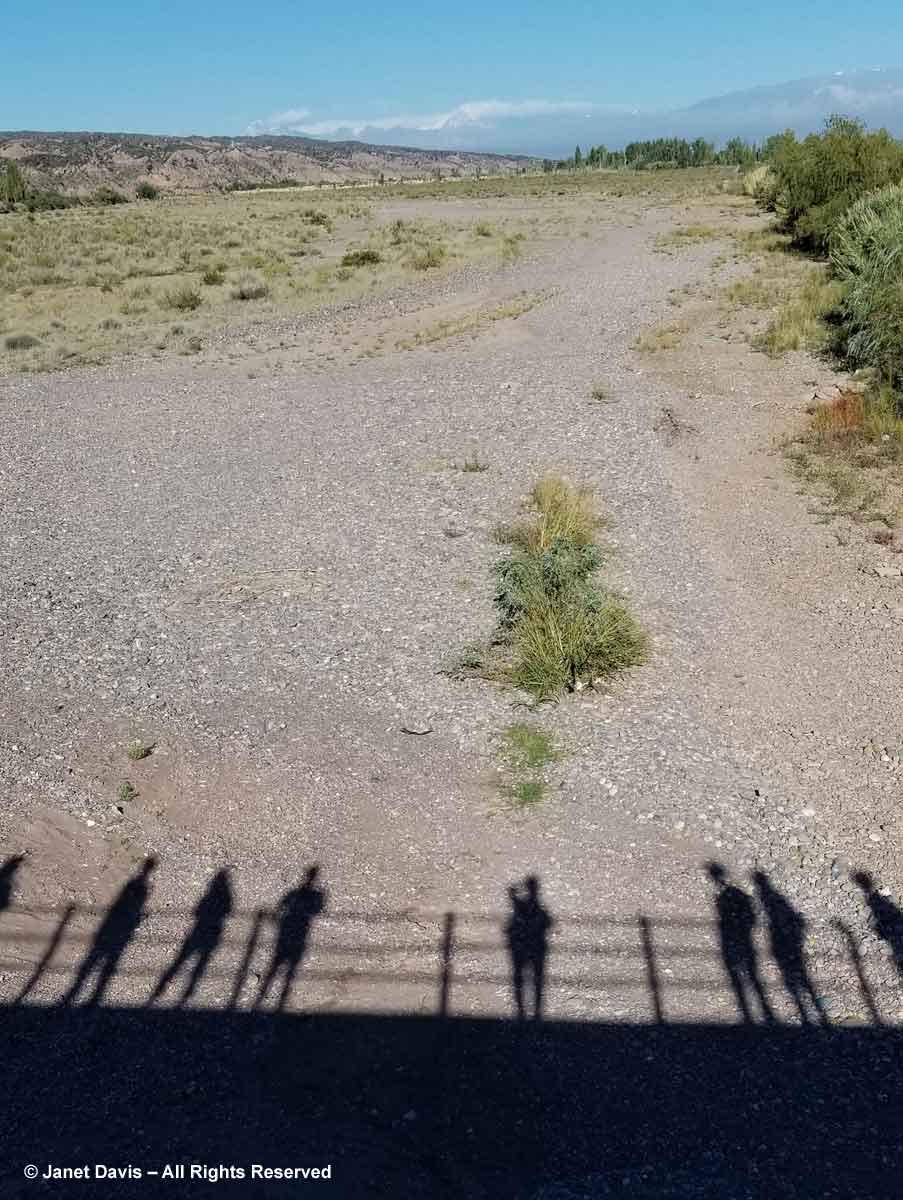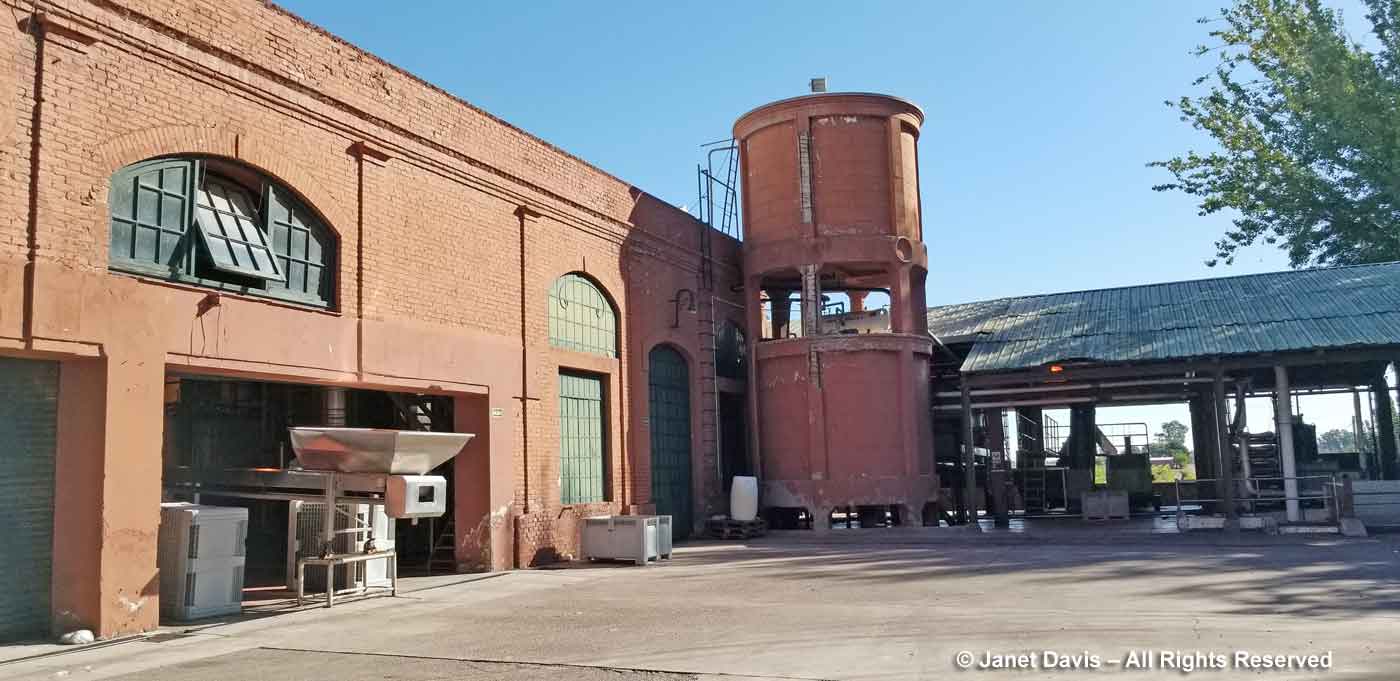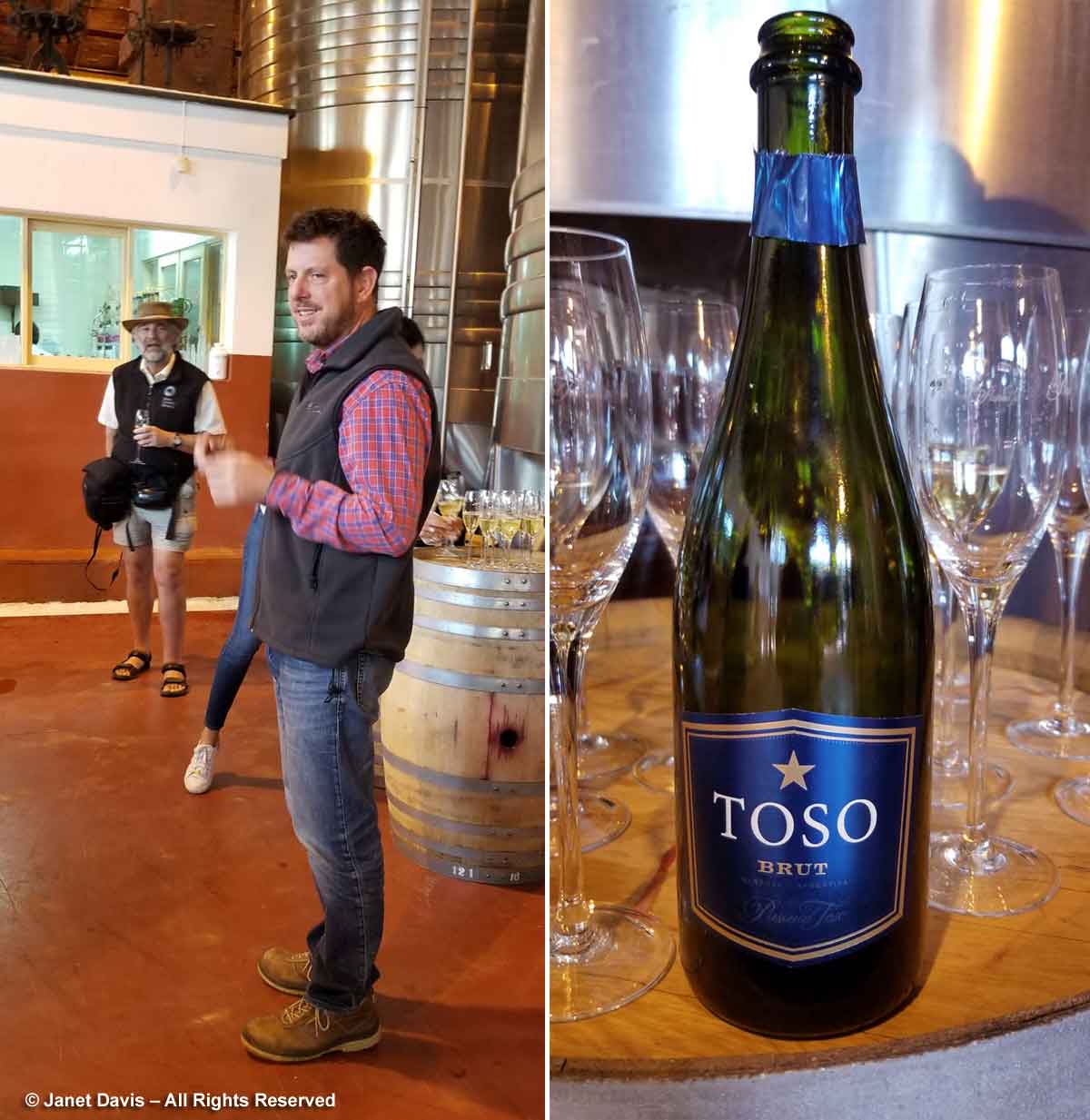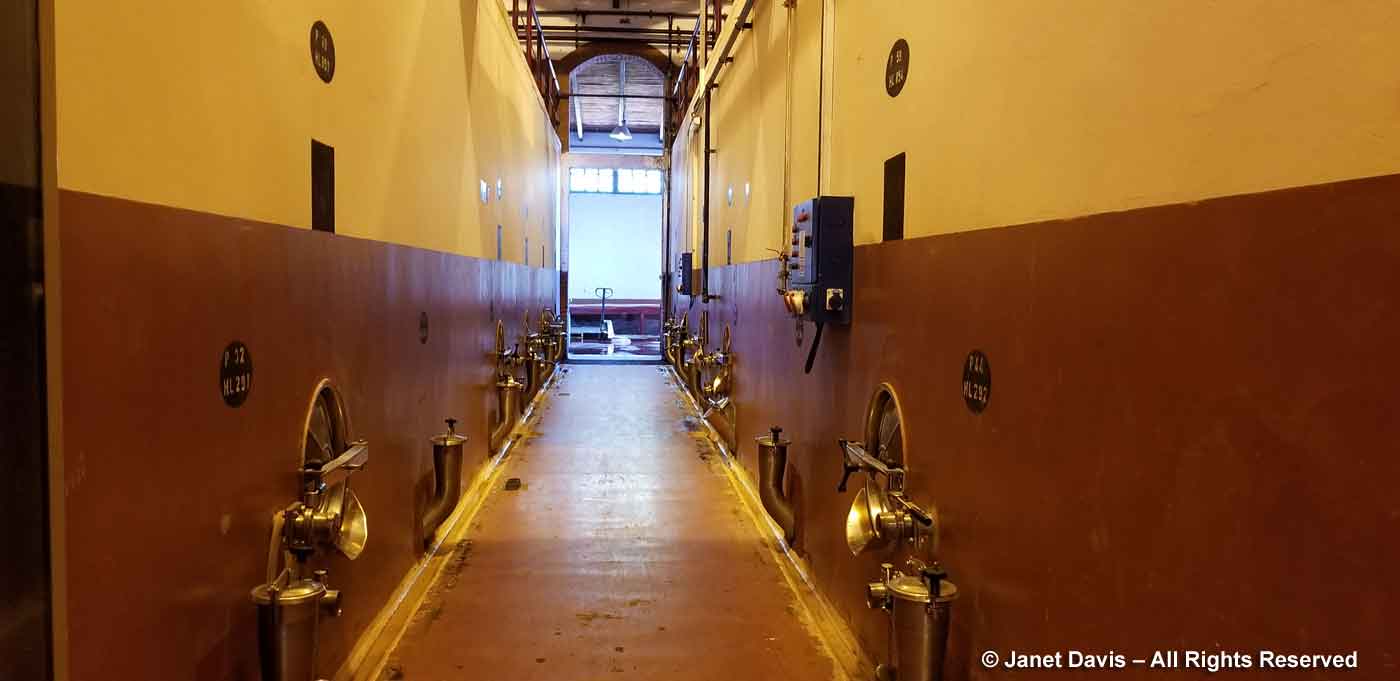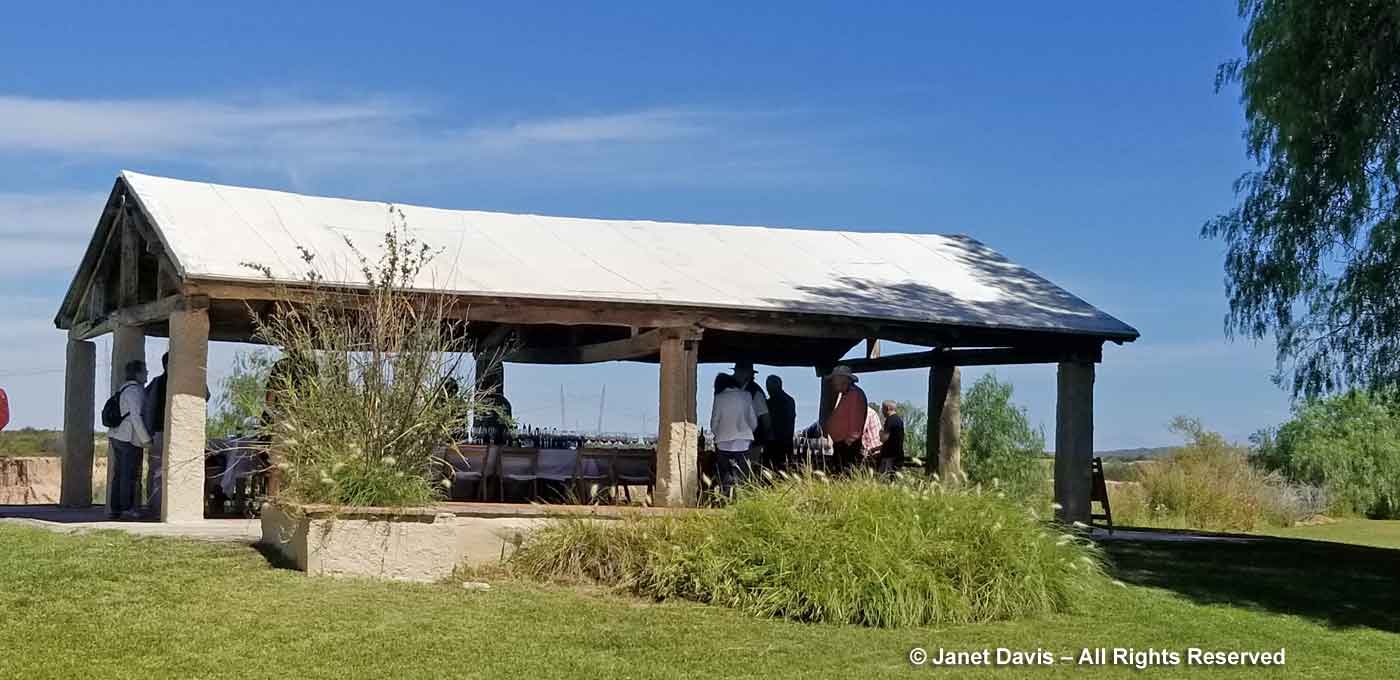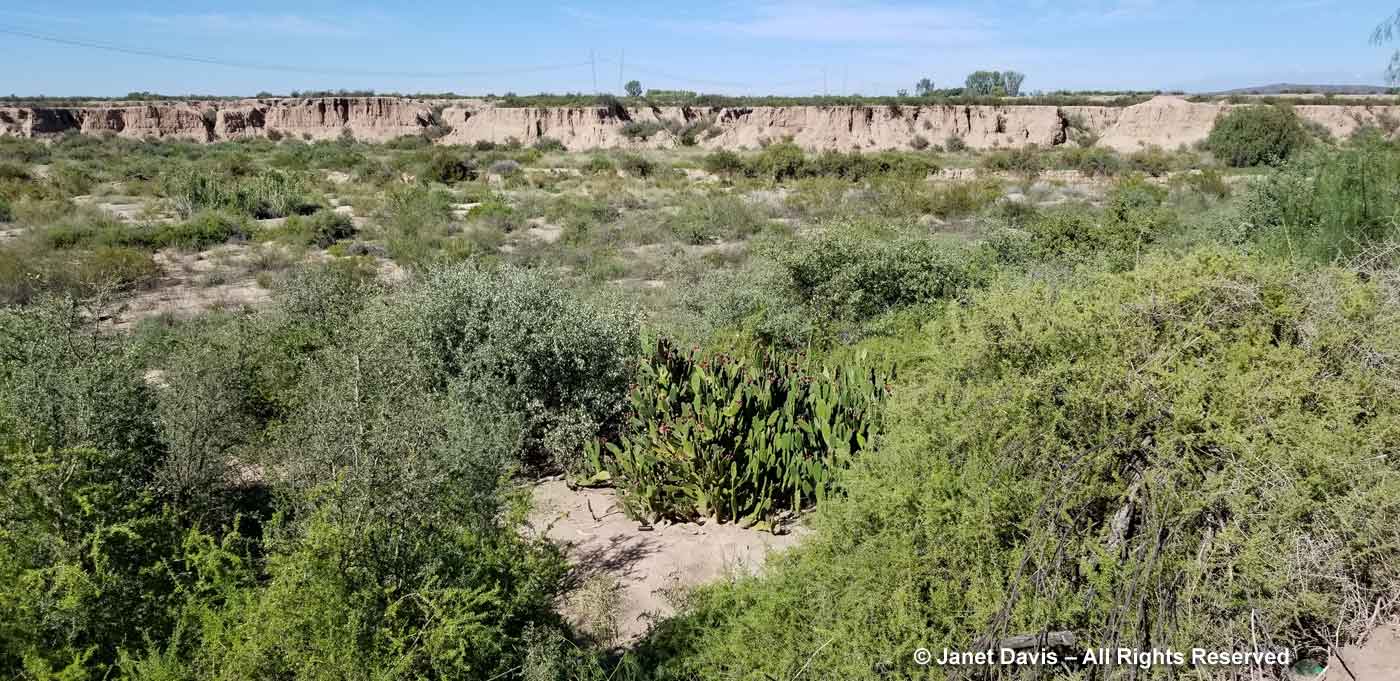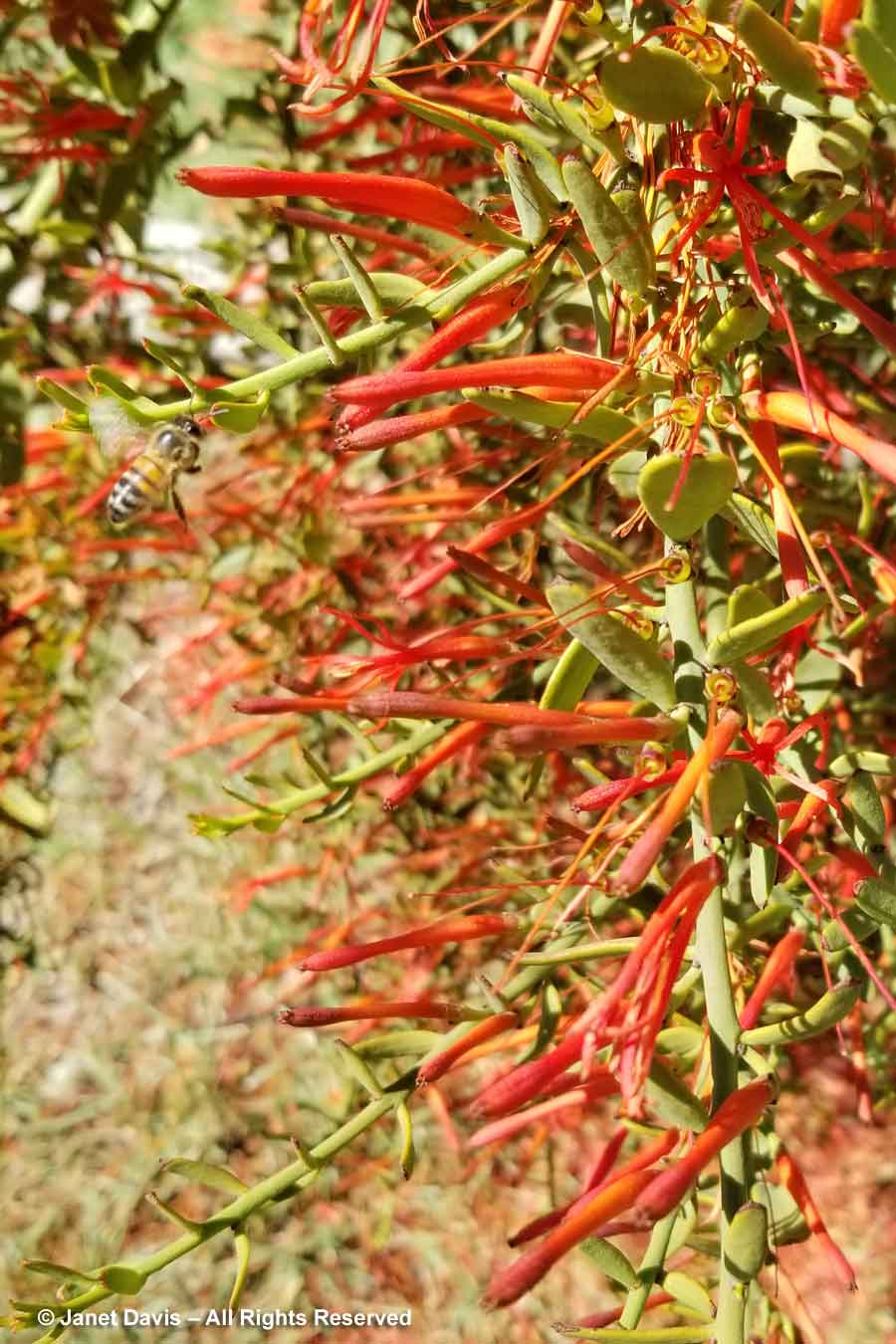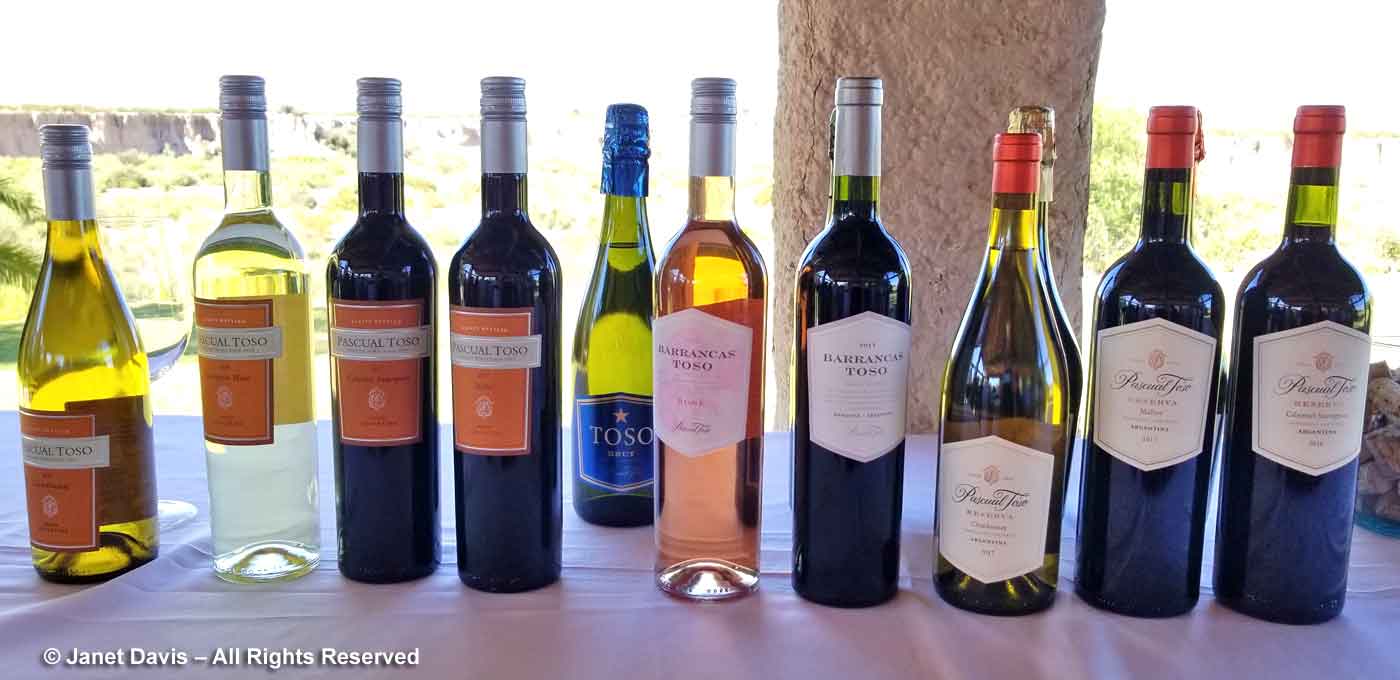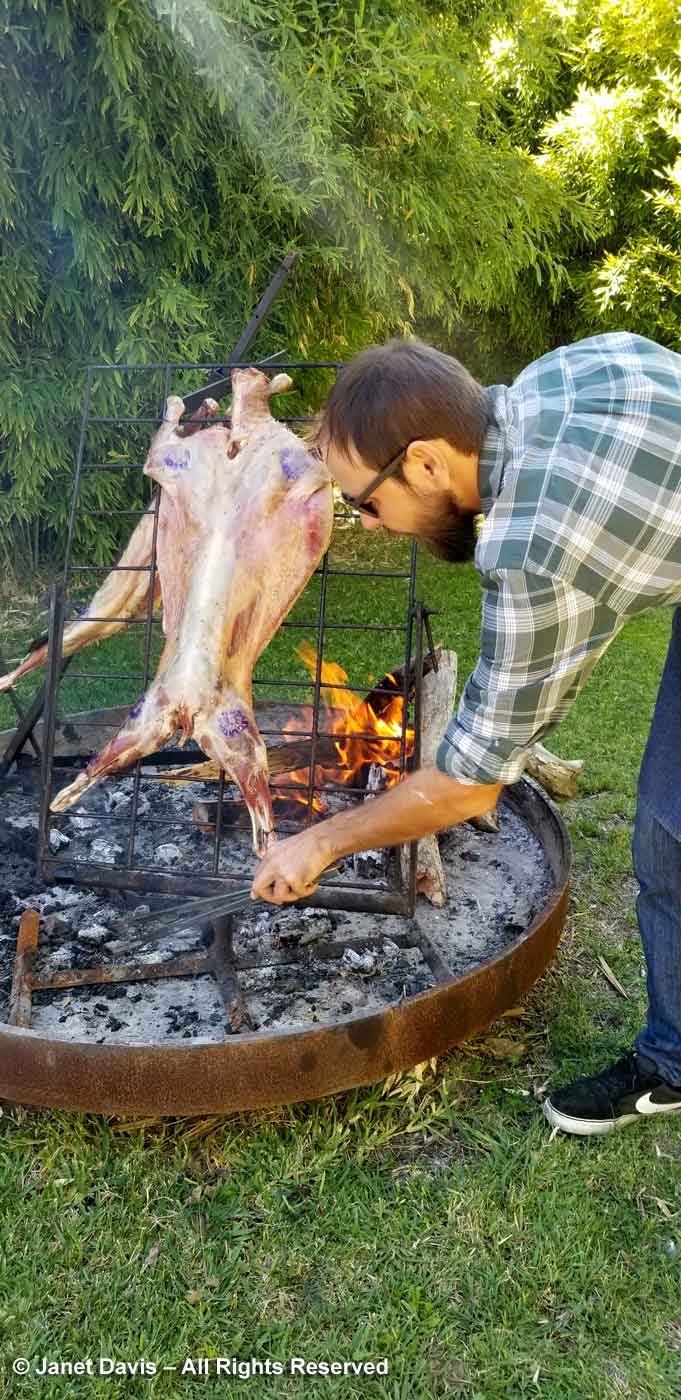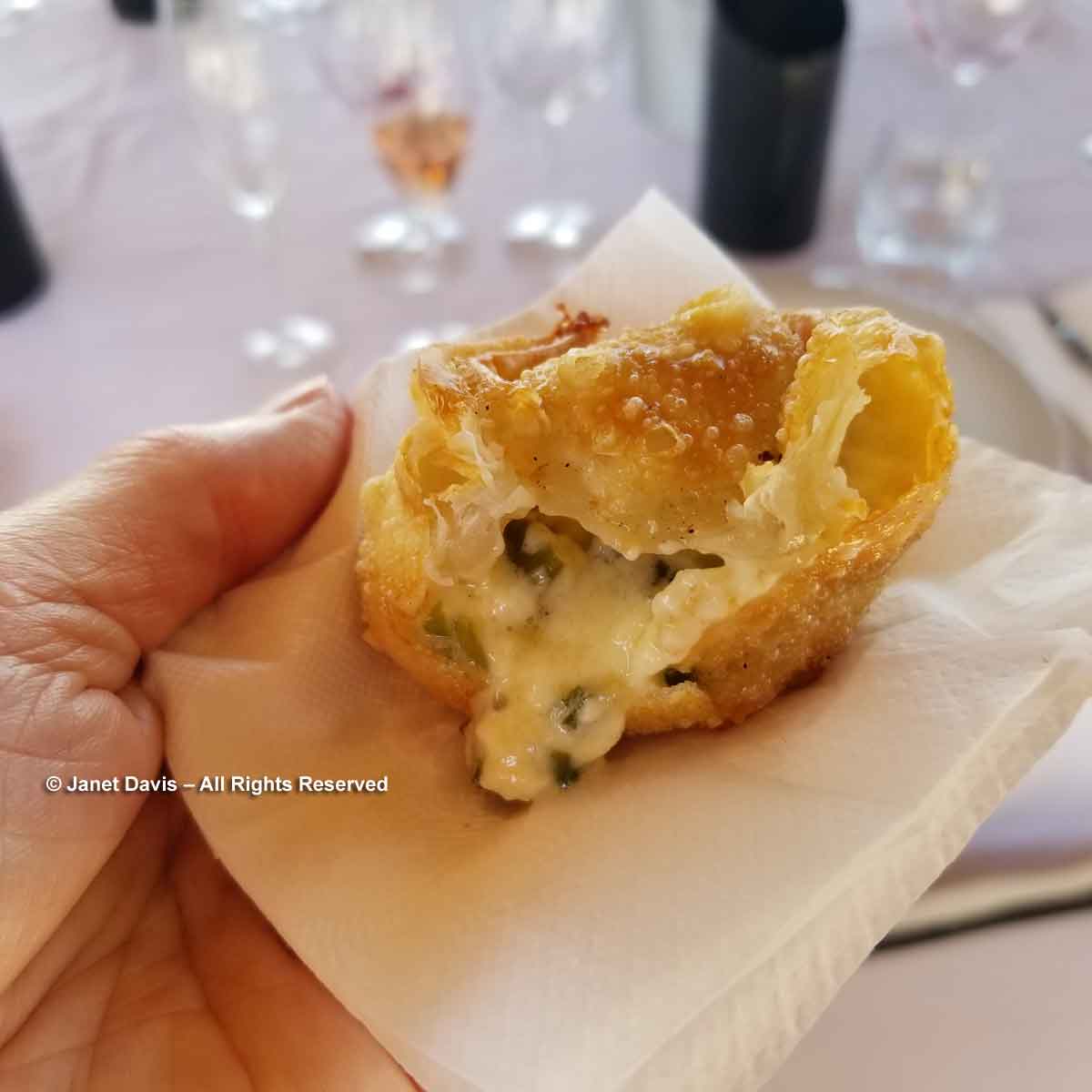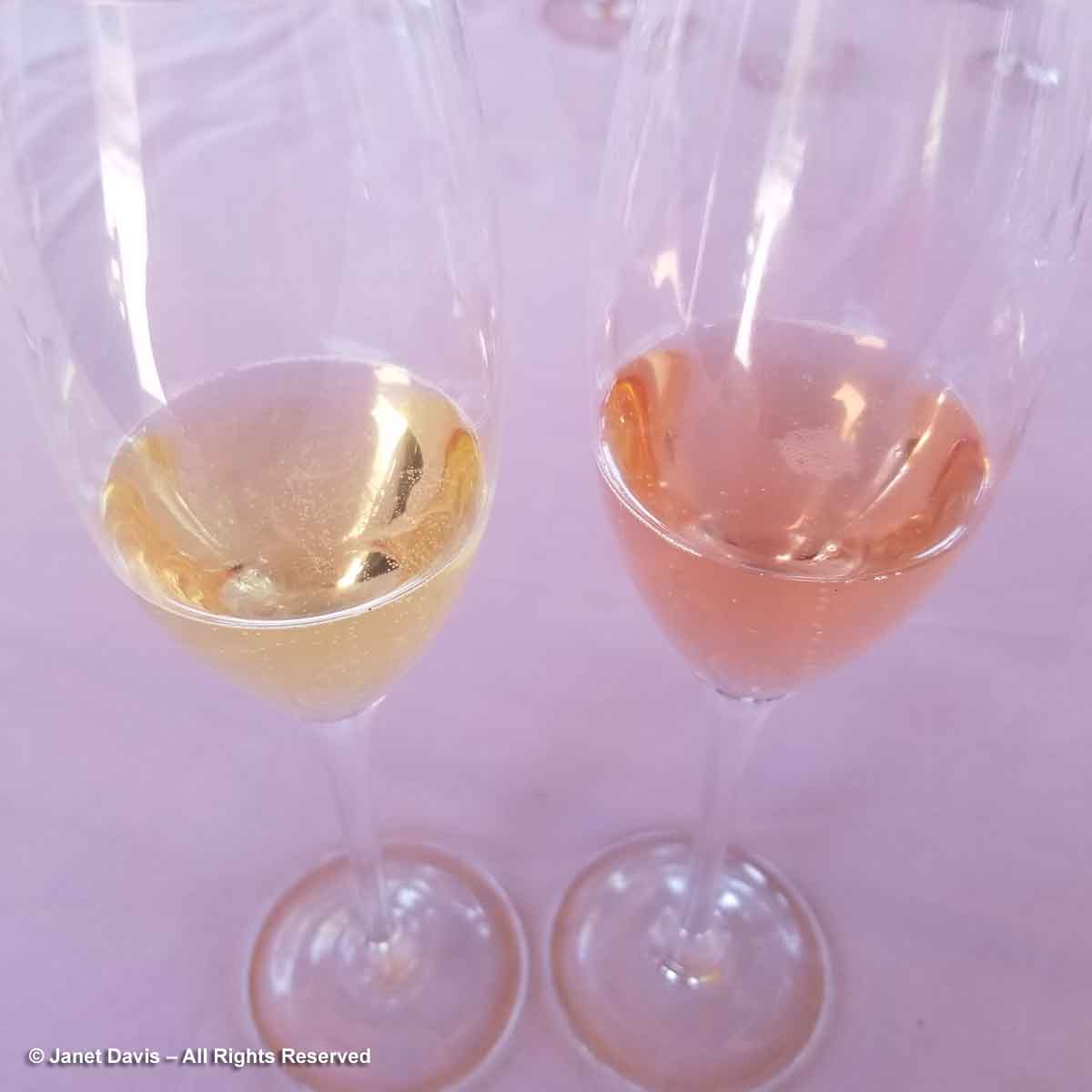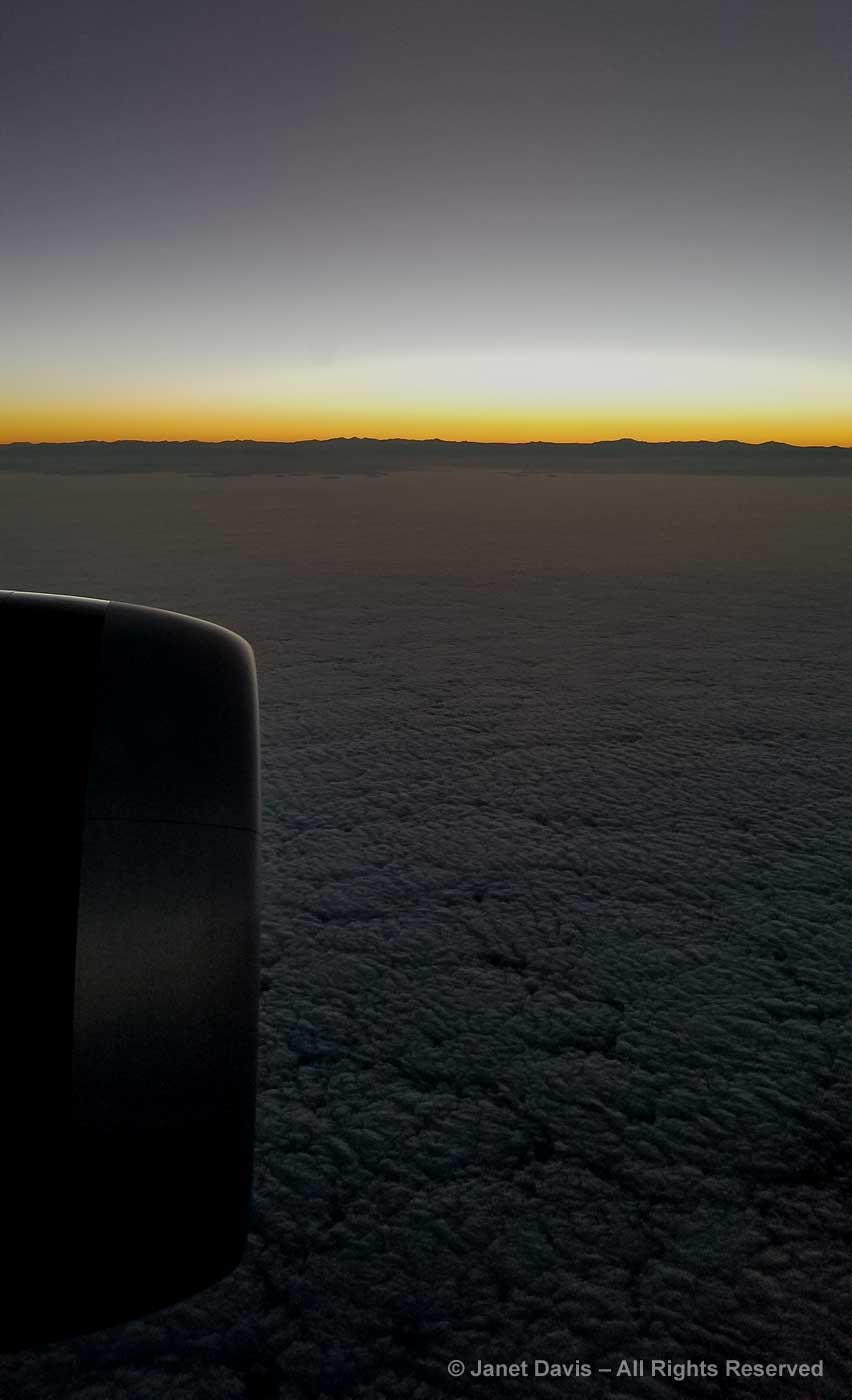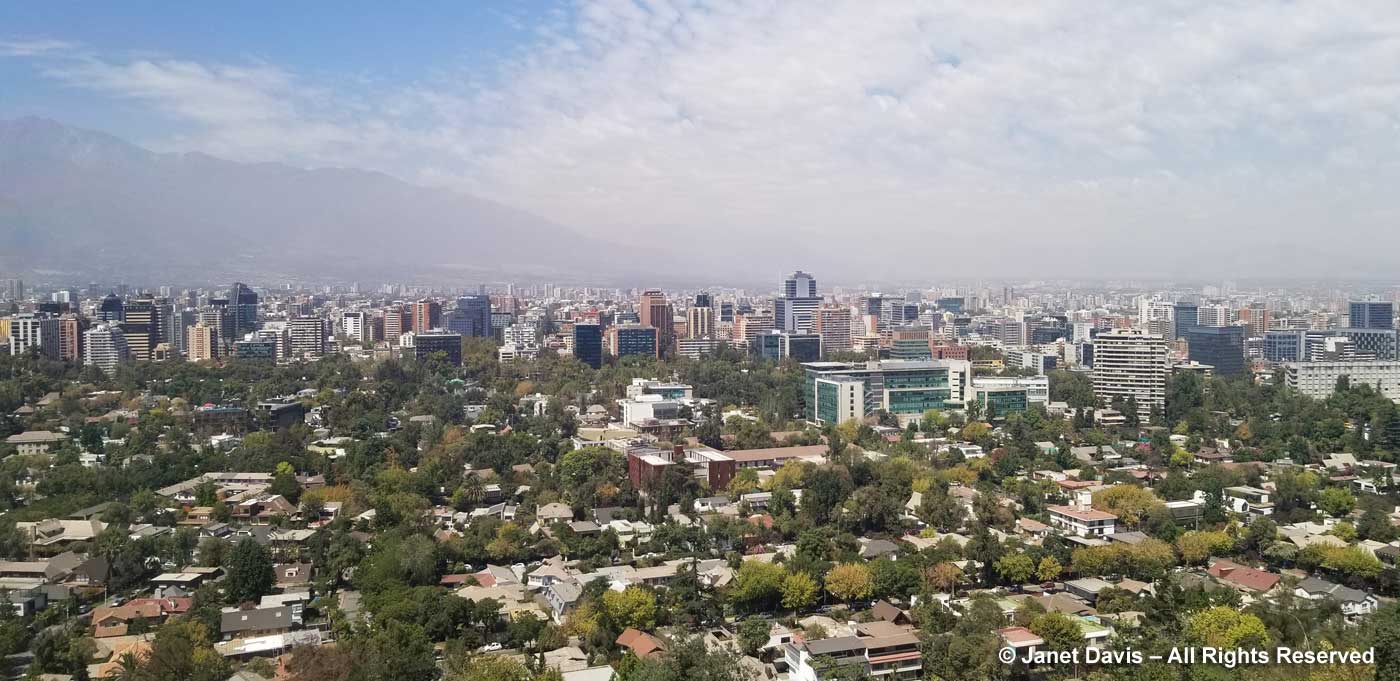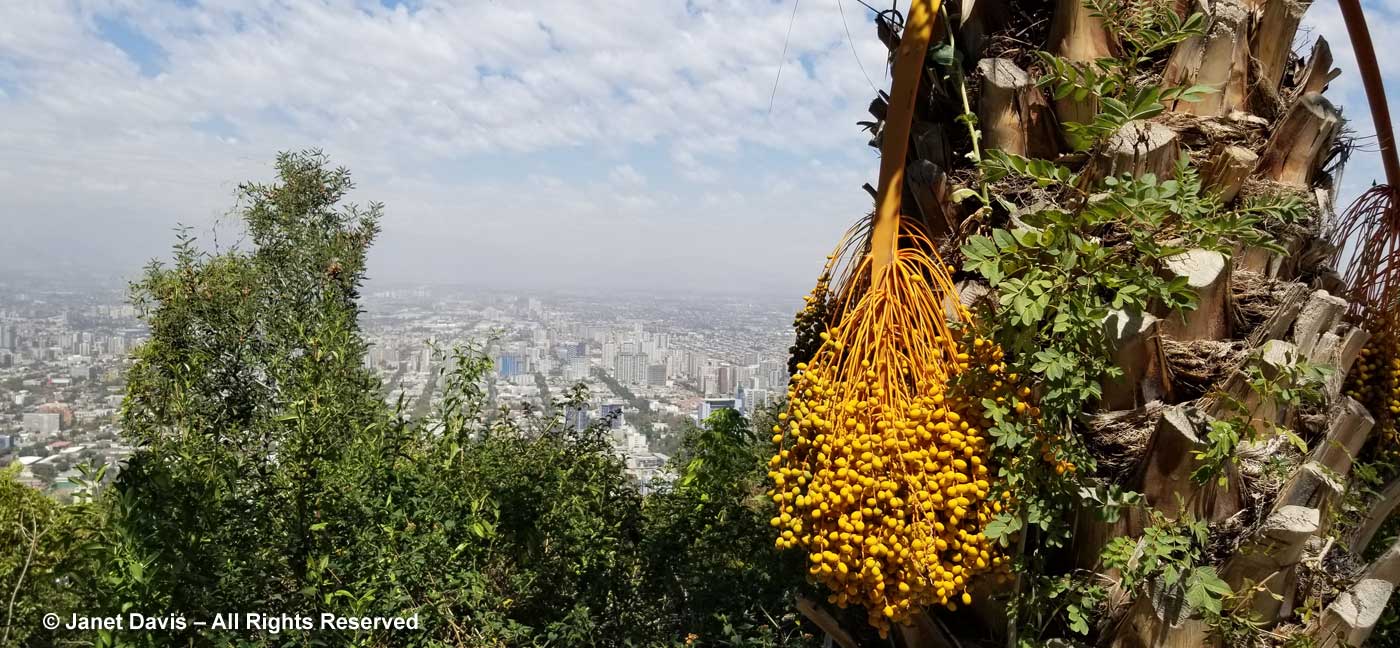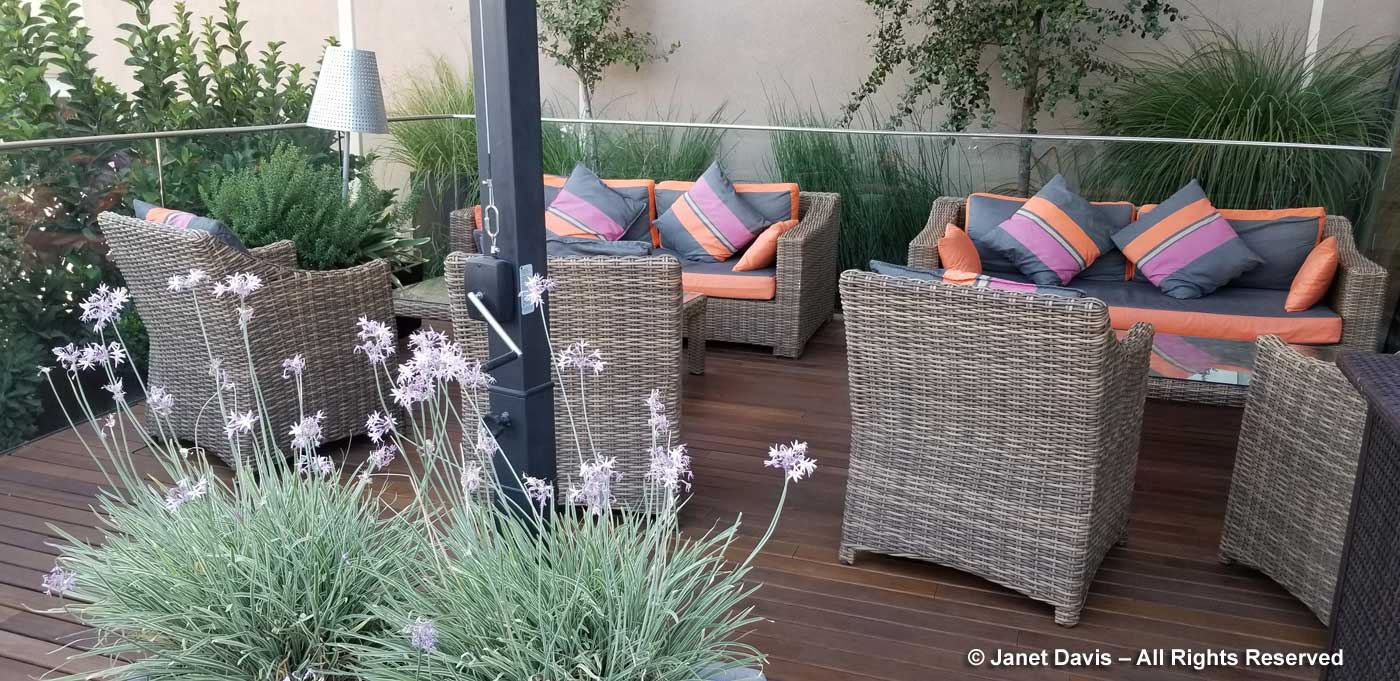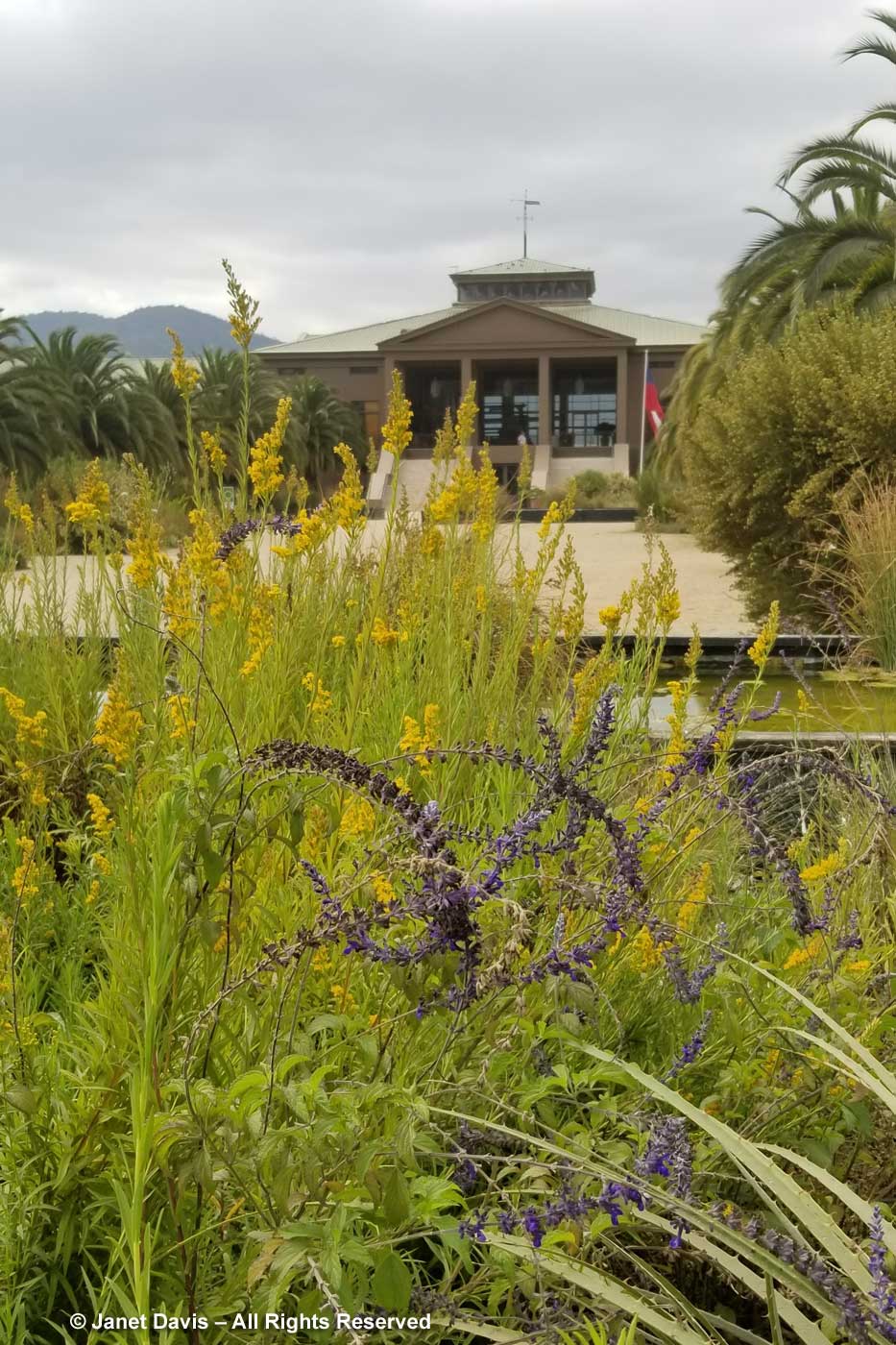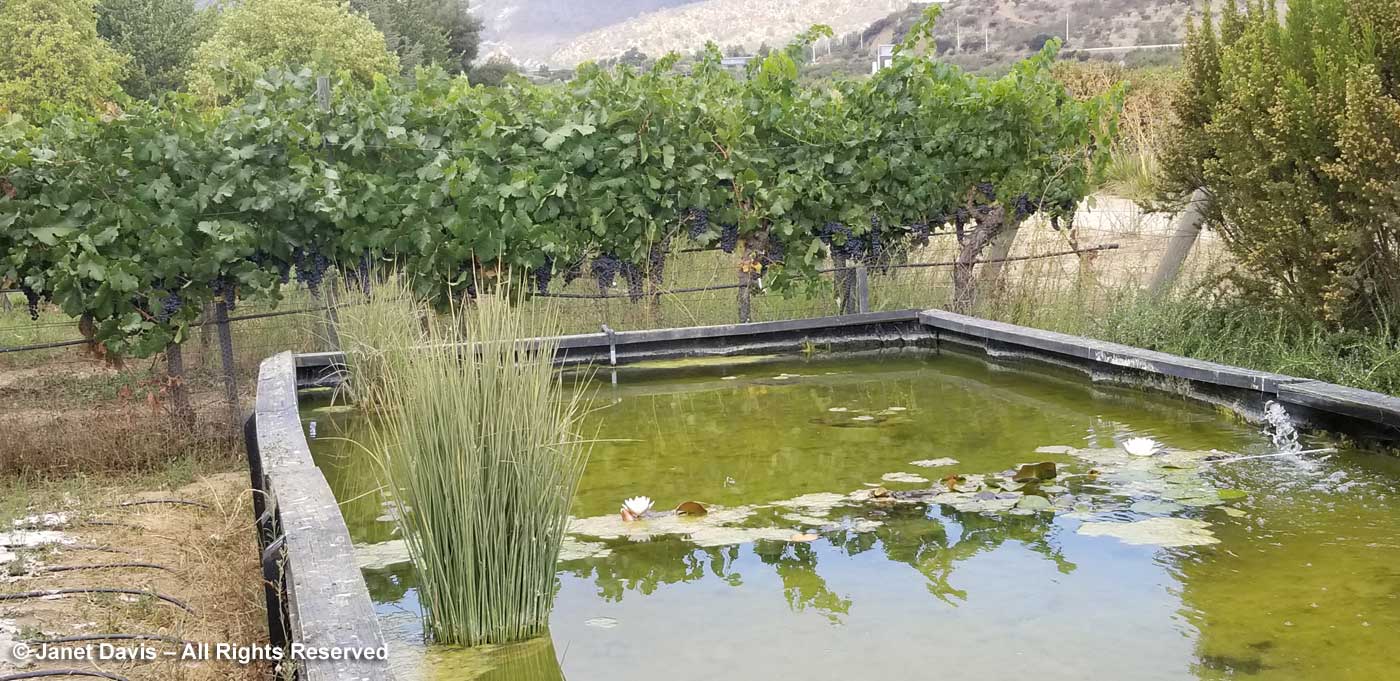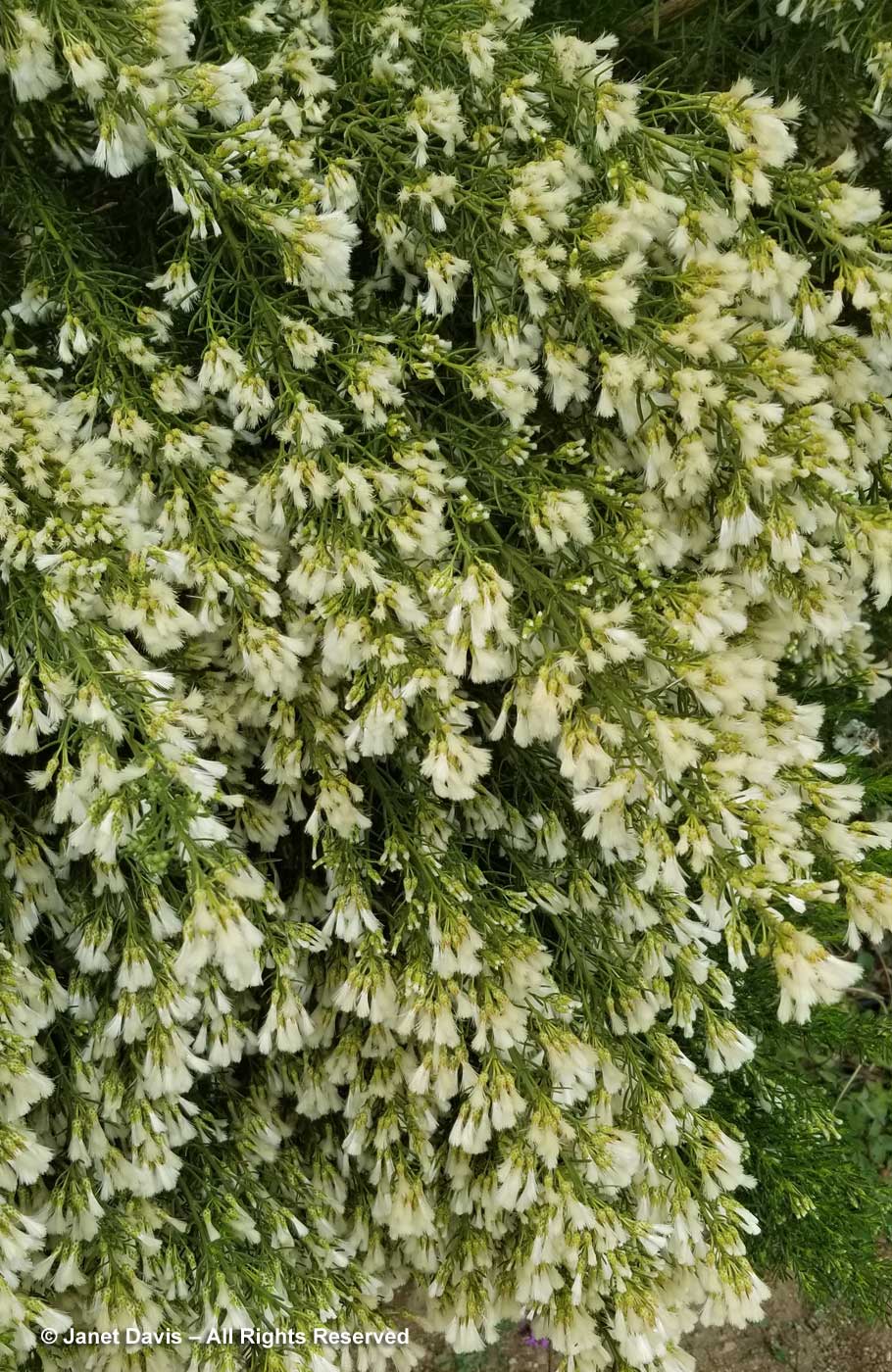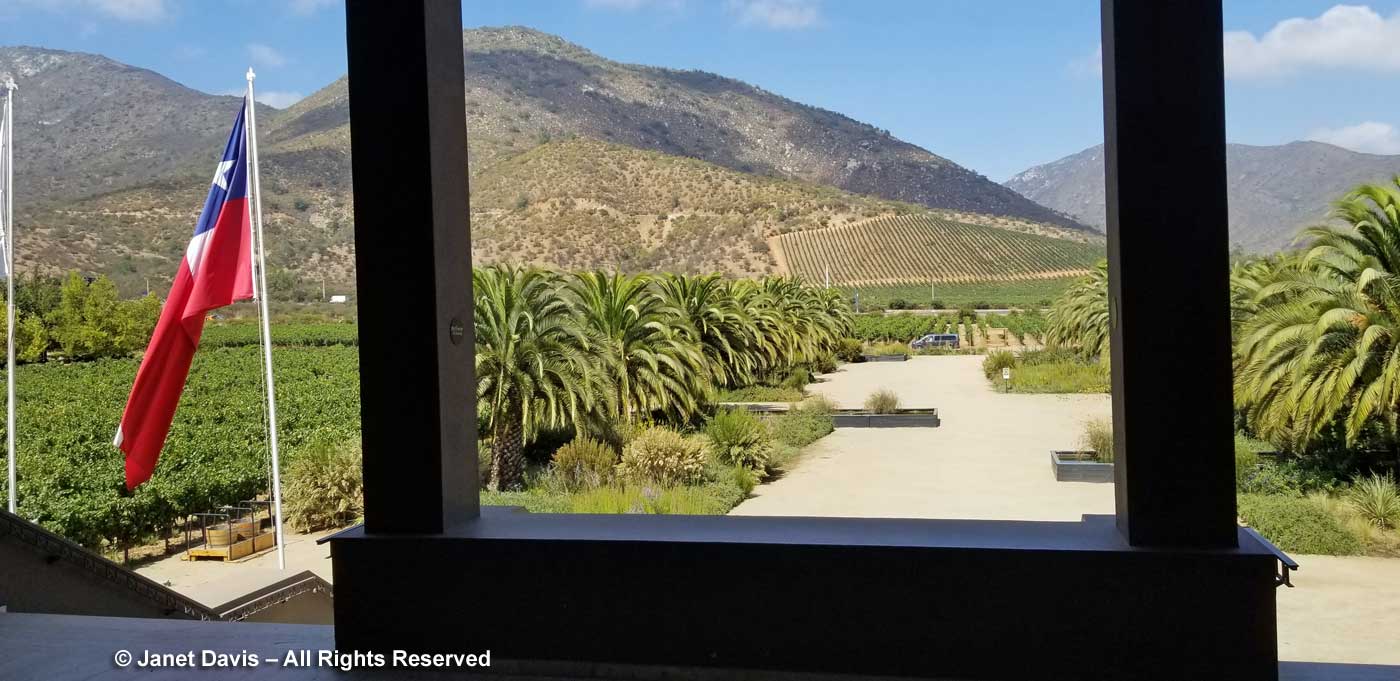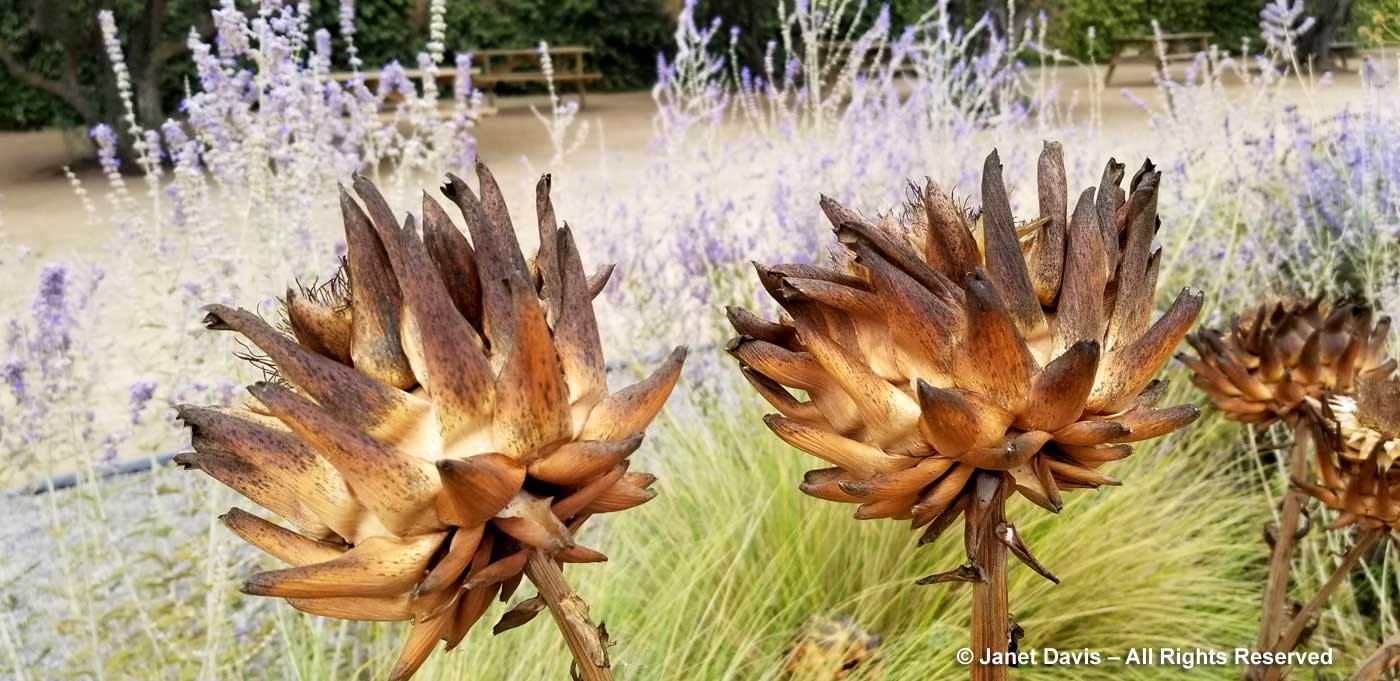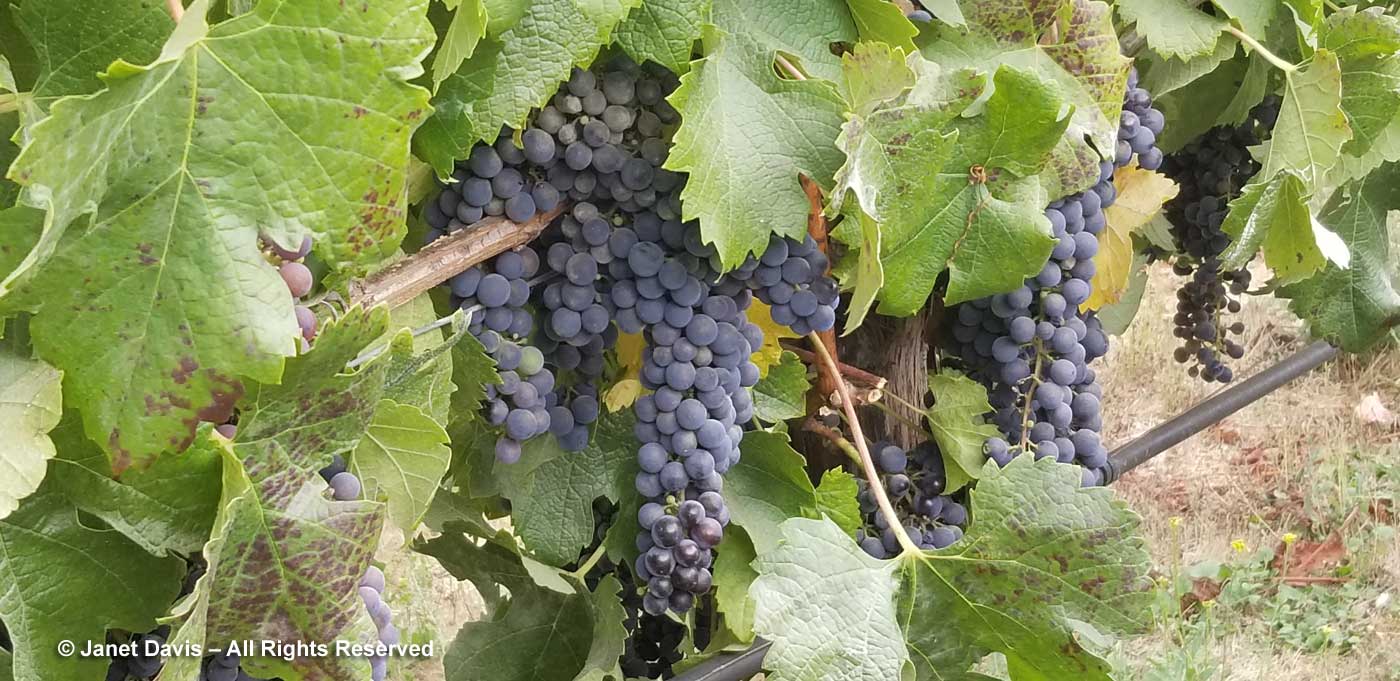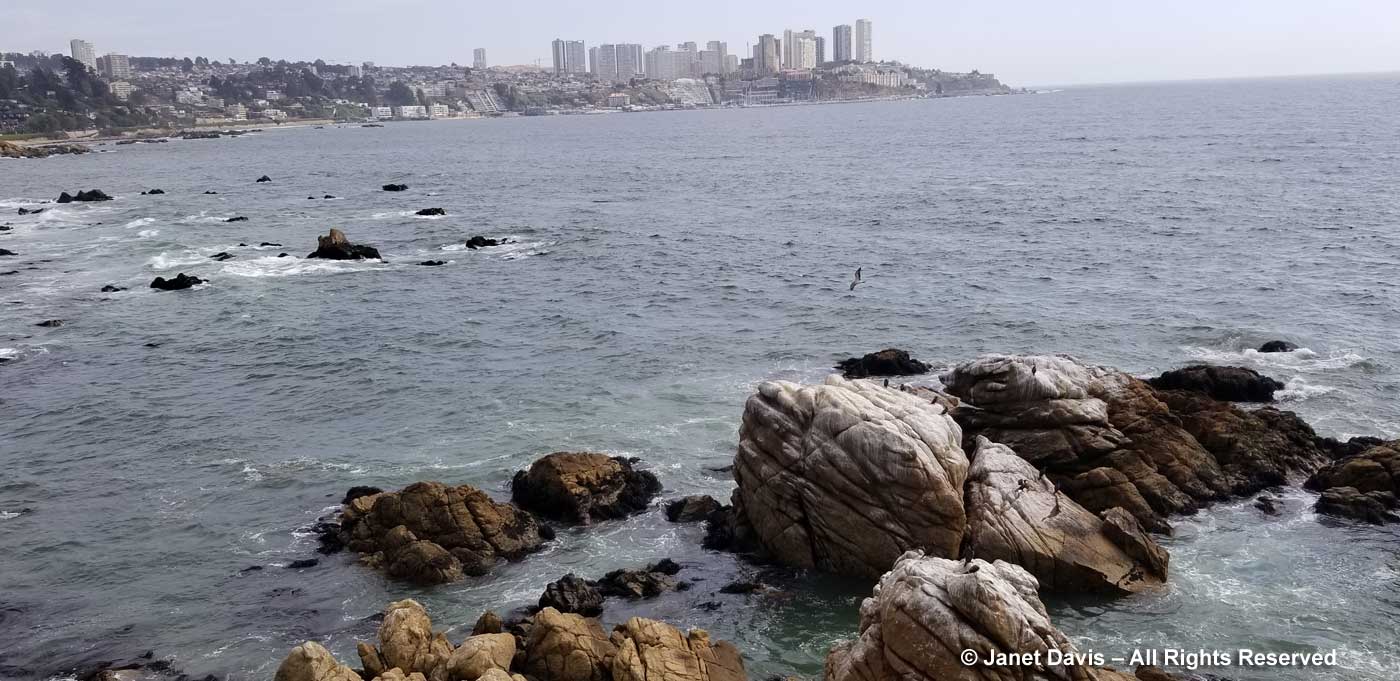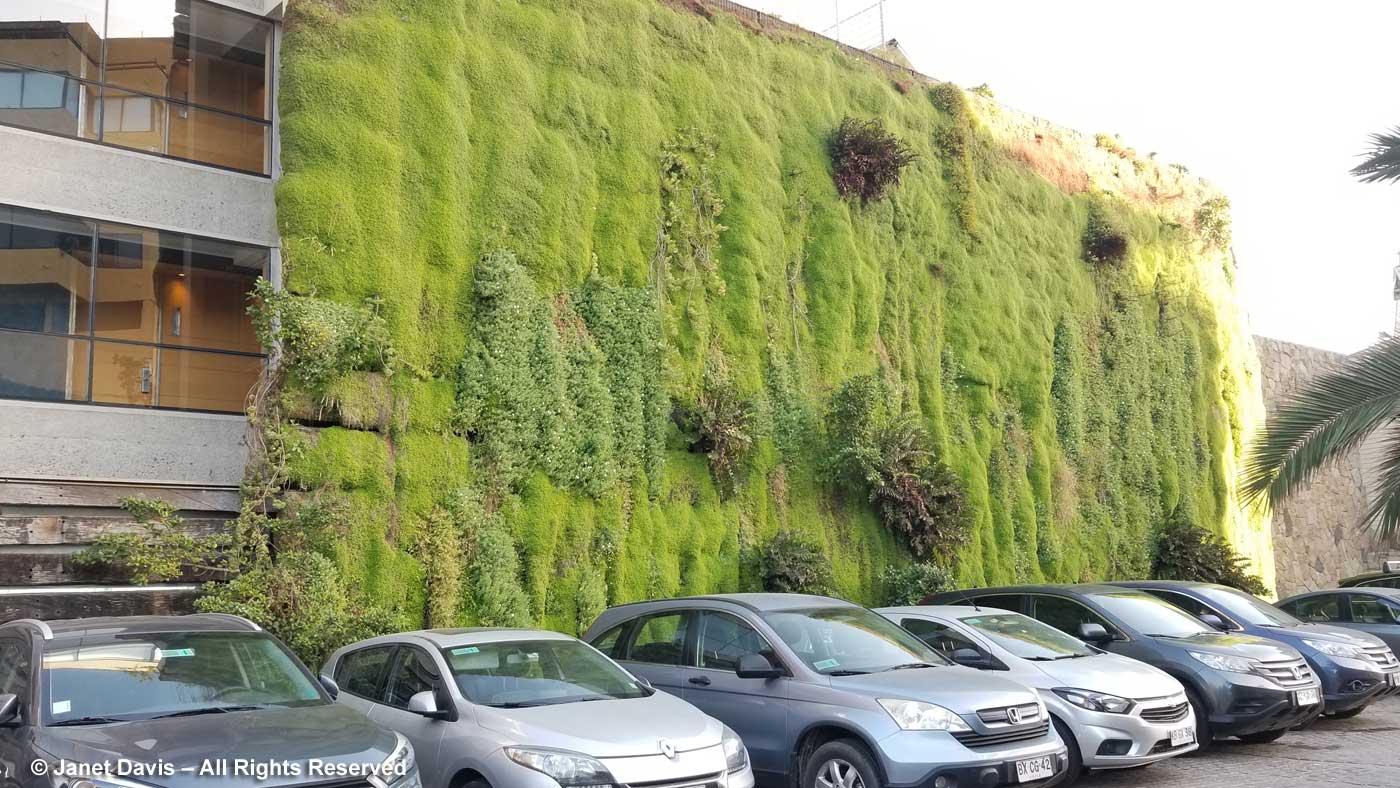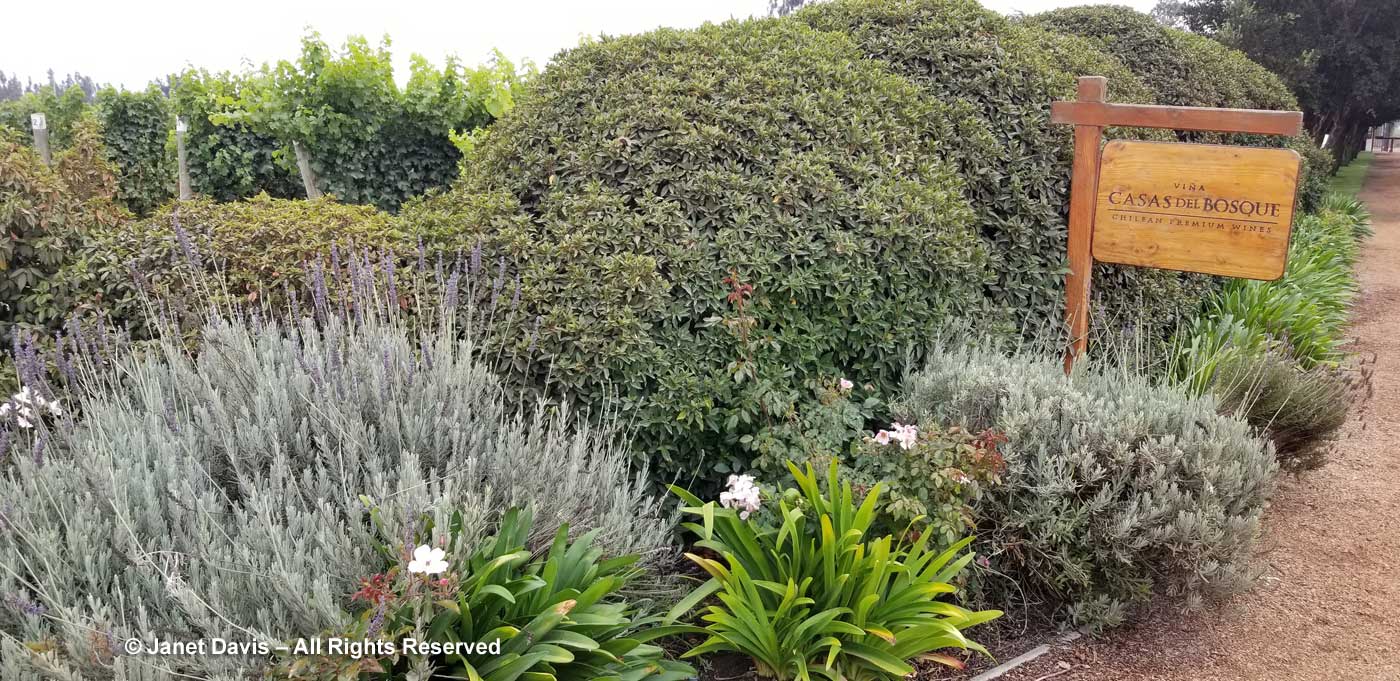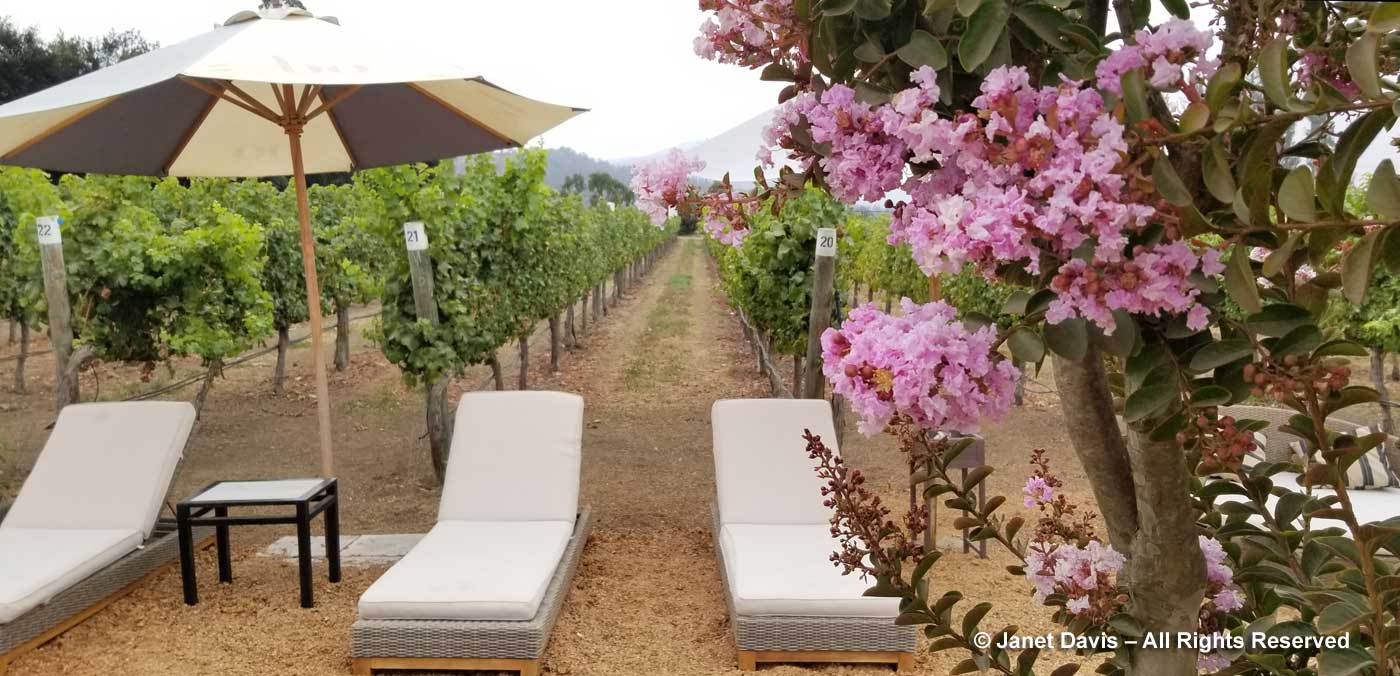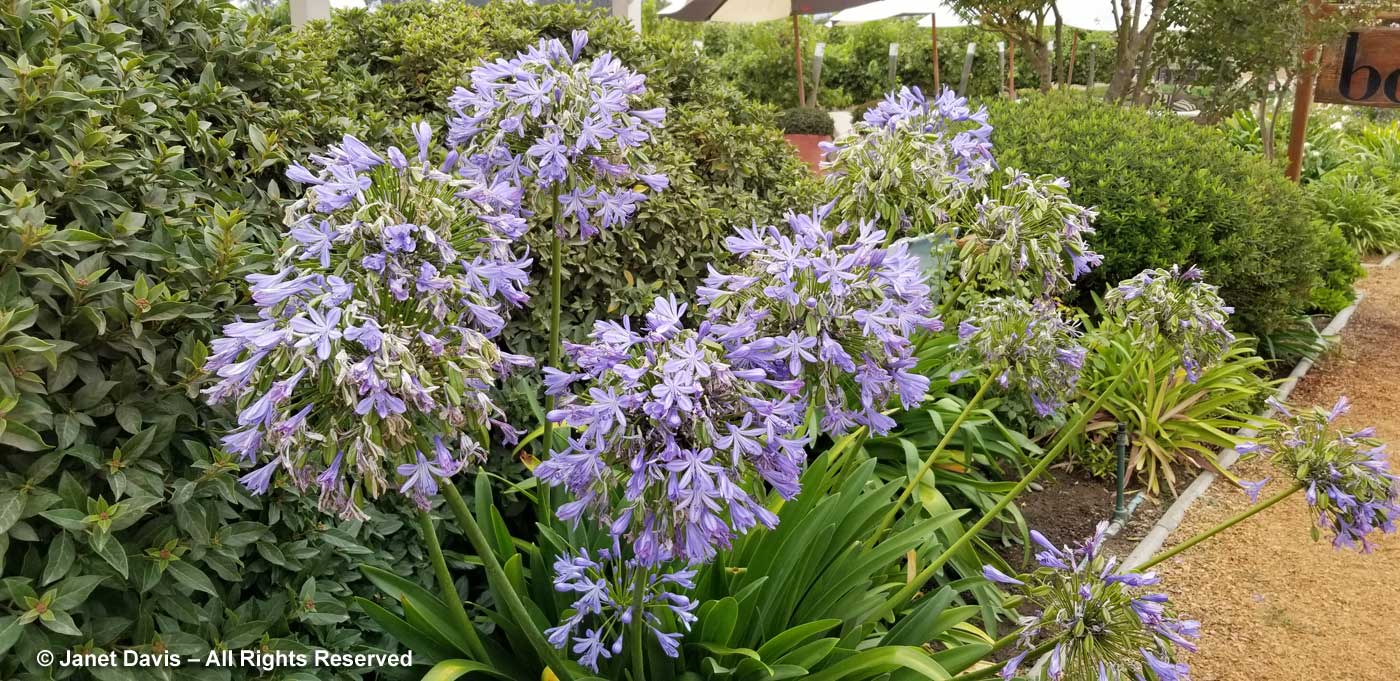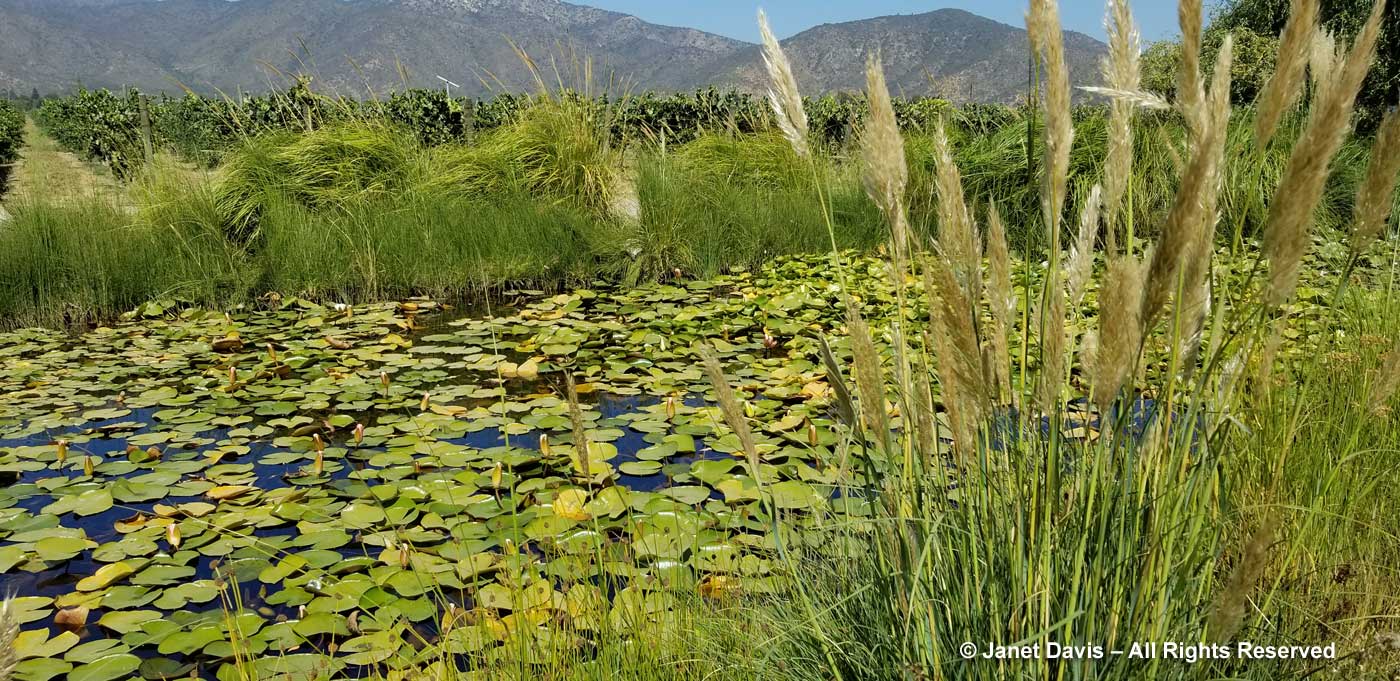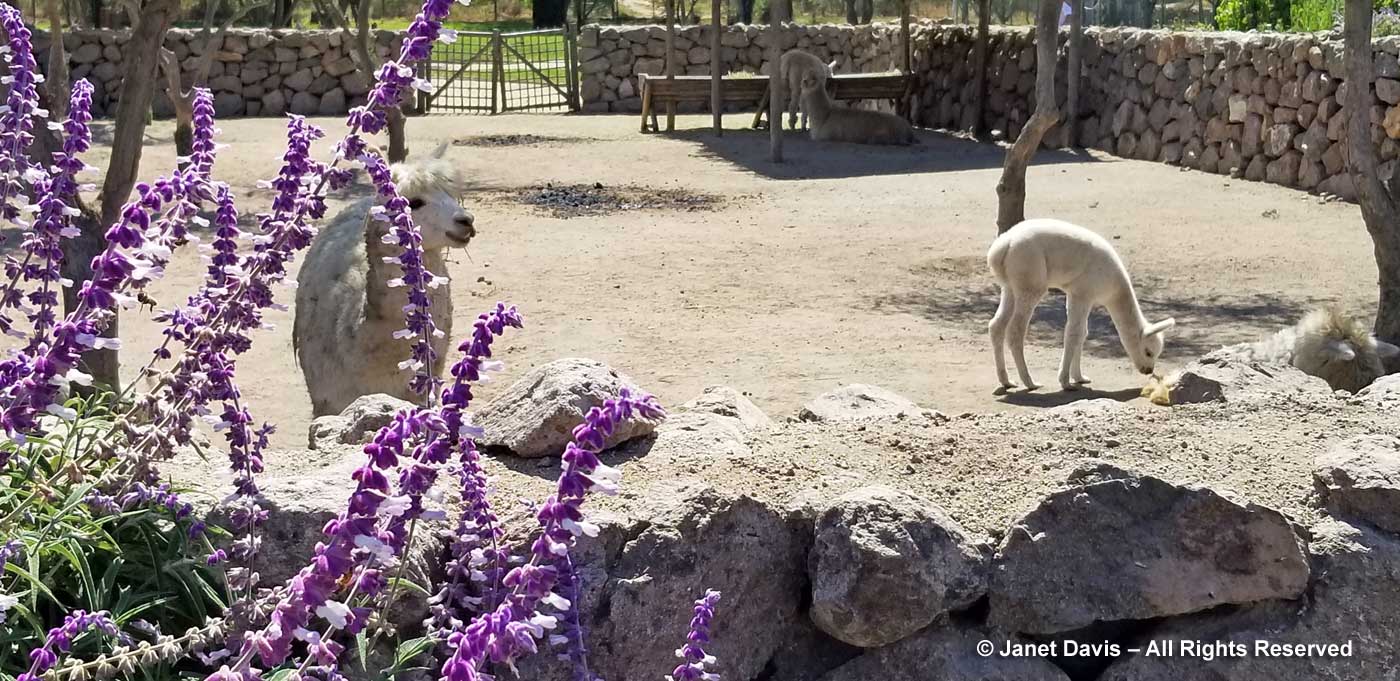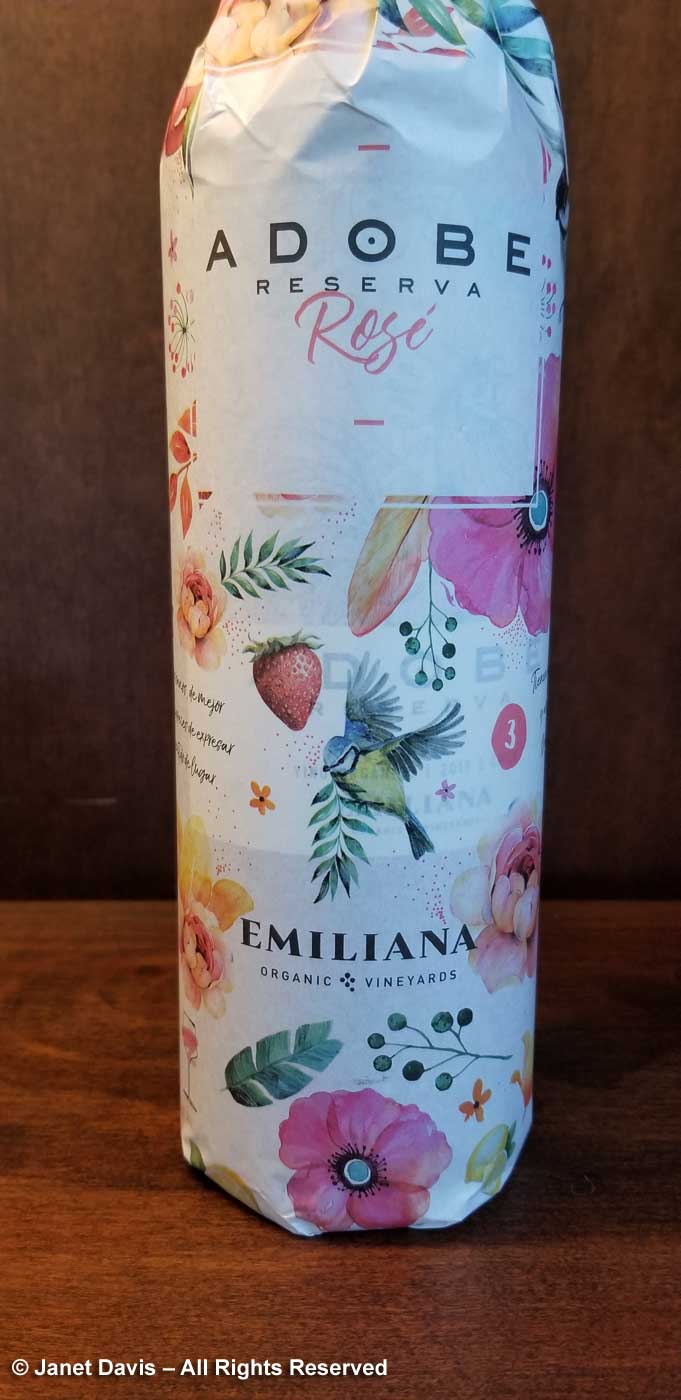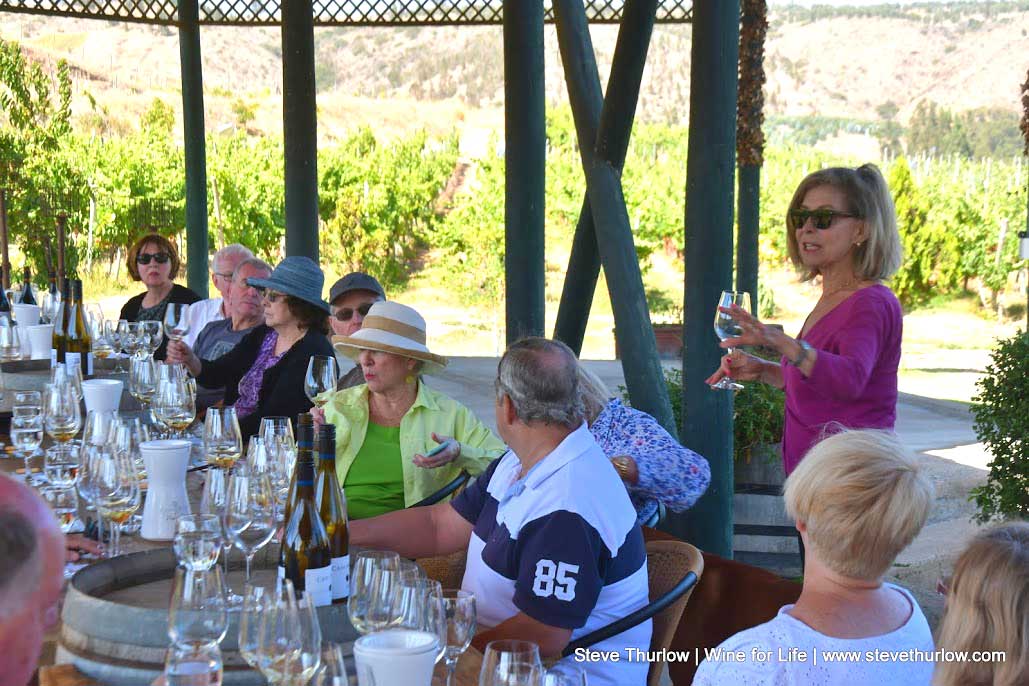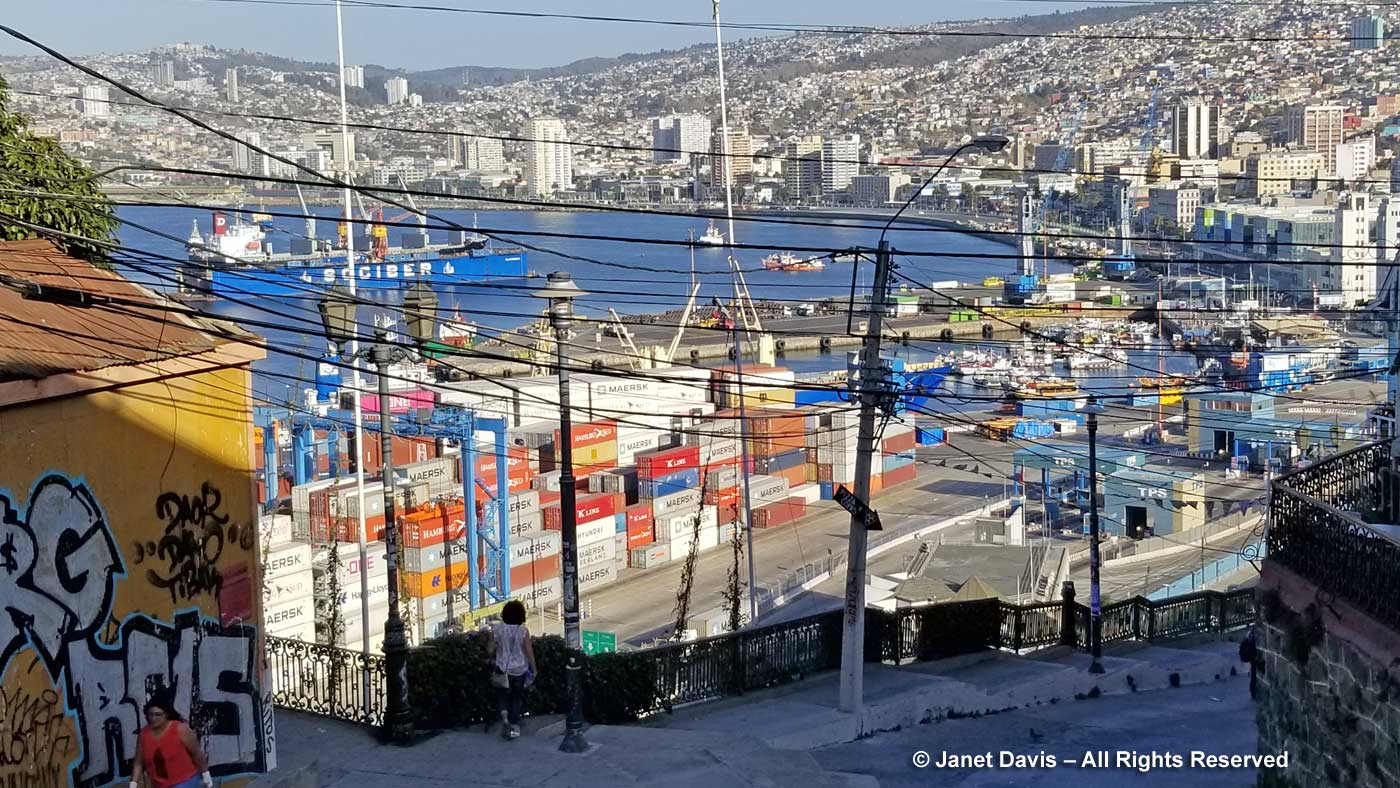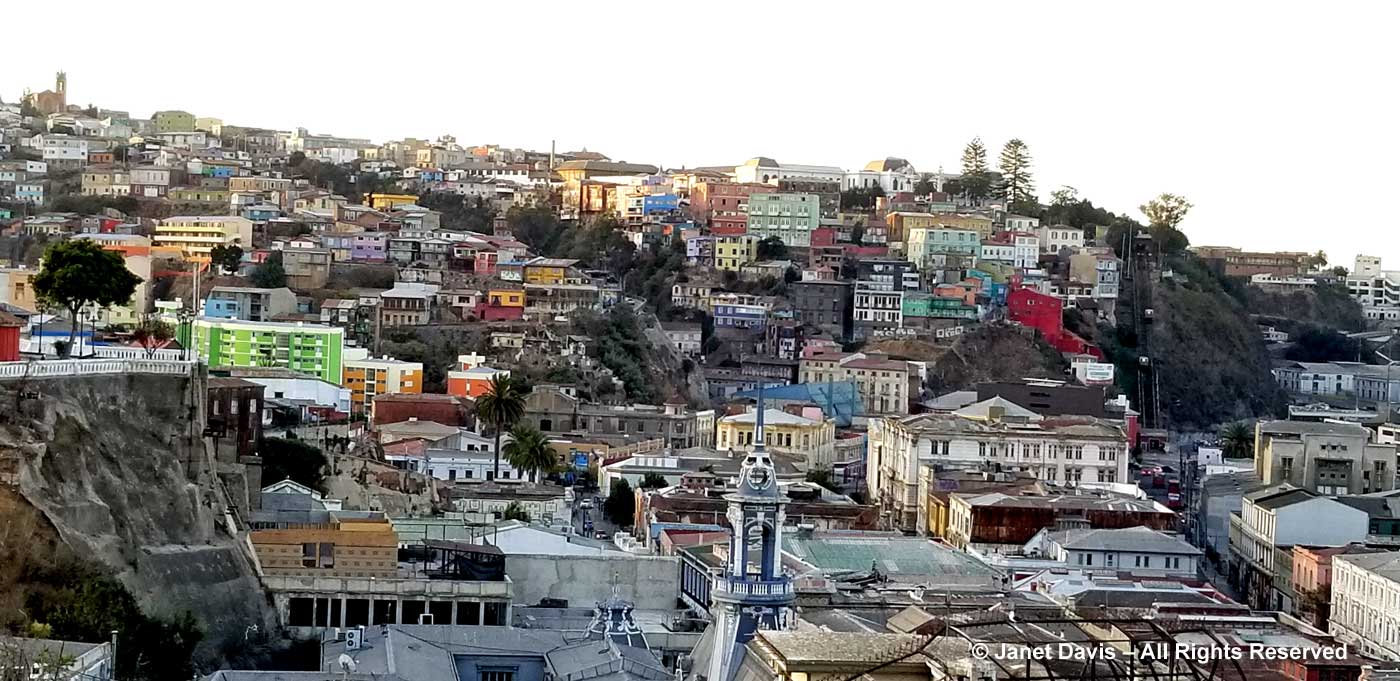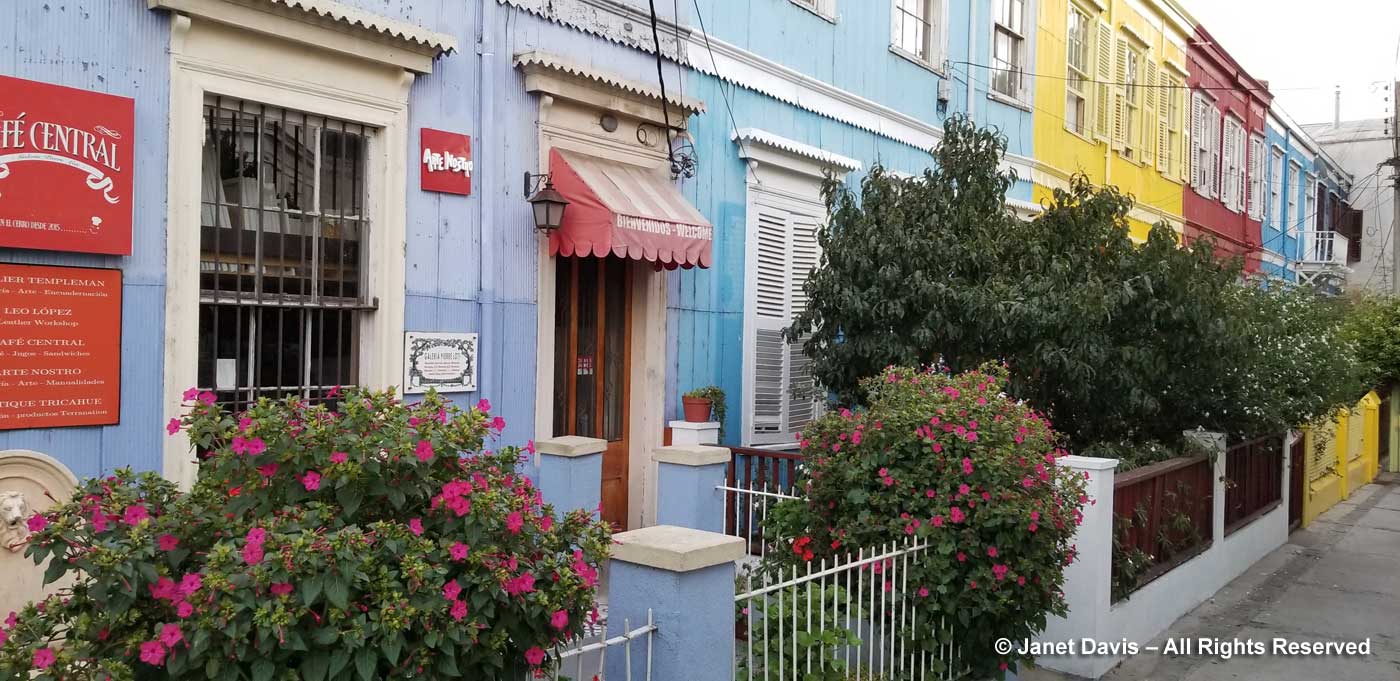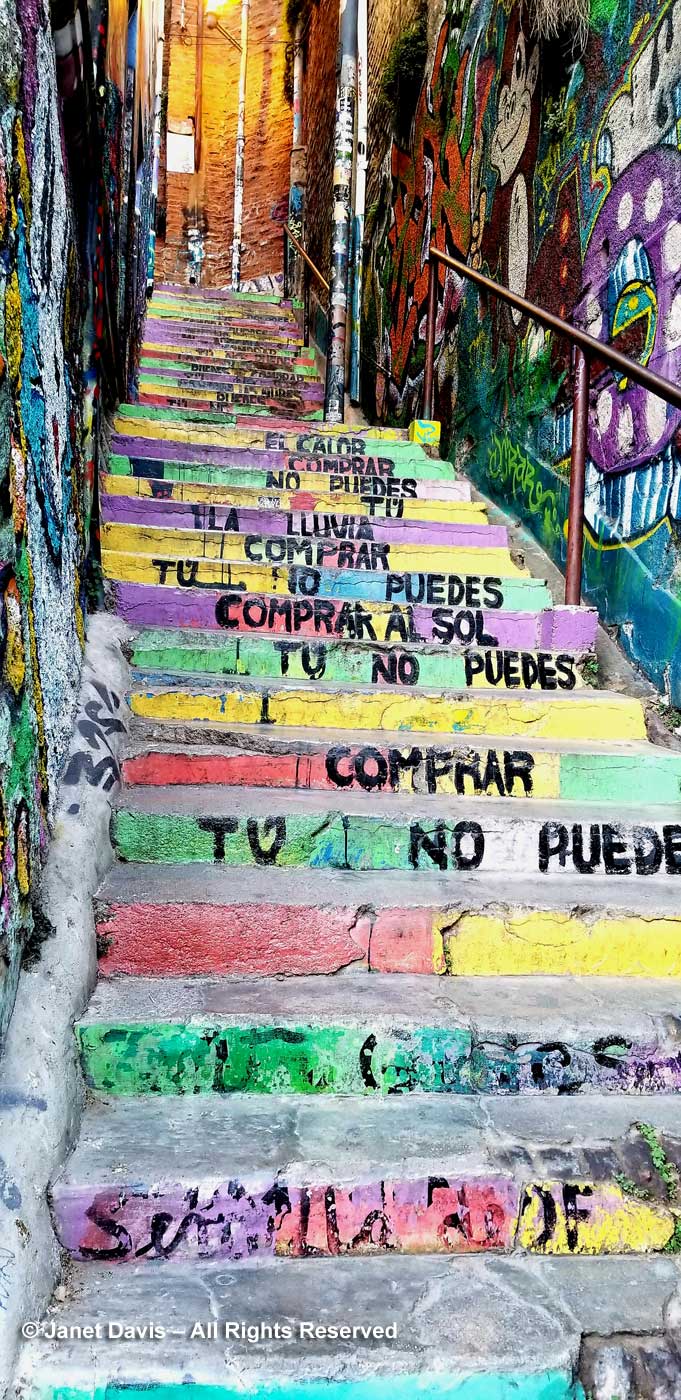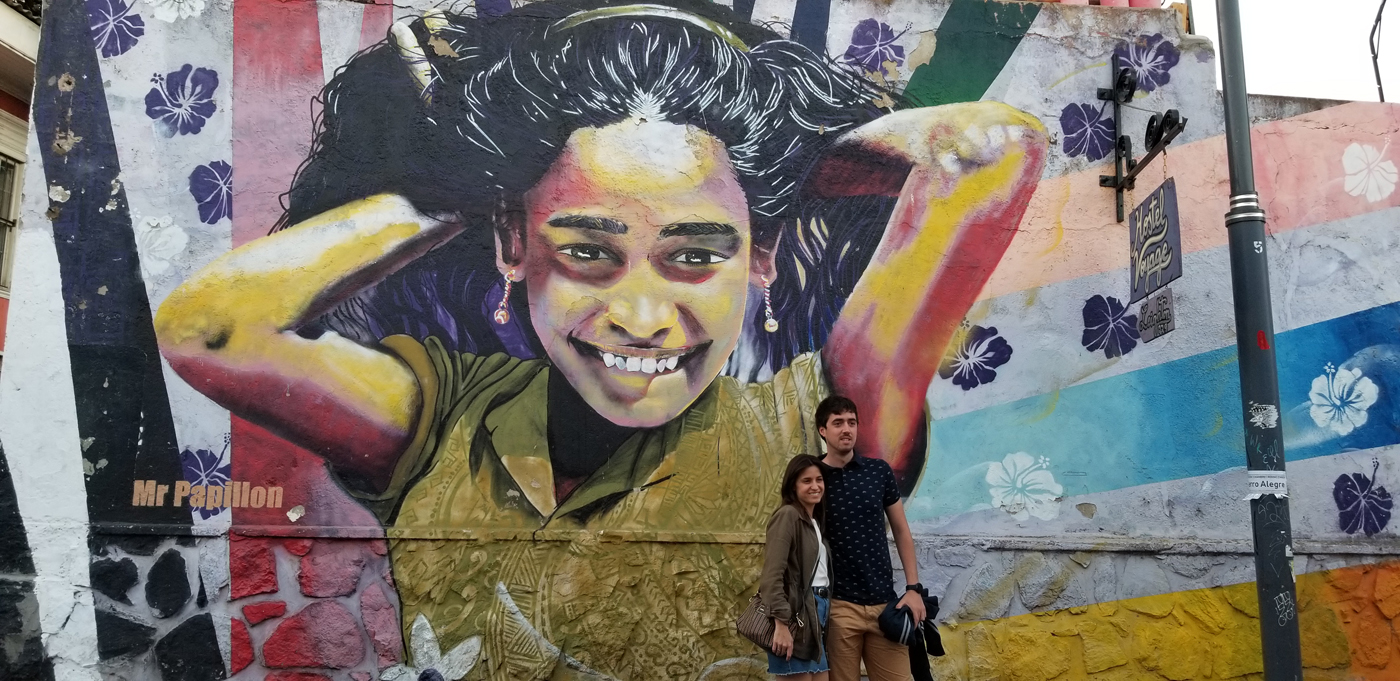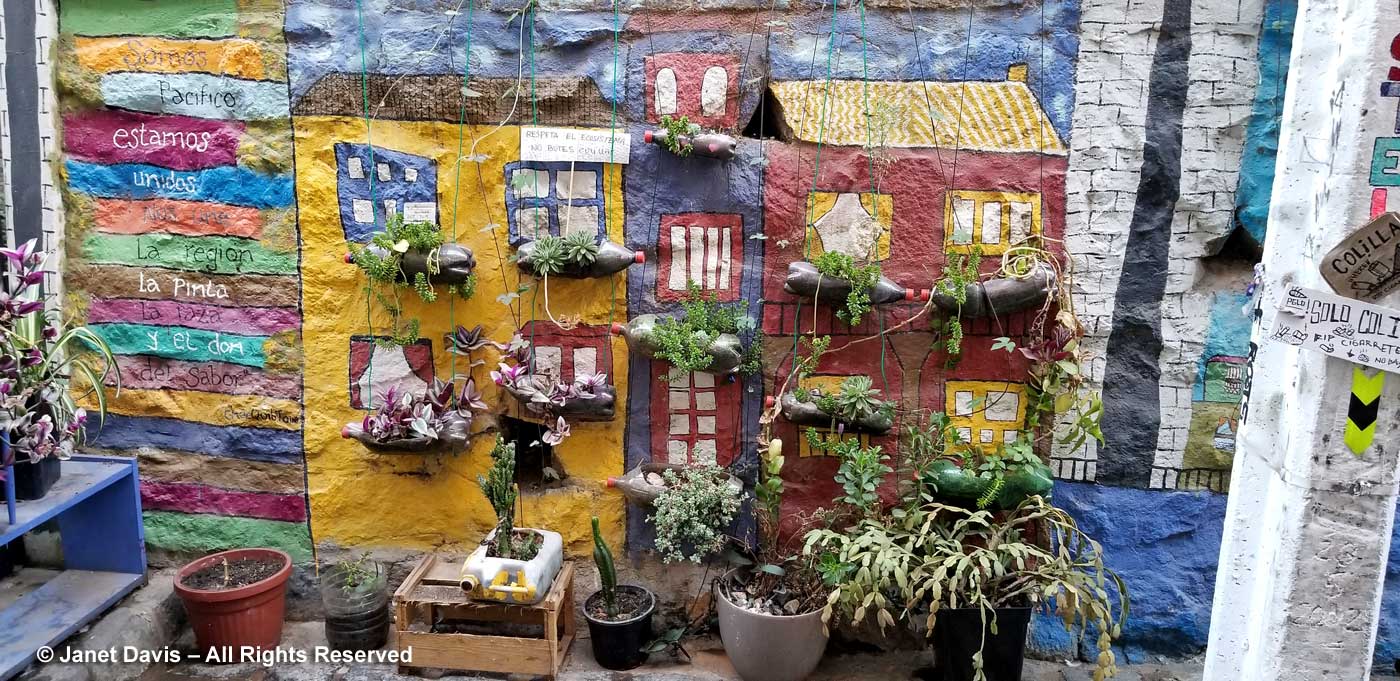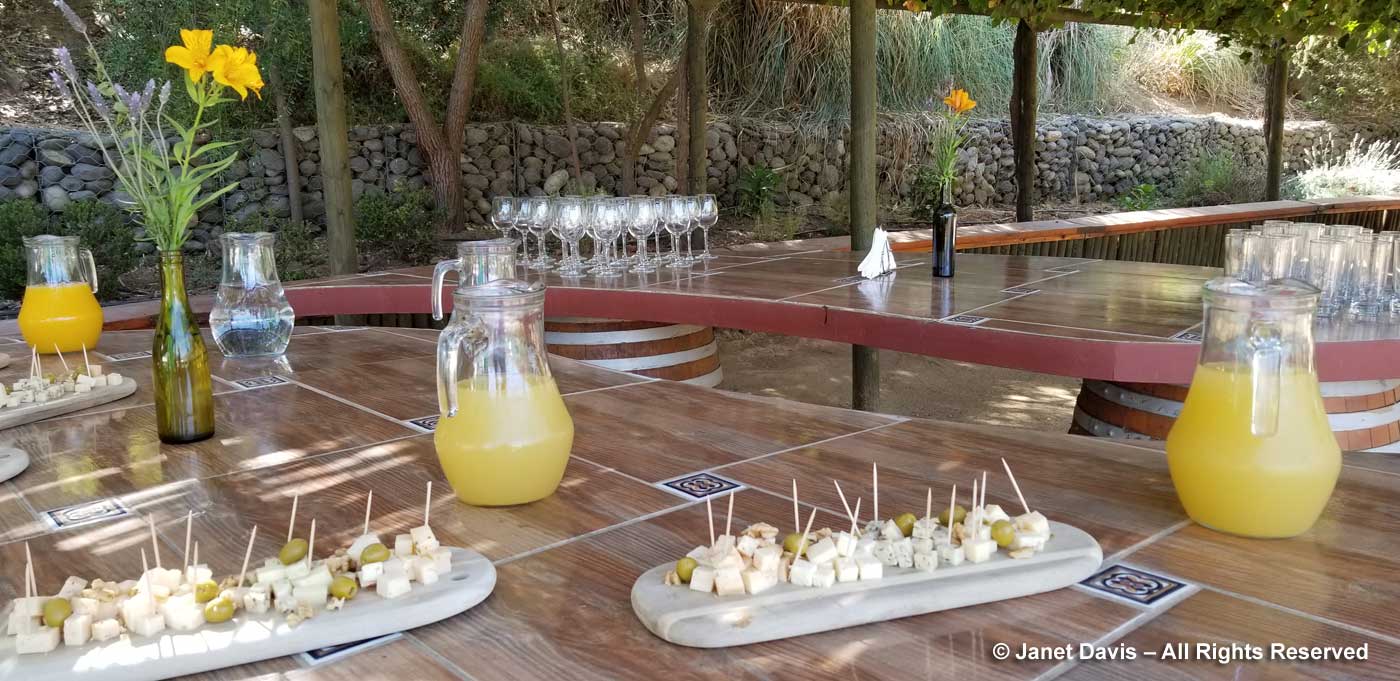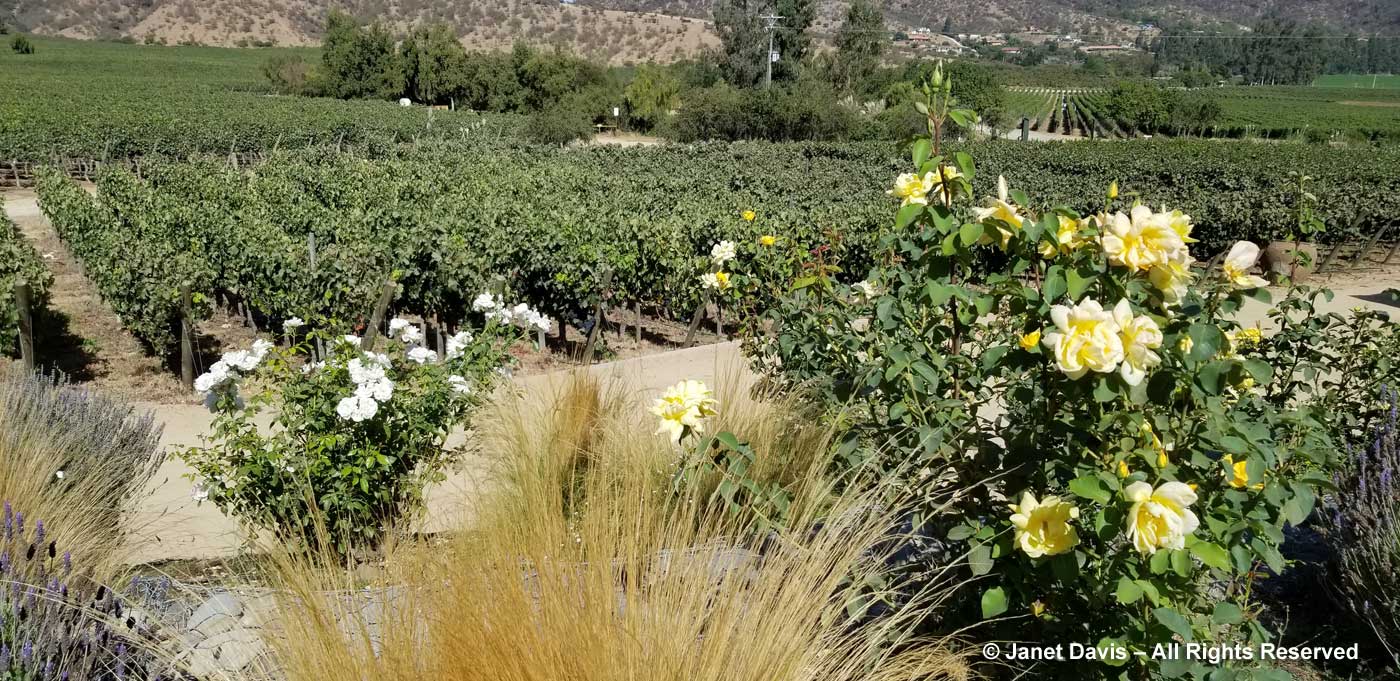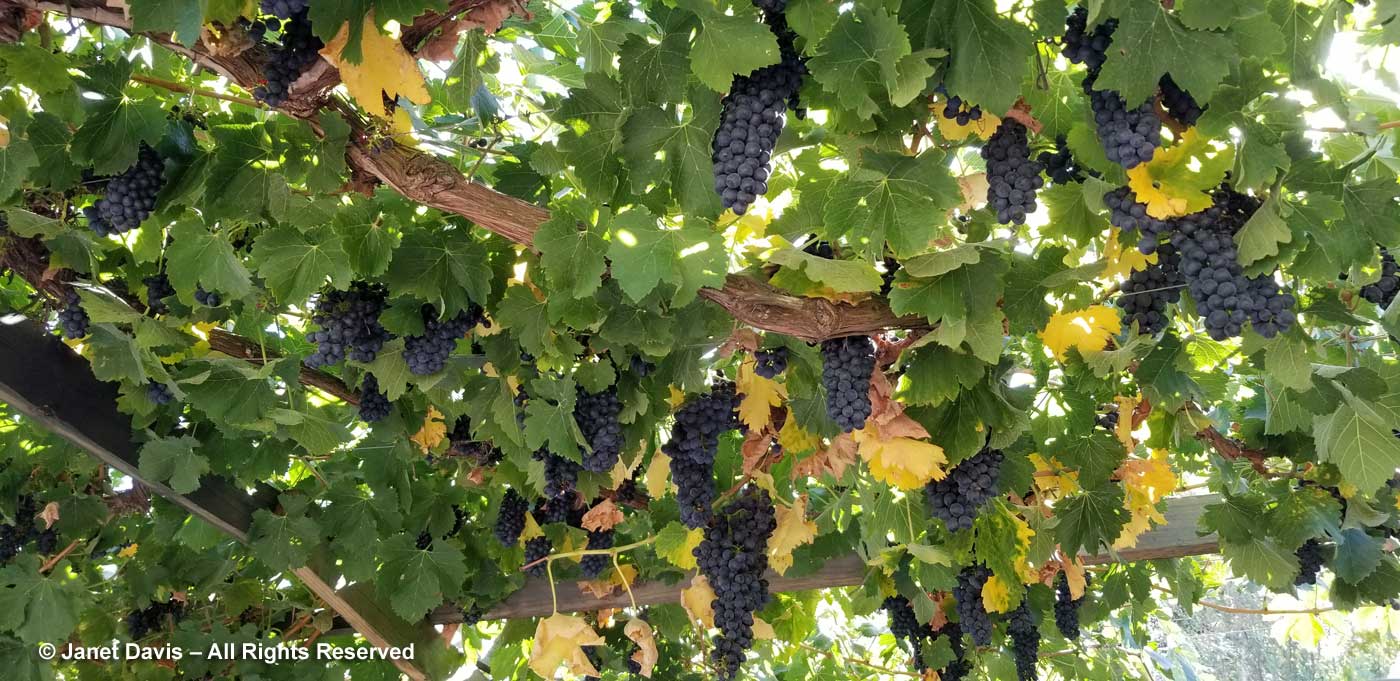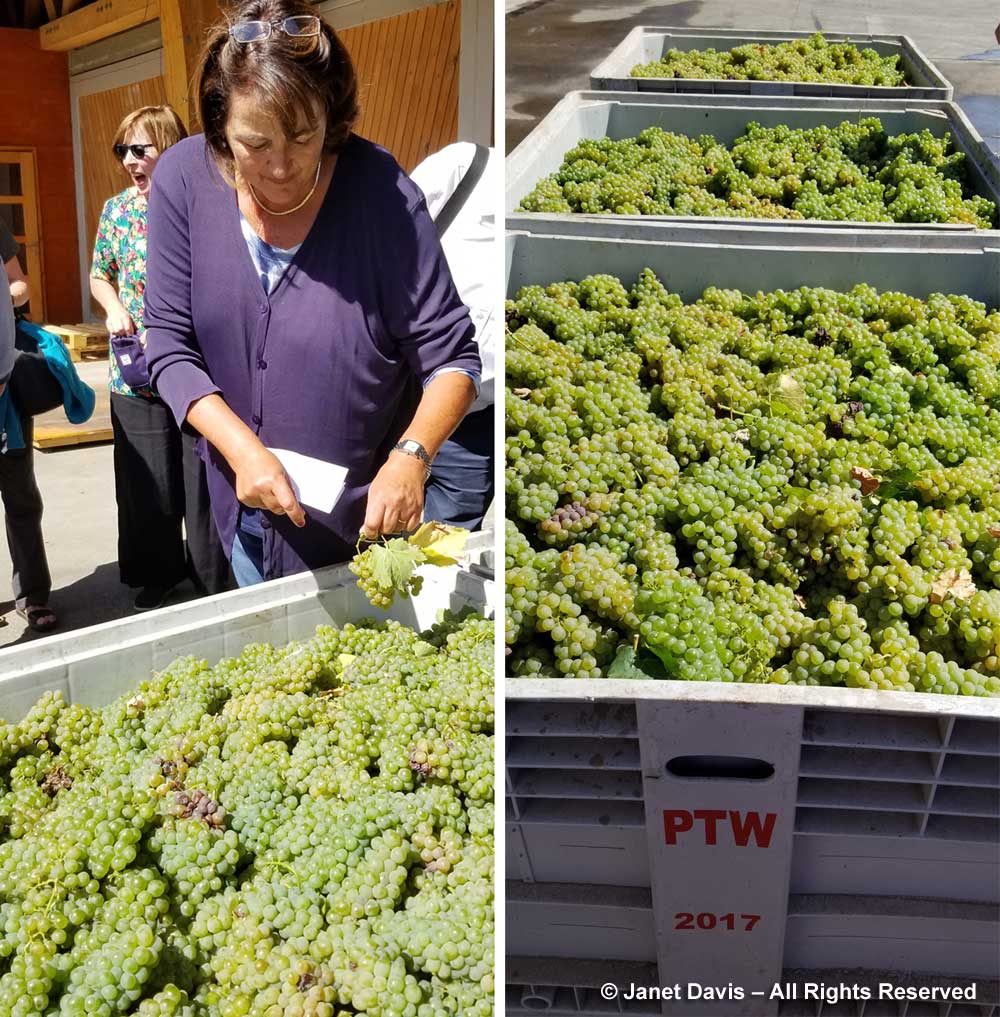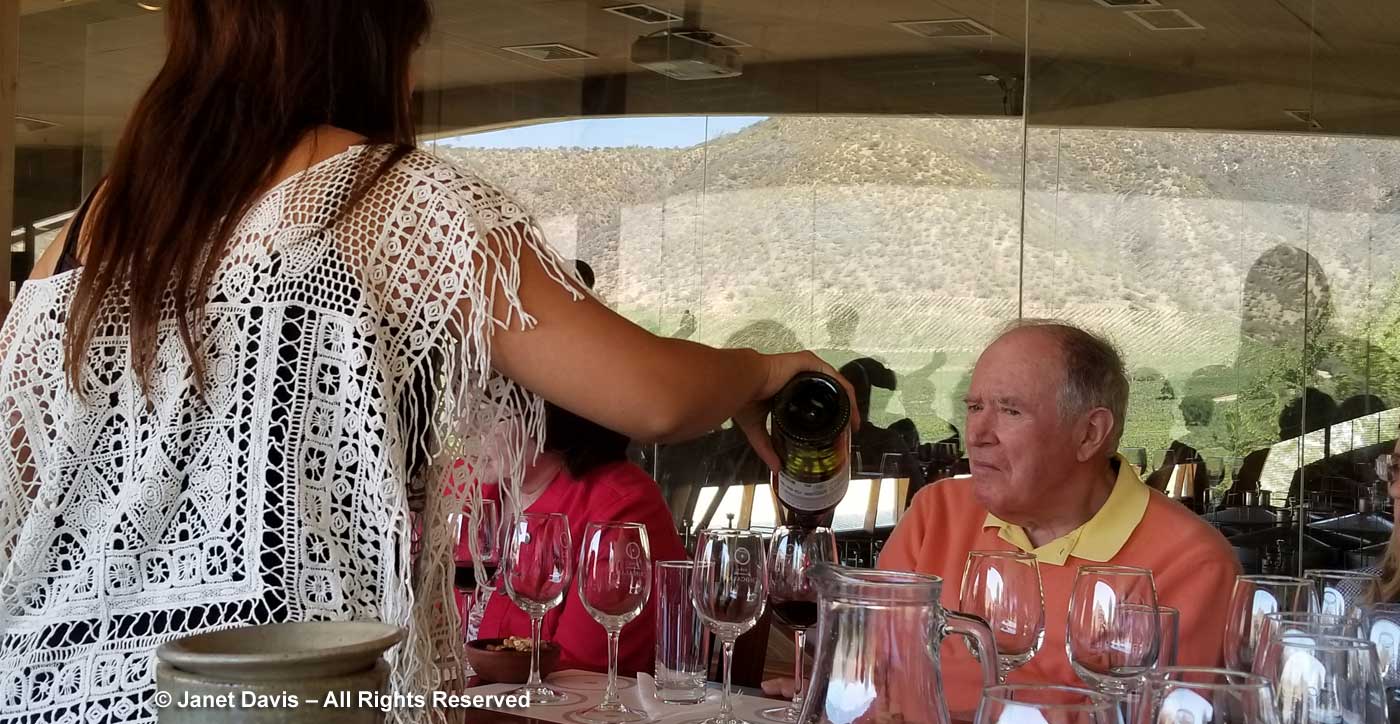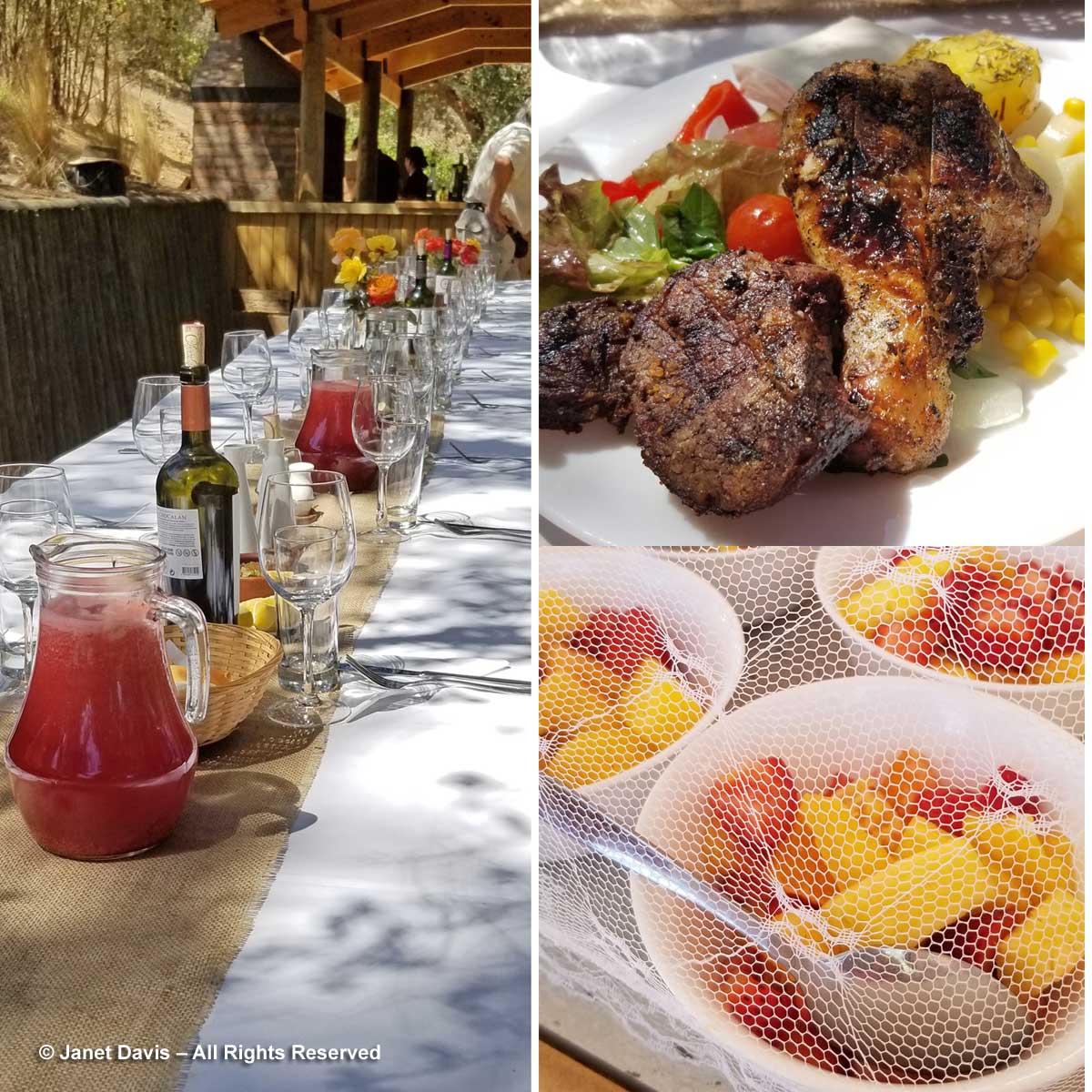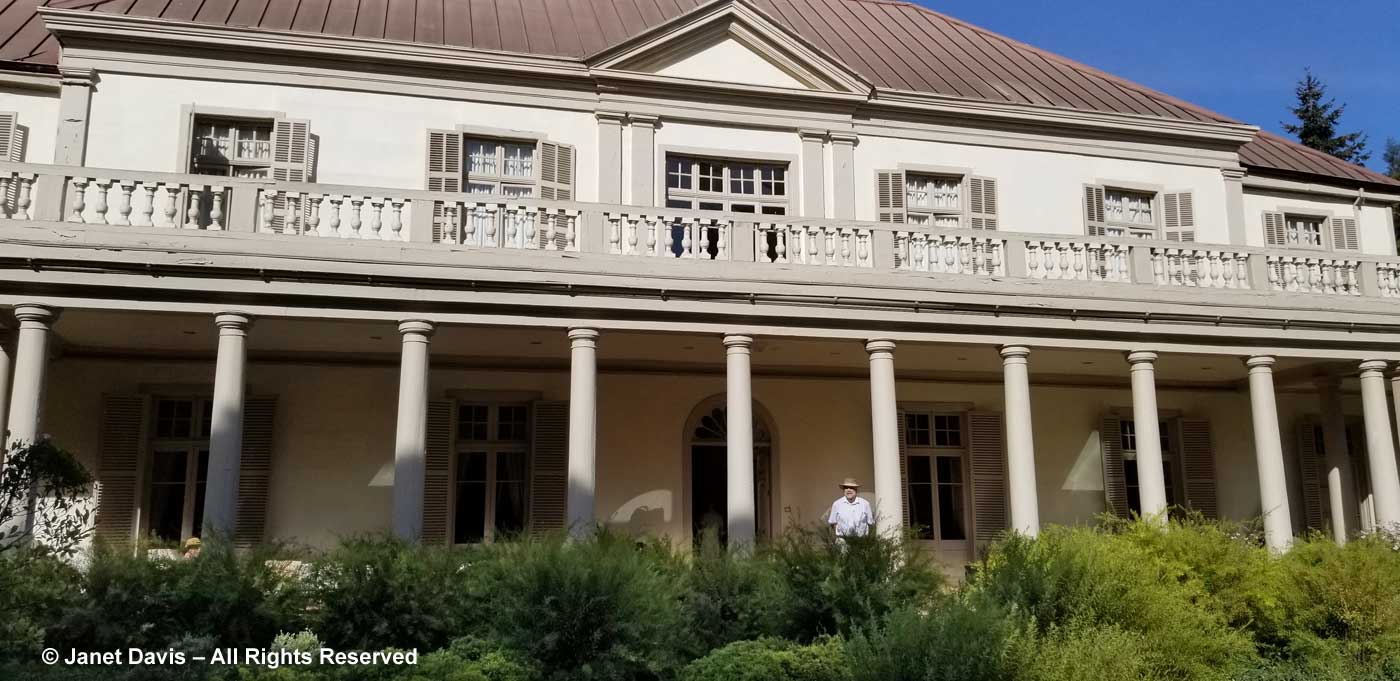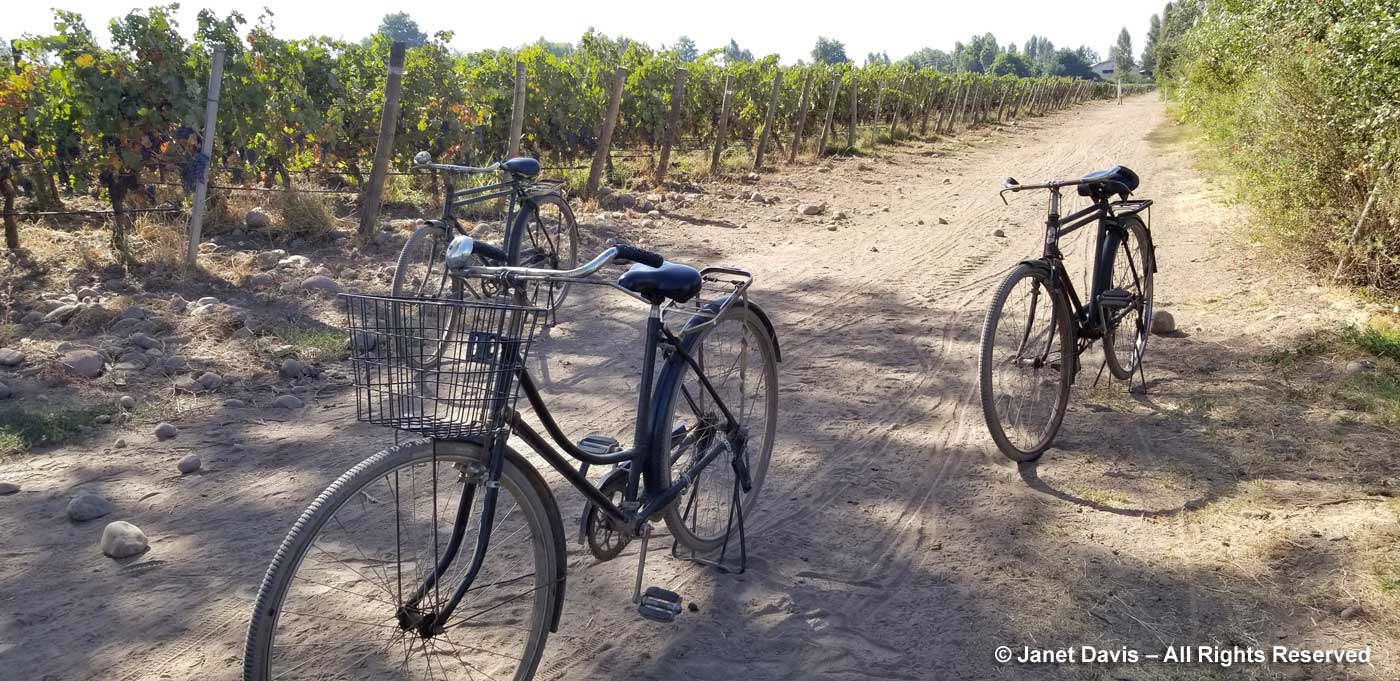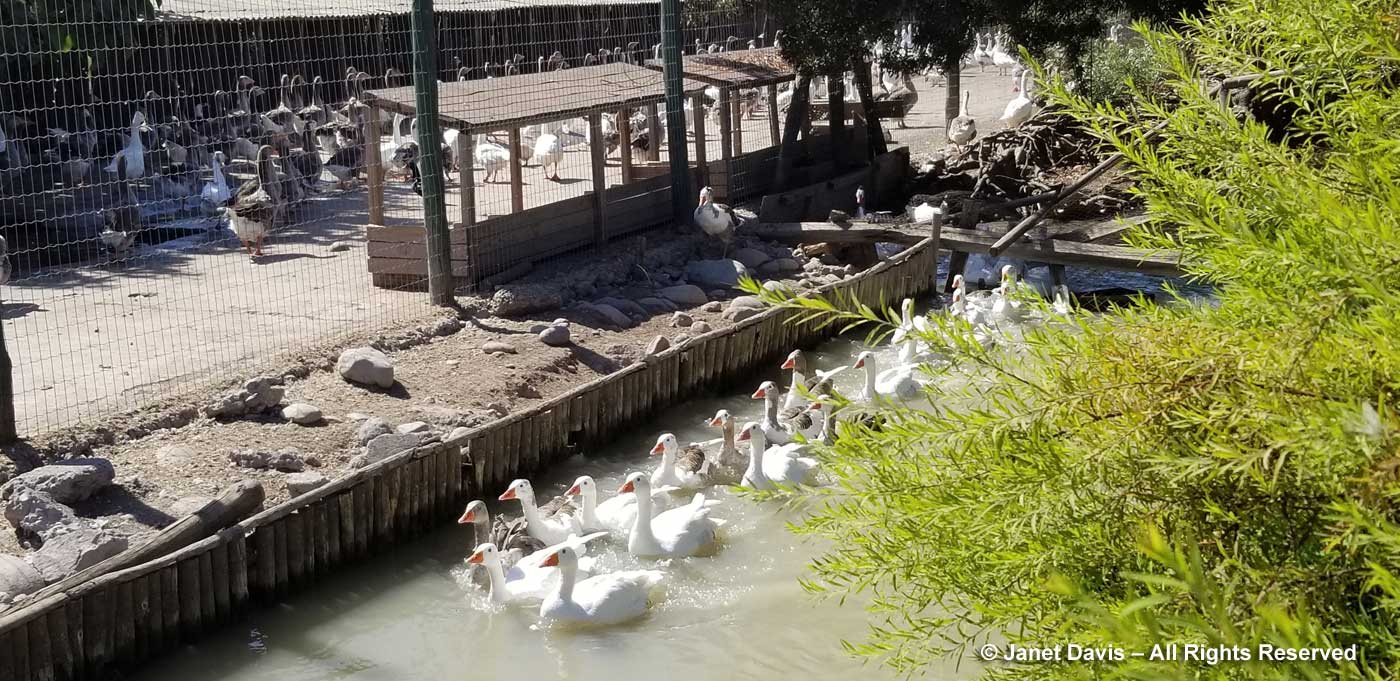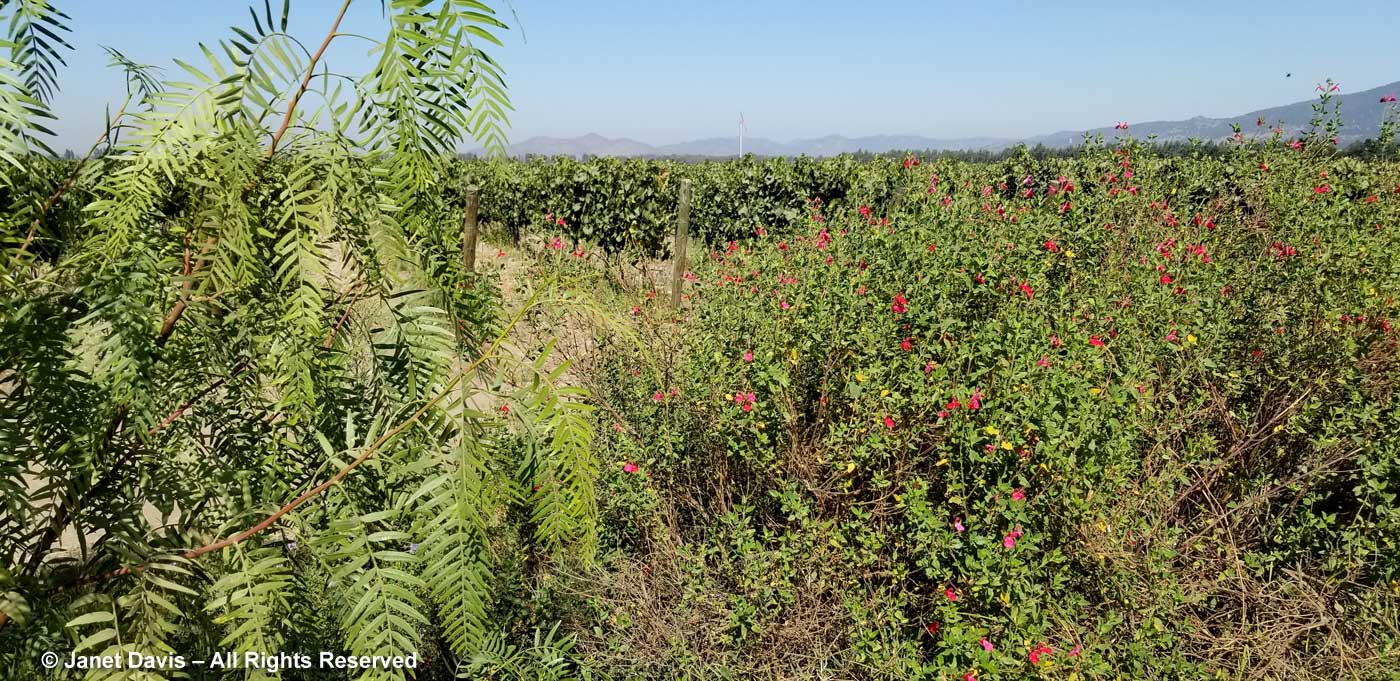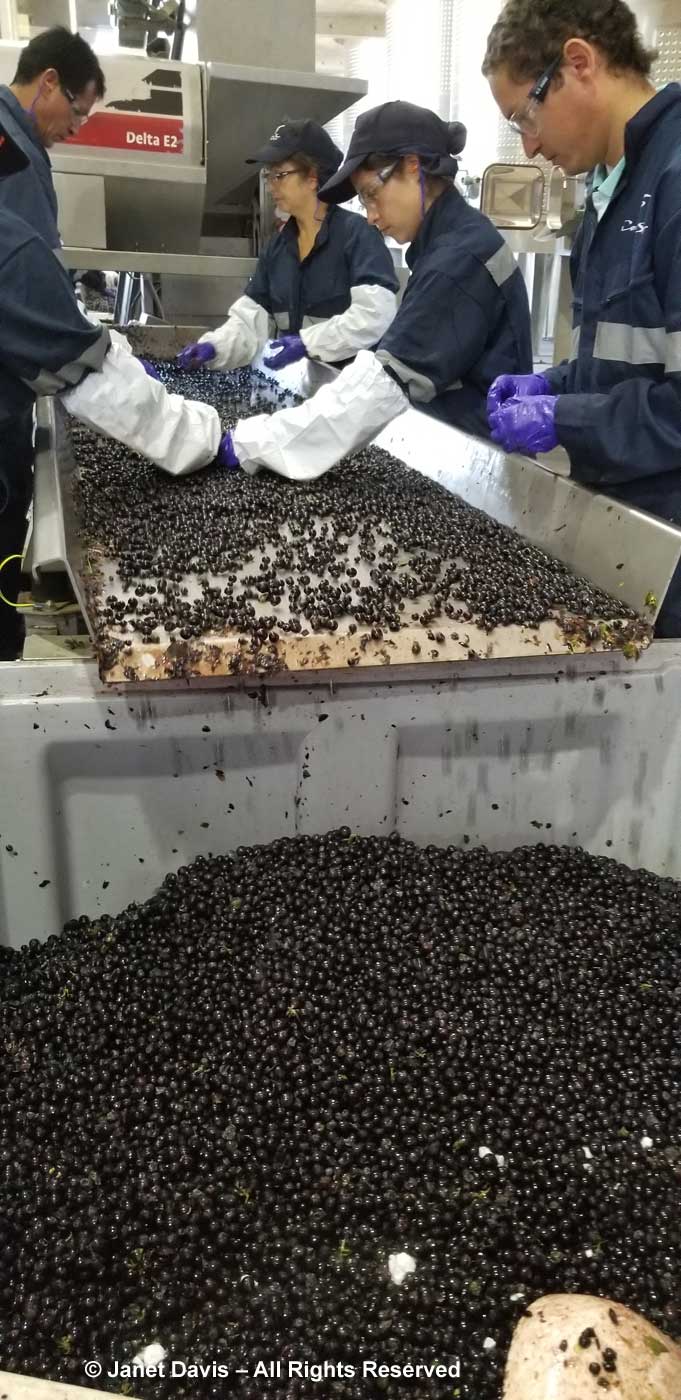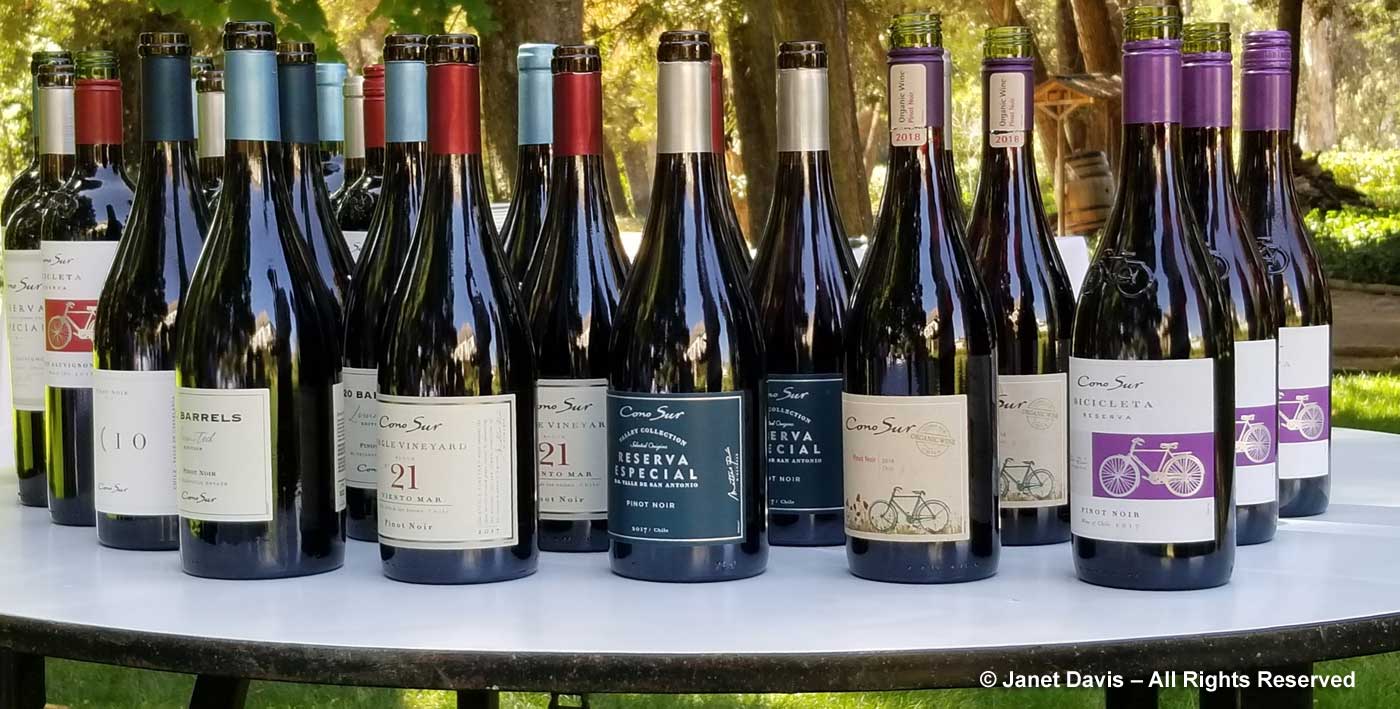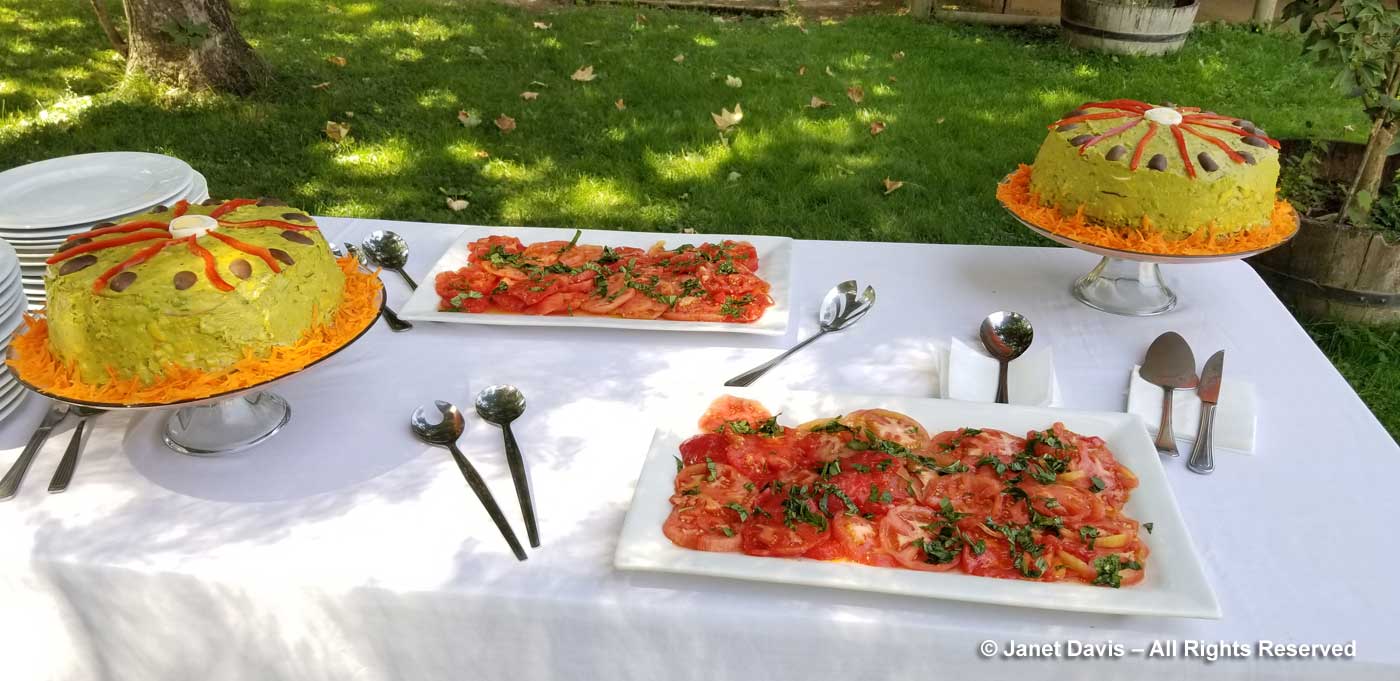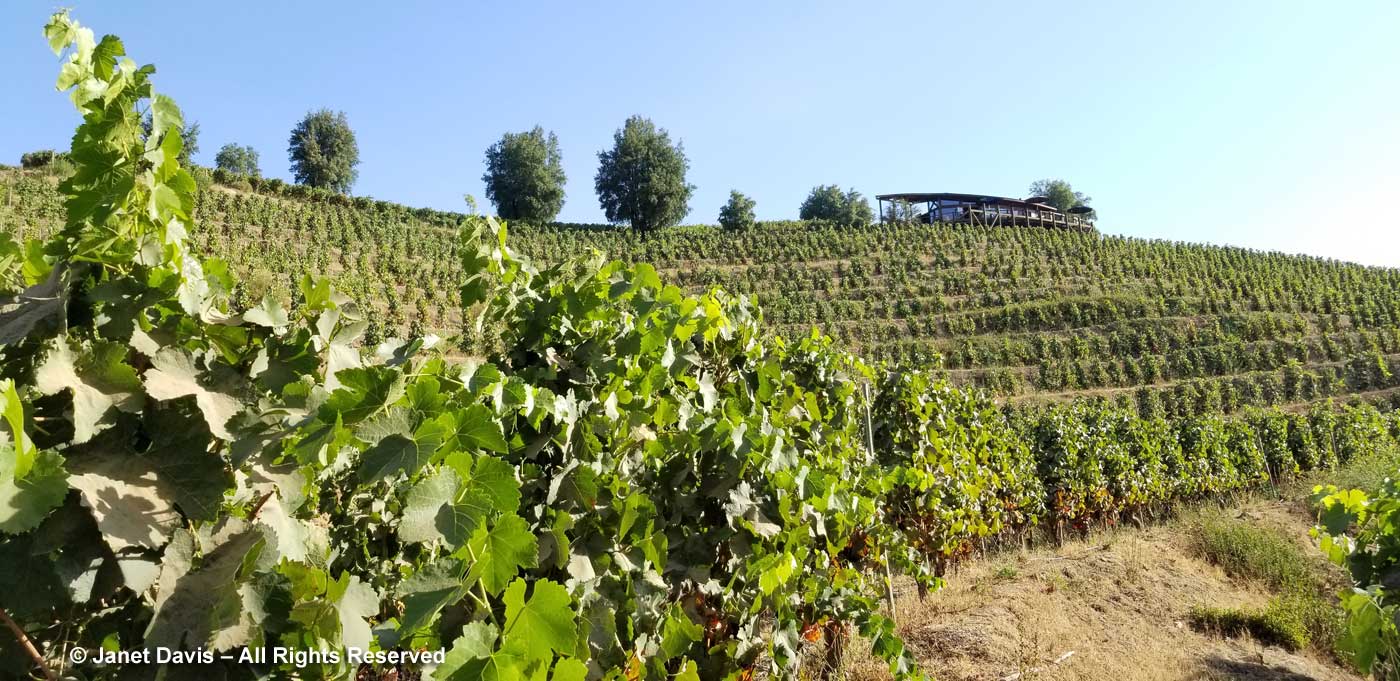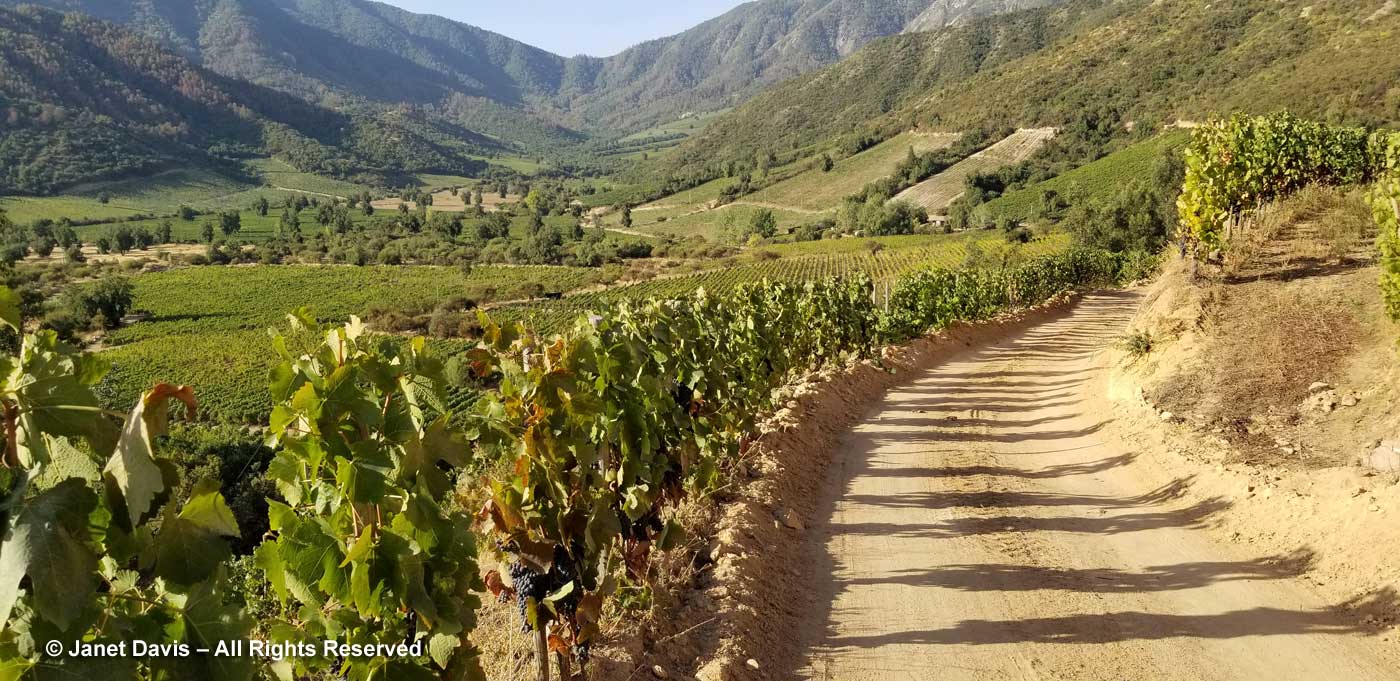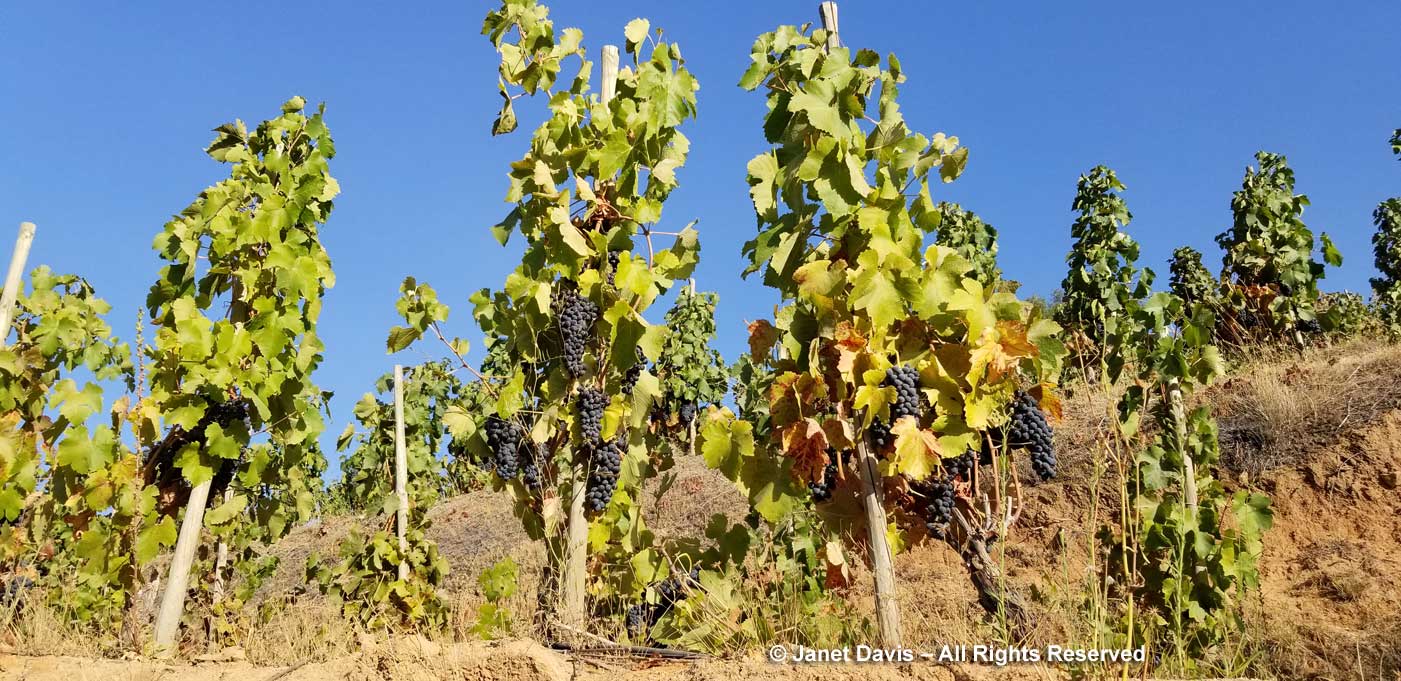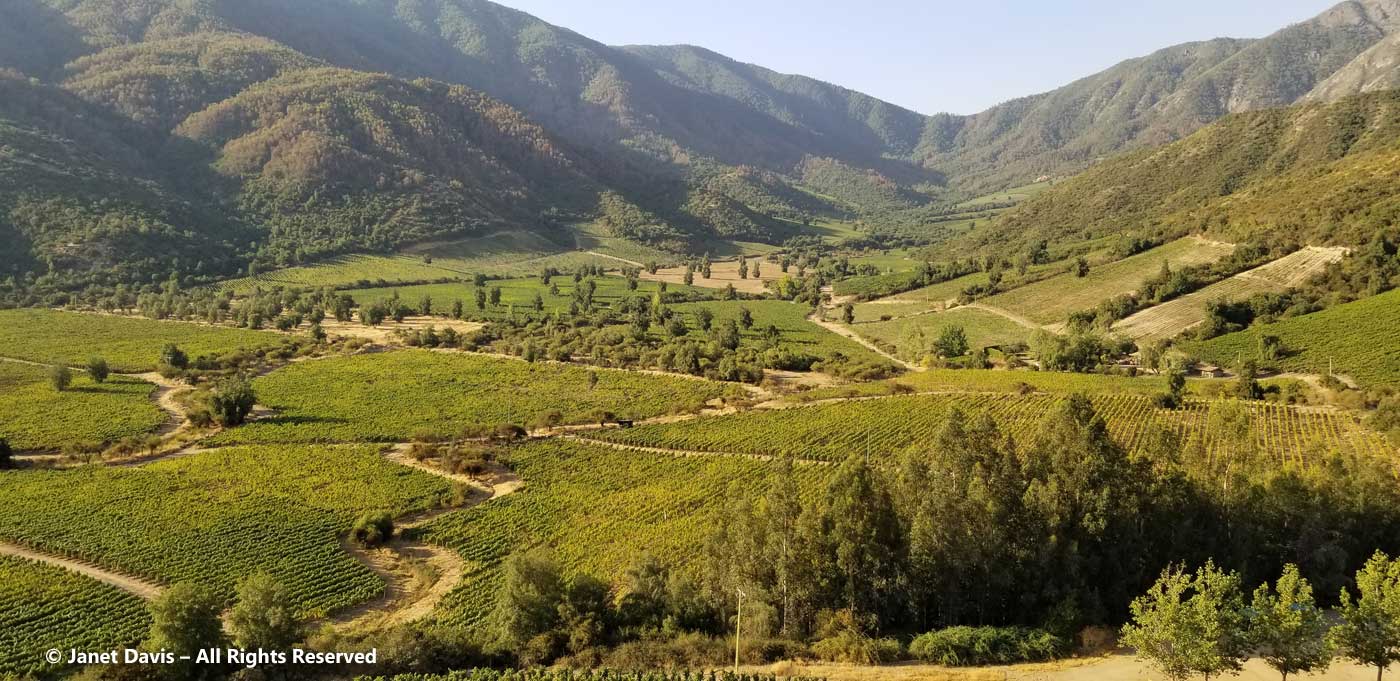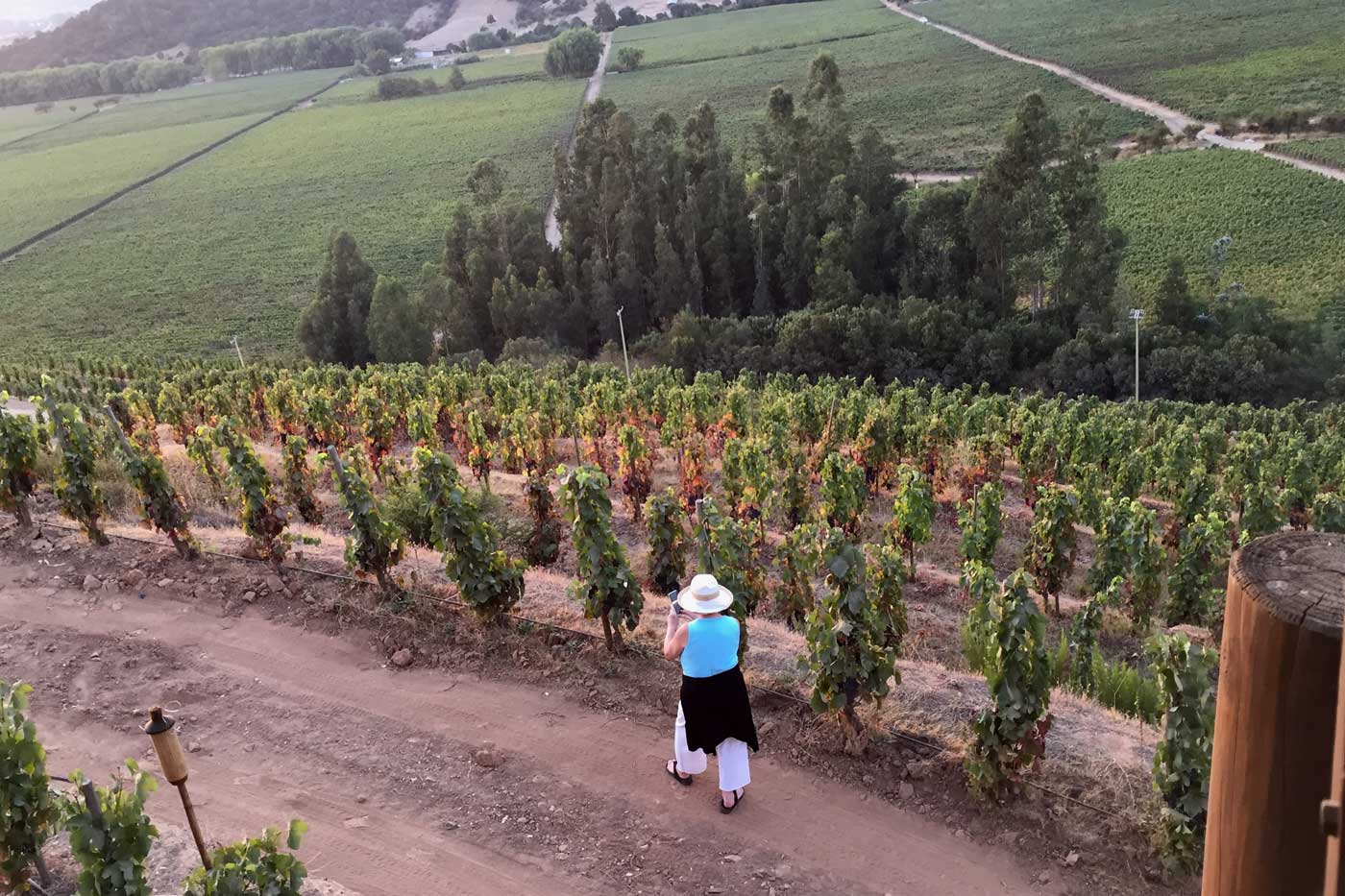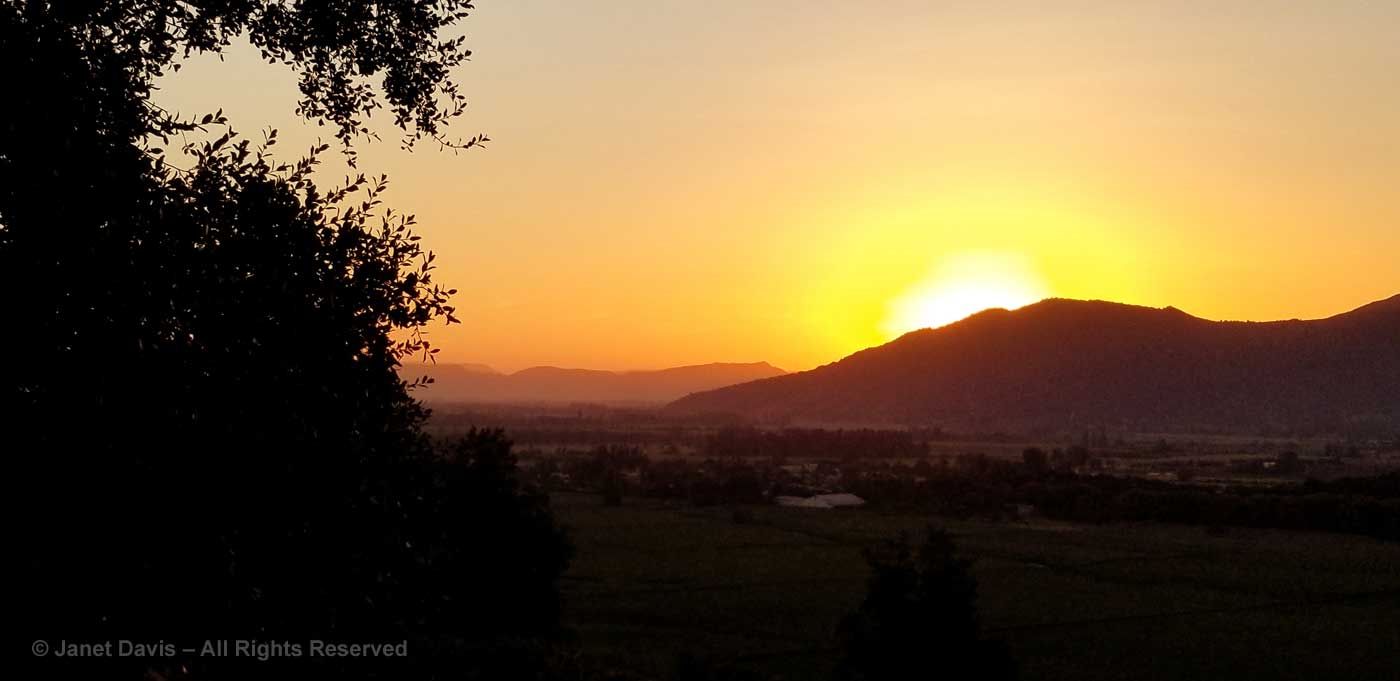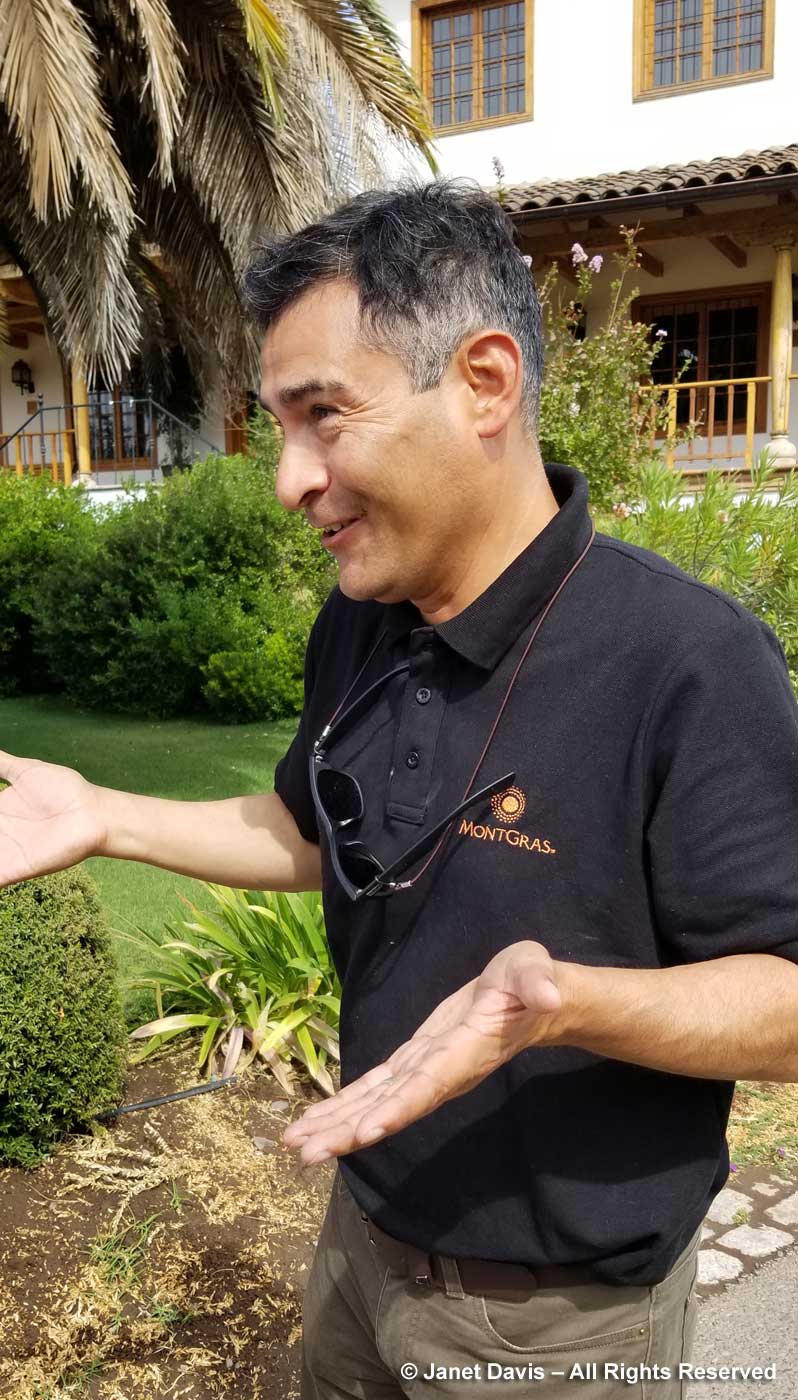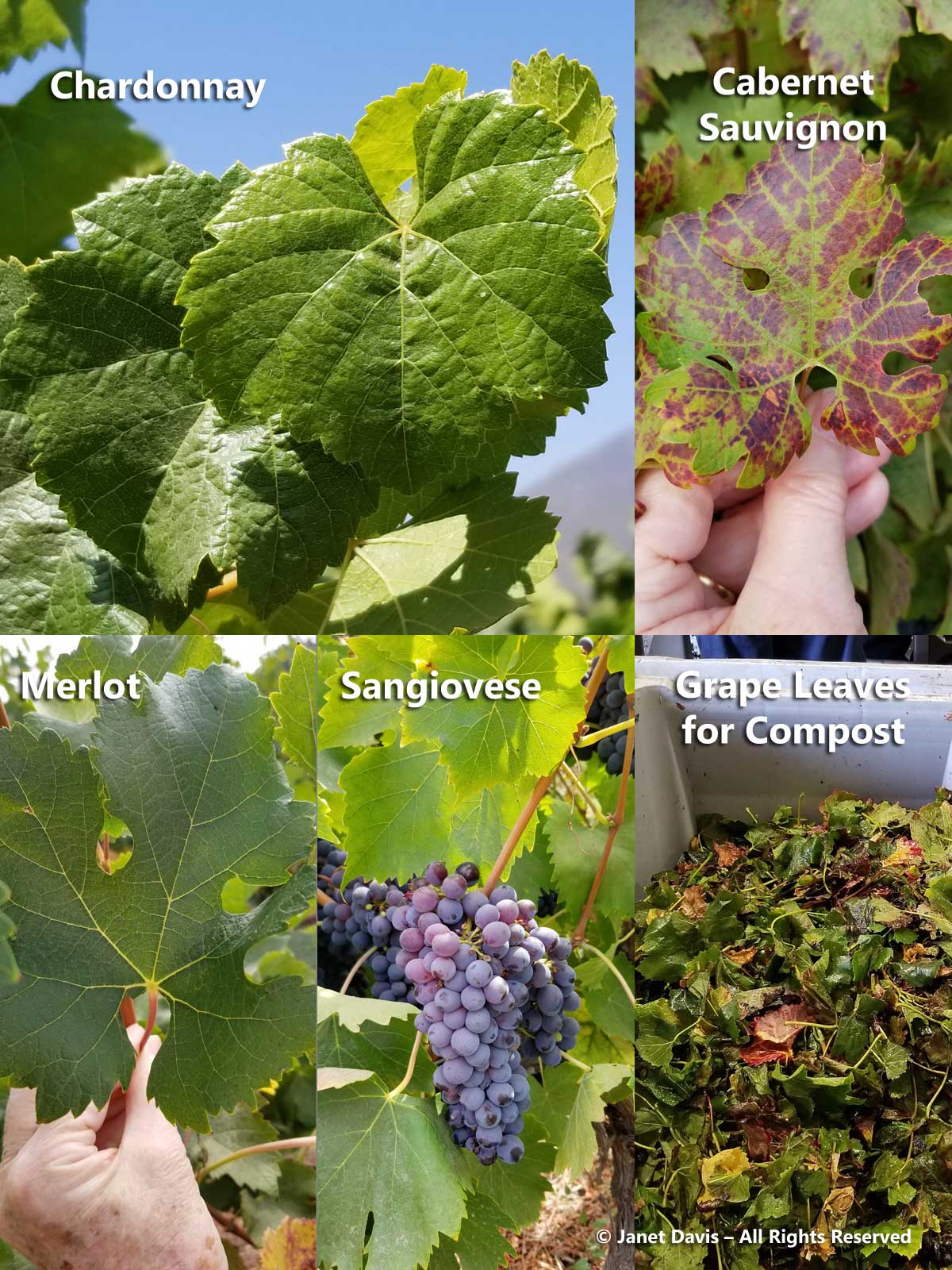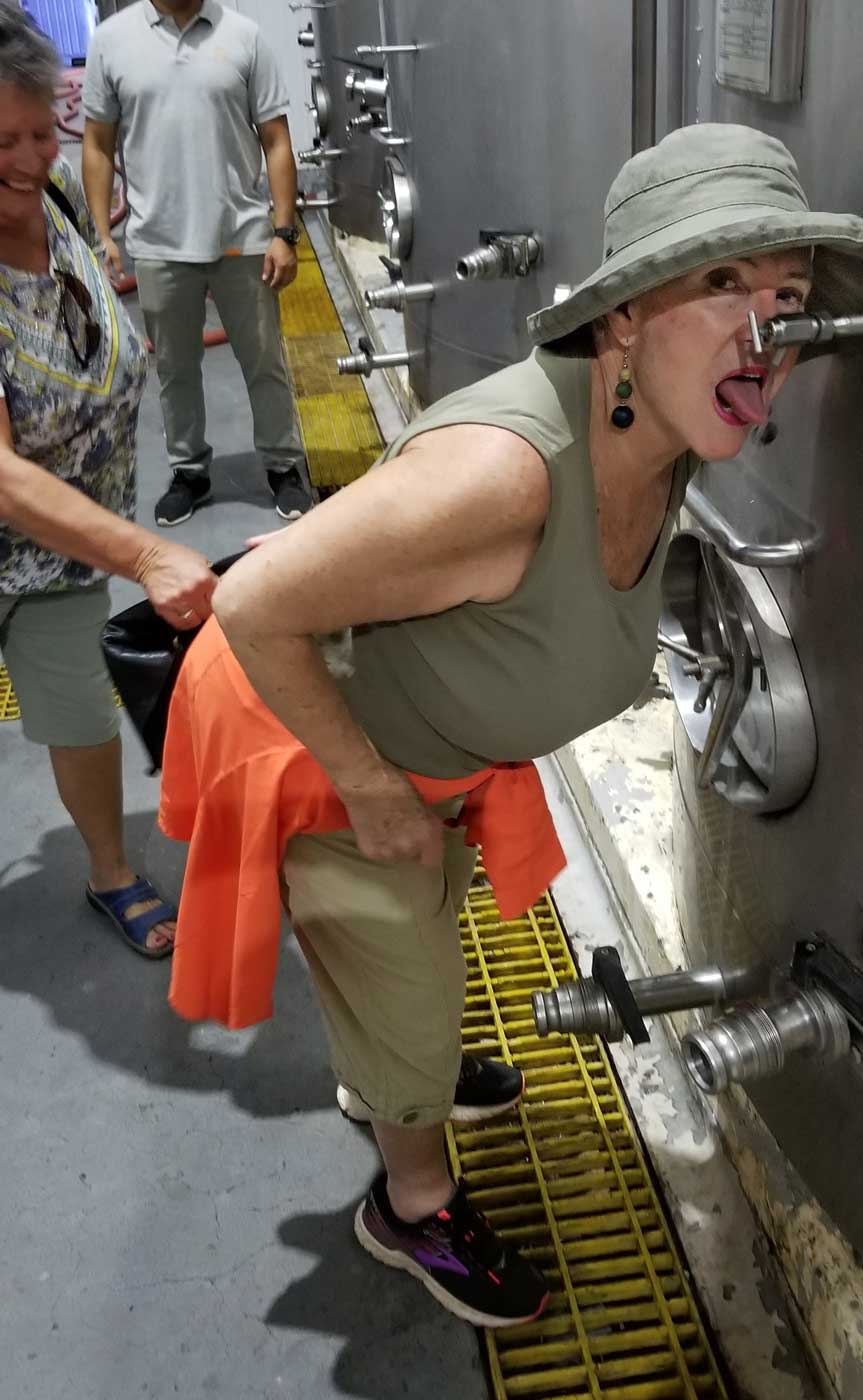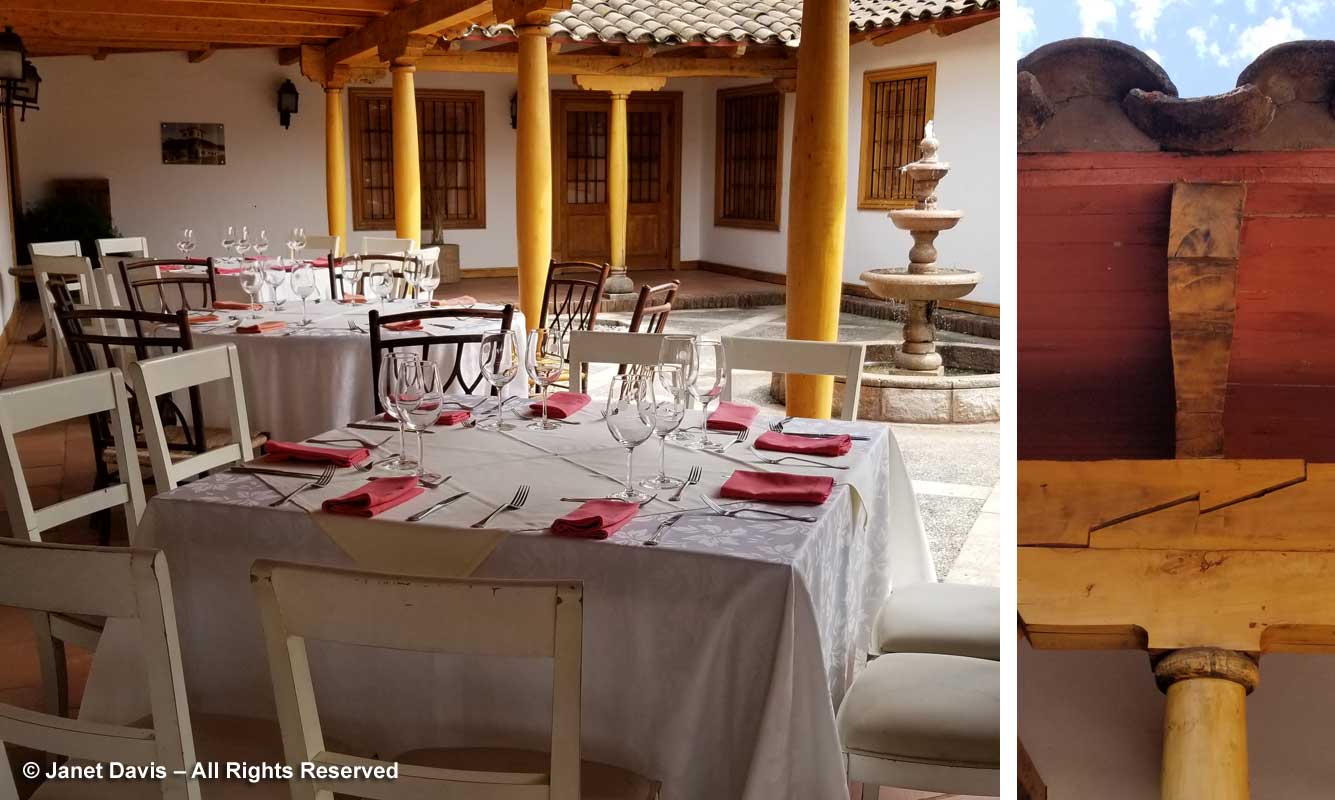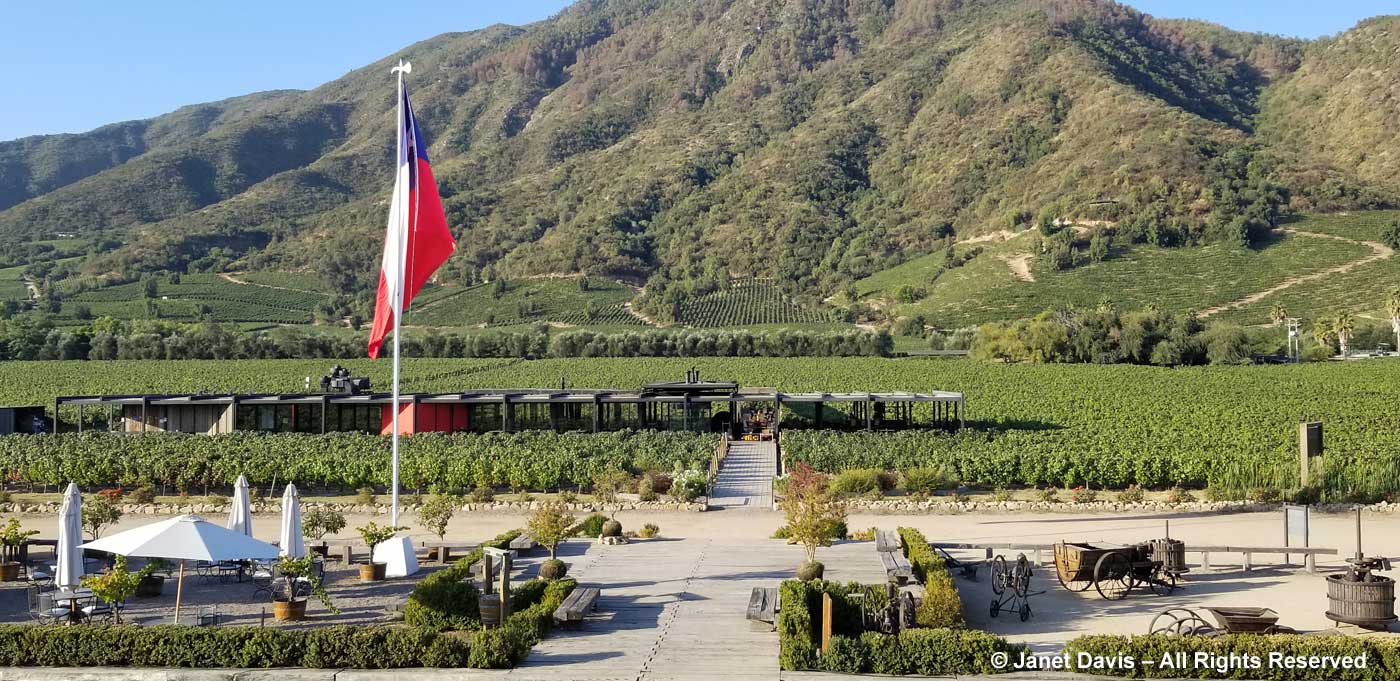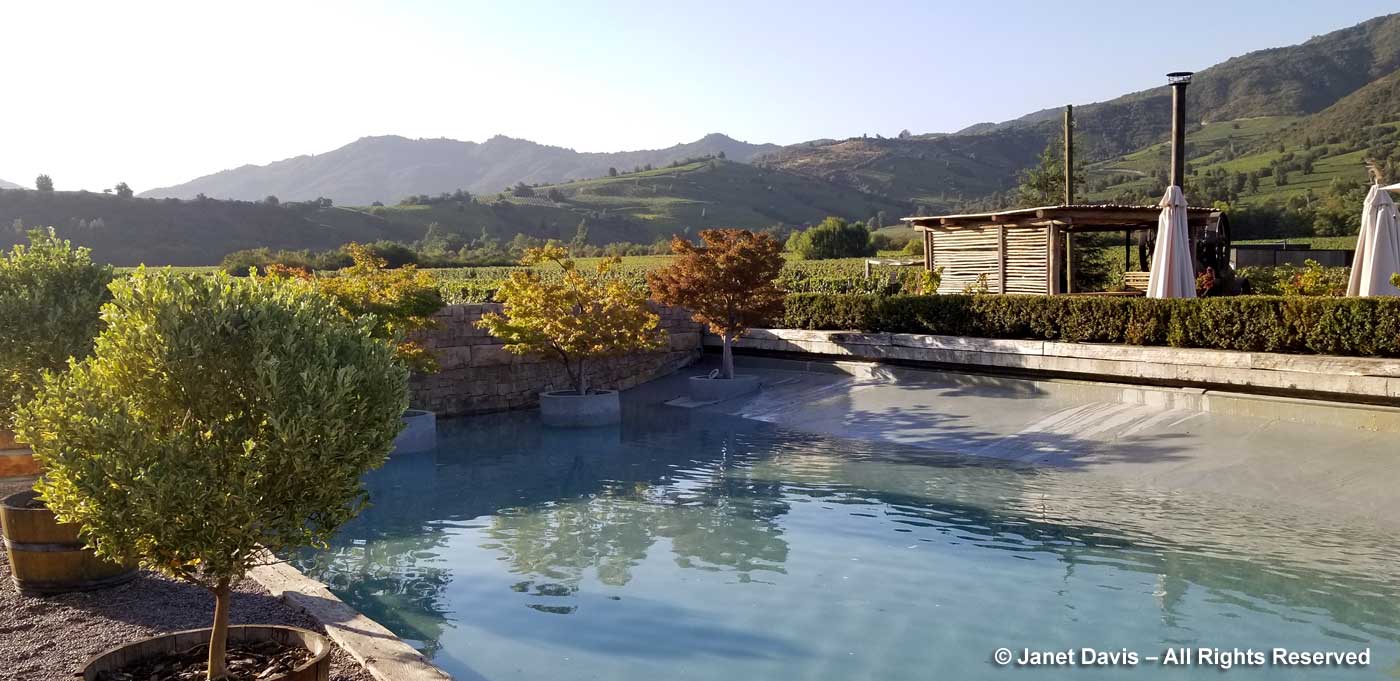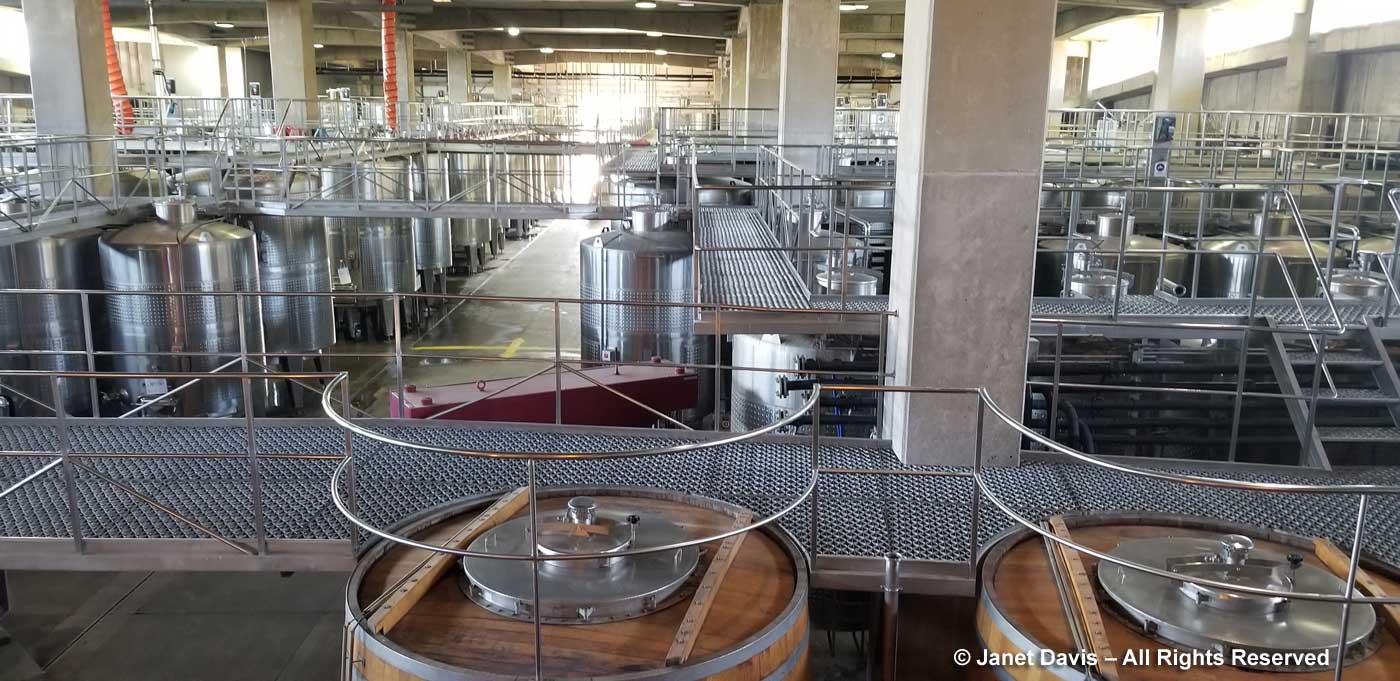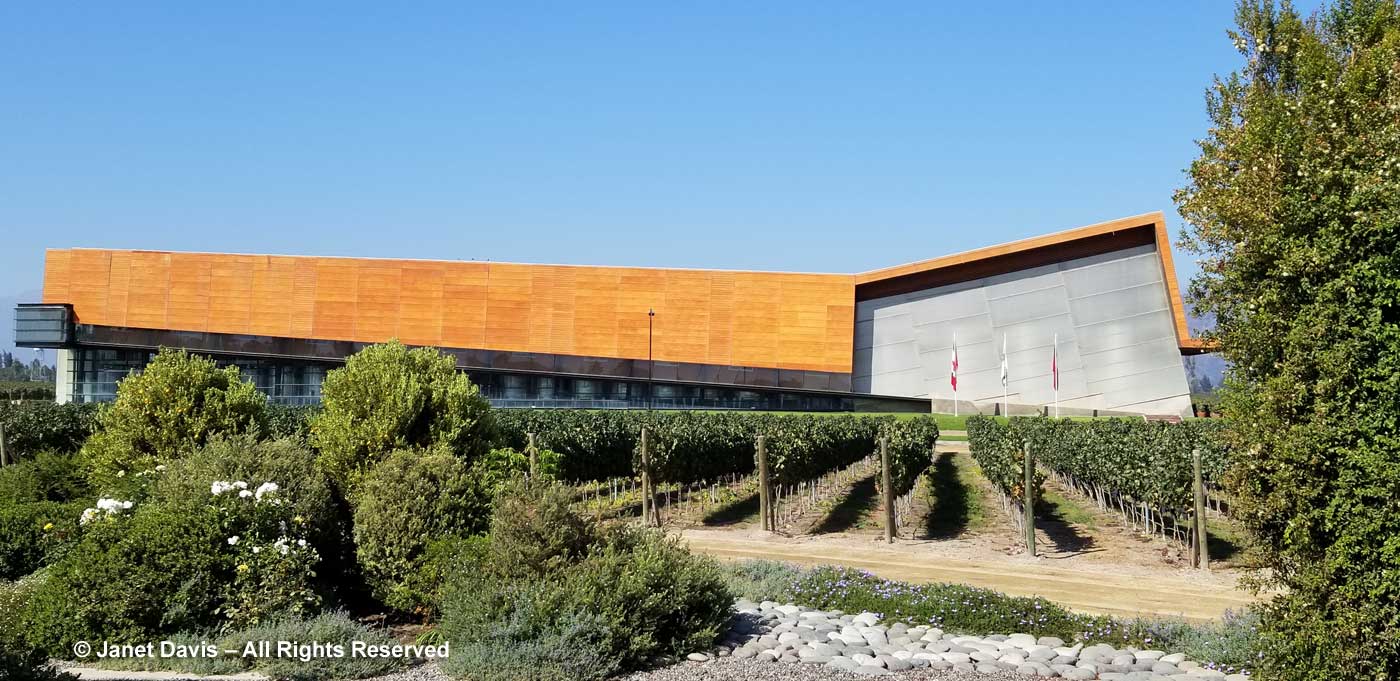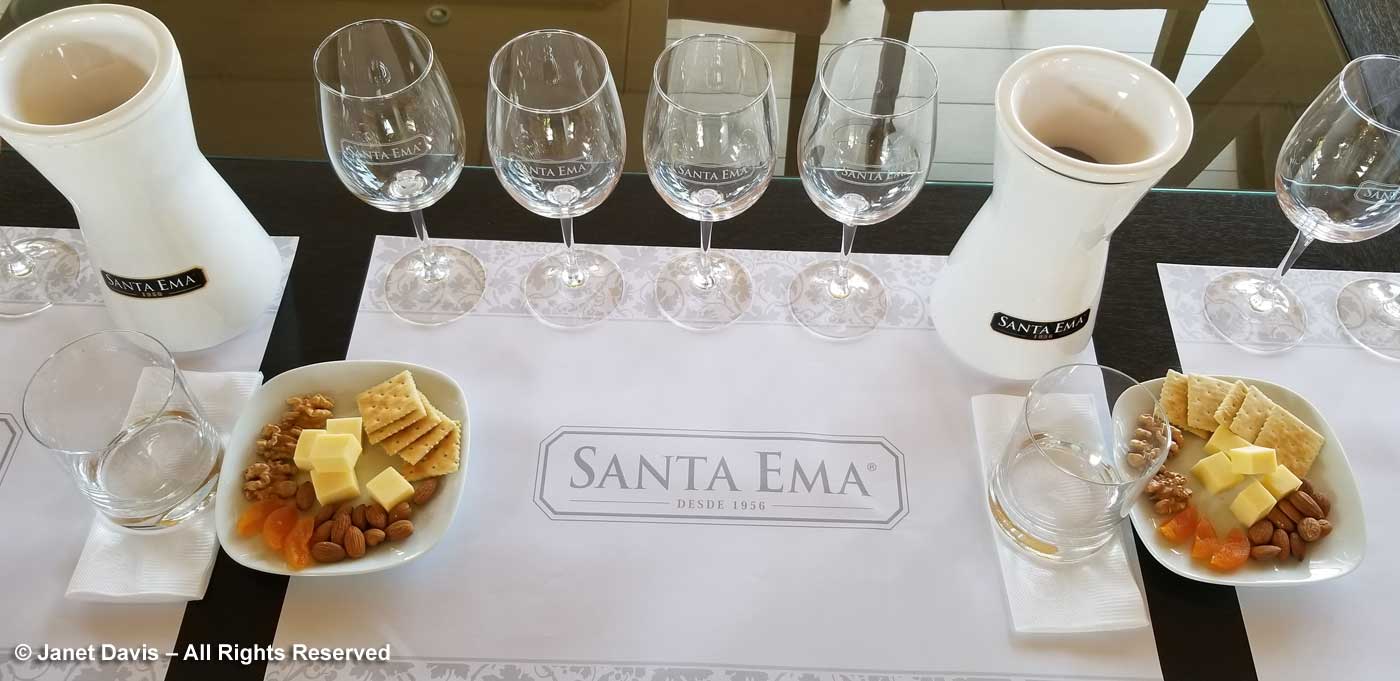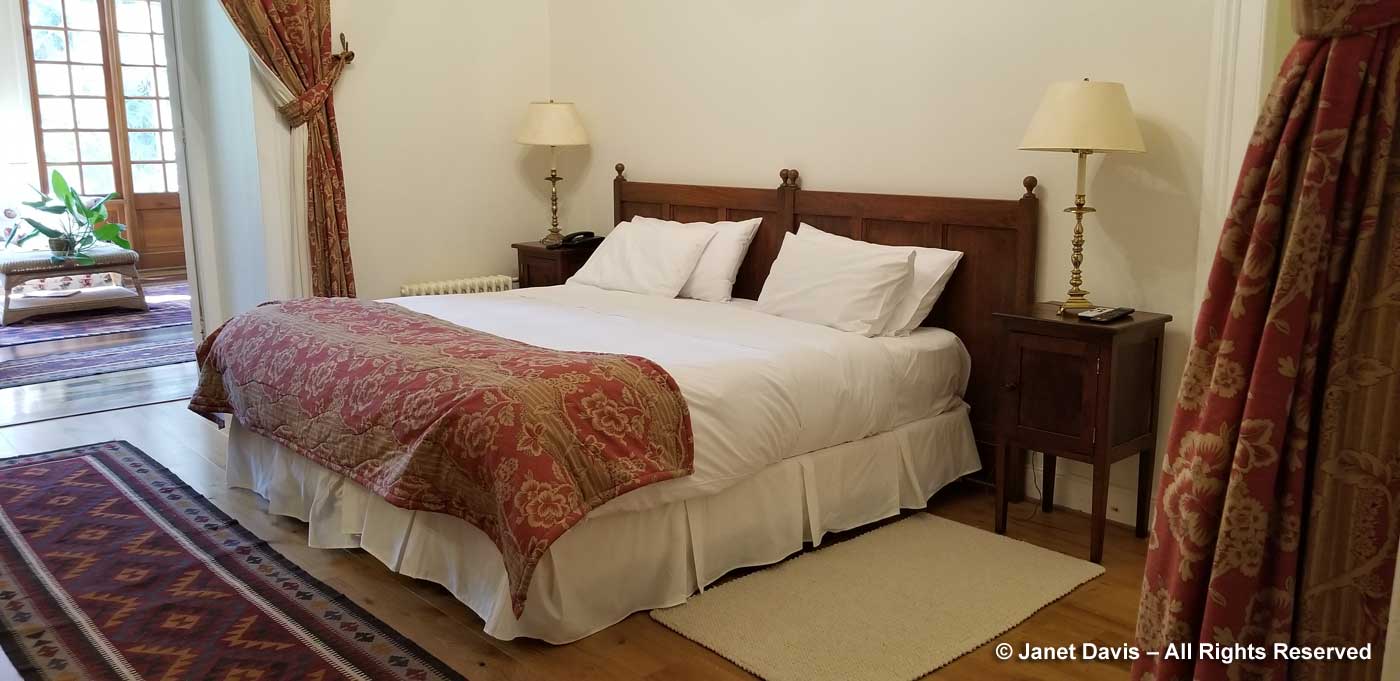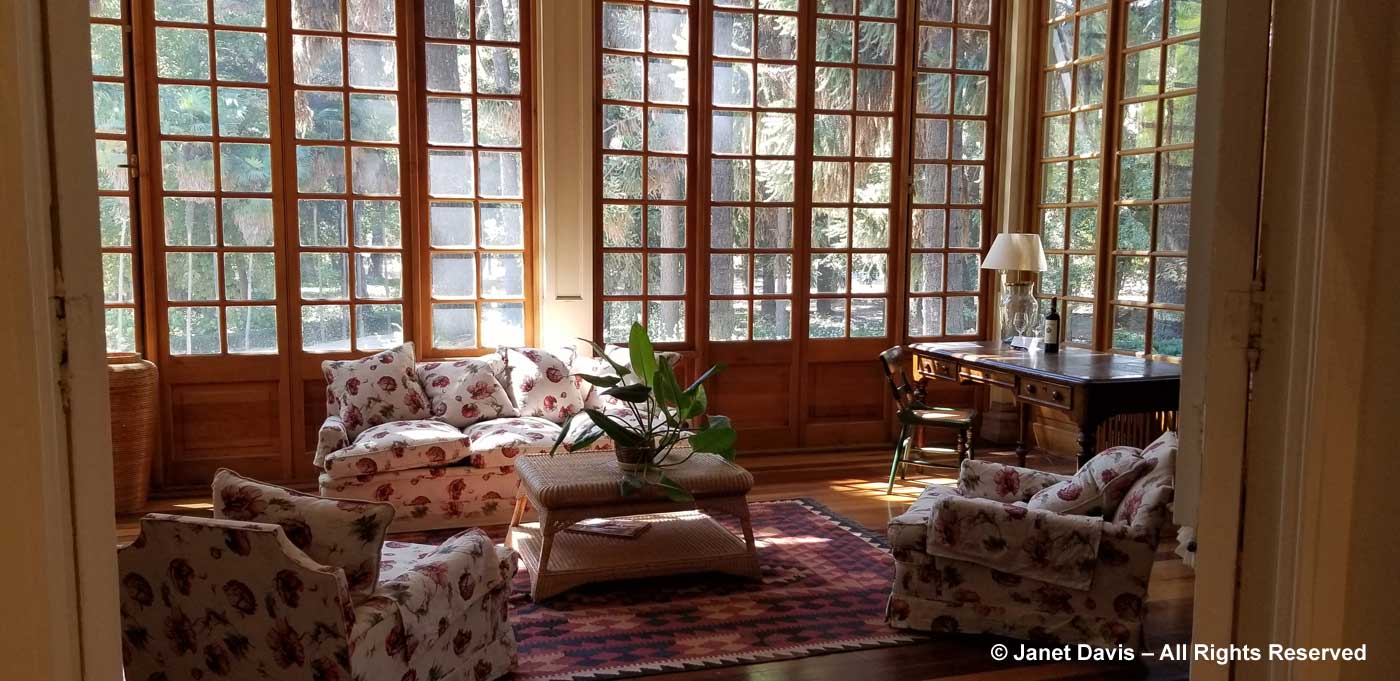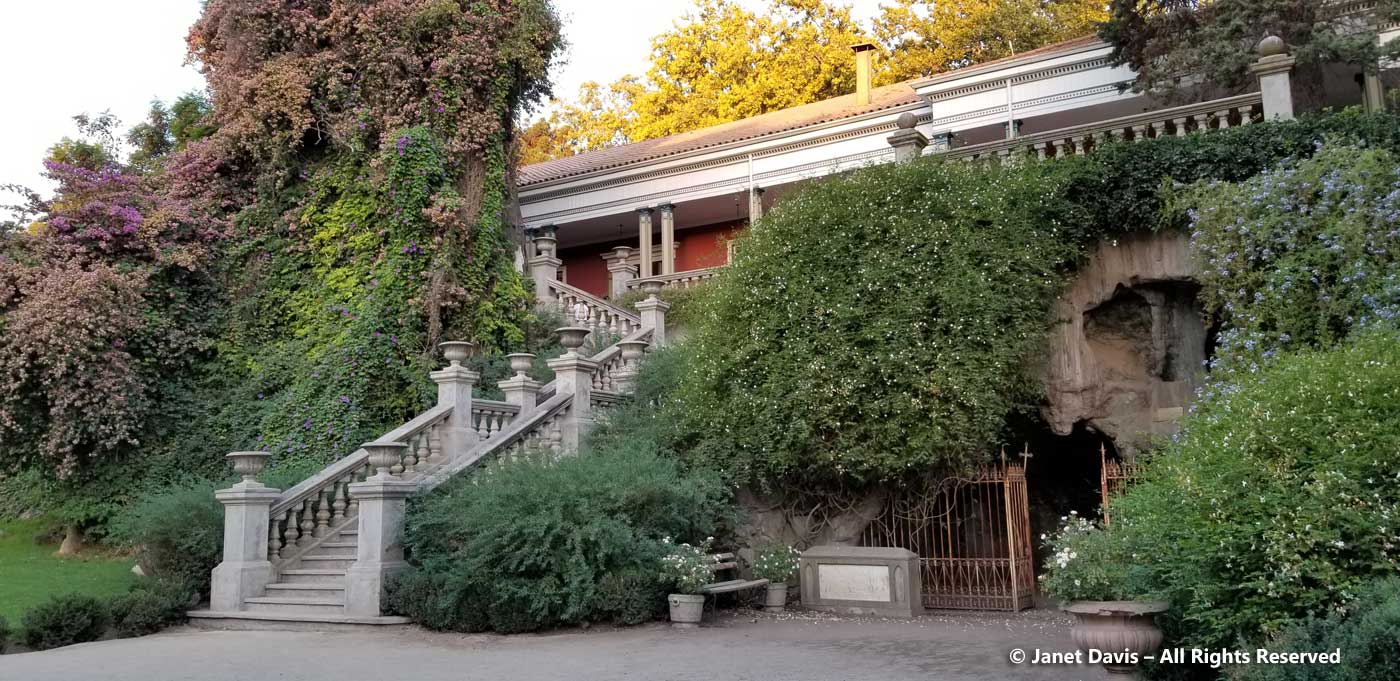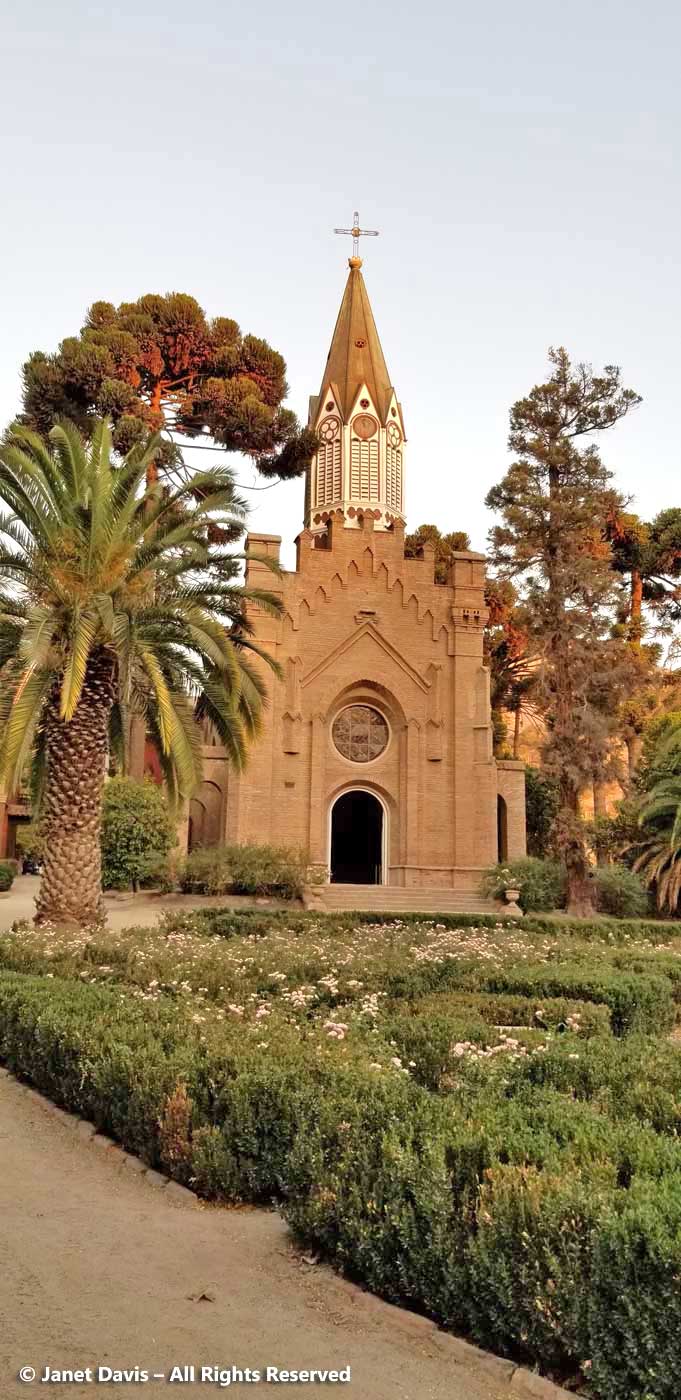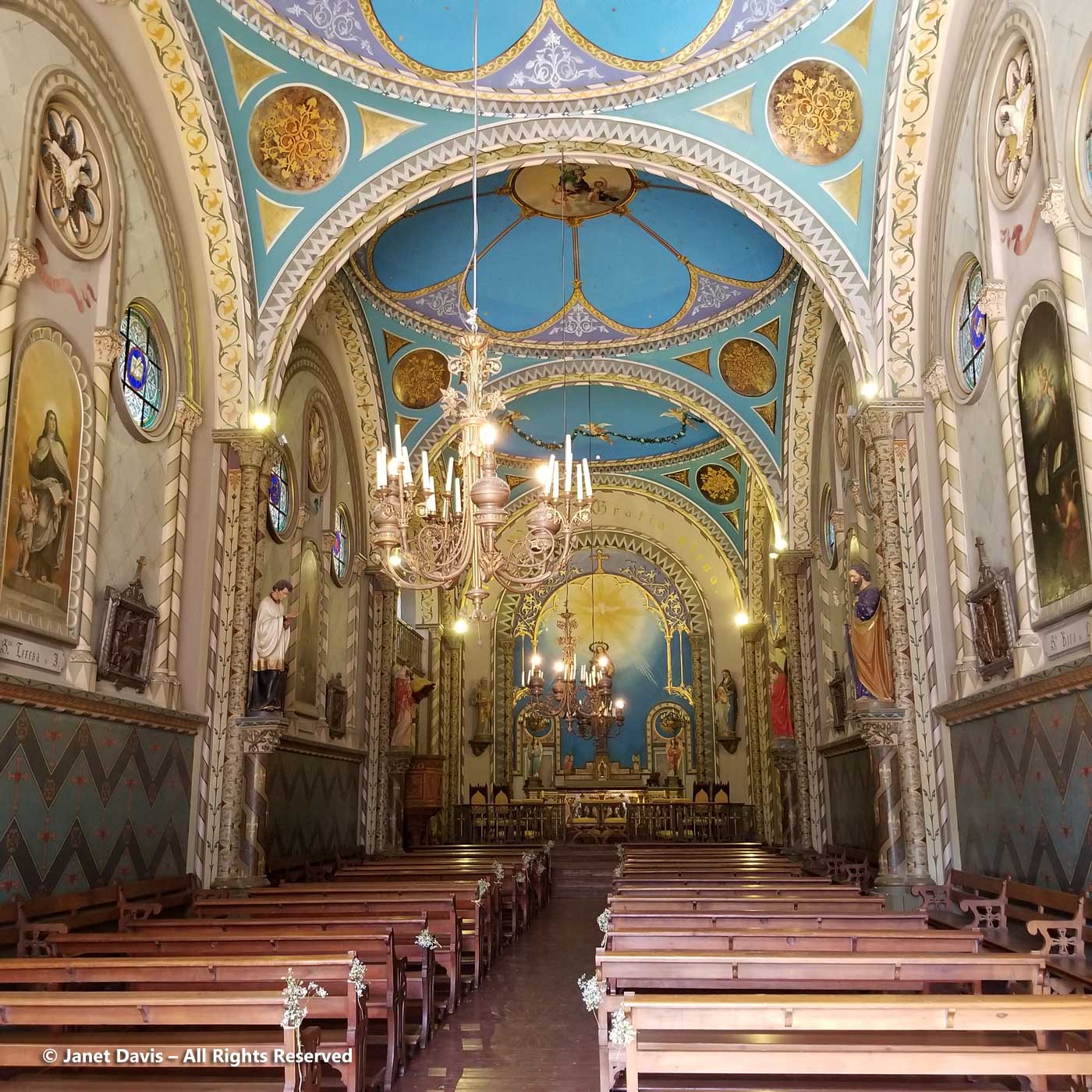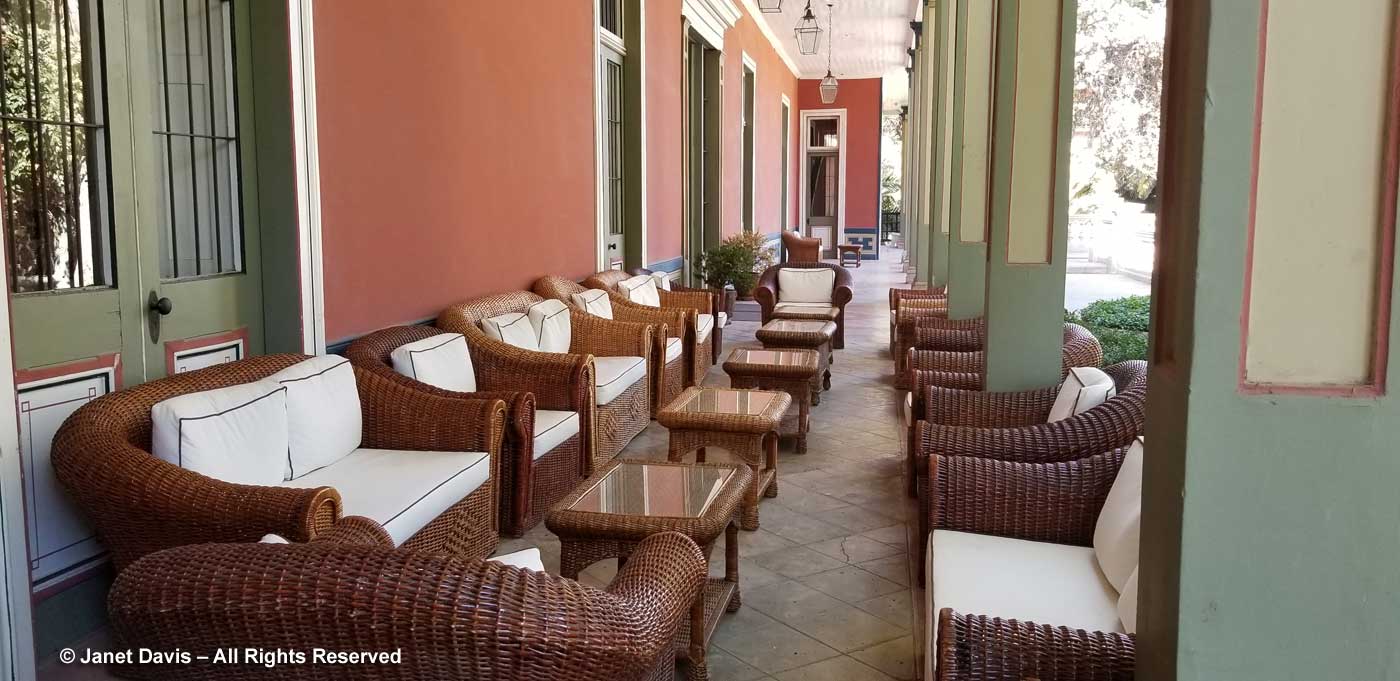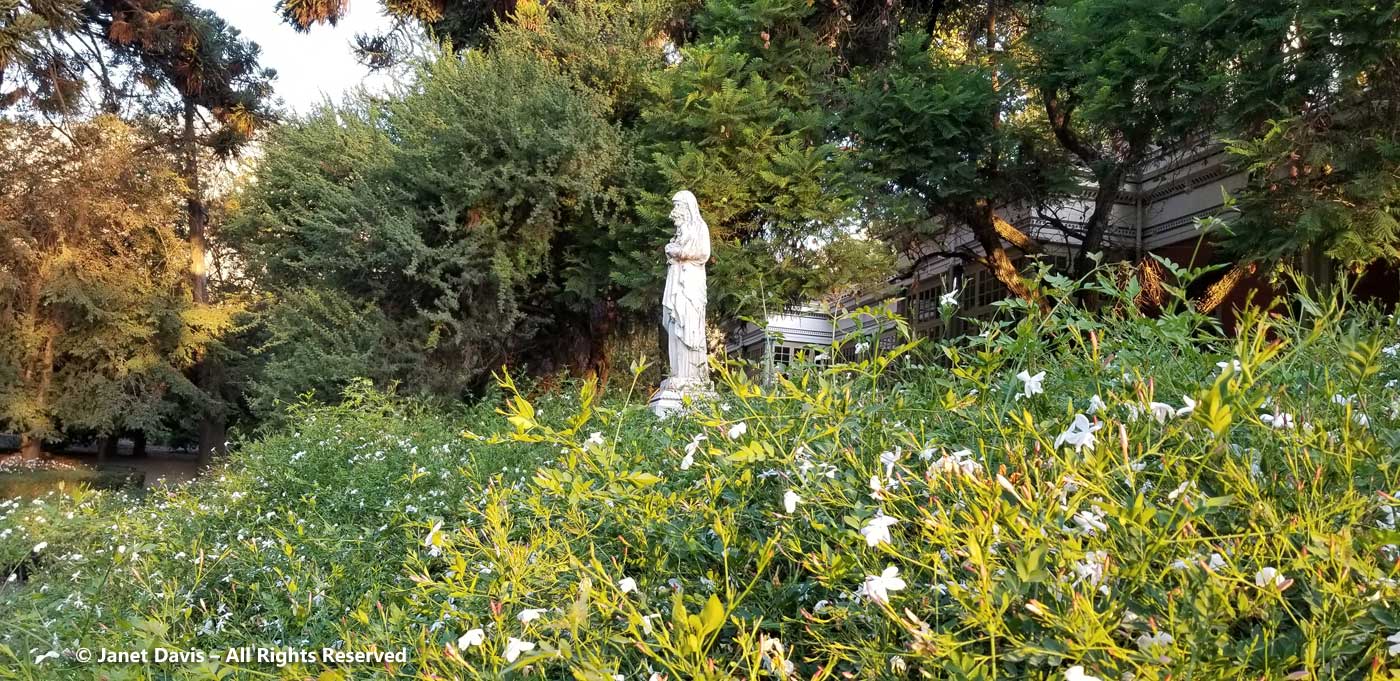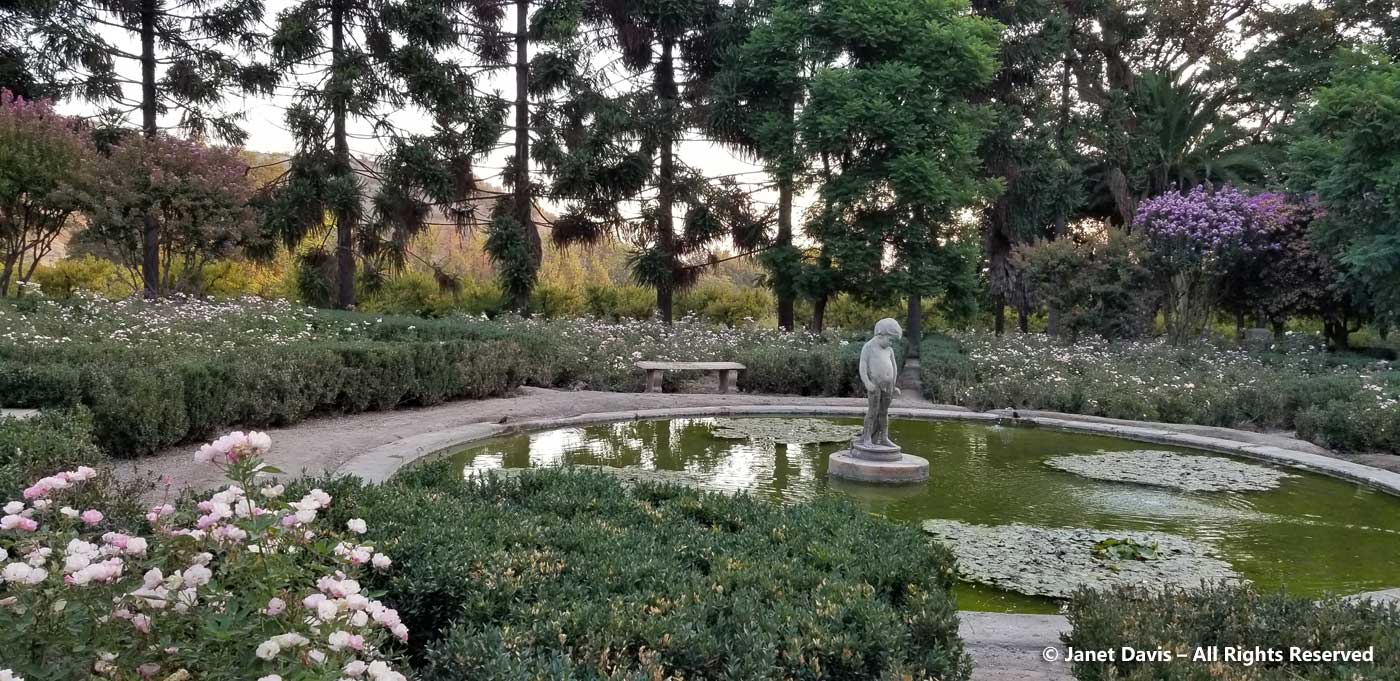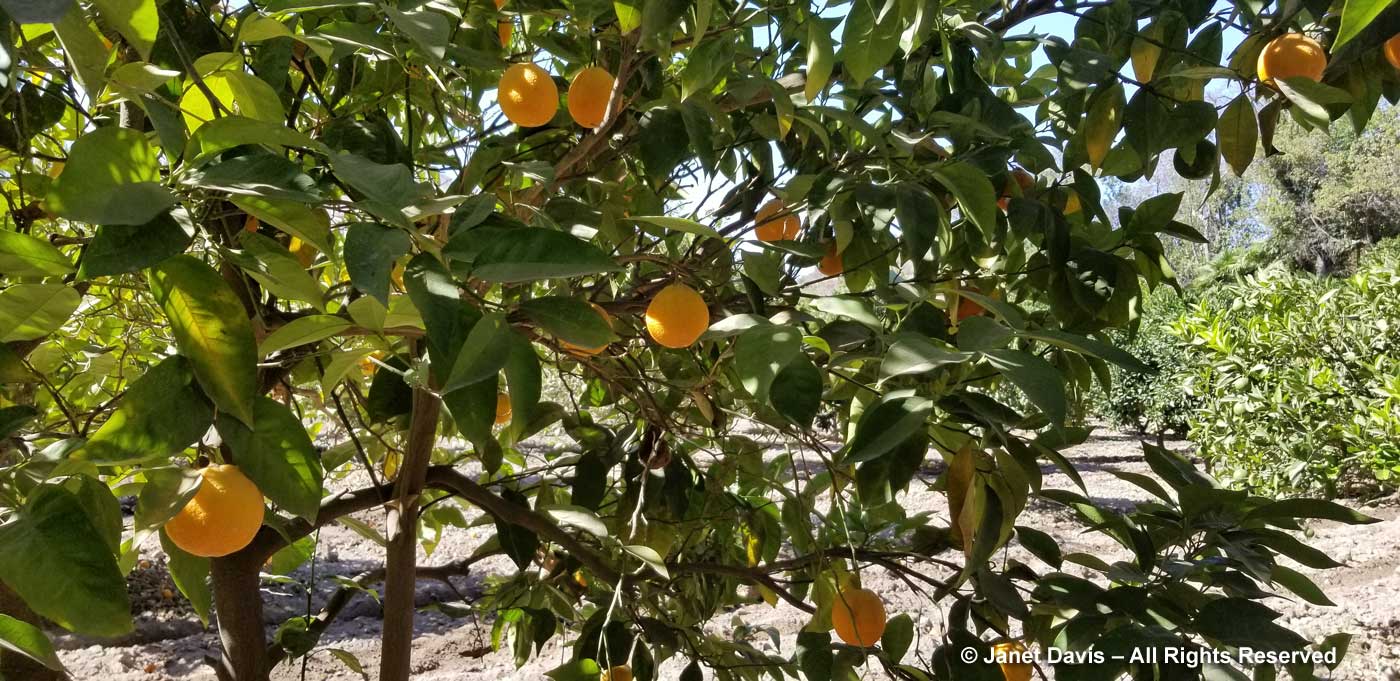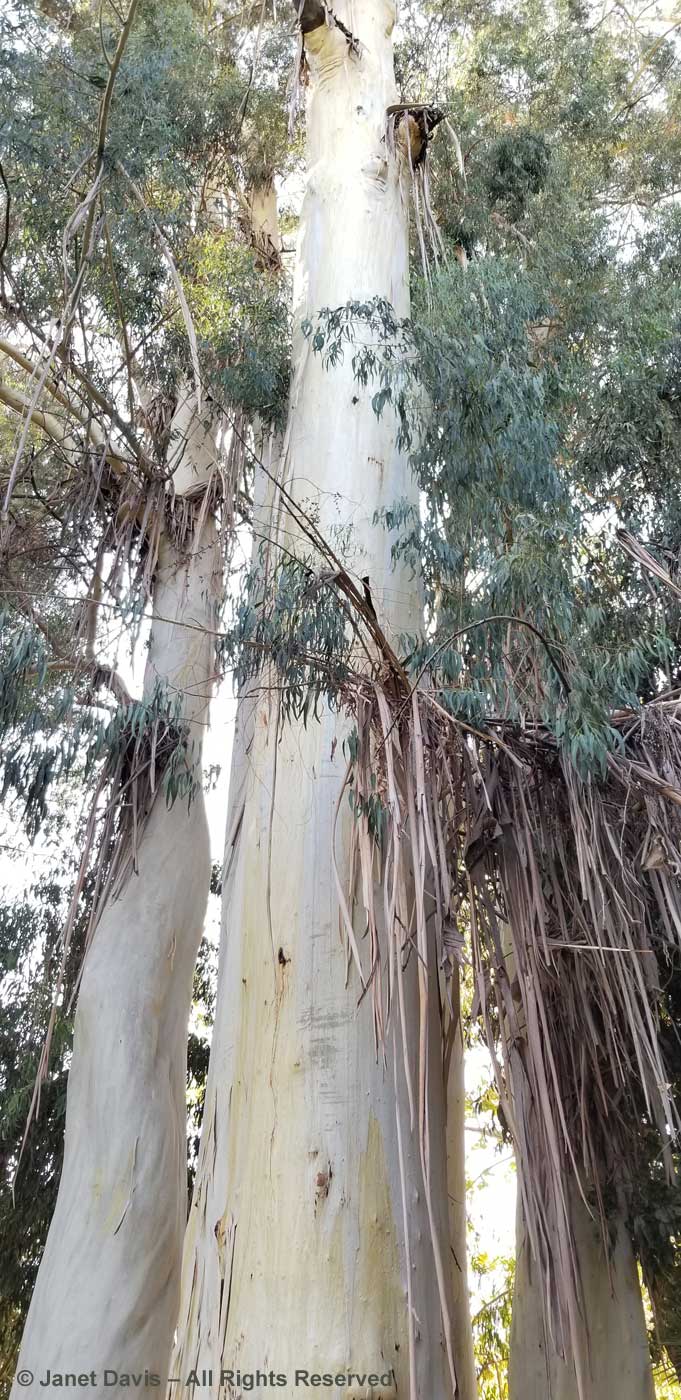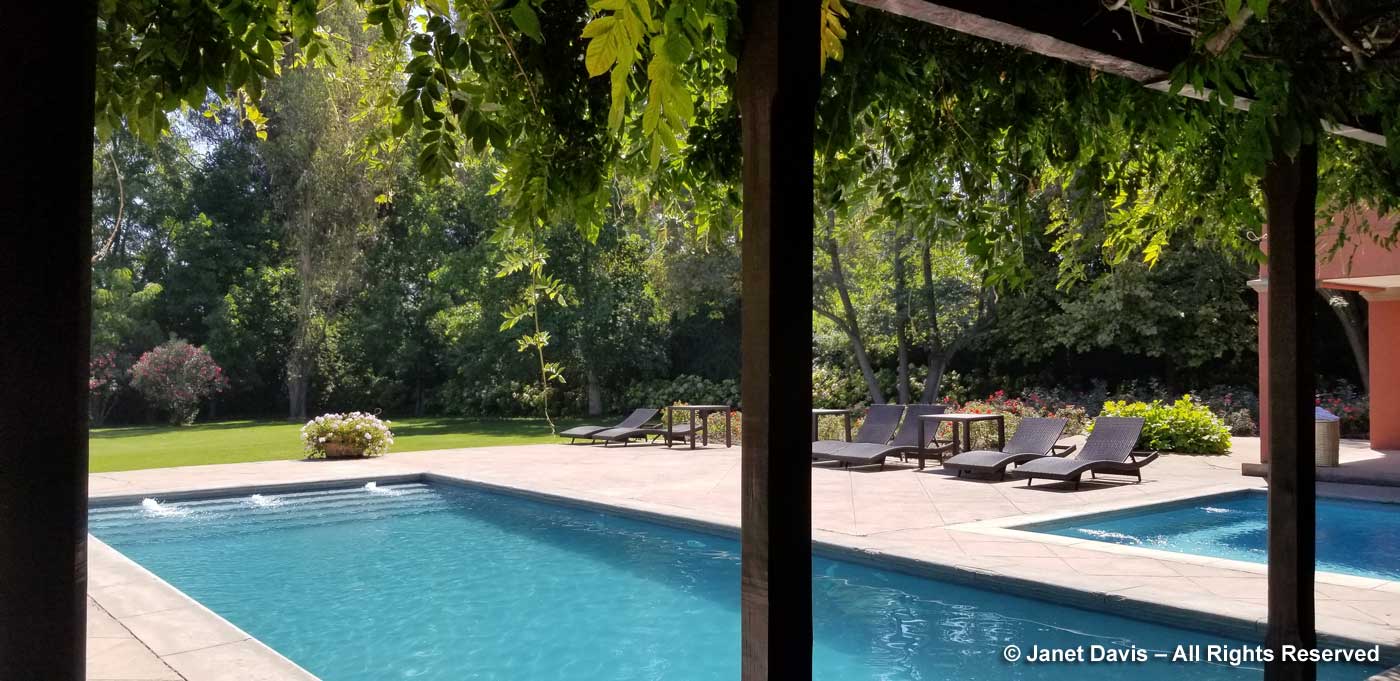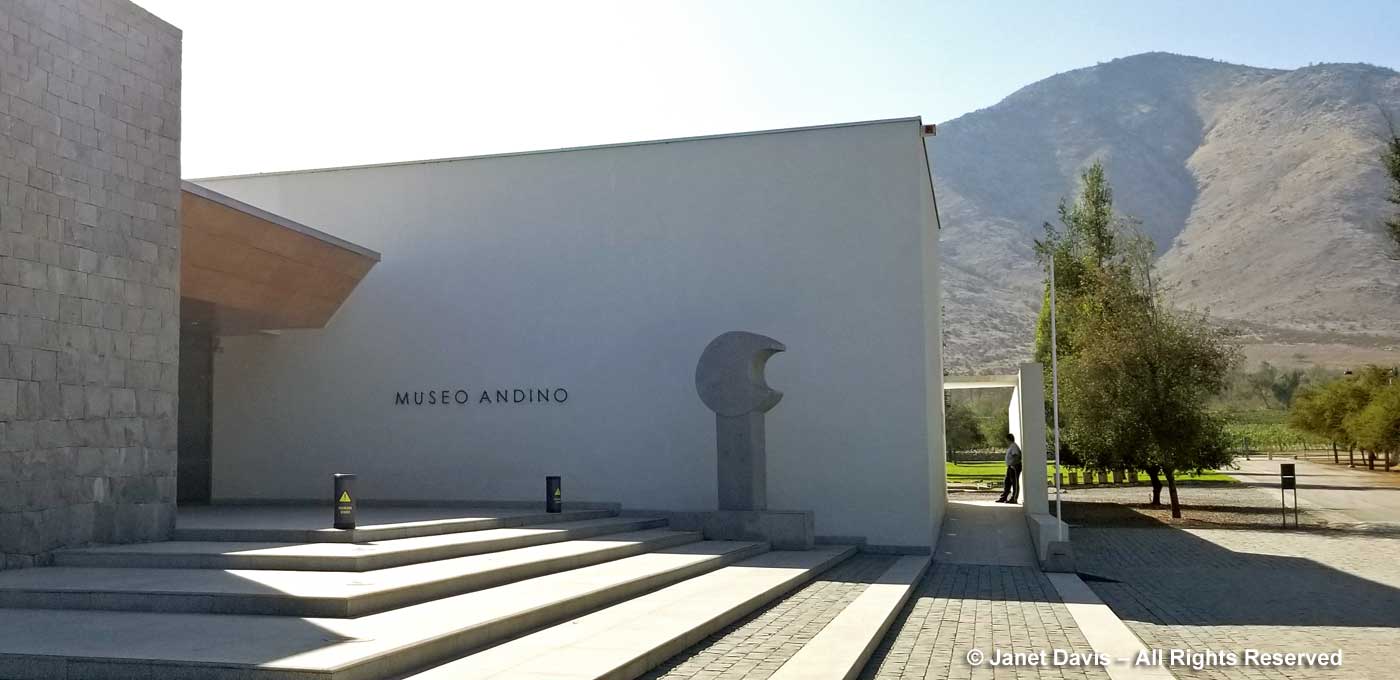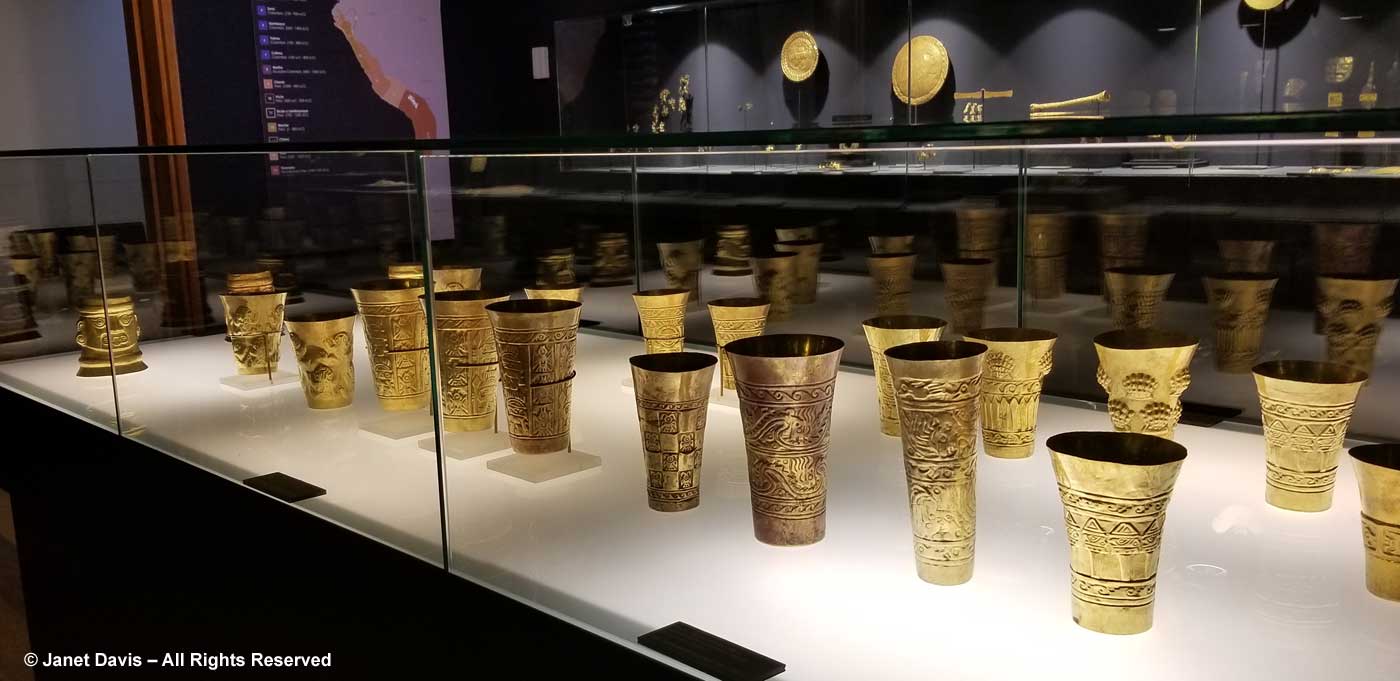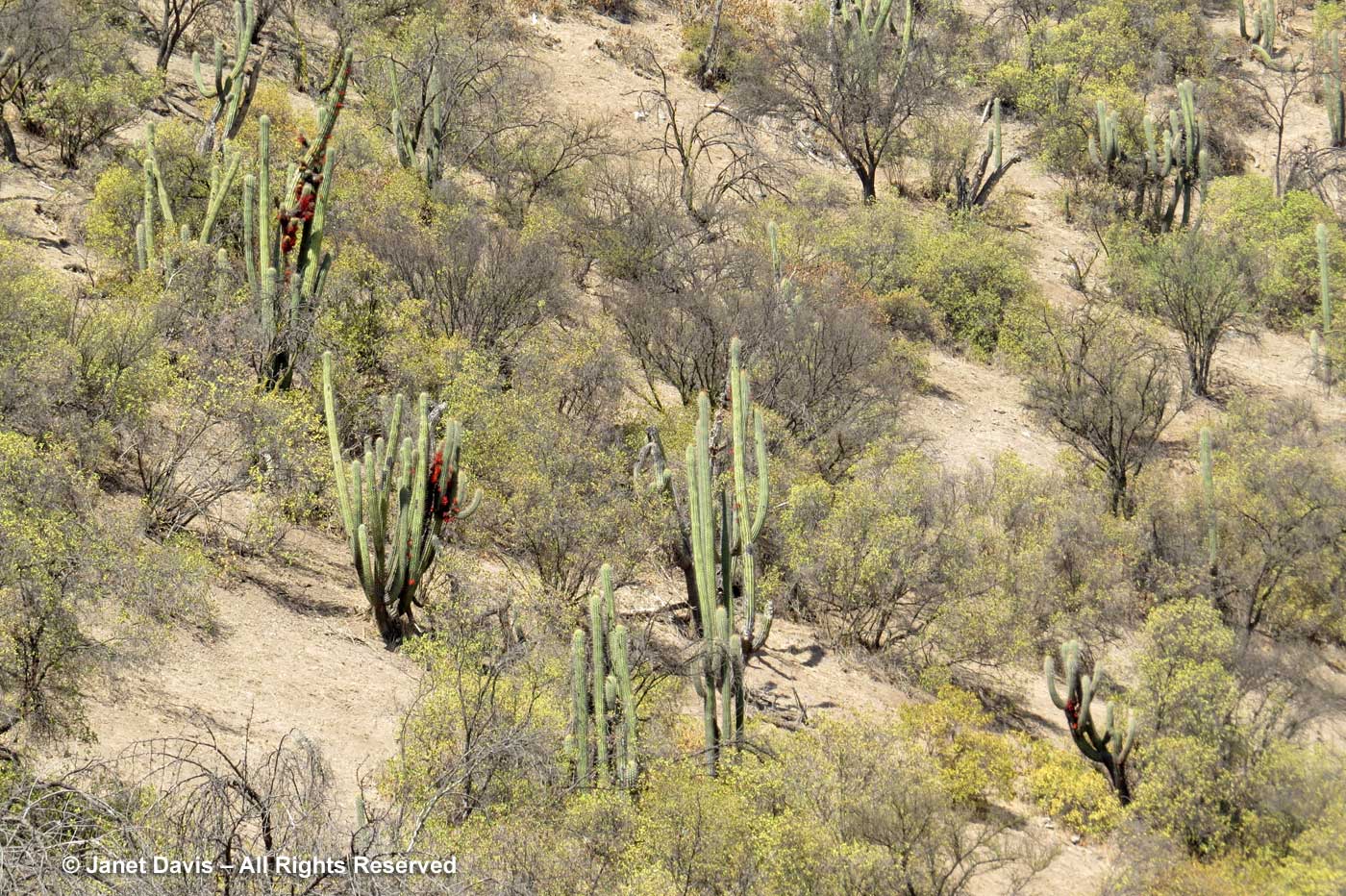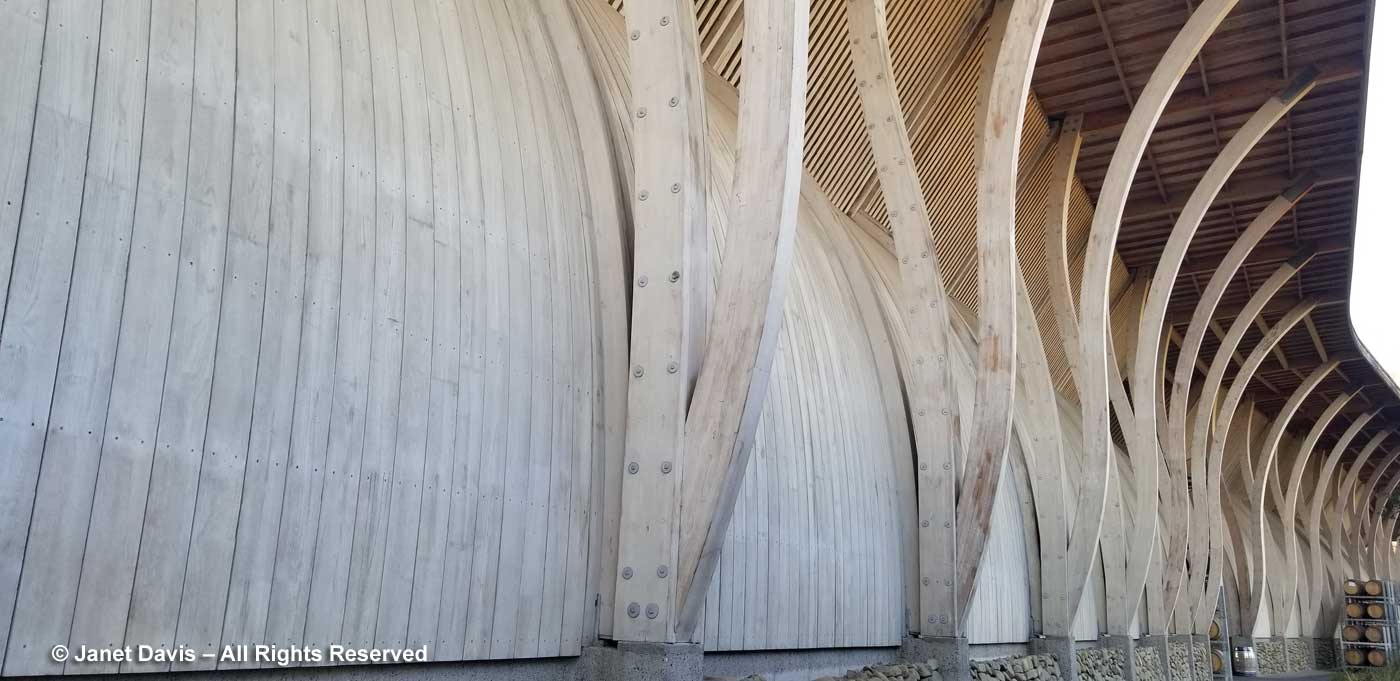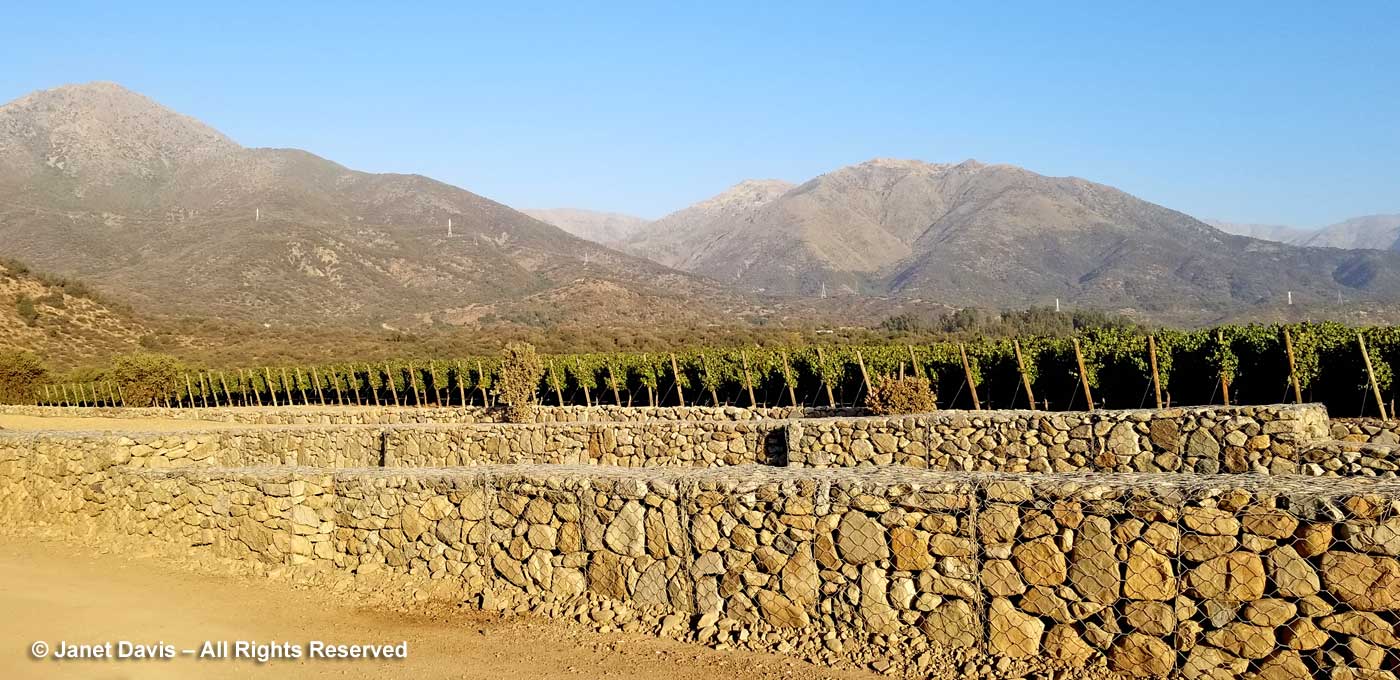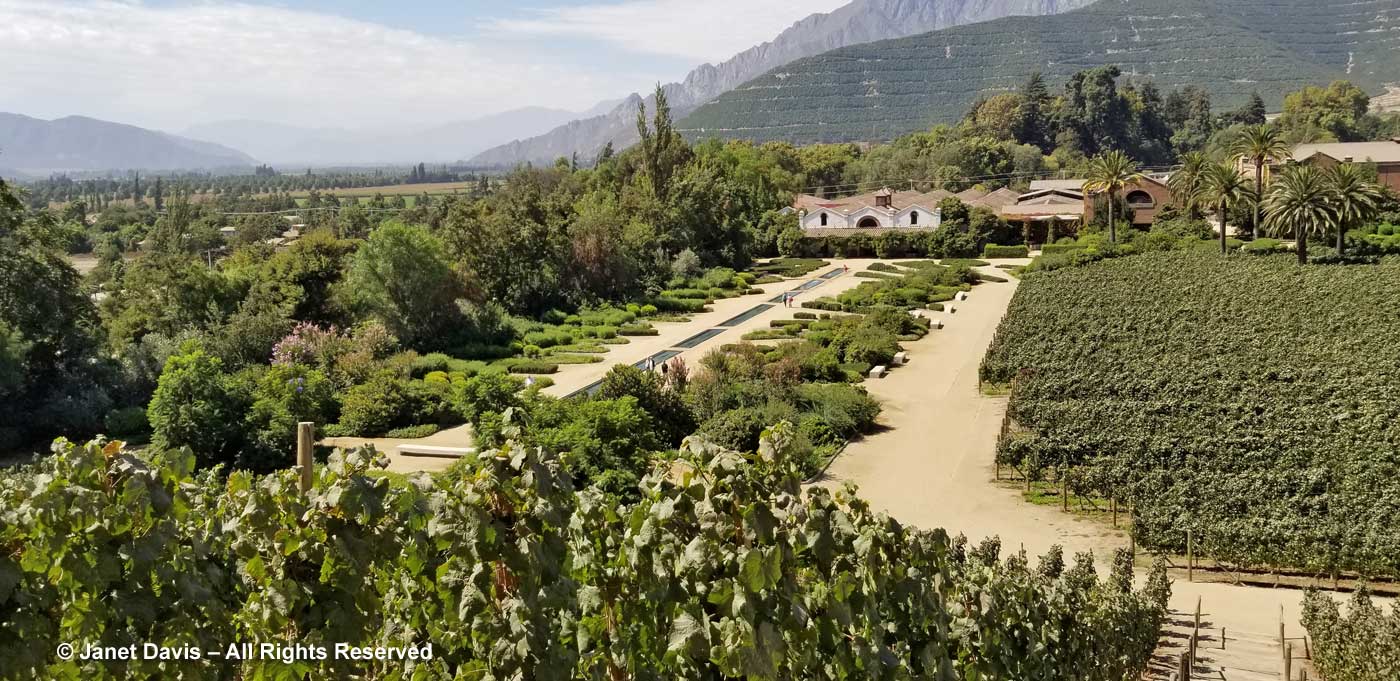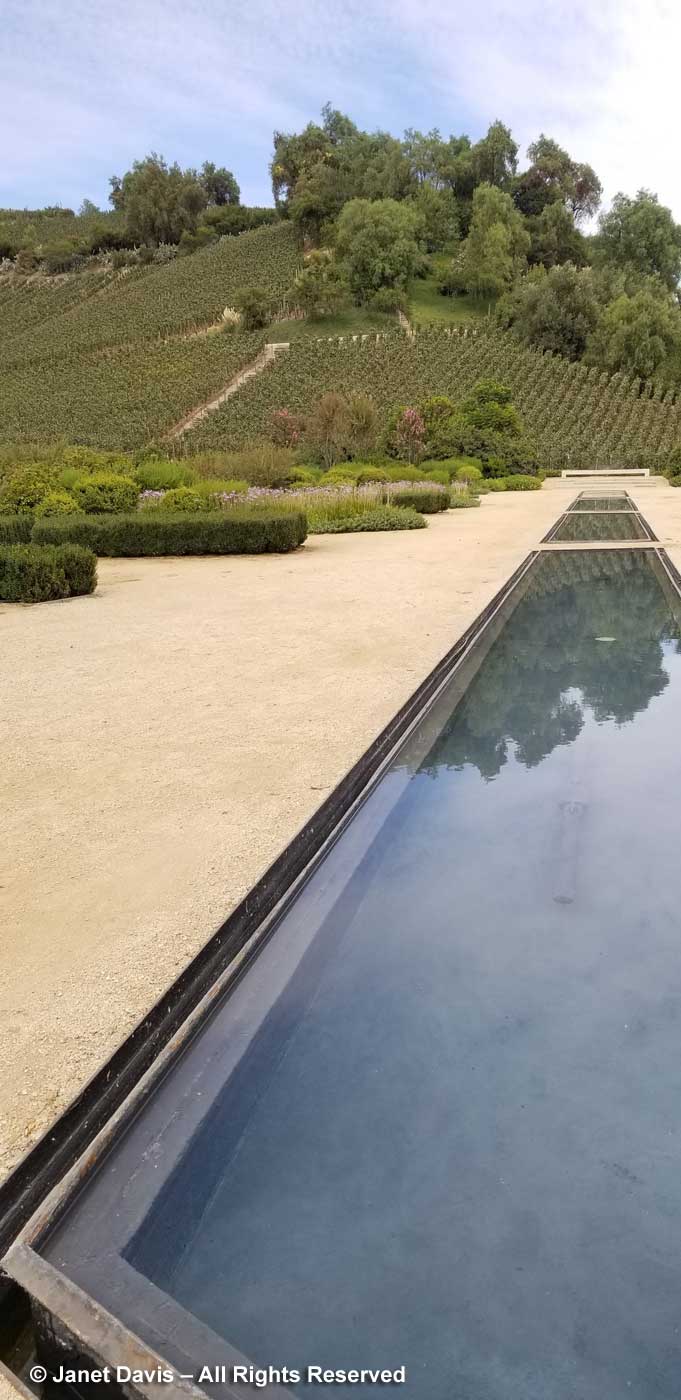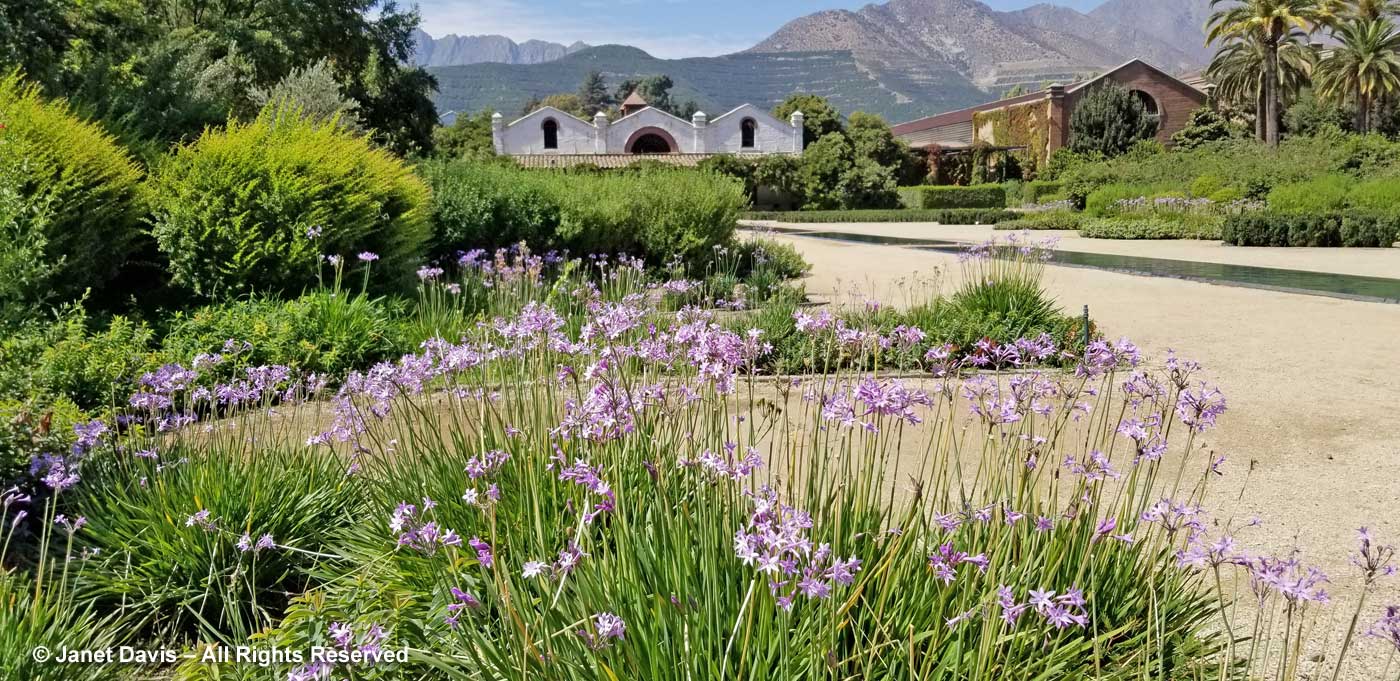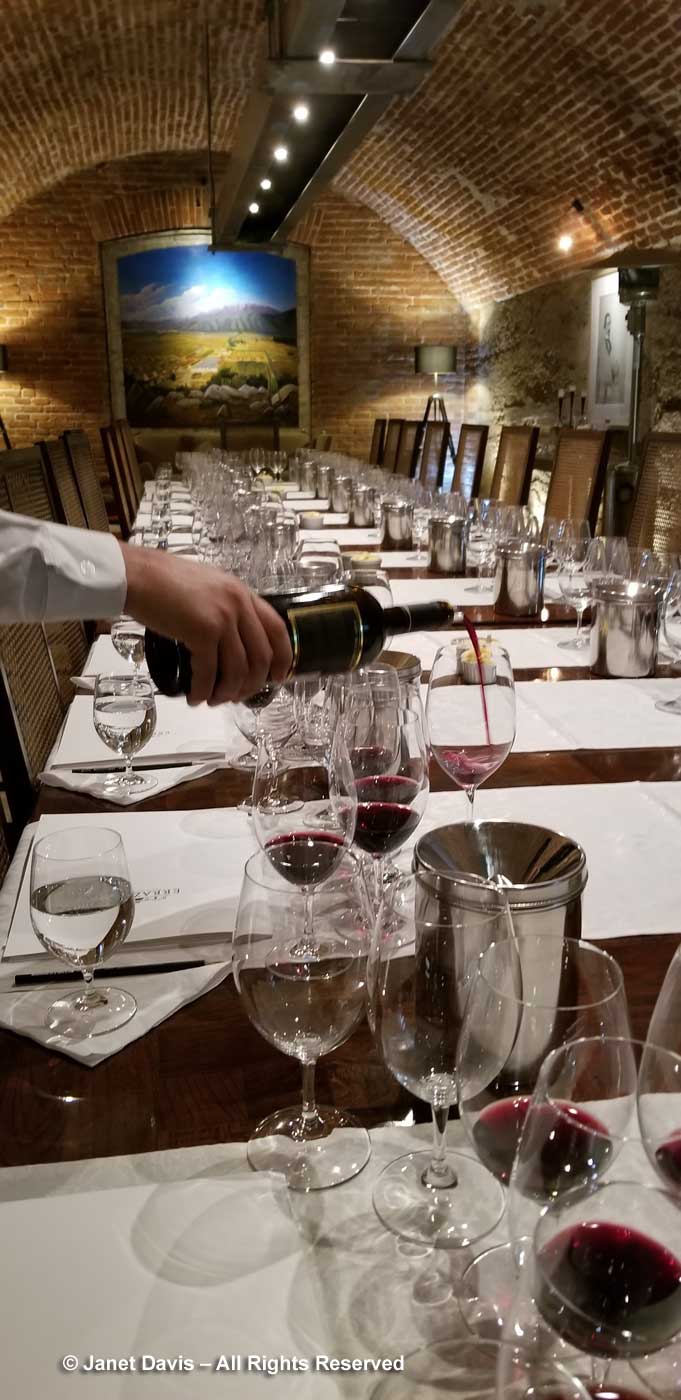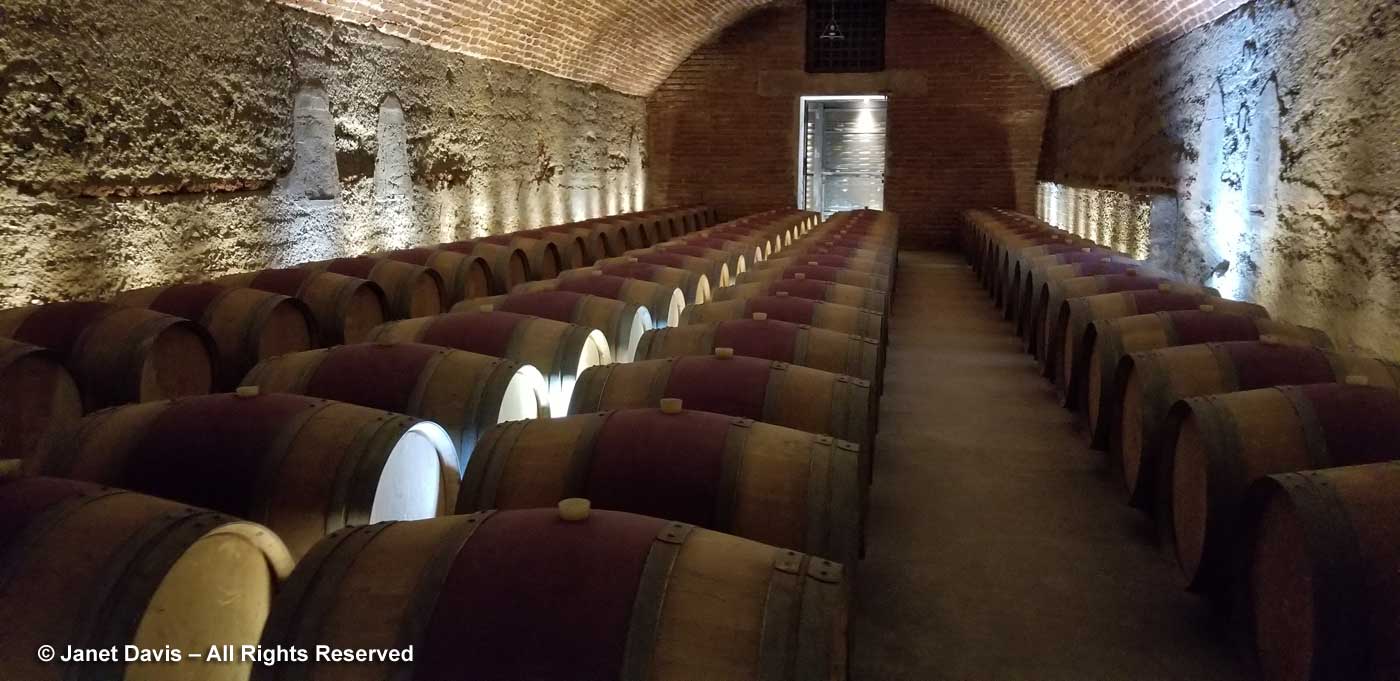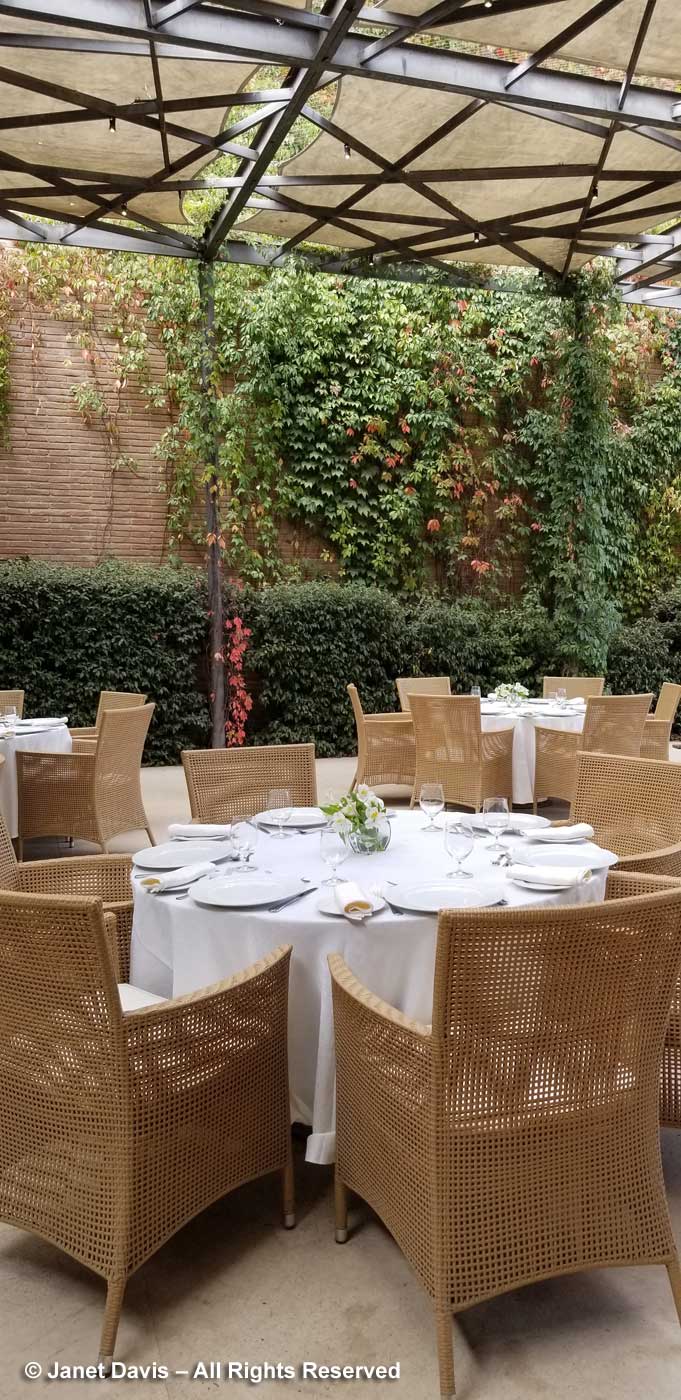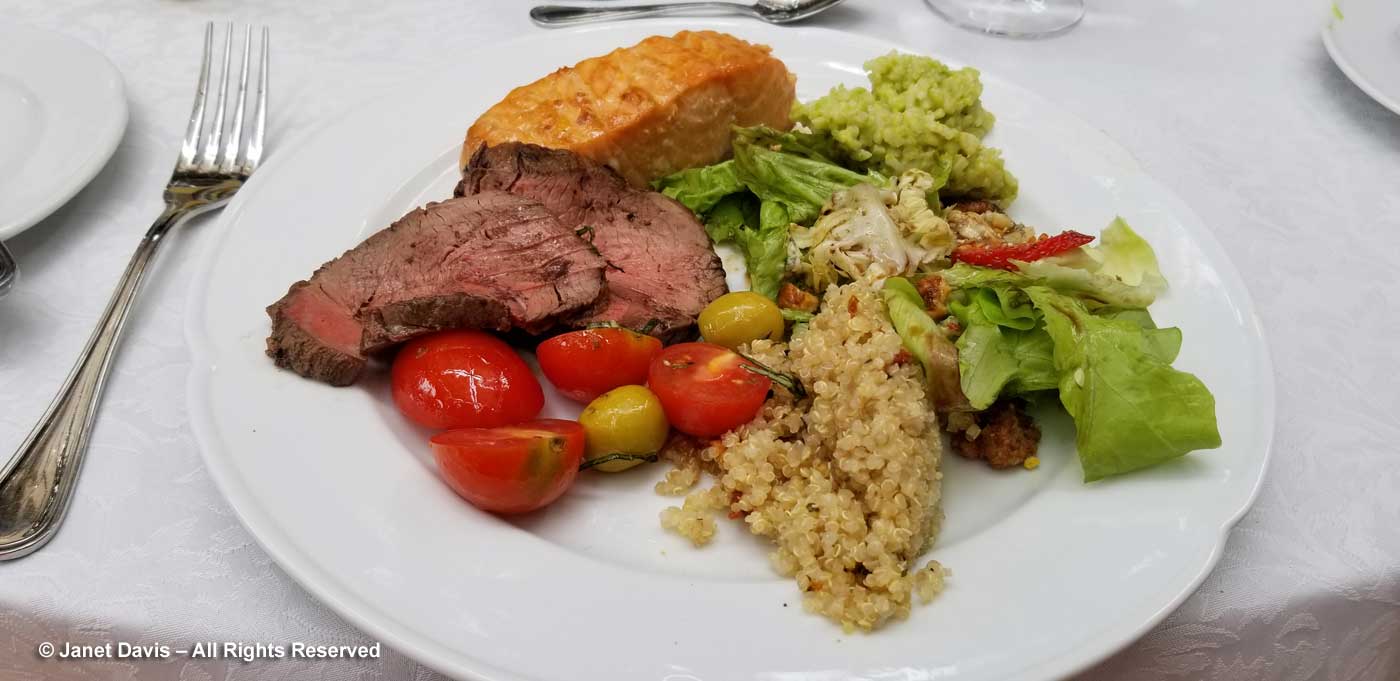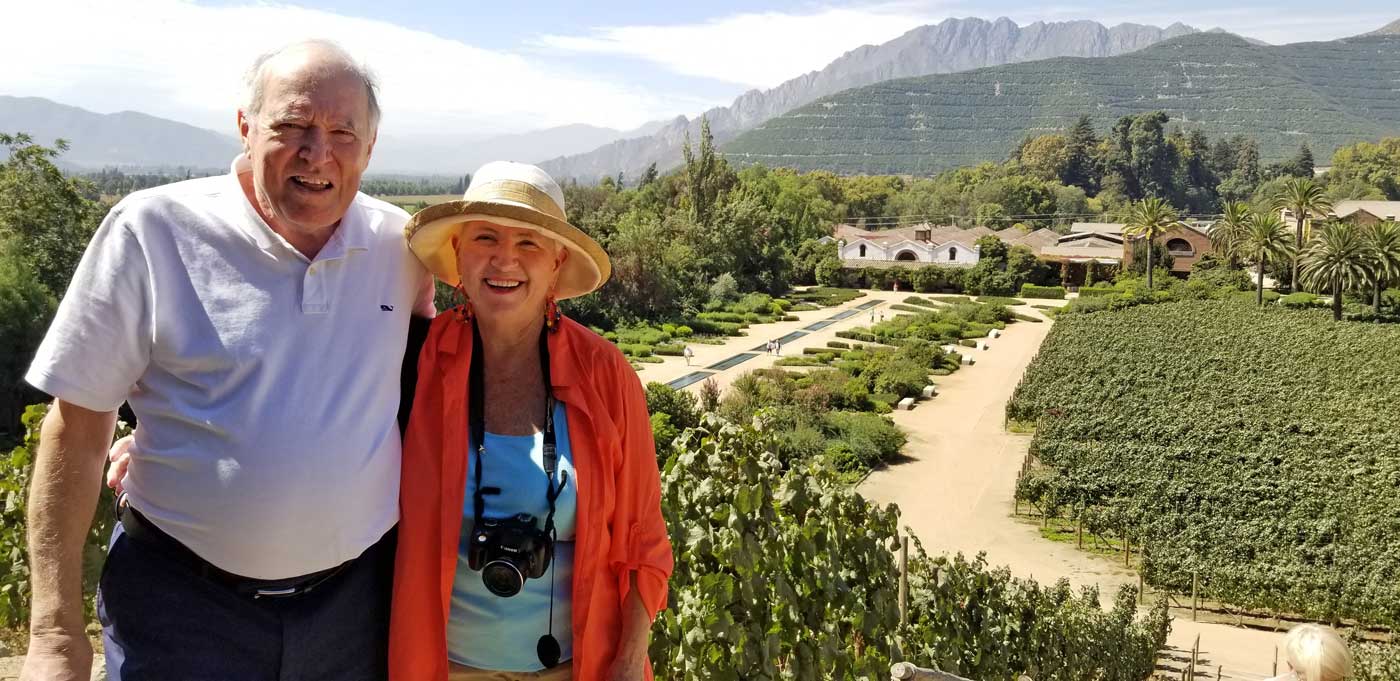Following up on my first blog on our wonderful March 2019 tour of the wineries of Chile, this is the second half covering the Andes and Argentina.
The Andes, Uspallata Pass between Chile and Argentina – My only exposure to the Andes prior to crossing them on our wine tour was reading the book ‘Alive’ by Piers Paul Read, about the 1972 Uruquayan Air Force plane crash on a glacier and amazing survival of sixteen of the passengers, after 72 days (thanks to necessary cannibalism). So the mountain range had always seemed spooky to me. But I needn’t have worried, because our drivers knew the road and we climbed the famous serpentine ascent, stopping near the top to take a shot of where we’d been.
In winter – our summer – when the Portillo ski resort is open, the mountains are covered in deep snow and avalanche danger is real, so vulnerable sections of the highway pass through avalanche tunnels…..
….. like this.
We stopped to photograph the highest peak in Latin America, Aconcagua (6,960 metres – 22,841 ft), which is entirely in Argentina.
The Chile-Argentina customs hall (Complejo Fronterizo los Libertadores) is a little beyond the actual border in a giant hangar at an elevation of about 3800 metres (12,467 feet). Everyone must disembark and have passports stamped while the bus is thoroughly inspected.
While we waited outside for the bus to clear customs, I gazed around at the amazing formations on the mountains.
How I wished I had a geologist at my side on that journey over the Andes. Pretty sure this is sedimentary rock, but there were dark black volcanic rocks in places too. The Andes – or the Cordillera de los Andes – are quite young, geologically speaking, just 45 million years, compared to parts of eastern Argentina where the rocks of the Rio de la Plata Craton exceed 2 billion years. The longest mountain chain in the world, they extend 7,000 kilometres (4,300 miles) from Venezuela to the bottom of Argentina. The Andes sit on the Pacific Ring of Fire, with myriad volcanoes throughout the region. The mountain range was formed tectonically as the Nazca Plate and a portion of the Antarctic Plate are sliding beneath the South American Plate. It is this action that results in earthquakes and volcanoes.
Different colours indicate different mineralization and ages of the rock.
We made a stop not far down the highway at La Puente del Incas, the Bridge of the Incas. The amazing colours here come from the minerals in the hot springs. Set into the rock, you can also see the ruins of a thermal spa that operated here from 1905 to August 1965, when an avalanche and debris destroyed the spa hotel in the distance. According to Wikipedia: “Both glaciers and the hot springs were involved in the formation of the arch. During an ice age, glaciers would have expanded down throughout the entire valley; then, at the end of the ice age when the Earth began to warm up again, the retreating ice would have left behind massive piles of eroded debris. The water that flows from the hot springs is extremely rich in mineral content, to the point that it has been known to petrify small objects in a layer of minerals. Similarly, the piles of debris left by the glaciers were encrusted over time into a single solid mass. Finally, during a period where the climate was extremely wet, a powerful river formed in the valley. It cut a channel through the lower, least encrusted layers of debris, which gradually eroded into the large opening of the arch.”
Just beyond, you can see the little chapel, La Capilla de las Nieves, built in 1929. It survived the avalanche. Beyond that are the ruins of the spa hotel.
I’ll let a young Charles Darwin have the last word on the Bridge of the Incas, from his journal entries in ‘Voyage of the Beagle’. The Beagle was a British ship mapping the coast of South America and Darwin was a young naturalist on board. When the ship was at port, he travelled into the countryside, often on horseback. This was his pithy assessment of the bridge, which was accompanied by a sketch complete with vaqueros on horseback.
April 4th 1835 – “From the Rio de las Vacas to the Puente del Incas, half a day’s journey. As there was pasture for the mules, and geology for me, we bivouacked here for the night. When one hears of a natural Bridge, one pictures to oneself some deep and narrow ravine, across which a bold mass of rock has fallen; or a great arch hollowed out like the vault of a cavern. Instead of this, the Incas Bridge consists of a crust of stratified shingle cemented together by the deposits of the neighbouring hot springs. It appears as if the stream had scooped out a channel on one side, leaving an overhanging ledge, which was met by earth and stones falling down from the opposite cliff. Certainly an oblique junction, as would happen in such a case, was very distinct on one side. The Bridge of the Incas is by no means worthy of the great monarchs whose name it bears.”
We continued down the Argentine side past craggy peaks with talus slopes from erosion….
…. and others showing limestone strata in sandstone……
…. before arriving in a lovely valley where the Rio Mendoza flowed by in a summer trickle.
Looking up, I could see black lava outcrops in places.
From the rolling hills of the valley, the view of the cordillera was spectacular.
Soon we were near the little town of Uspallata with obvious signs of civilization.
After lunch in Uspallata, we continued on in a verdant valley along the Rio Mendoza. I believe they call these smaller mountains the pre-Cordillera.
I was sorry to leave the Andes foothills behind, but they would be in our view for the next week.
As we drove into Mendoza, we passed the turquoise-blue waters of the Potrerillos Dam.
Bodega Salentein, Uco Valley, Mendoza, Argentina – After arriving at our hotel in the Uco Valley for the next two nights, Posada Salentein, we headed out on the Salentein family’s large estate to visit their winery. Salentein is a castle in the Netherlands owned by the Pon family who made their wealth in the automobile business. In 1992 when newly-retired Mijndert Pon arrived in Argentina on a whim following a boating accident in the Panama canal (you must read this story on how this event triggered development of the wine industry in Mendoza’s Uco Valley) he purchased a farm followed eventually by other farms to create a tract of land roughly 30 kilometres long and 4 kilometres wide. Today, Salentein features 850 hectares of grapes and 1100 hectares of almonds and walnuts..
We toured the winery and looked down on the cellar, which doubles as an amphitheatre for concerts. They keep the concert length and audience to a minimum, so as not to raise the humidity and temperature levels in the cellar too much.
There is a complex mix of art and science to winemaking. It begins in the field with the choice of specific varietals for the climate and the terroir. How the grapes are then grown and harvested varies each year according to the vagaries of weather. In the winery, the grapes are fermented and aged according to the winemaker’s instructions – and this also varies year to year, according to each season’s expression. But behind each winemaker (or team of winemakers in the bigger wineries), there are numerous technicians who regularly analyze the wine at every stage, carefully noting the readings so each year’s harvest has its own paper trail from vineyard to bottle.
As always, we had a very good tasting.
Leaving Salentein’s reception centre, I was sorry I didn’t have more time to photograph the stunning landscape in front.
Early the next morning on the way to breakfast, I heard voices in the nearby vineyard and watched pickers harvesting the grapes. Since grapes must be picked cool, this takes place from first light and lasts only hours, just until the sun begins to warm the air.
After breakfast as we drove out to our first winery of the day, we saw the big mechanical harvester dumping Salentein grapes into waiting bins.
Zuccardi Piedra Infinita, Altamira, Uco Valley, Mendoza, Argentina – We drove south to La Consulta in the Altamira region to visit Zuccardi’s beautiful, award-winning winery. From the road, we knew we were in for an architectural treat.
Conceived of by third-generation winemaker/owner Sebastián Zuccardi and designed by Tom Hughes, Fernando Raganato and Eugenia Mora and opened in 2016, it features an entrance landscape of silver-leaved native plants that perfectly compliment the stone walls and silvery, egg-shaped dome of the building.
Here we look back along the stone entrance walkway that doubles as a bridge over water.
Before touring the winery, we were taken out to the vineyard since more than any other winery on our two-week tour, Zuccardi Piedra Infinita and Sebastián Zuccardi have zeroed in exhaustively on terroir. Not only were we shown the extensive topographic polygonal mapping that has occurred at this place where an ancient river once flowed, leaving behind a variety of soils: some alluvial (river rock), some colluvial (rock eroded from nearby hills and mountains), some silty, some calcareous, etc…….
……. we were encouraged to visit excavations between adjacent rows that illustrate the mixed terroir. The photo below shows typical alluvial soil; just ten feet away the soil was rock-free.
We also saw how Zuccardi and other Mendoza vineyards use netting at harvest time to prevent damage from hailstones.
Then we were taken indoors…….
…… to look at the cellar, where workers were busy ‘punching down’ the grapes in the egg-shaped cement fermentation tanks.
Back outside, we settled on the patio for our wine tasting. Note that many of the labels celebrate the terroir-mapping theme (Poligonos, Aluvionale) and the traditional use of cement for the fermentation tanks (Concreto).
And I admit I came home with a bottle of Zuccardi’s delicious olive oil. Now all I need to remind me of Argentina are the mountains… and the grapevines…. and the warm sunshine.
Rutini Wines, Uco Valley, Mendoza, Argentina – From the outside, Rutini’s winery looked deceptively small. But that berm, below, ….
….. hides the multiple floors of this operation, which was in the middle of harvest. We were so lucky to see traditional destemming and sorting…..
…. but we also saw the use of a computerized optical sorter. Here’s a little video I made that shows the grape must being pumped to the fermentation tanks, and then the marc or pomace being removed by a very small woman with a big smile!
I watched renowned winemaker Mariano di Paola tasting the juice, just one of a thousand steps in winemaking. A proficient winemaker can tell whether the juice has the correct balance of sugars, acids and flavours; that determines how he or she will proceed with the harvest.
In Rutini’s barrel room….
….. we saw a very special cask made by Sylvain of France from a 360-year old oak tree.
After the winery tour, we visited the tasting room….
….. with its beautiful view of the vineyard and the Andes.
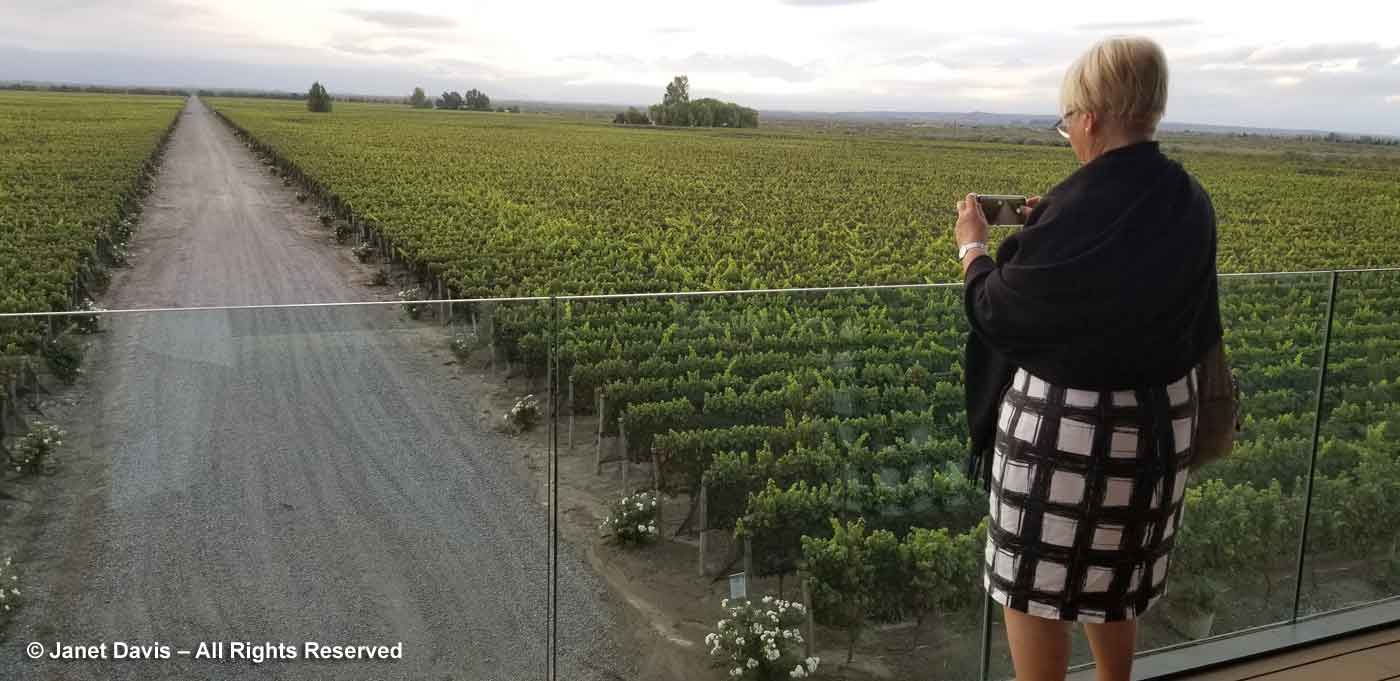
When I was researching our trip to Chile and Argentina, our friends’ son David German, owner of Fathom Expeditions (he sails to the Antarctic and Arctic, among other destinations and sailed the Shackleton IMAX documentary team to the Antarctic) gave us a few Argentina recommendations. On wine, he had just three words: “Rutini, Rutini, Rutini.” After our tasting at Rutini (and later many meals in Buenos Aires), I would heartily agree.
Finca Decero, Agrelo, Mendoza, Argentina – Decero means “from scratch” in Spanish and that’s the motif of this lovely Remolinos winery, which was created from scratch by Swiss cement billionaire Thomas Schmidheiny.
I spotted this raptor, a chimango caracara (Milvago chimango) on the roof.
We passed a gardener on the way into the winery…..
….. on our tour with winemaker Tomás Hughes, (middle below) who let us taste the 2018 Malbec and Cabernet Sauvignon straight from the barrel.
The tasting here was really quite wonderful. Decero’s mission is to make high quality red wines that are “not overstructured”.
Especially fun was was the 2015 The Owl & The Dust Devil, a blend that has won all kinds of awards (including a Jancis Robinson Wine of the Week and 90+ points from a number of top sommeliers.) Remolinos, as it happens, means a little swirling wind, i.e. a “dust devil”.
It was also my first experience with an “augmented reality” label which, when scanned via the correct app, tells a little story about the wine.
After the tasting, we went outside to stretch our legs. I wandered through the garden with low rock walls arranged sculpturally as the fingers of a hand, symbolizing Decero’s “amano” hand-made philosophy of wine-making. And that isn’t a bad view of the Andes, either.
The lunch we were served at Finca Decero was one of the best meals of our entire trip. It started with a fried empanada of beef flank, pine mushrooms and lemon peel with tomato and plum relish.
Our starter was mouth-watering pork flank with peach emulsion, avocado ice cream and smoked peanuts.
Then came the delicious main course: beef filet with puree of sweet potato and dates, Japanese eggplant, green beans, cherry tomatoes, cream of peas and chorizo.
Next up was a little melon sorbet and “beebrushes”.
For dessert we had white chocolate cake with plum ice cream and a zingy Sriracha and red pepper coulis with raspberries. Outstanding!
After lunch, a few of us walked down the long driveway to wait for our bus to take us to our next hotel in Mendoza City. As I listened to the birds singing, I gazed down at the beautiful rocks arranged along the edge of the gardens flanking the vineyard. These were the Andes, literally parts of the mountains rolled down the slopes to become part of the ancient rivers, landscape and terroir of the vines of the Uco Valley.
Trapiche, Maipú, Mendoza, Argentina – When you’ve been around since 1883, you’re more than a winery, you’re also a museum. That is Trapiche, in the Maipú Valley. Founded by Argentine politician, banker and wine promoter Tiburcio Benegas, El Trapiche was the first winery to bring French vines to Argentina. In fact, Tiburcio Benegas, Silvestre Ochagavia in Chile and Agoston Haraszthy in California are considered to be the fathers of the wine industry in the Americas. Trapiche remained in the Benegas family until the 1970s, when it was sold and later re-sold. Today, it’s owned by a private equity firm and sells its wines into 40 countries.
Some of the winemaking equipment used in the 19th century is on display…..
…. and the original cement tanks are still in use, but with modern fittings and epoxy seals added when the building was renovated in 2006-08.
Train tracks still run up to the winery, from the era when the grapes arrived by rail cars.
There is an old-fashioned feel to the olive grove at Trapiche. Indeed many of the trees are more than a century old.
Close to the winery was the Biodynamic Malbec vineyard.
I seem to have a lot of enthusiastic stars next to my tasting list of Trapiche wines. I loved the 2015 Grand Medalla Cabernet Franc; the 2014 Single Vineyard Malbec; and the 2014 Altimus Merlot.
One favourite was the 2014 Unánime Blend, which represents the unanimous tasting vote of Trapiche’s winemakers. It is 60% Cabernet Sauvignon 25% Malbec and 15% Cabernet Franc, sourced from different valleys in Mendoza.
Trapiche gave us a lovely lunch. After the obligatory empanada appetizer, there was pork shoulder with gremolata….
…… and a delightful dessert of Malbec-poached pears with spun sugar. Then it was back to the hotel until our dinner tasting.
Bodega Lagarde, Luján de Cuyo, Mendoza – We arrived at Lagarde in early evening, and I was impressed with the welcoming garden of agaves and grasses, with vintage farm equipment.
Lagarde was established in 1897, but has been in the Pescarmona family for 50 years. The colonial house is from the 19th century. Irrigation comes straight from the Andes, in the form of canals. This use of Andean meltwaters, i.e. controlled flood irrigation, was pioneered by Tiburcio Benegas of El Trapiche, above.
Winemaker Juan Roby led the tasting – I especially loved the 2017 Guarda Chardonnay.
As our tasting finished, Juan encouraged us to hurry outdoors to capture the sunset over the vineyard. It was spectacular.
Then we sat down to a wonderful formal dinner catered by the winery’s restaurant Fogón. The appetizer course was sweetbreads.
And of course there was beef from the Argentine pampas……
….. followed by an exquisite dessert: grilled and fresh figs with marmalade, fig ice cream, sweet peach mousse, a grilled peach and almond praline.
As we lingered over dessert, Marcos Ortíz, one of the Fogón waiters came out of the kitchen to serenade us.
Then it was time to head back to our hotel in Mendoza City. And what a treat it was to walk out under a full moon, framed by the vineyard’s trees.
Pascual Toso – Barrancas, Mendoza – En route to the last winery visit of our trip, we stopped to walk out onto a bridge to look down on the mighty Rio Mendoza. Except…. the river bed here was dry at the end of summer. (As we drove across the bridge, we did see a narrow channel of water at the far side.)
Minutes later, we arrived at one of Mendoza’s first vineyards, Pascual Toso, named for the man who came from Piemonte, Italy in the 1880s and decided to make wine, as his family had done in the old world. In the early 1900s, he expanded into the Mendoza River highland of the Maipú region, at Las Barrancas, meaning small canyon. (Fun fact: Pascual was a friend of Alfredo Di Lelio of “Fettucine Alfredo” fame.) Today, Pascual Toso has 400 hectares (988 acres) of vineyards here.
We met winemaker Felipe Stahlschmidt in the winery (he worked at renowned Catena before coming here), and after greeting everyone with a glass of Toso Brut – the celebratory sparkling wine that remains their best-seller, along with a deep line of excellent reds – he told us a little about the winery. Tour leader Steve Thurlow is in the background; he put together such a wonderful trip through Chile and Argentina, and knows all these wineries and the personalities behind them very well.
On our tour, we saw the original concrete fermentation tanks, still in use.
For our tasting, we went outside to a shelter overlooking….
…… “las barrancas”… the canyon.
As a plant photographer, I was excited to be close to a unique parasitic plant from the family Loranthaceae. It doesn’t bother making roots in the ground, but takes its nourishment from plants to which it attaches.
But we were there to taste wines, and that we did. Pascual Toso (like many other Argentine winemakers) is working hard to chip away at Argentinians’ reverence for Malbec (which is the foundation of Argentina’s wine industry) by making truly excellent Cabernet Sauvignons and Syrahs. For one thing, Malbec bottles are much heavier in glass than other reds, because traditionally that’s how the wine was bottled; thus shipping costs are more. But winemakers like Felipe Stahlschmidt are anxious to see an acceptance of more sophisticated wines as Argentina comes of age in a global market. To that end, California vintner Paul Hobbs has worked as a consultant to Pascual Toso in managing the harvesting and oak aging of the high end red wines.
As we finished the tasting, we were treated to an asado, a traditional barbecue of goat, beef and chicken.
It came with a mouth-watering provolone fritter. At least, that’s what I think we were eating, because Argentines have many ways of eating melted cheese!
After the main course, we had dessert, accompanied by sparkling Toso rosé wine. Salut!
And that marked the end of our last official tasting, though we convened at a lovely restaurant in Mendoza City that evening for a farewell dinner, before flying off on our own to Buenos Aires for a final four days. I’ll leave that city and its botanical garden to another blog some day. In the meantime, muchas gracias if you managed to get this far with me on our delightful Chile/Argentina wine tour!

